First introduced in 2011 at the Detroit Auto Show, the Hyundai Veloster initially hit the scene as a replacement for the Hyundai Tiburon, the FWD 2+2 coupe built between 1996 and 2008. By contrast, the Veloster changed it up with a funky hatchback profile and 2+1 door layout (one on the driver's side, two on the passenger's side). In a segment filled to the brim with hard-hitting, well-established competition, the Veloster is a bit of an upstart, shaking things up with a unique attitude that still manages to make fun-behind-the-wheel a top priority. Throughout its life cycle, we've seen a wide variety of custom takes on the Veloster, but now, Hyundai is offering up a whole new second generation. Once again making its debuts at the Detroit Auto Show, the latest 2019 model year brings with it a variety of models and trim levels, including the base model, and the mid-grade Turbo and R-Spec models. There's even a go-faster N version if that happens to be more your speed (check out our full review on the 2019 Hyundai Veloster N). Just as it was before, the new Veloster once again aims at catching the eye of enthusiasts, with a focus on making the whole package more engaging, both in terms of aesthetics and in terms of the driving experience. The latest model year also comes with a good bit upgraded infotainment stuff as well.
But will the Veloster's sophomore effort be enough to topple equally enticing offerings from the likes of Mazda, Honda, or Ford? Read on for the details.
Update 5-15-2018: Hyundai has announced pricing for the 2019 Veloster. Check out the “Prices” section below to learn more about it. }}
2019 Hyundai Veloster
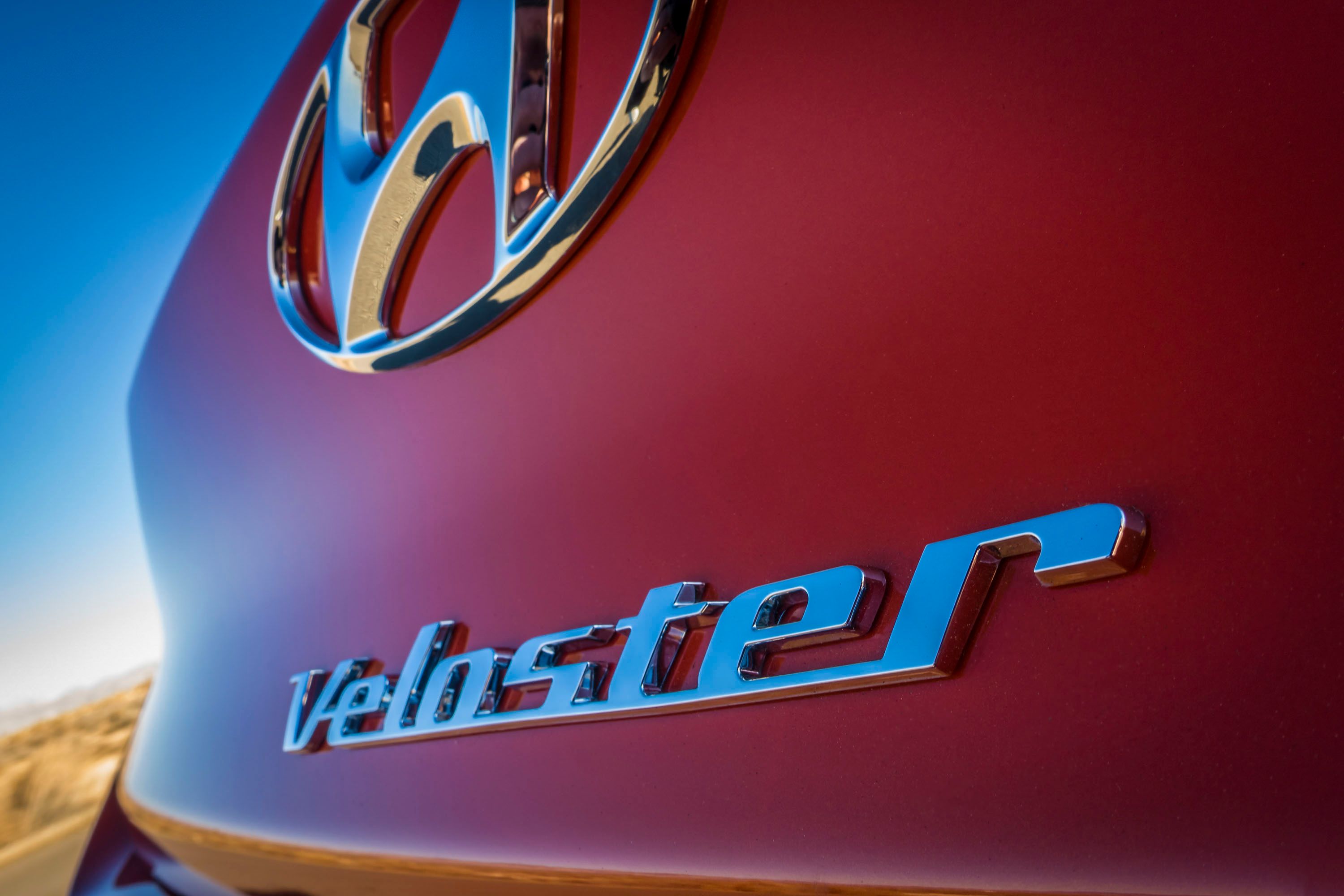

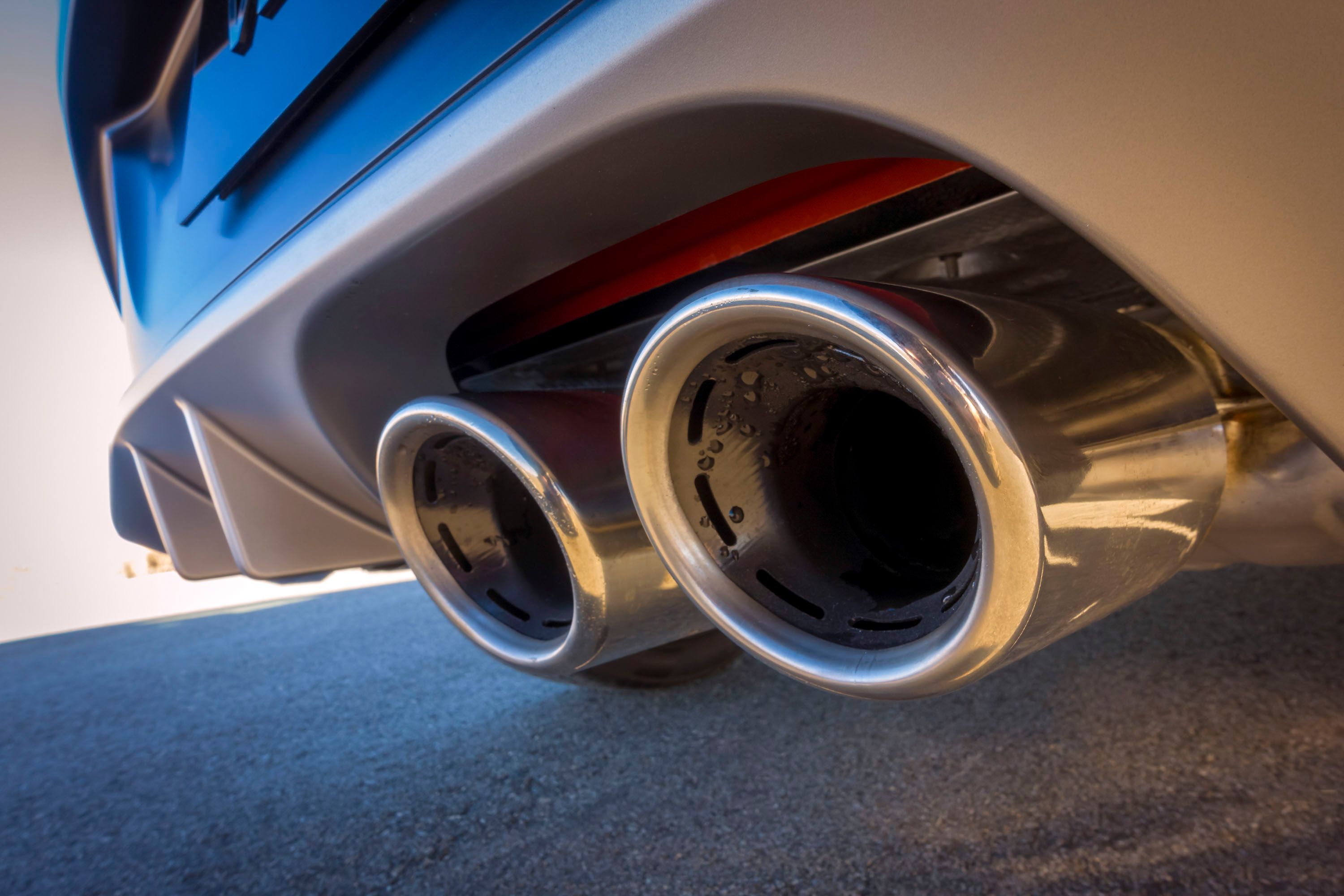
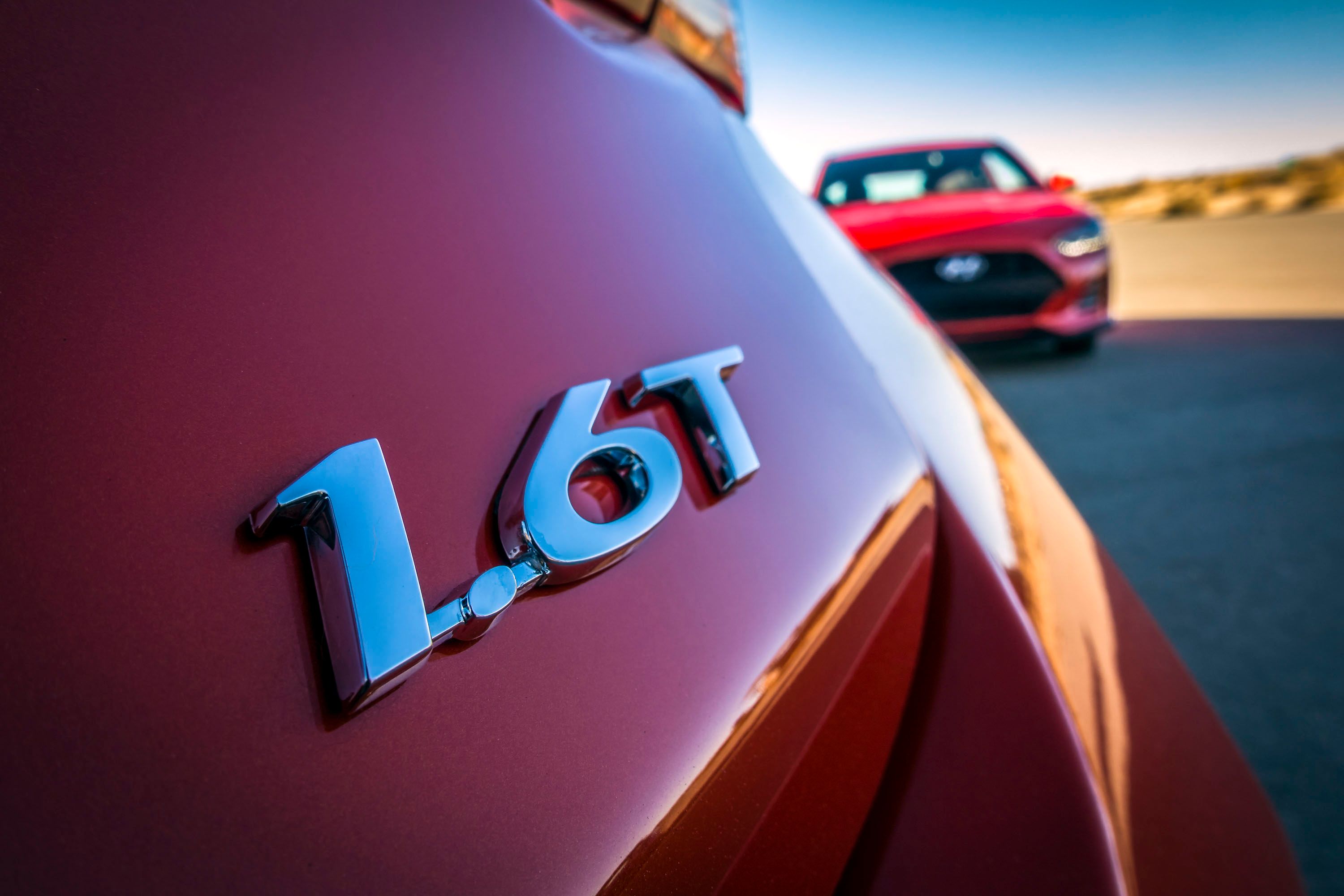
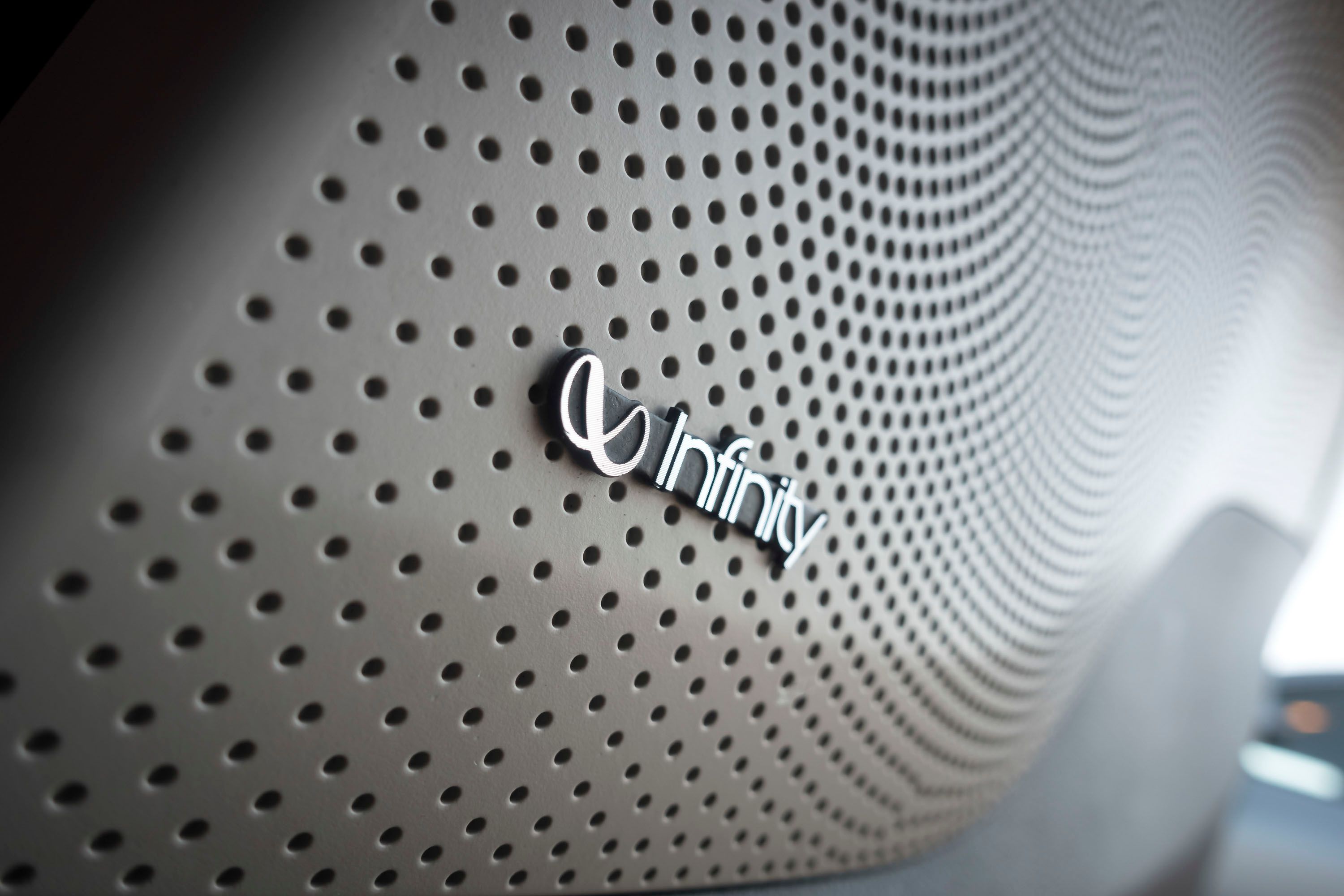
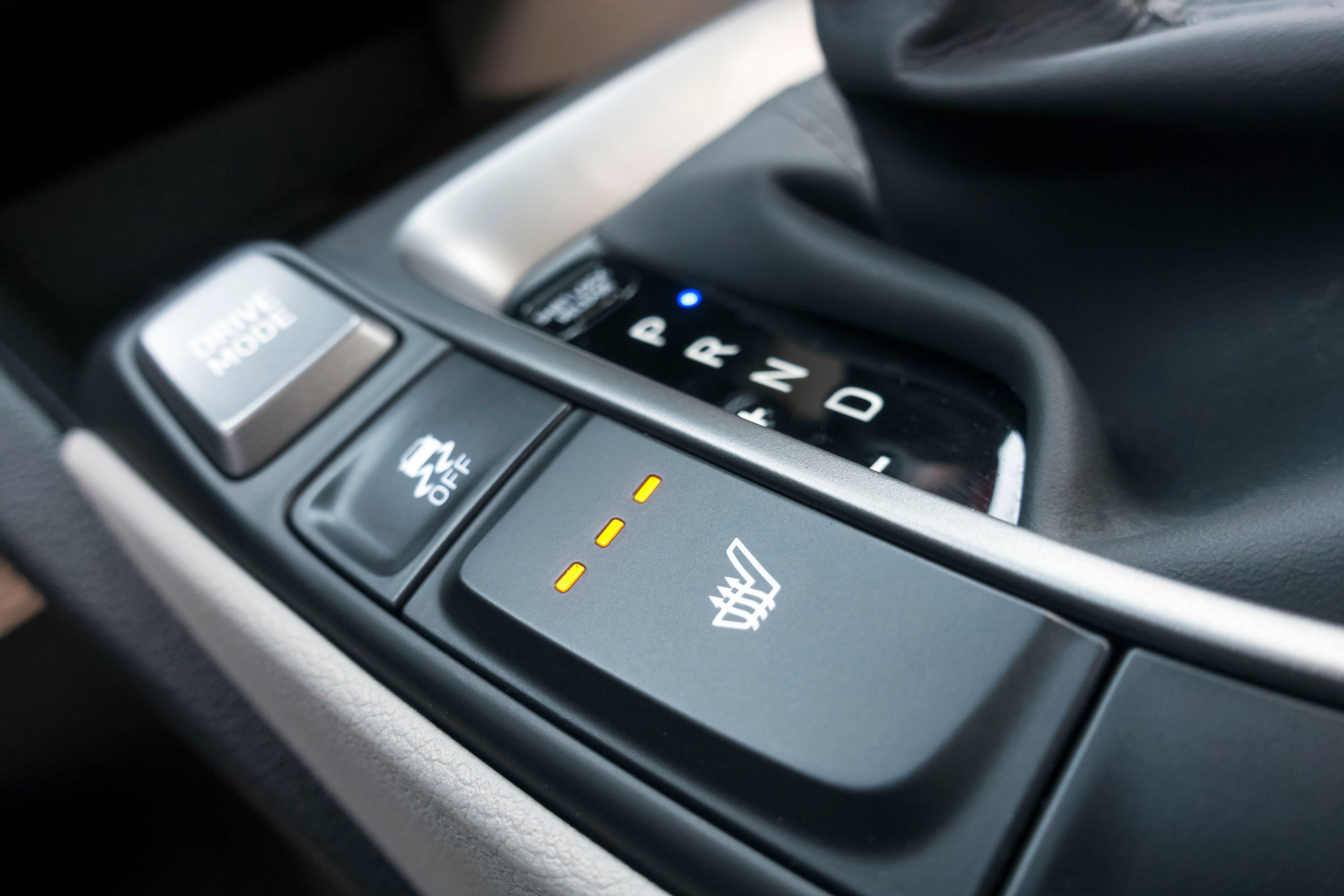
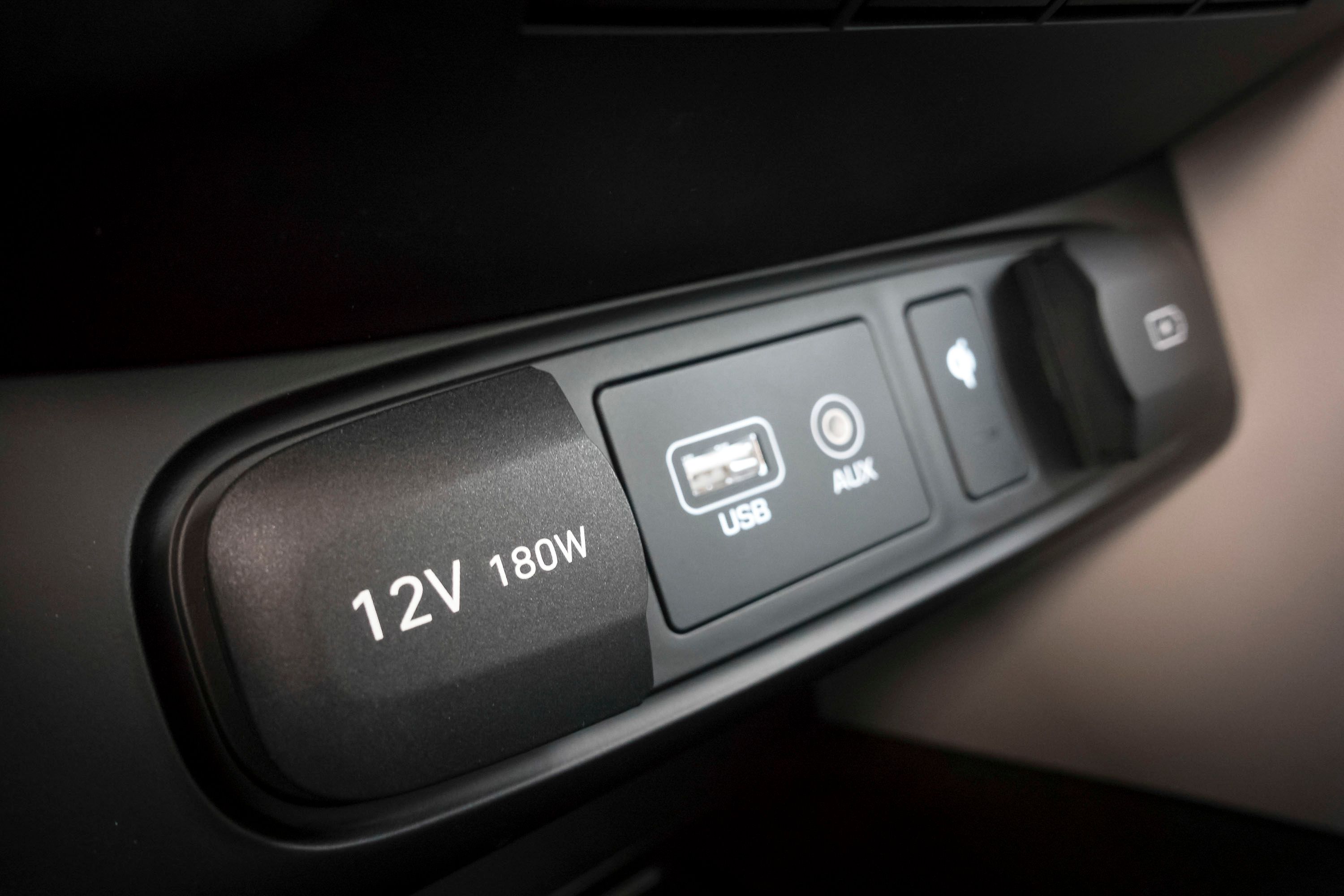
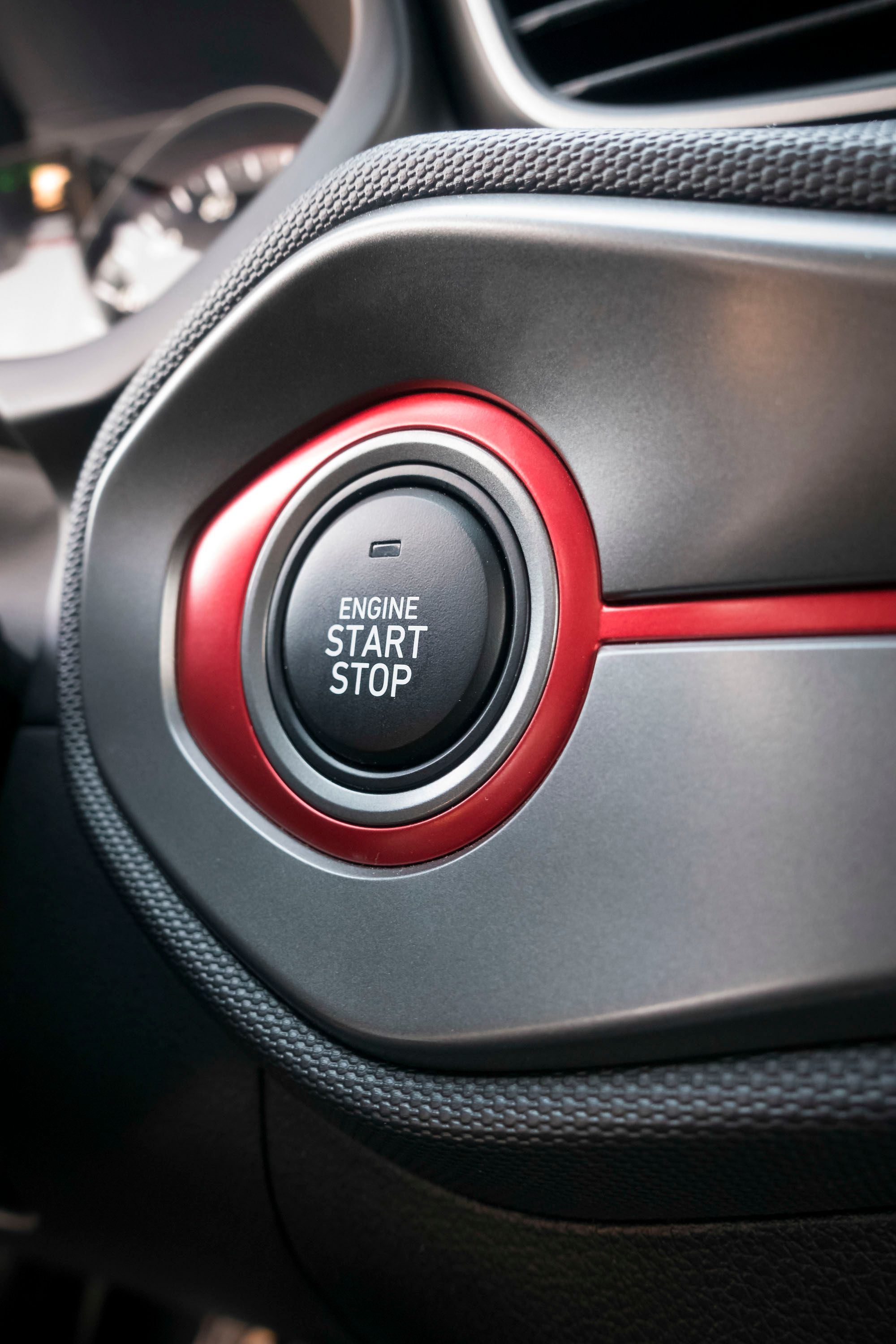
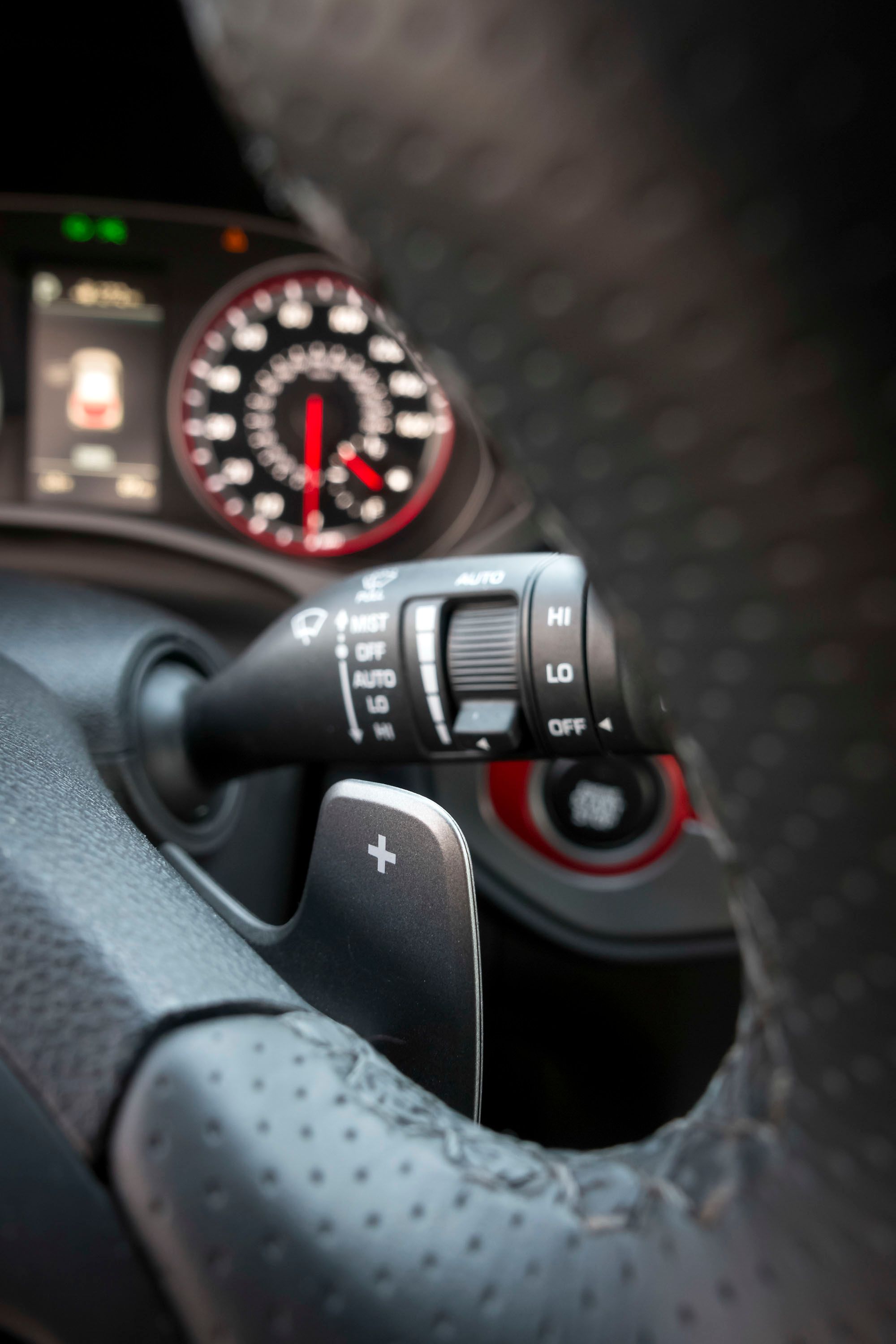
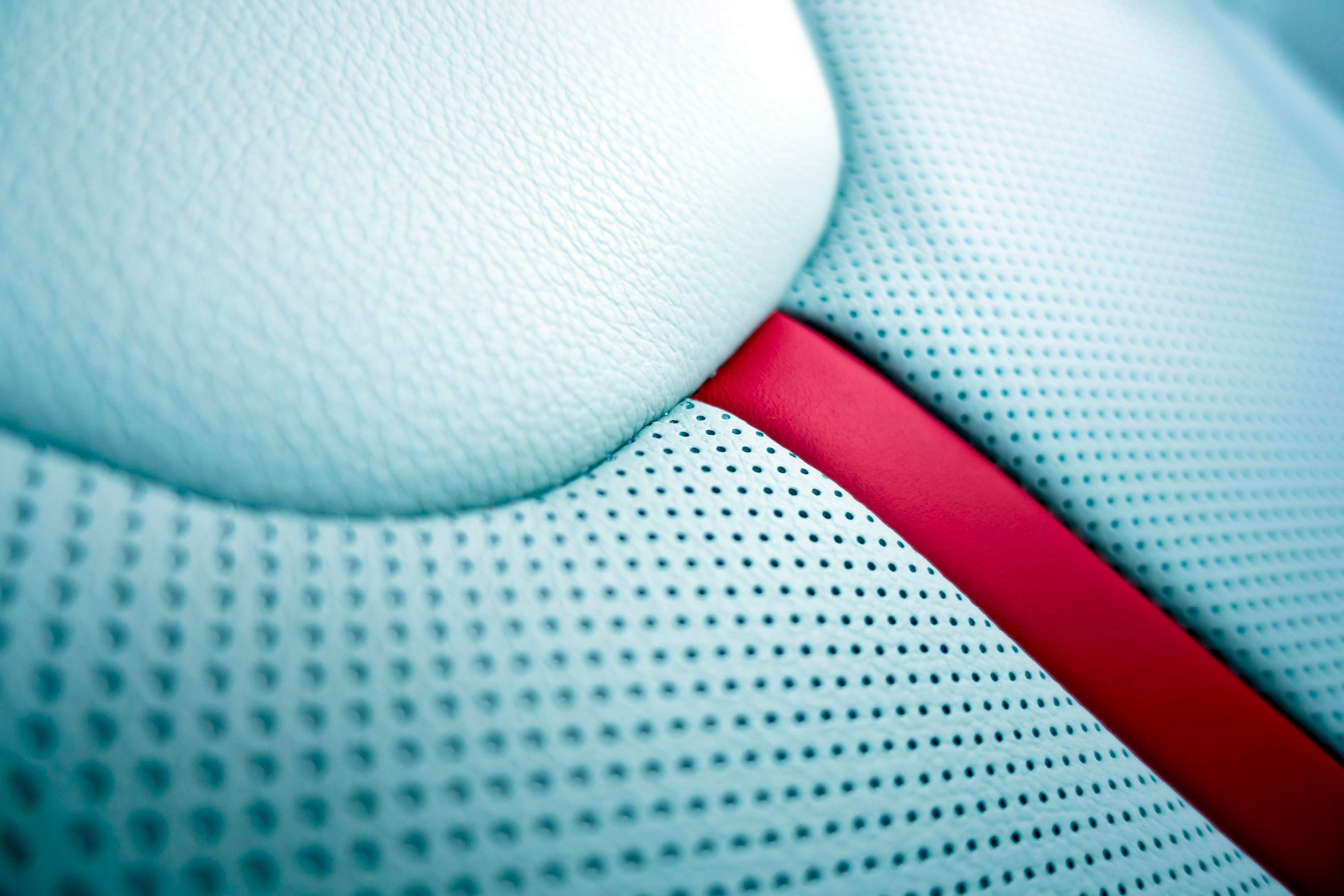
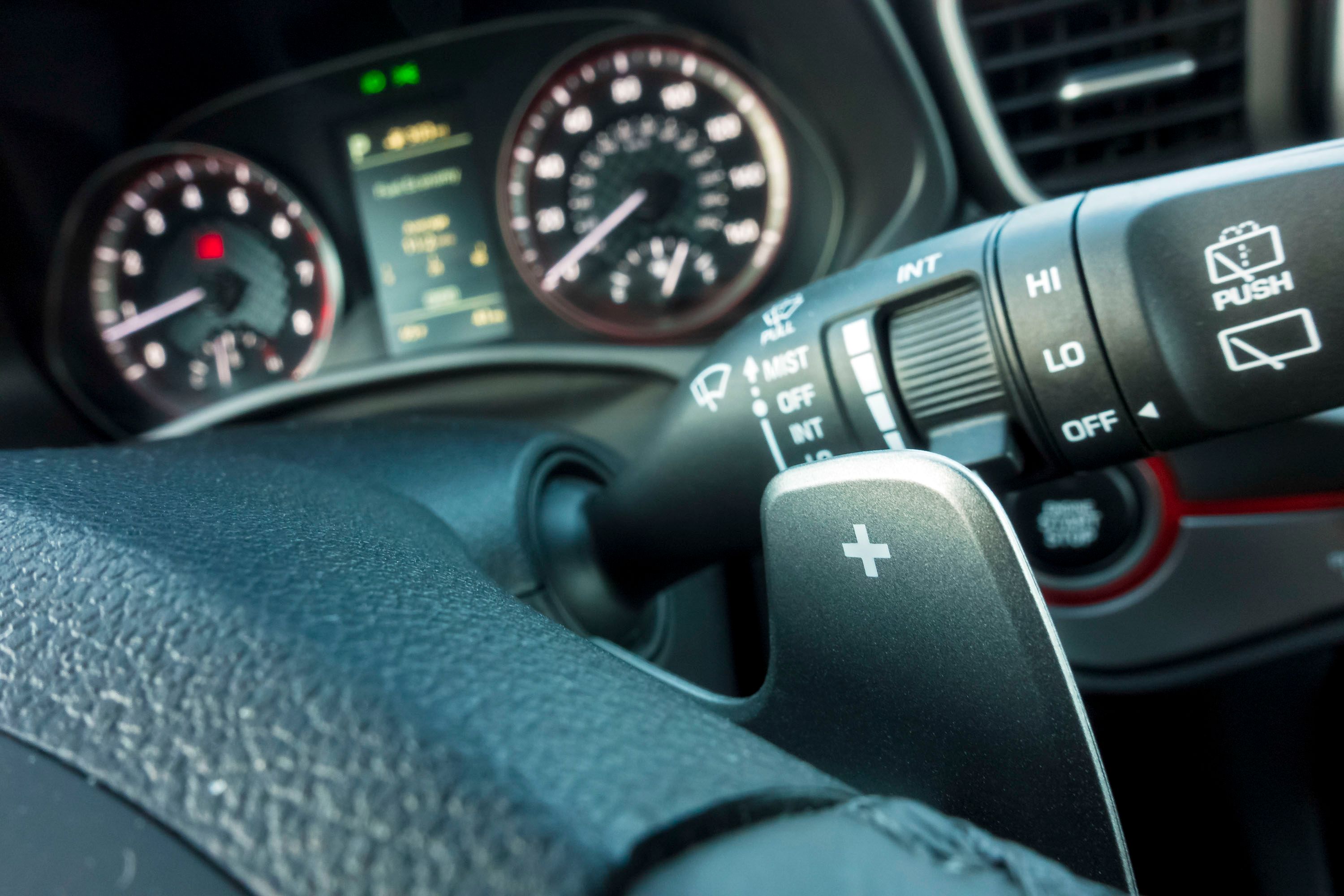
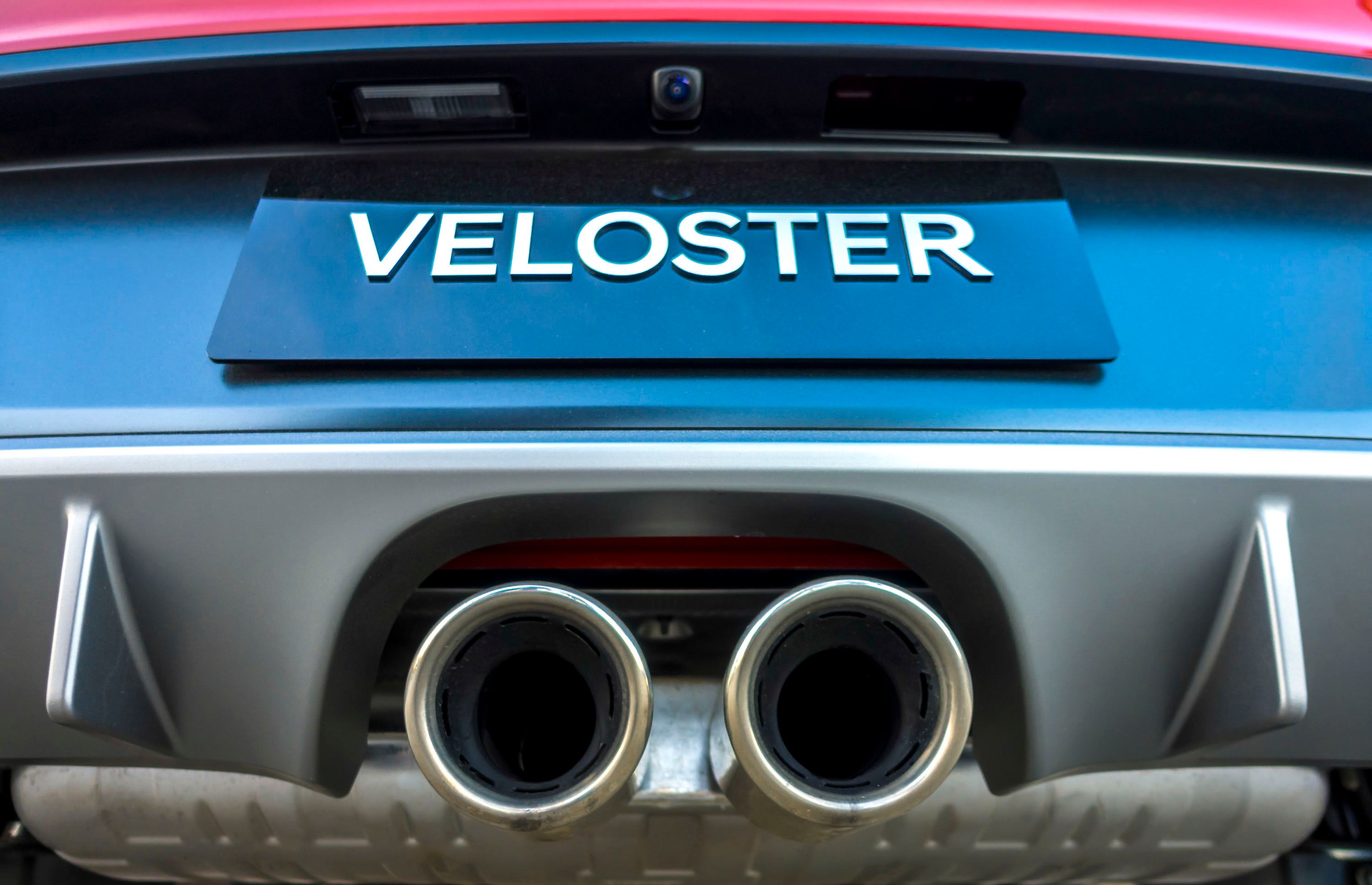
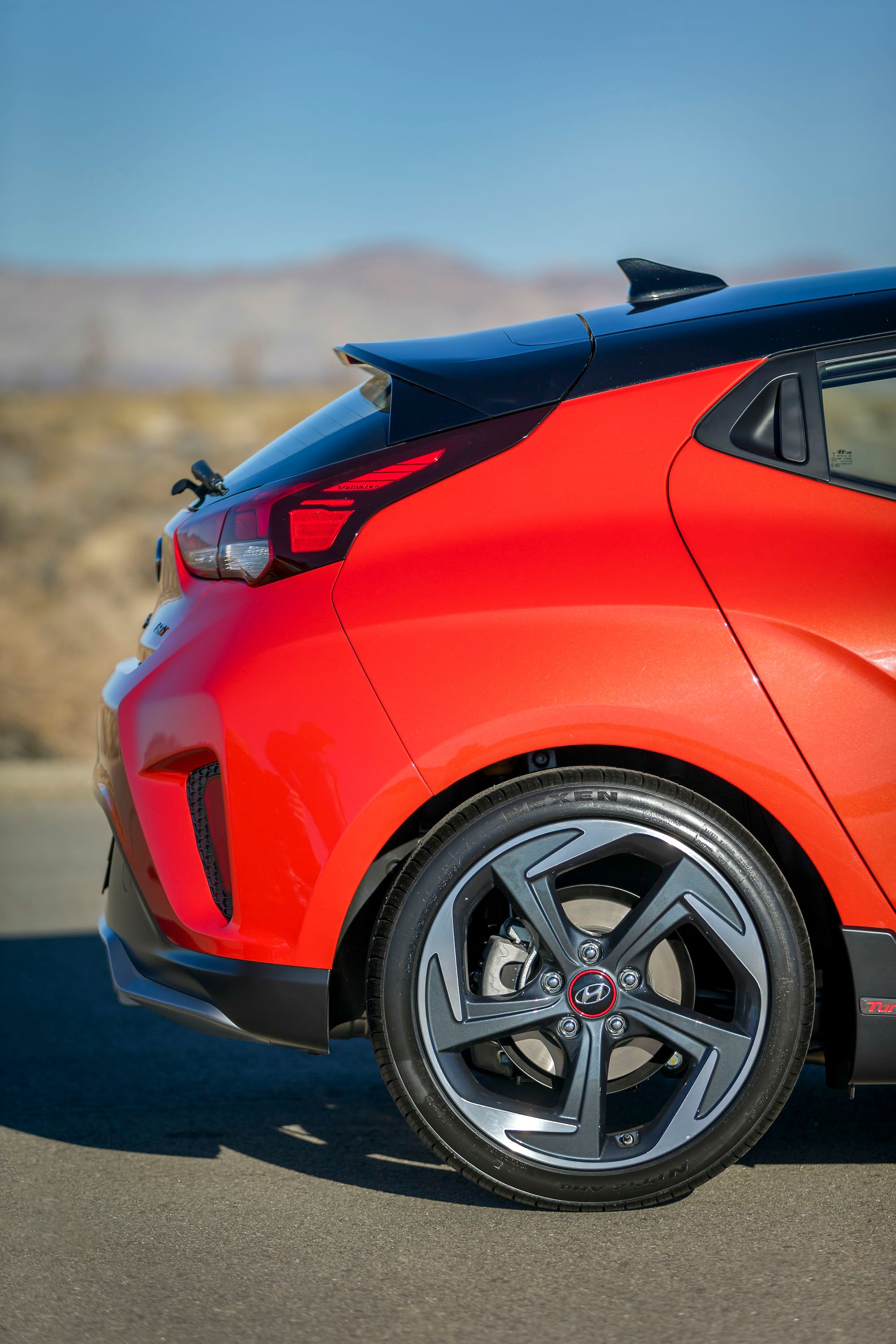
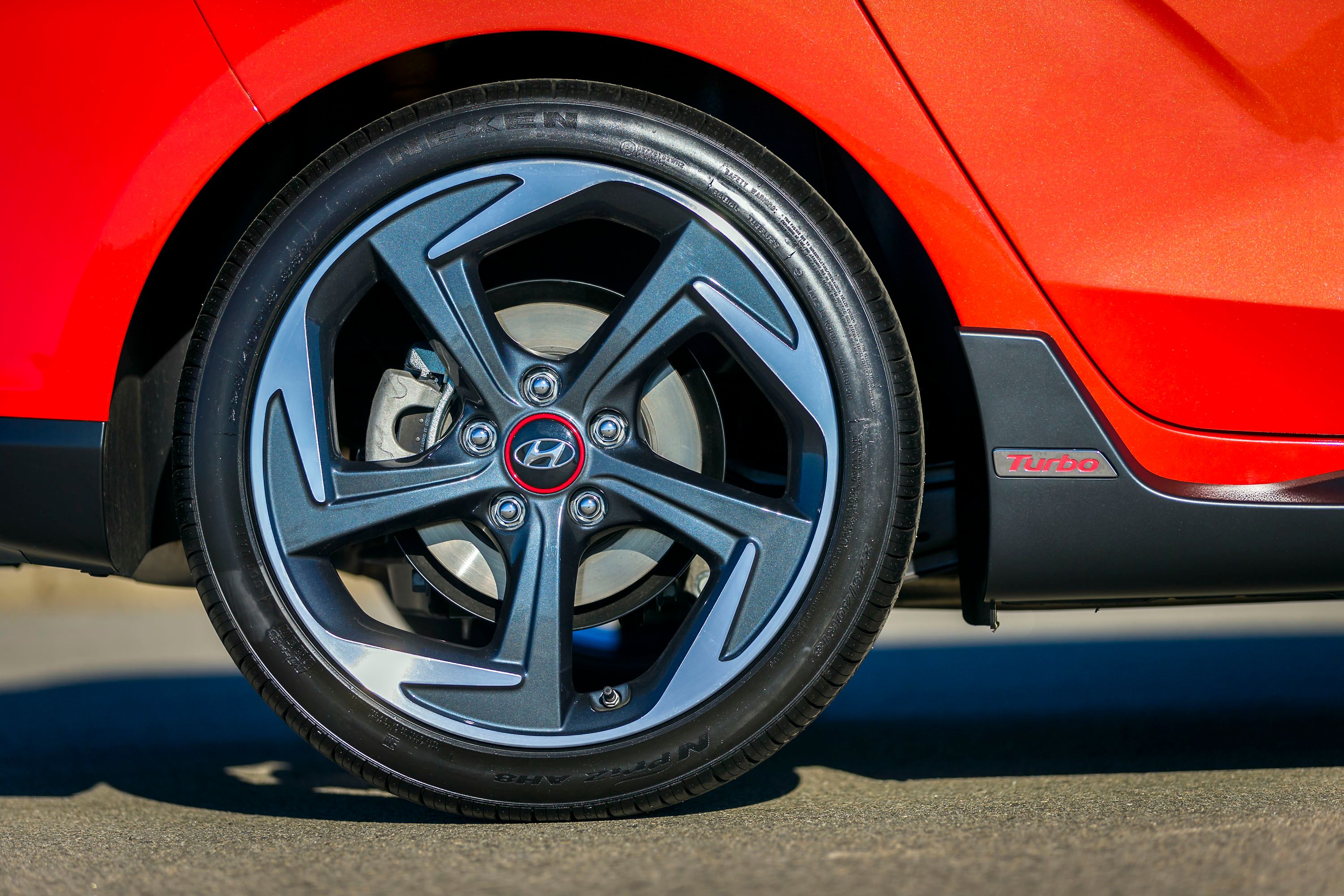
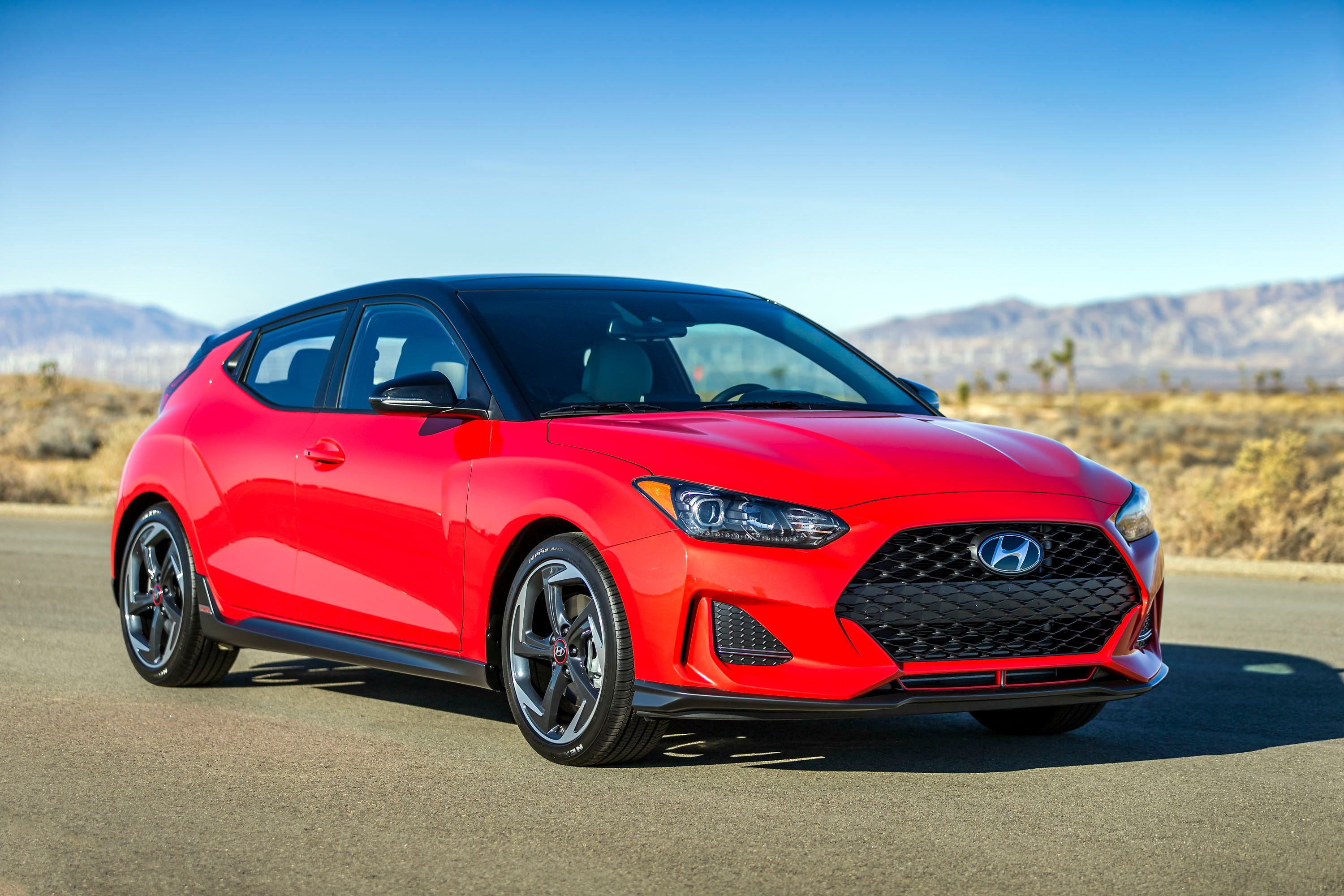
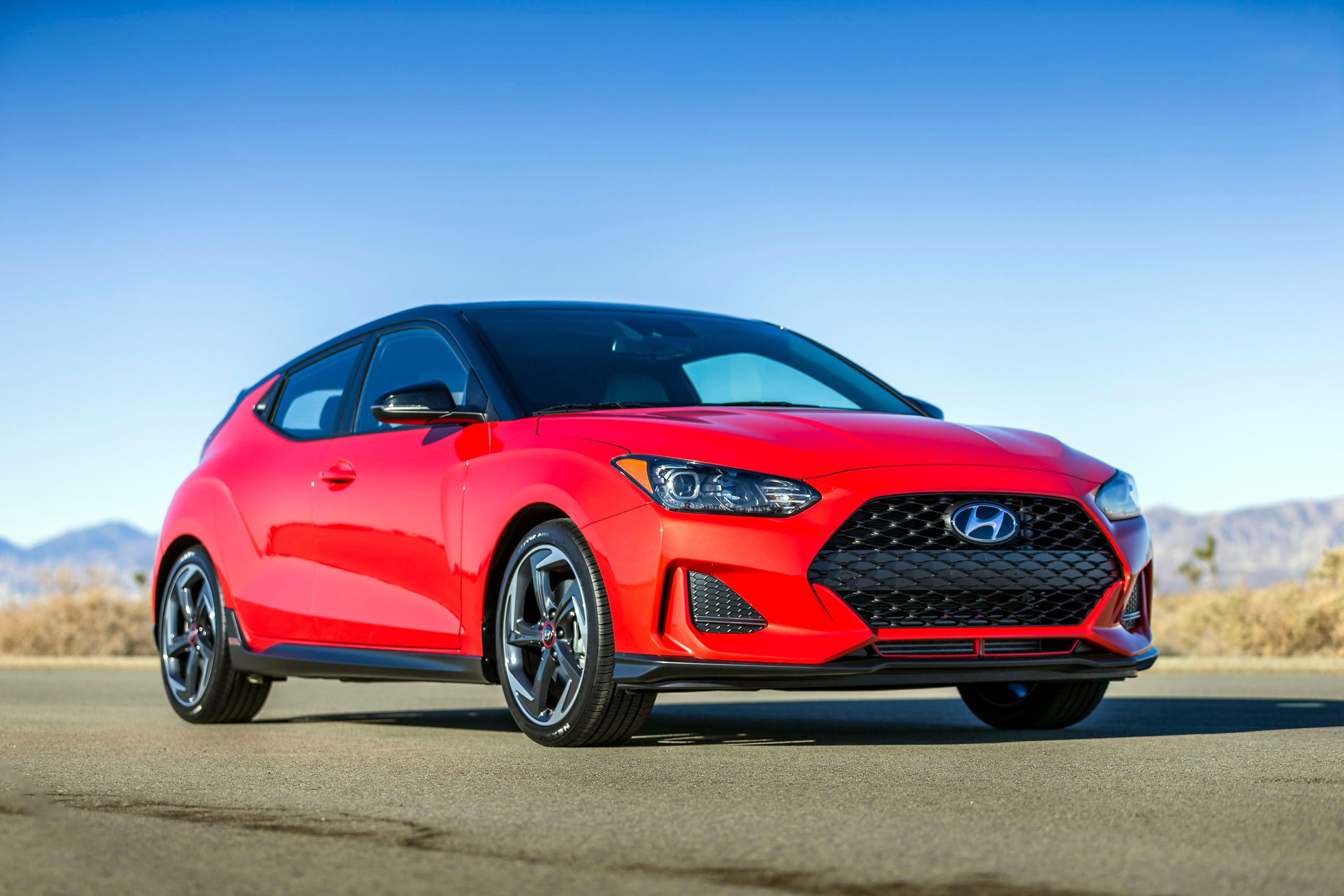
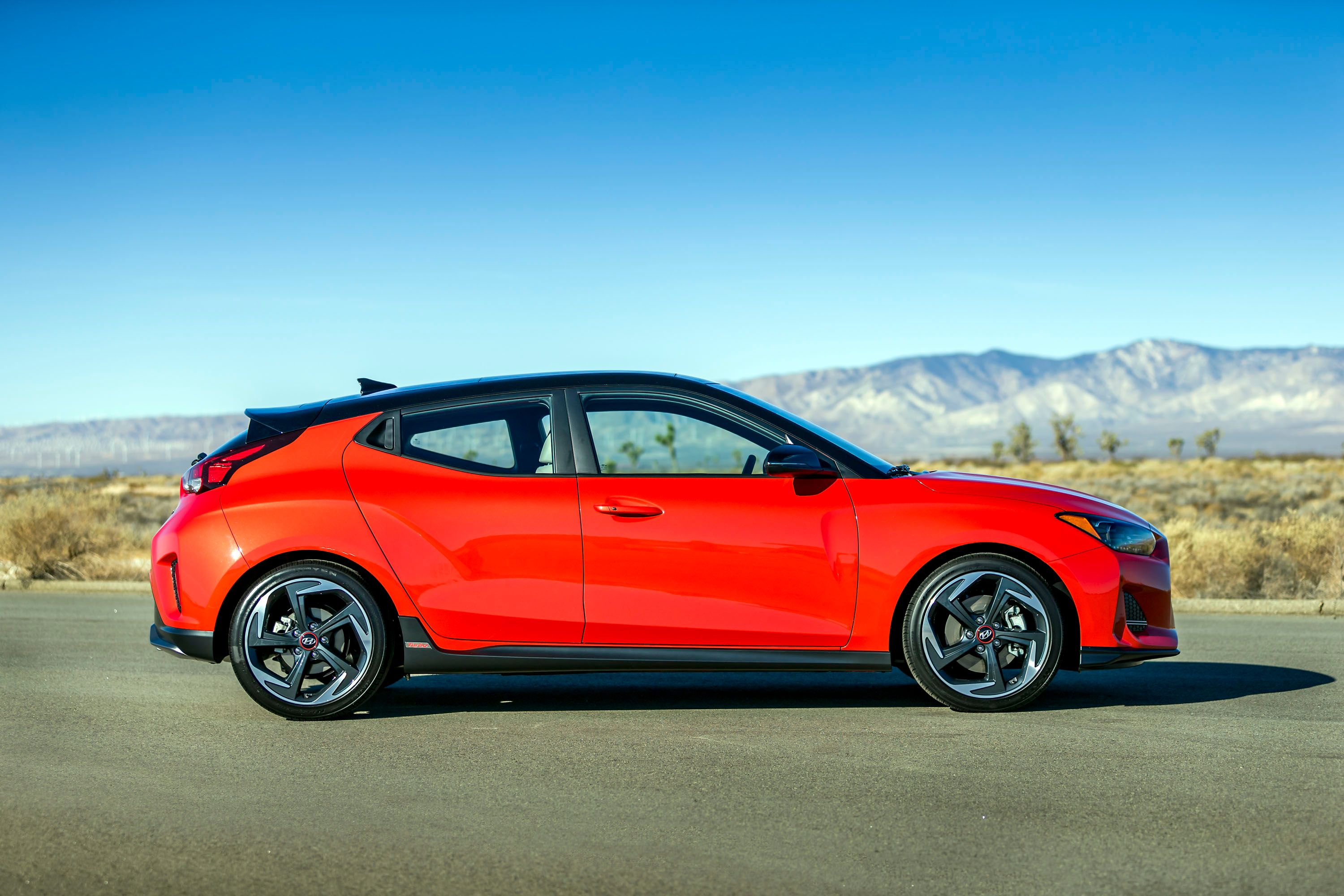
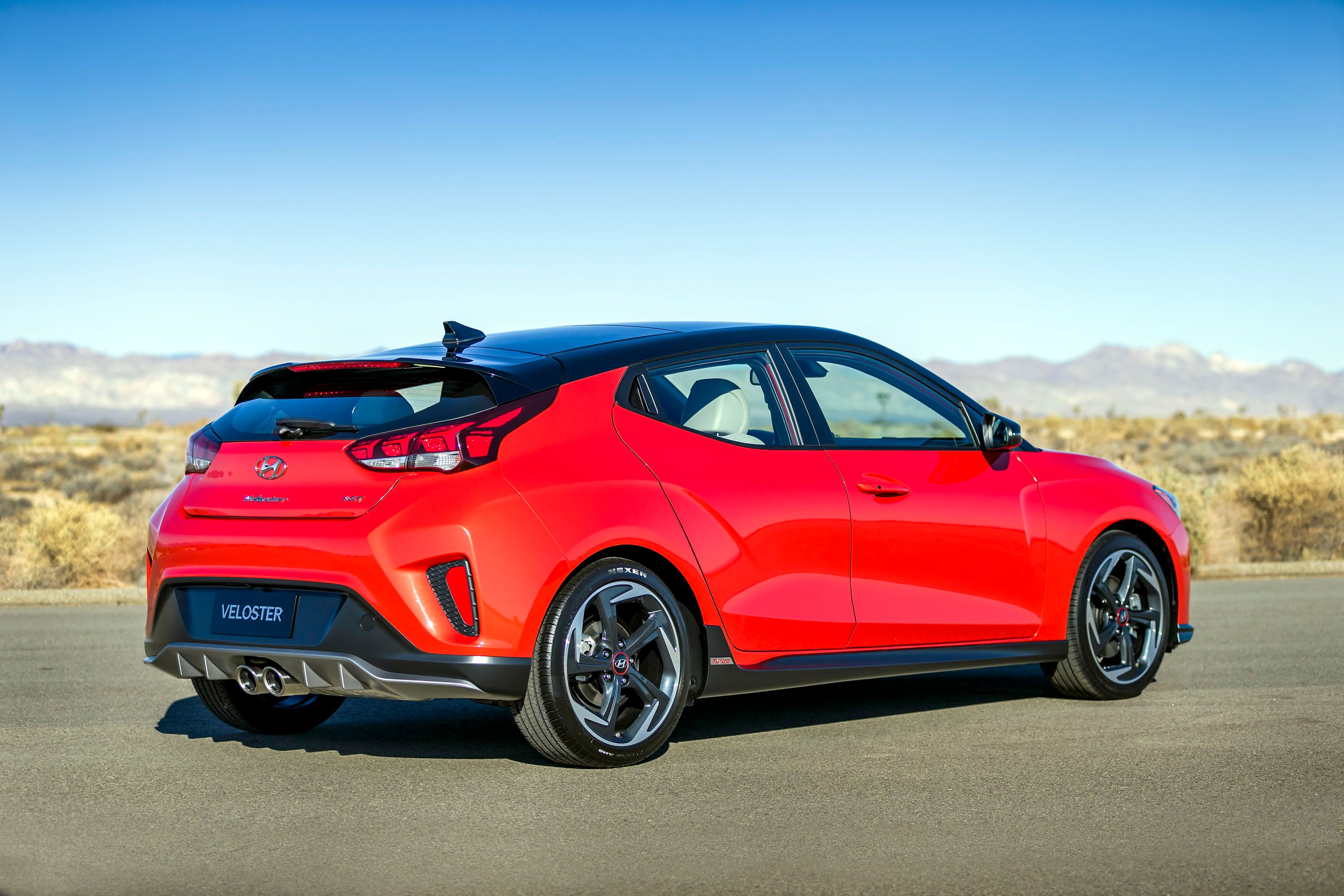
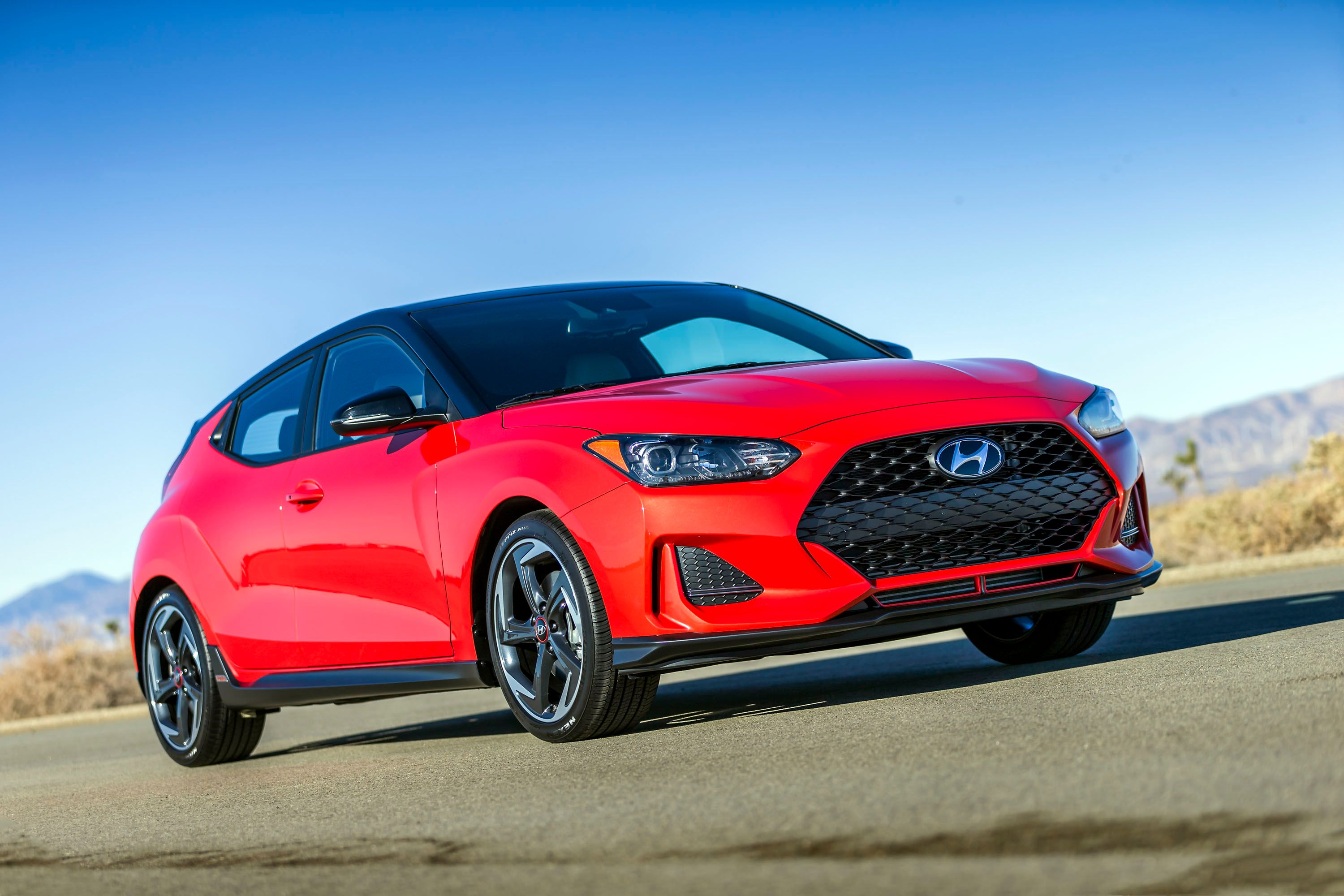
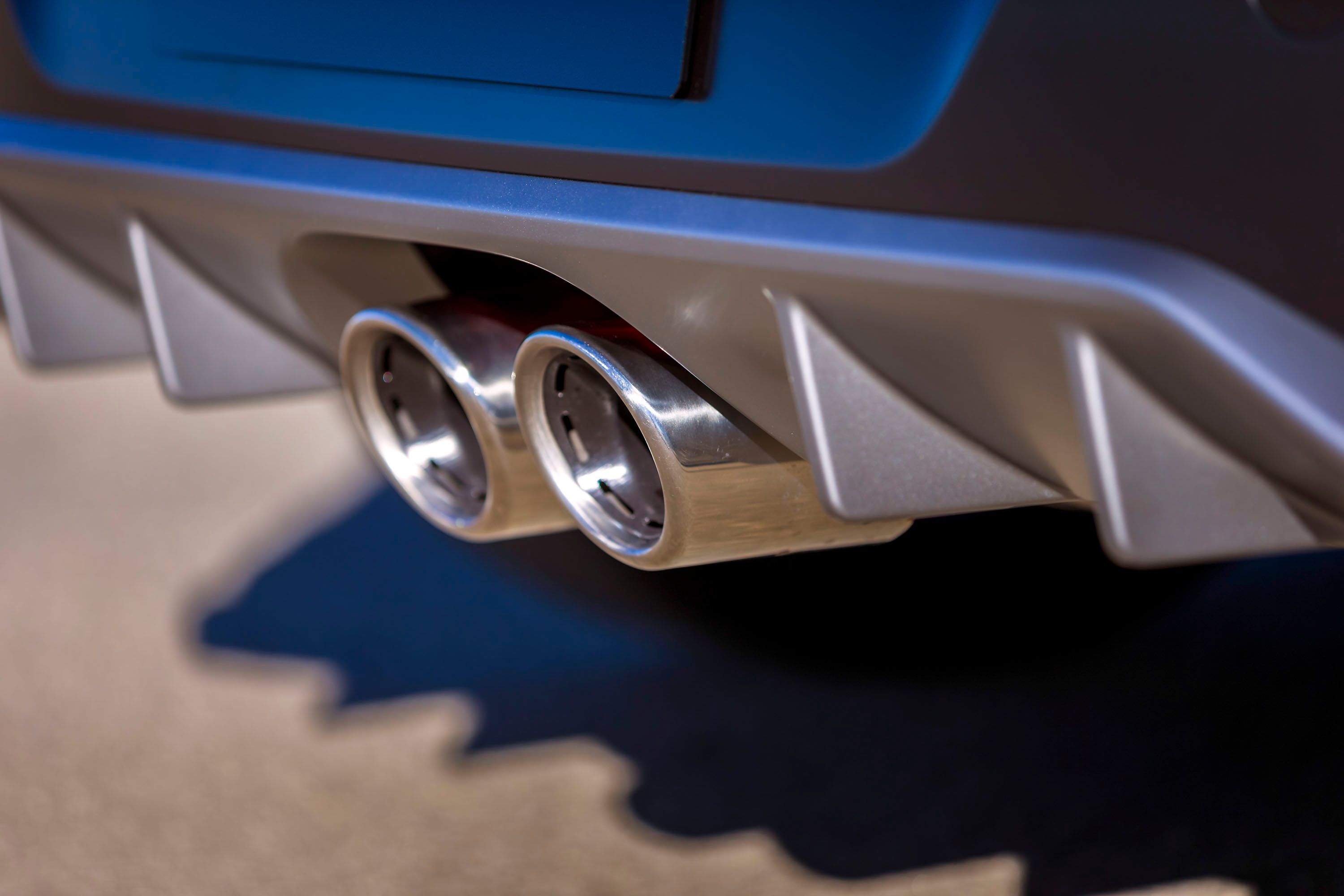
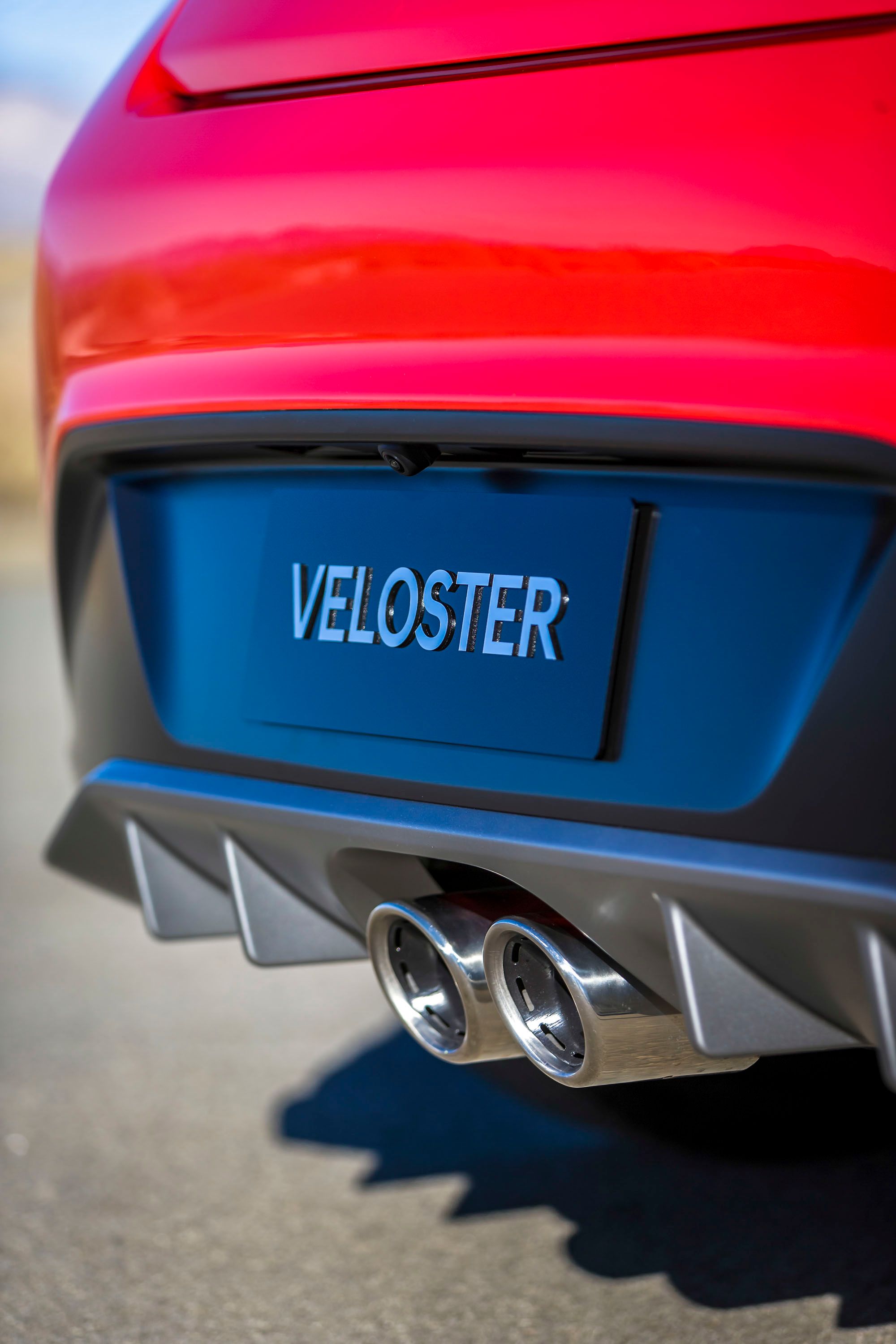
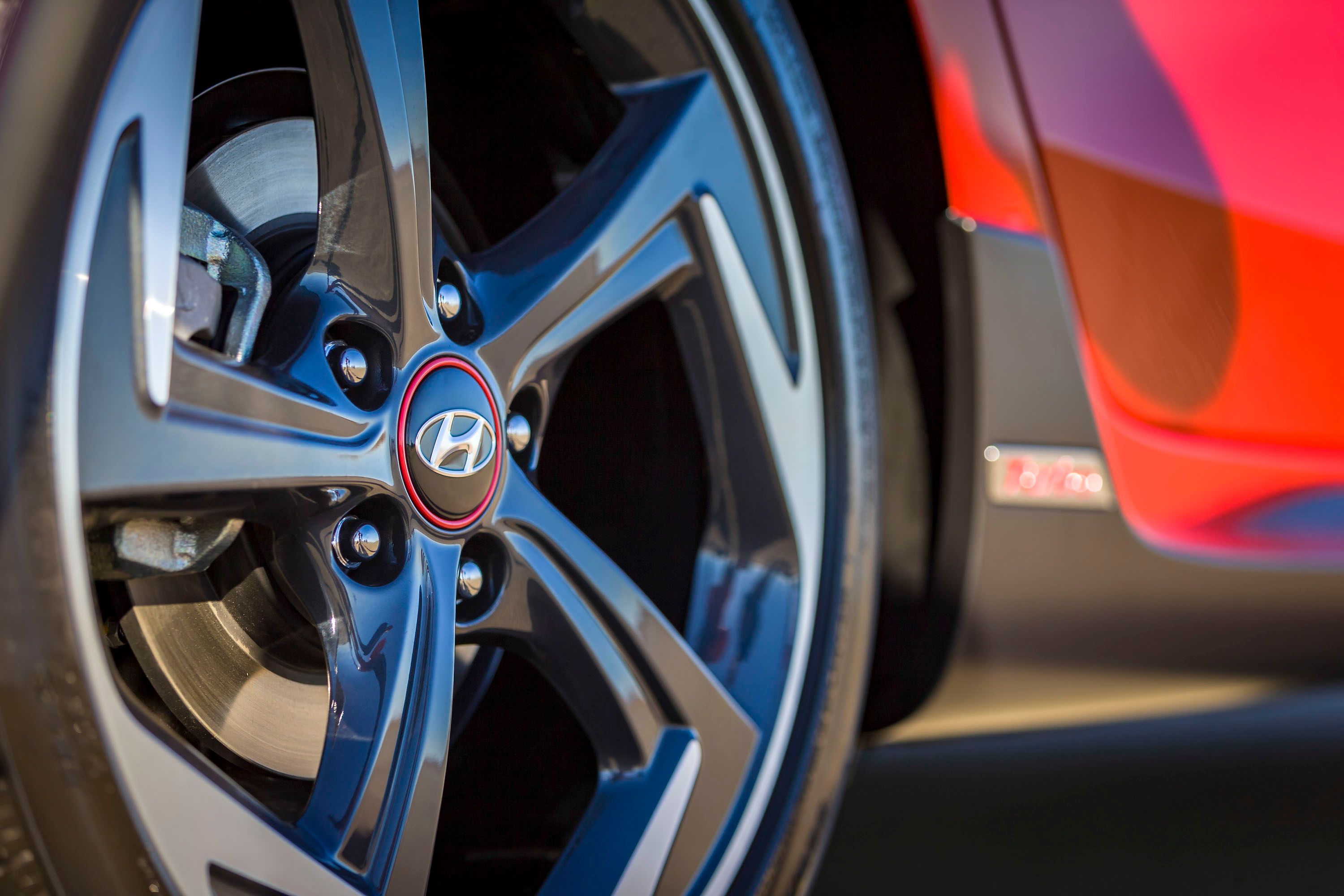
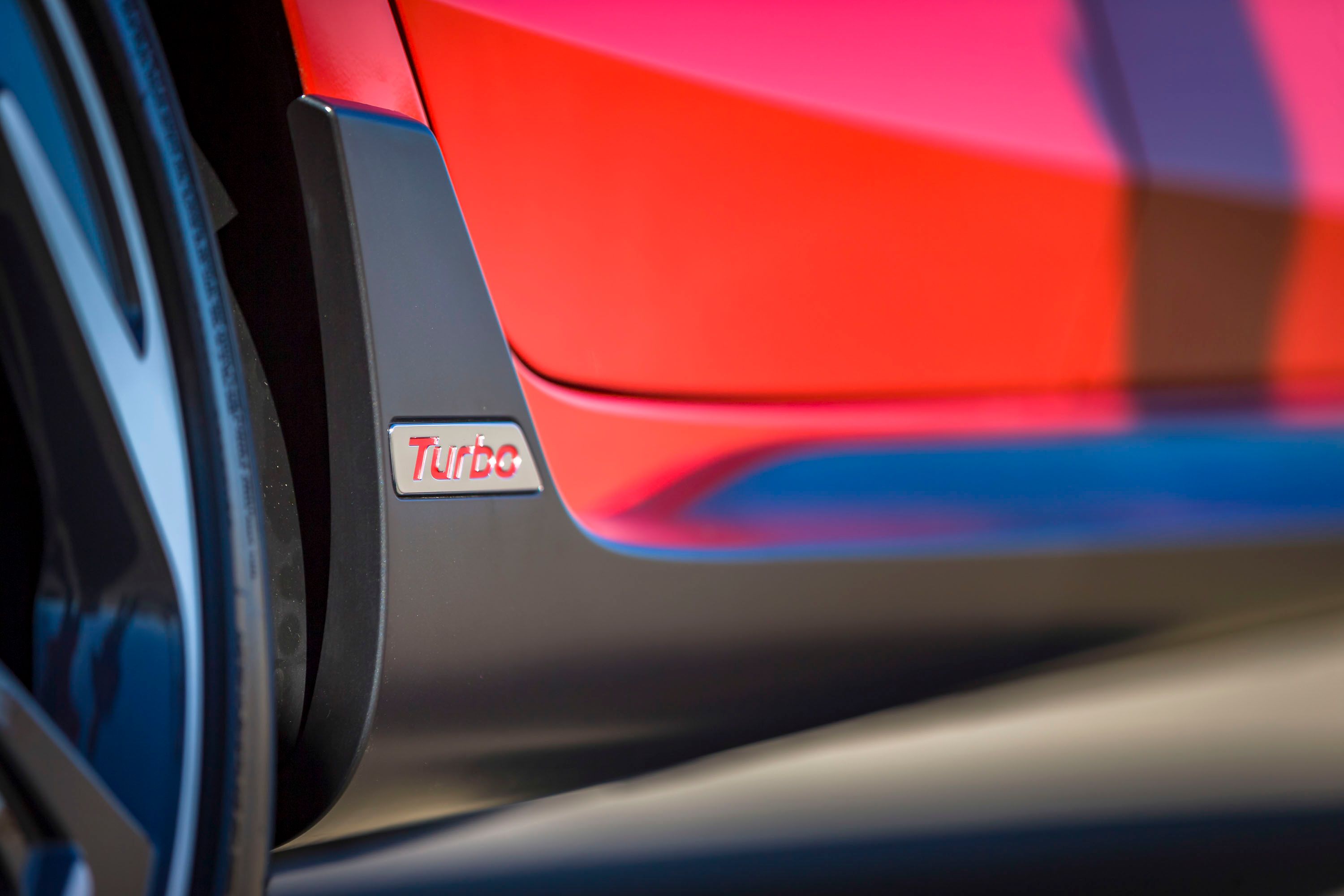
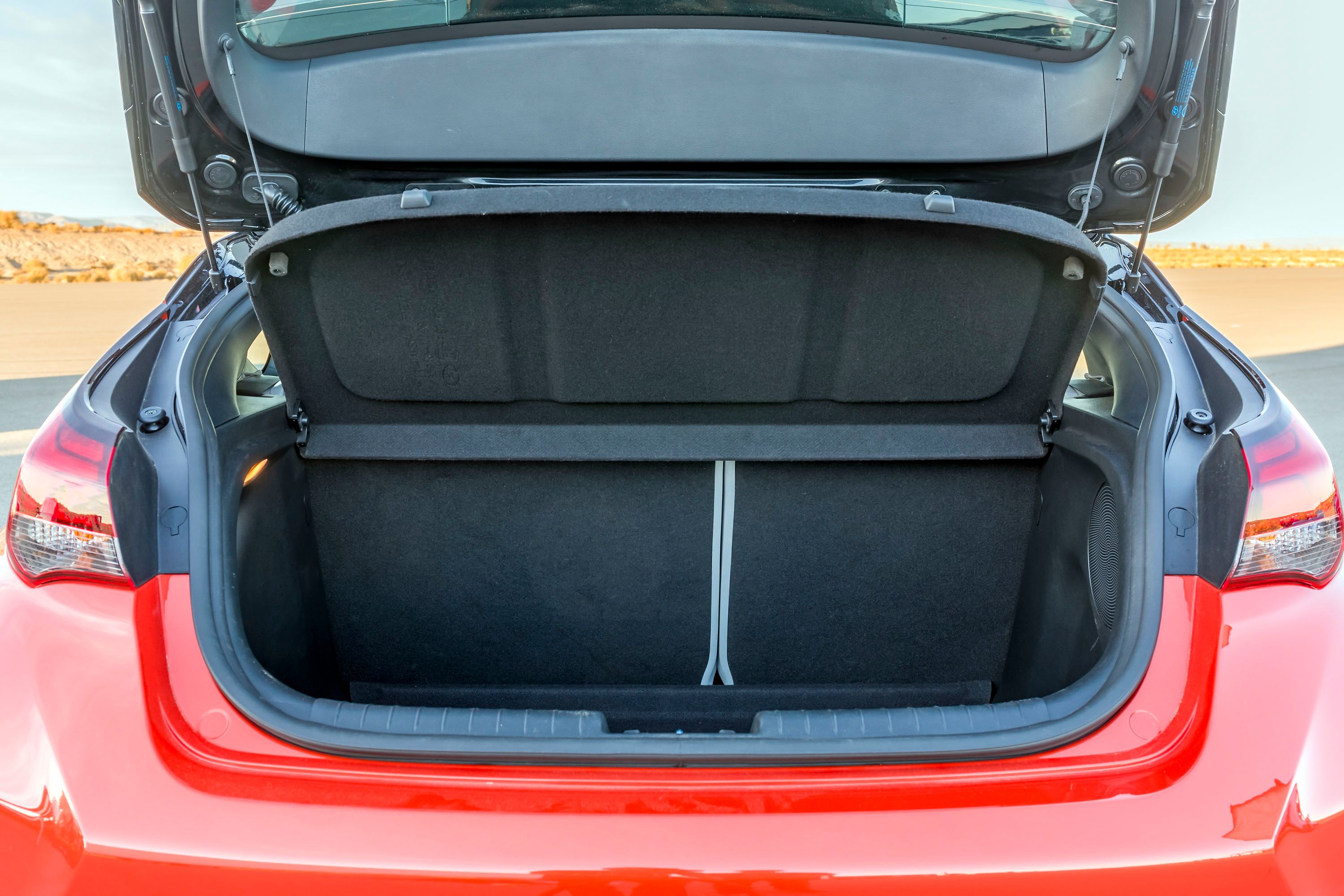
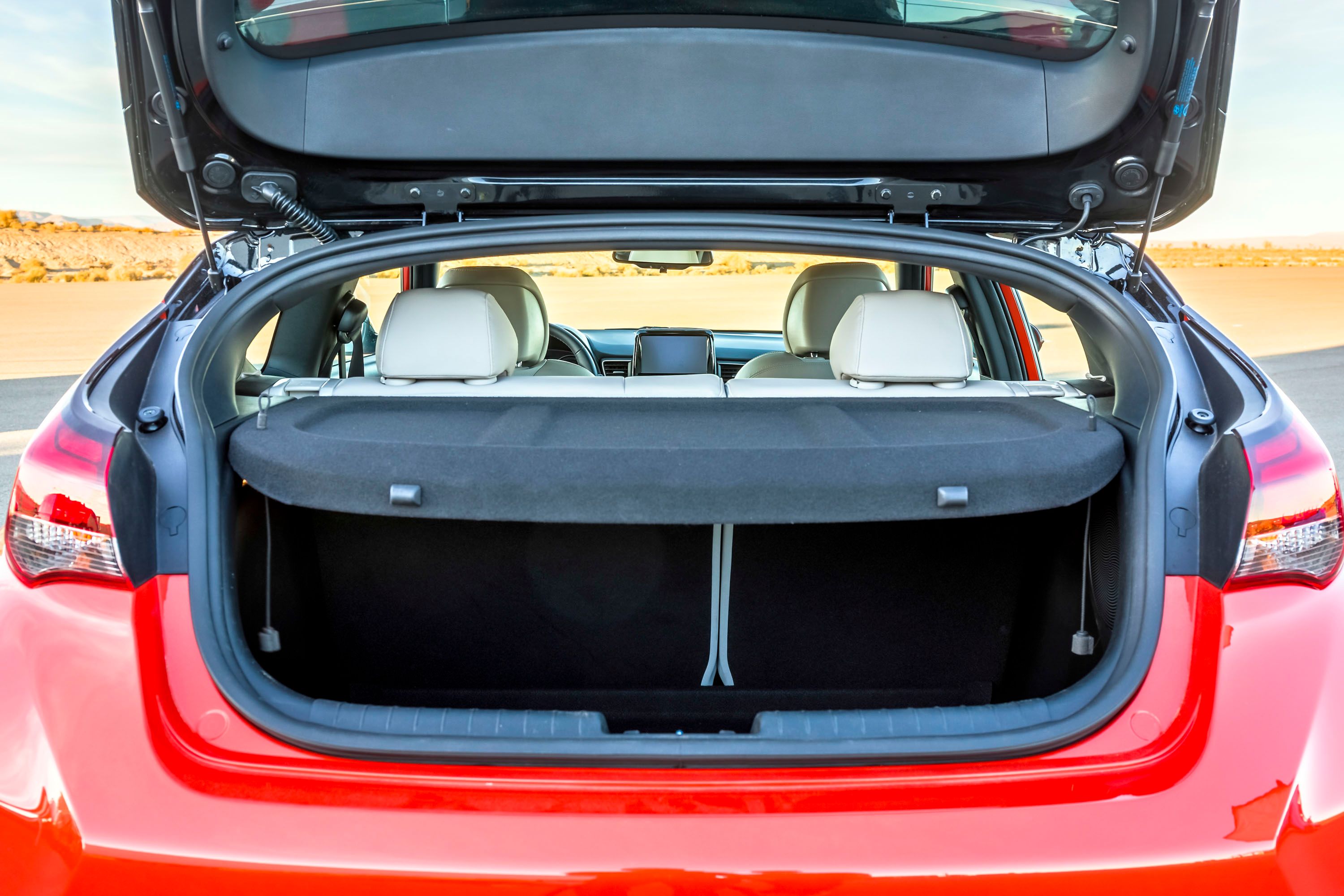
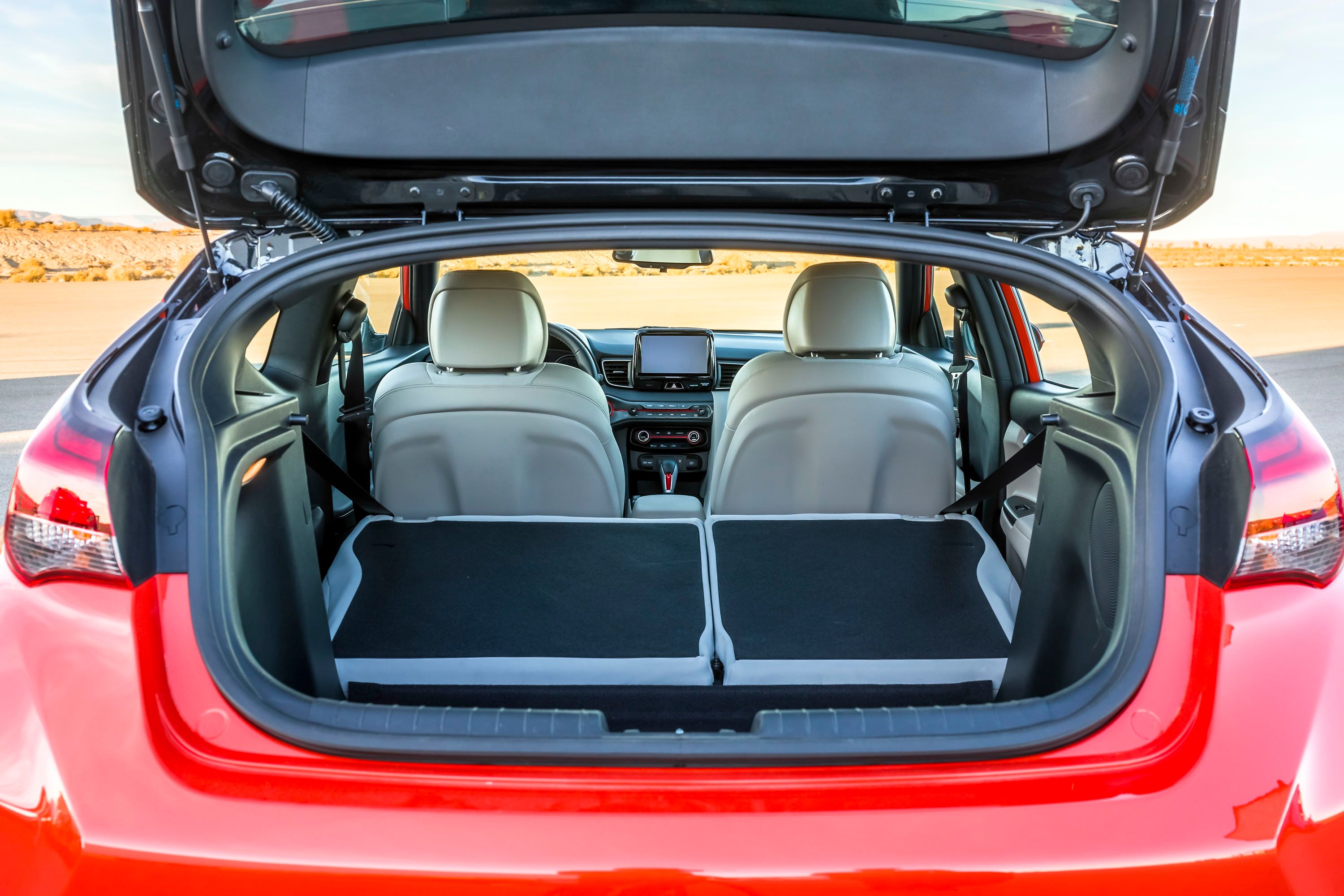
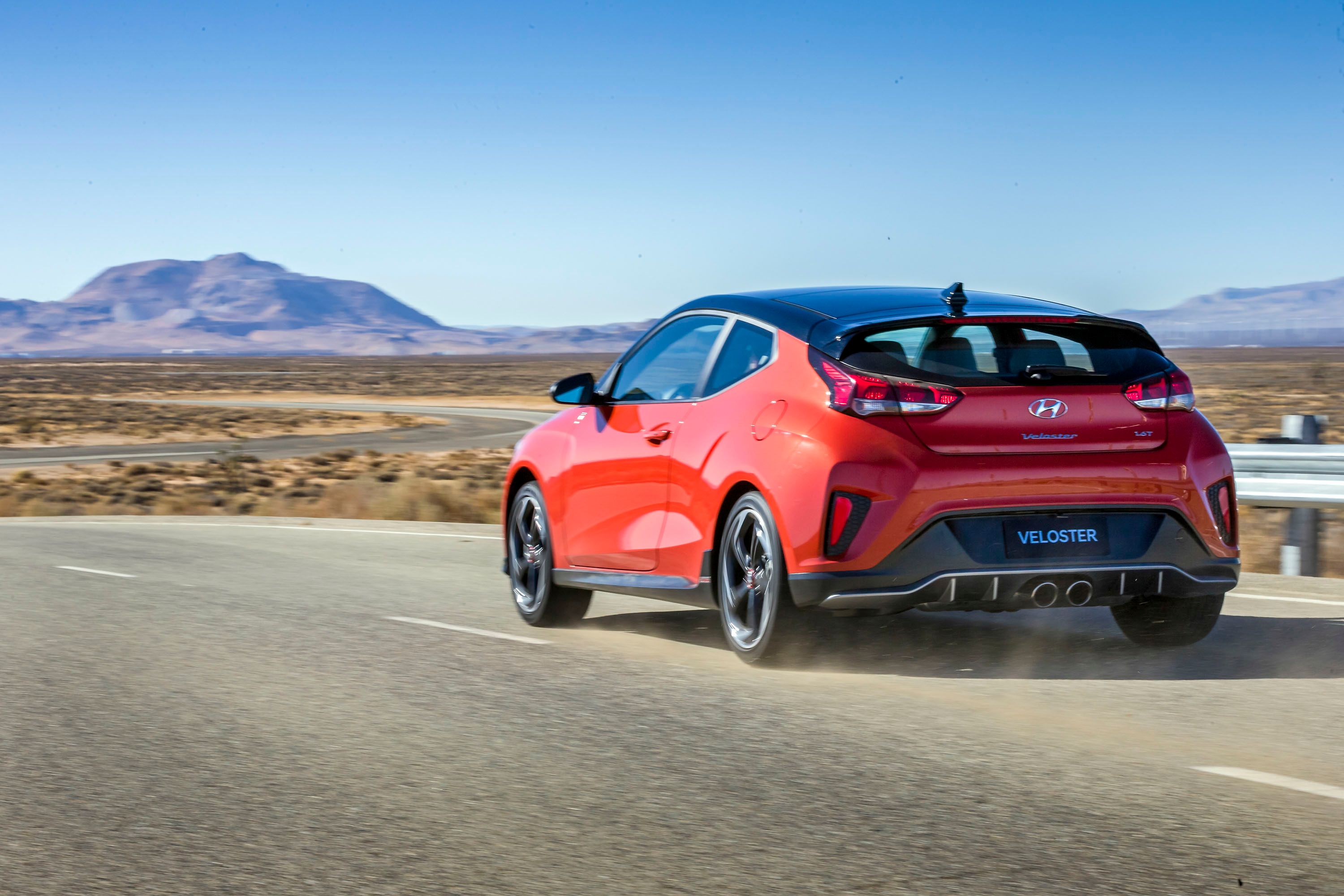
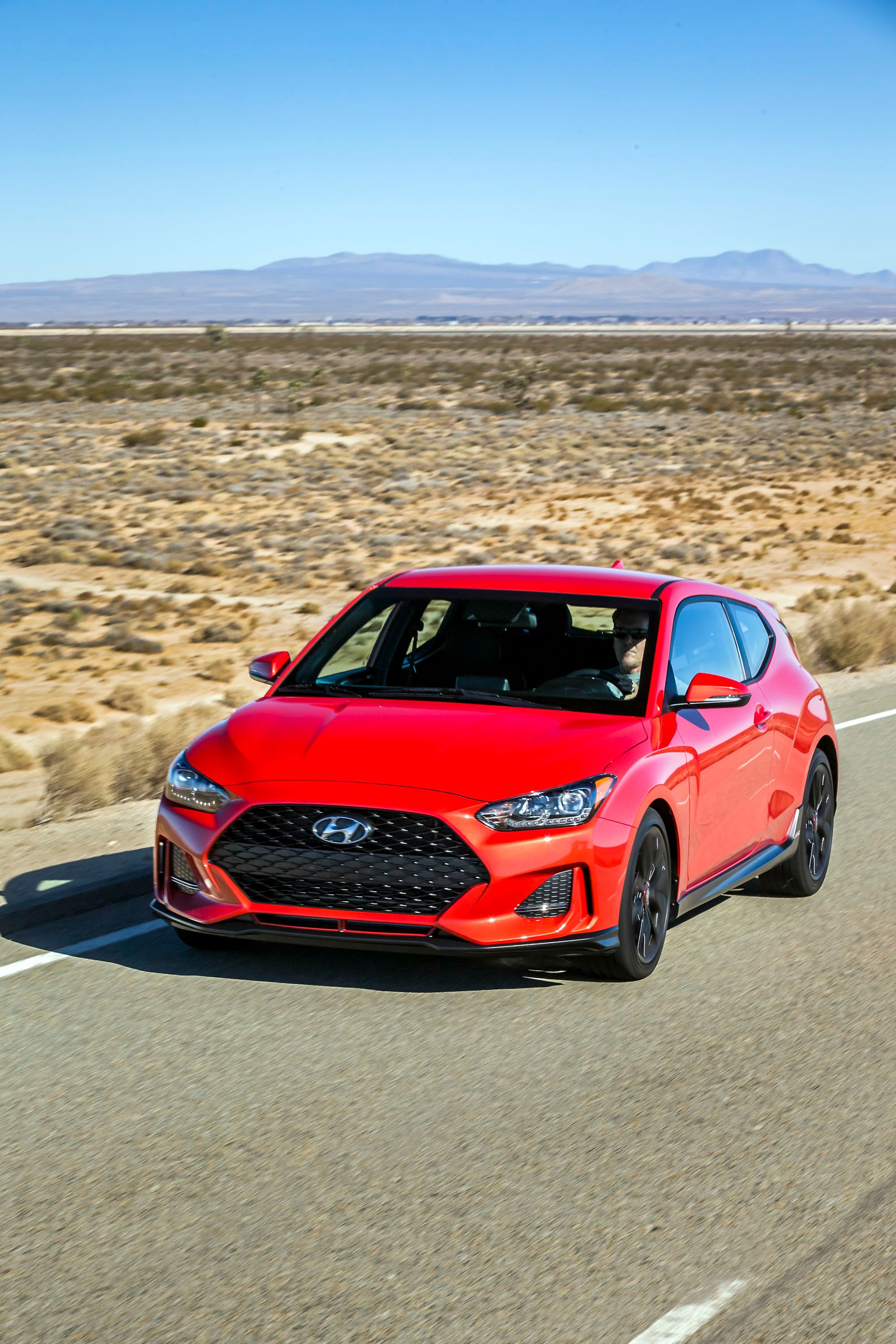
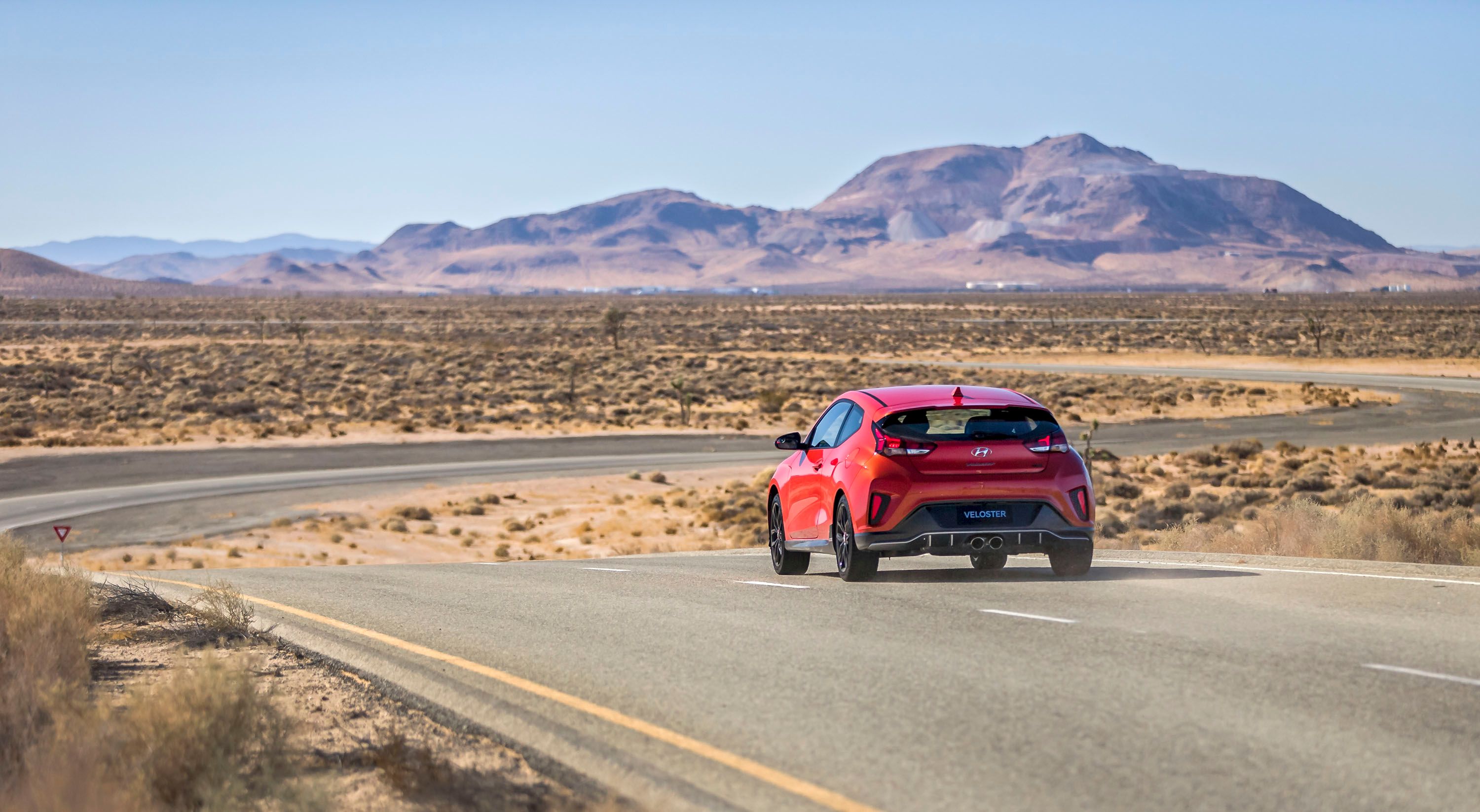
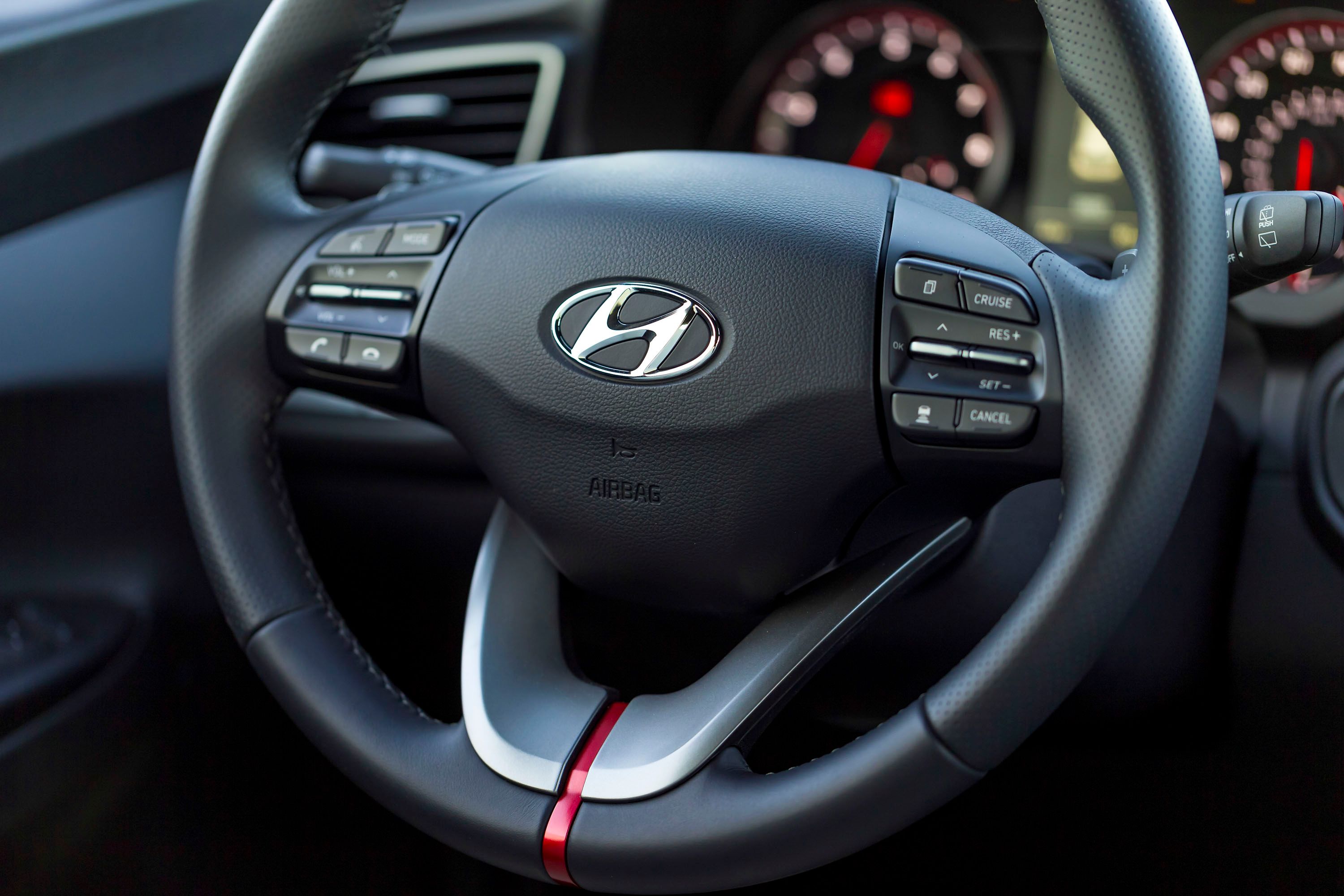
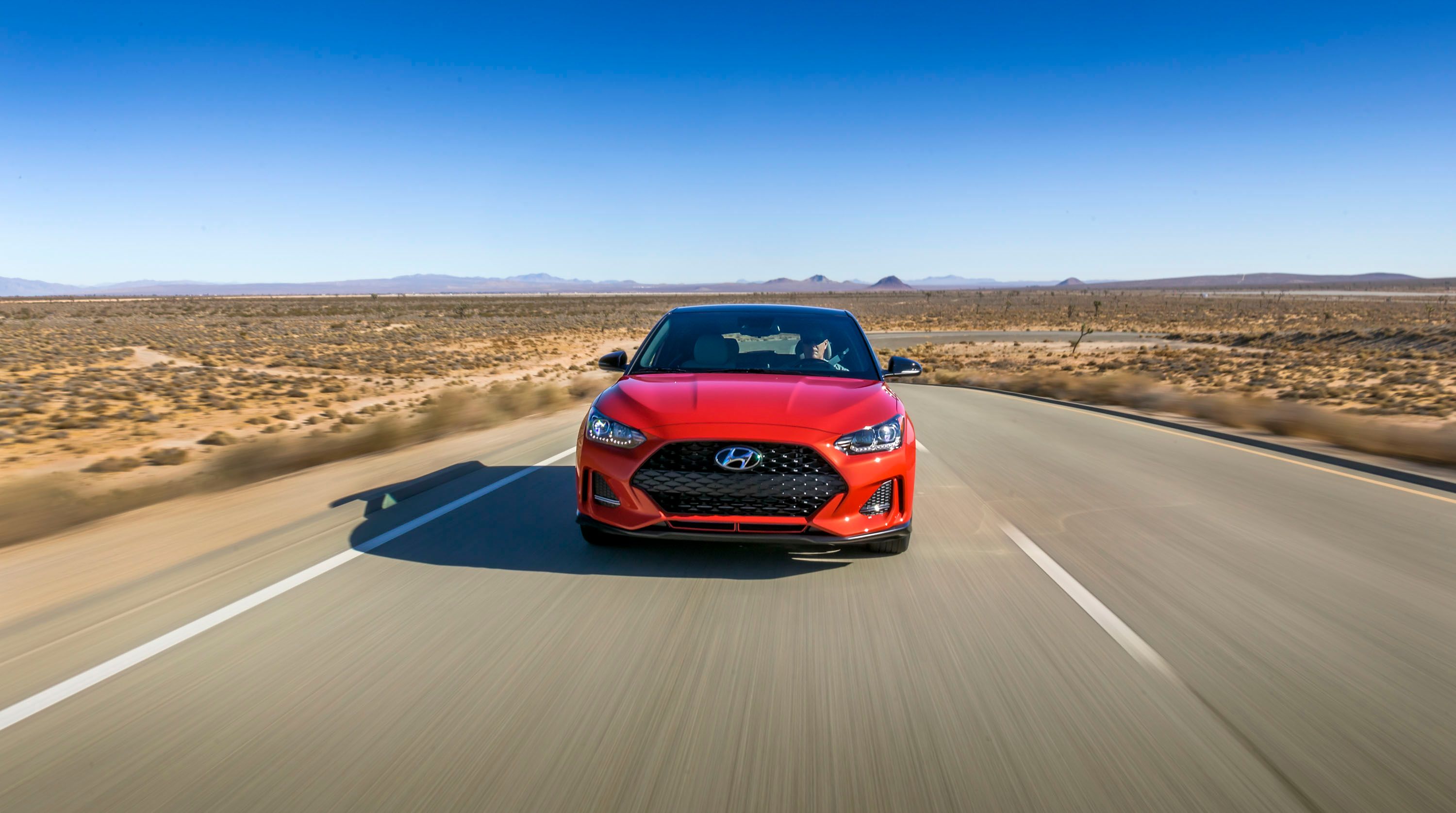
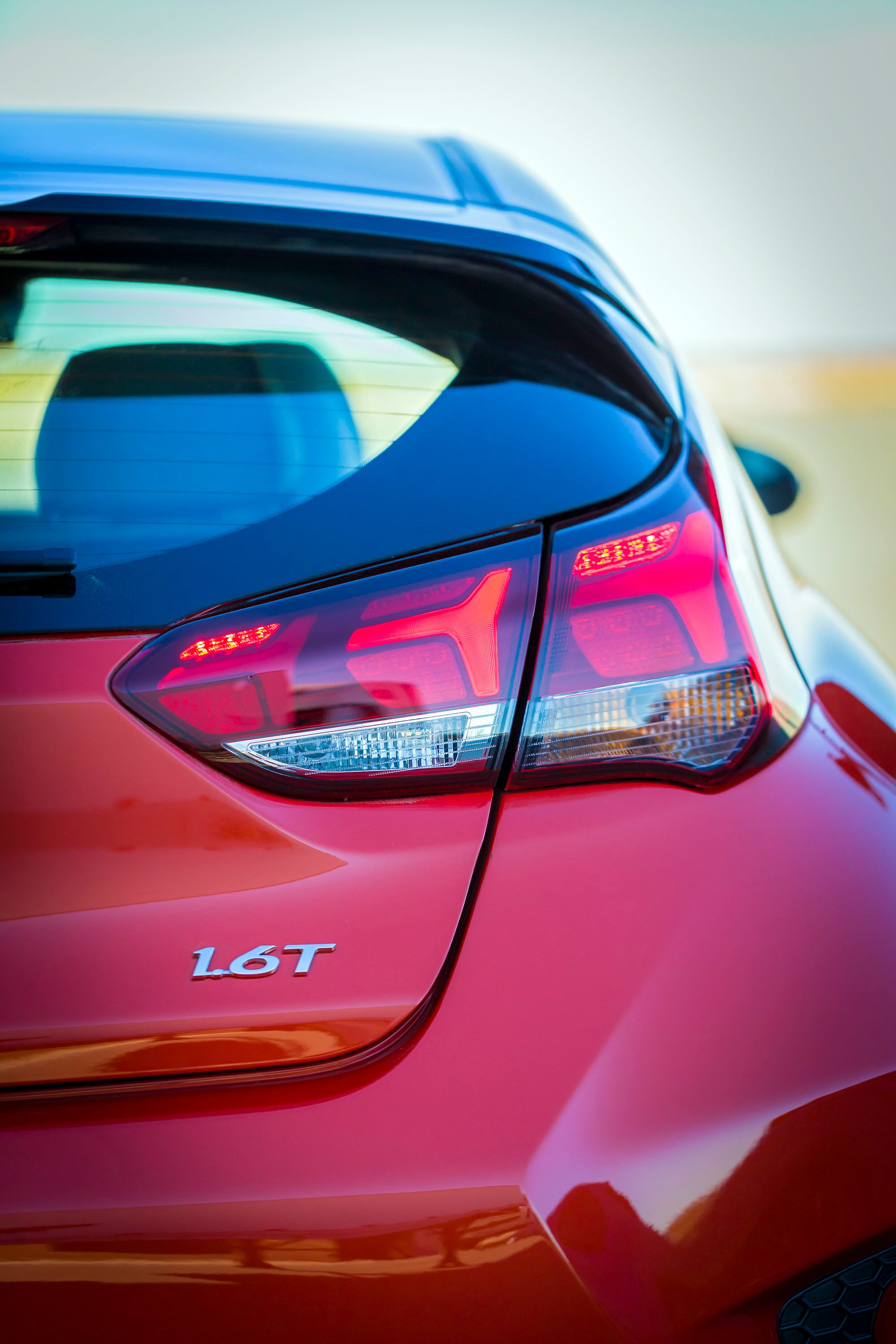
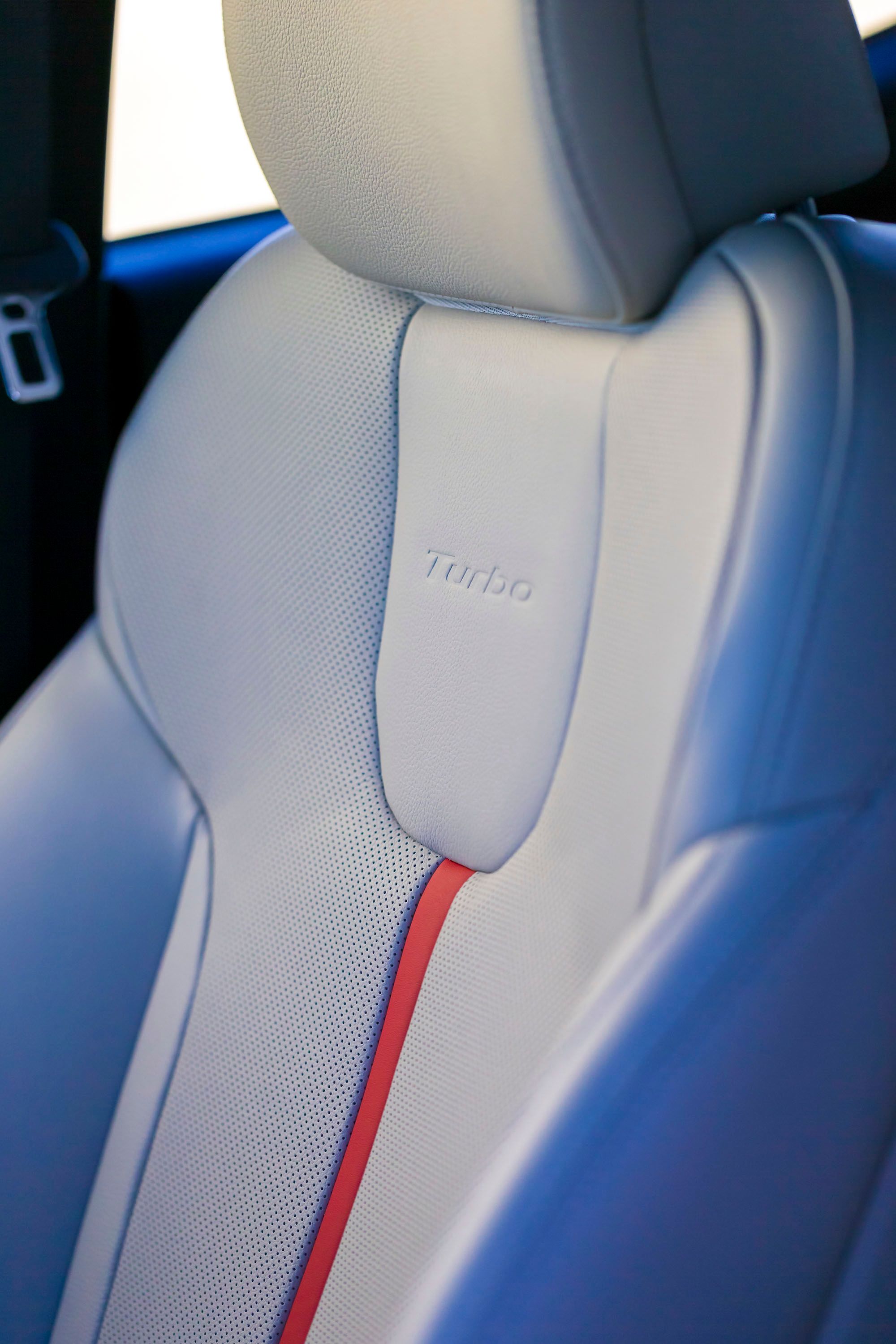
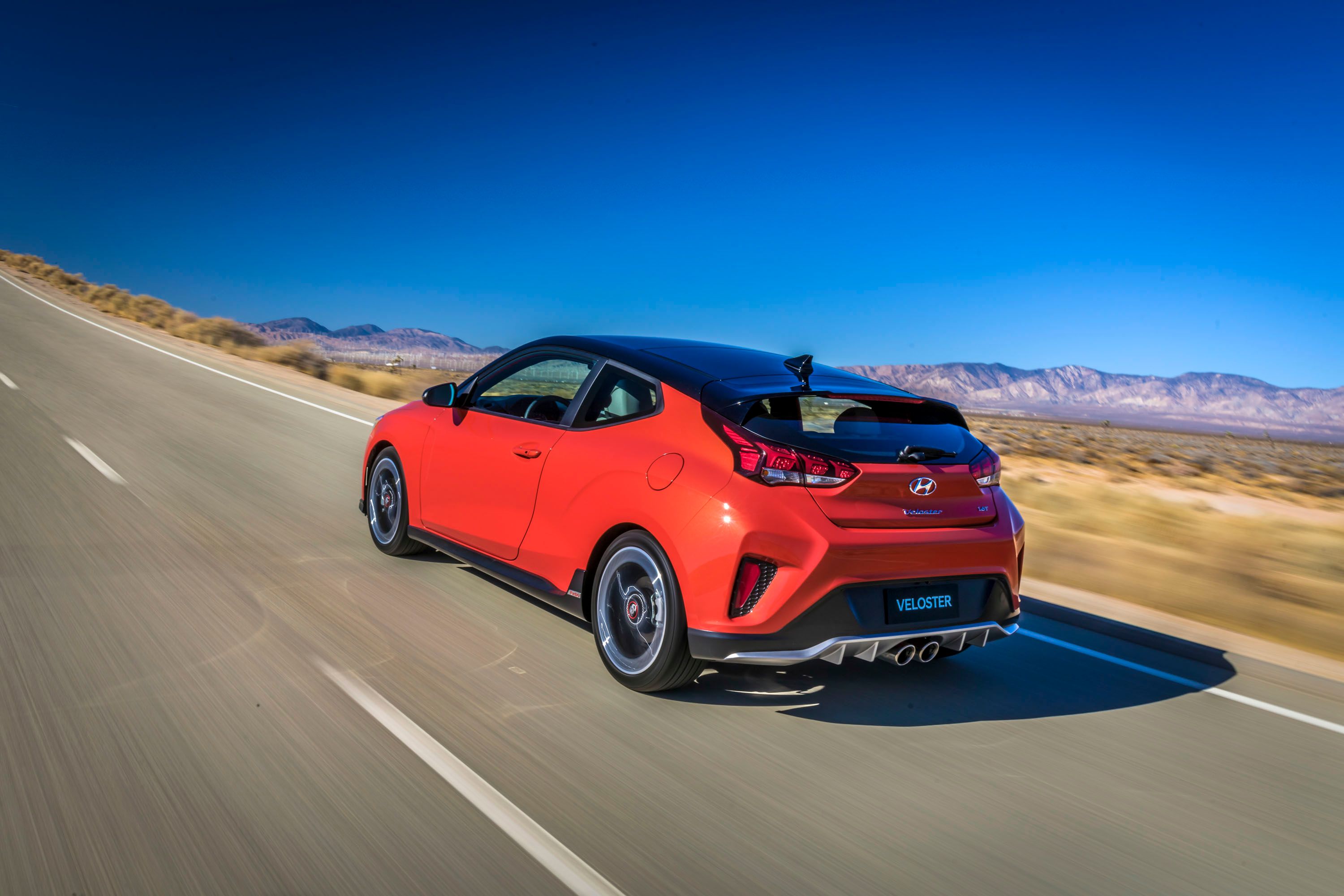
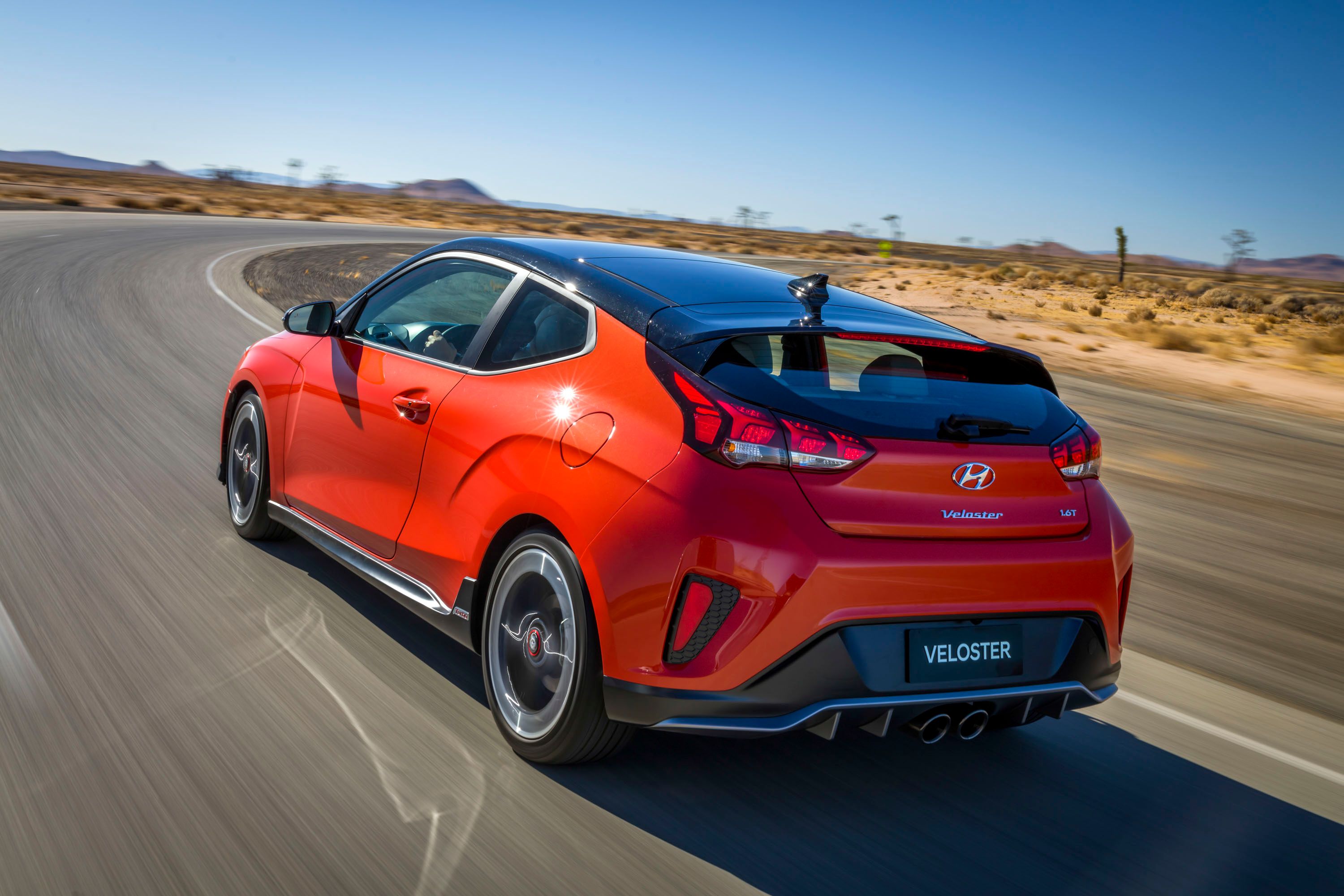
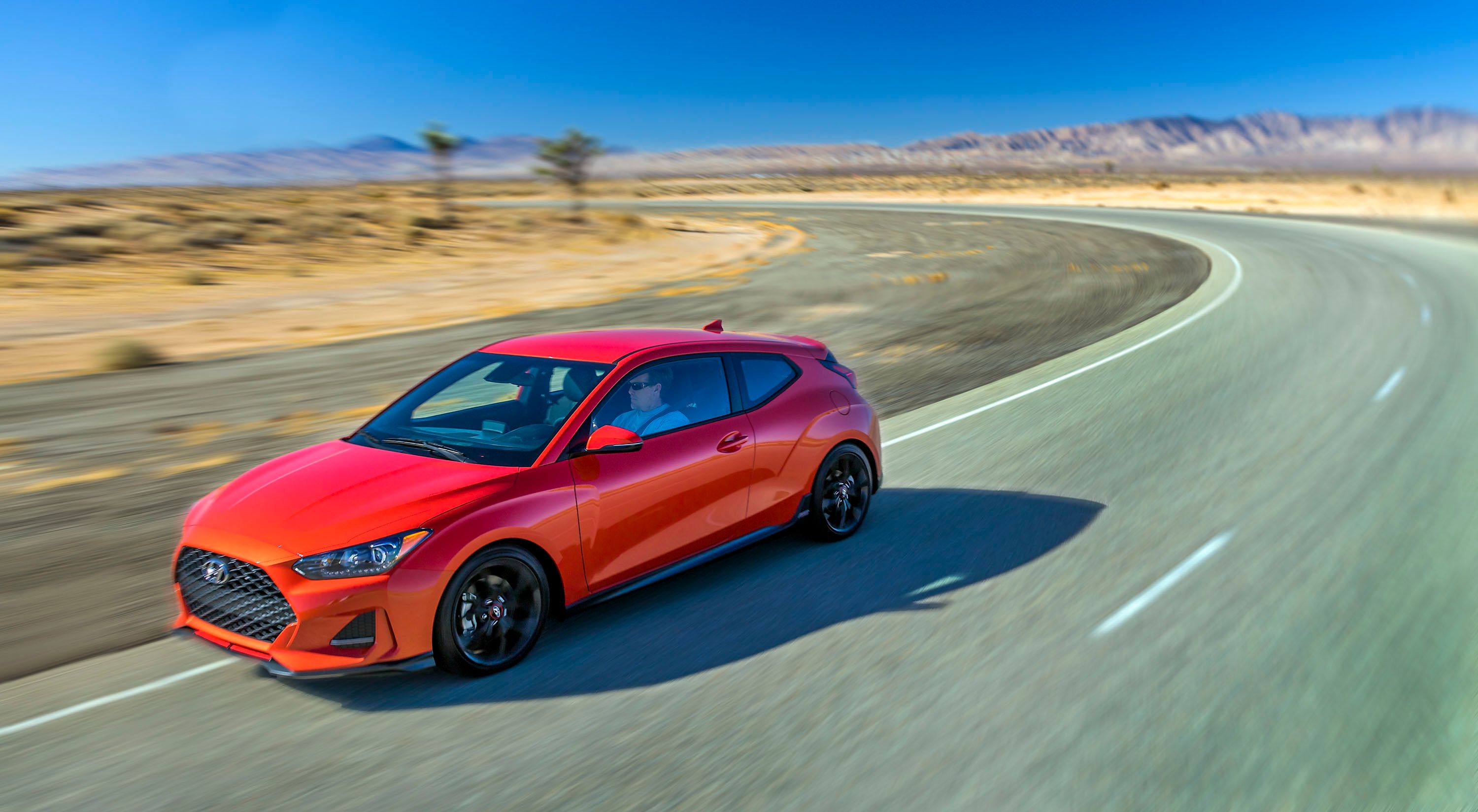
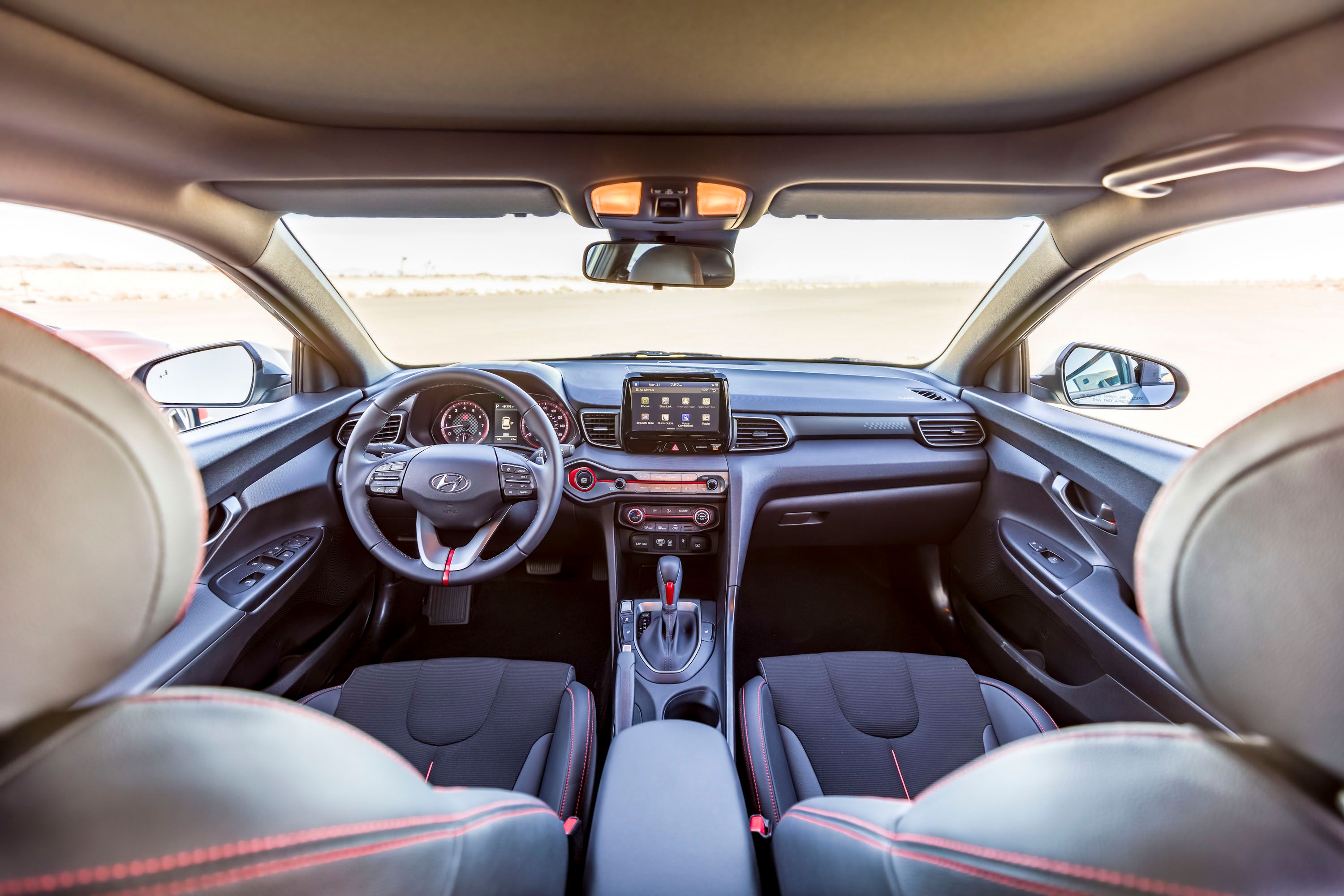
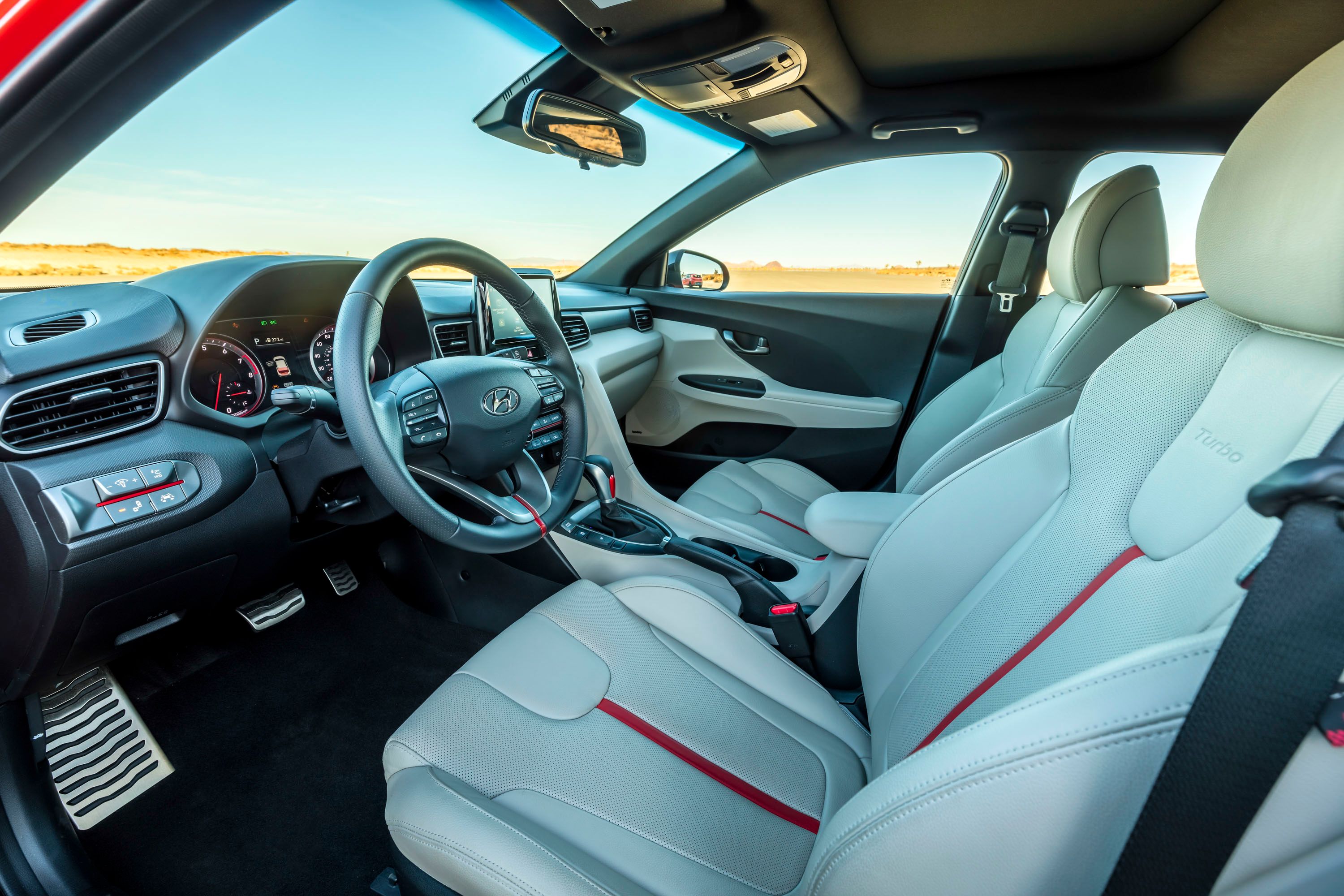
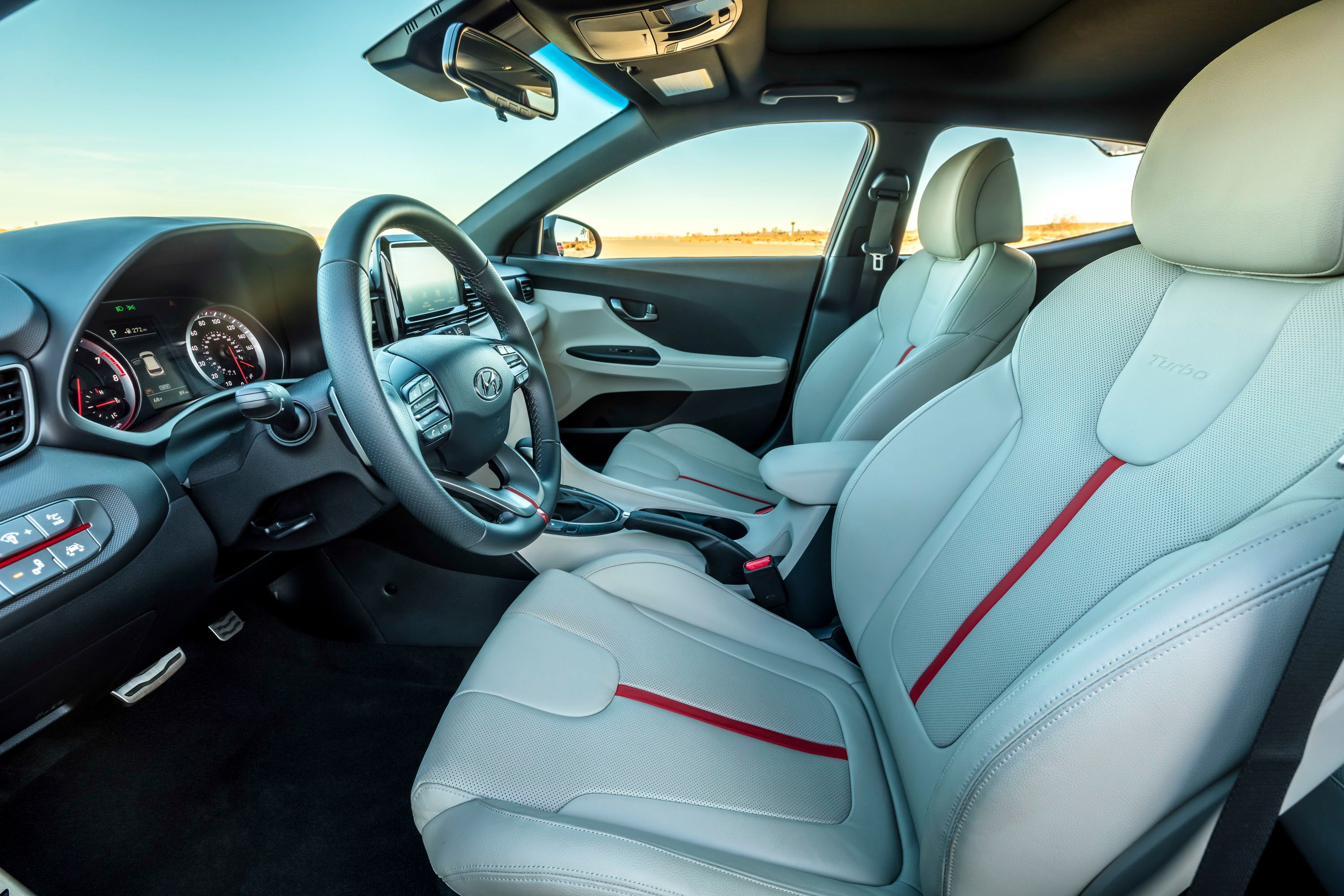
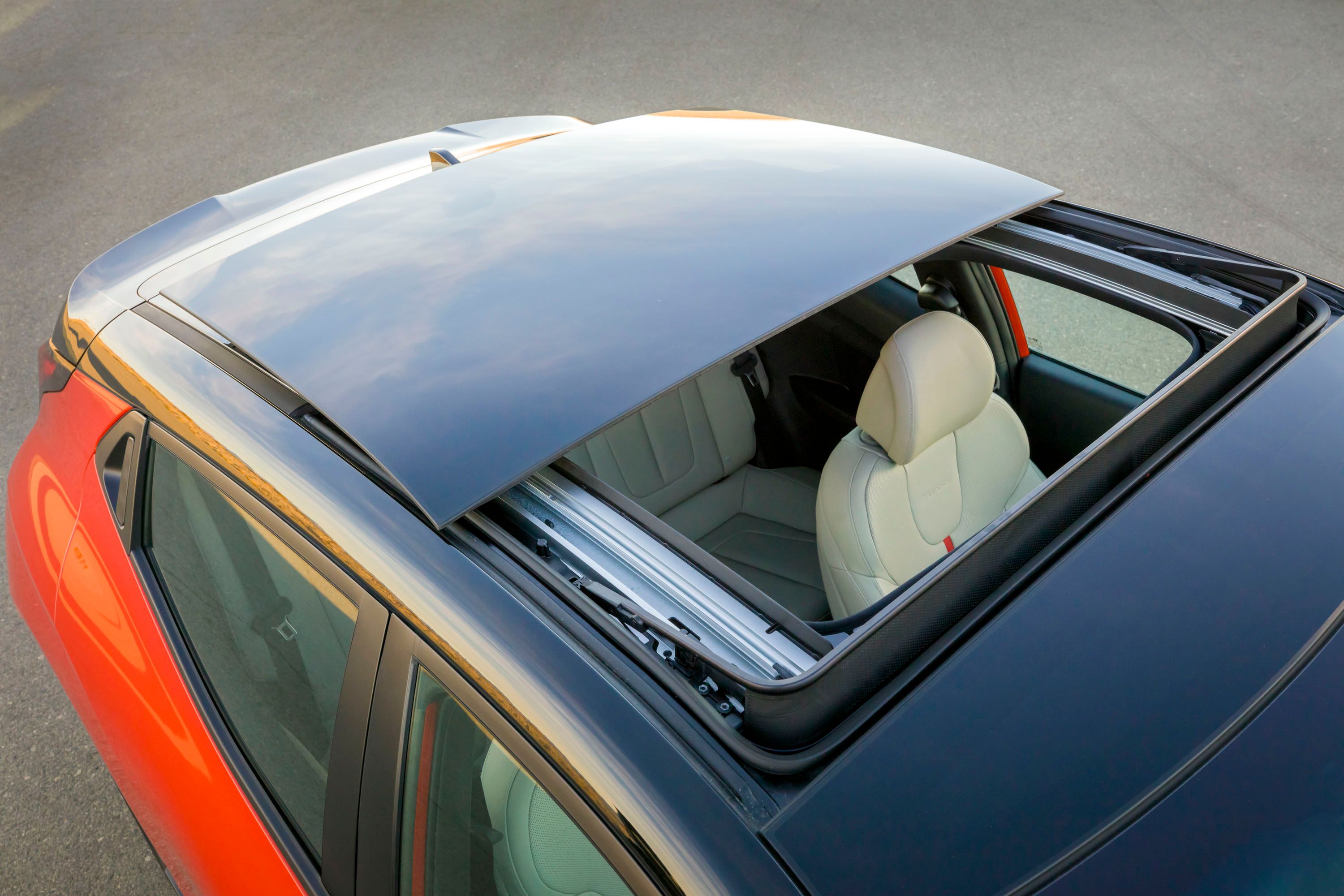
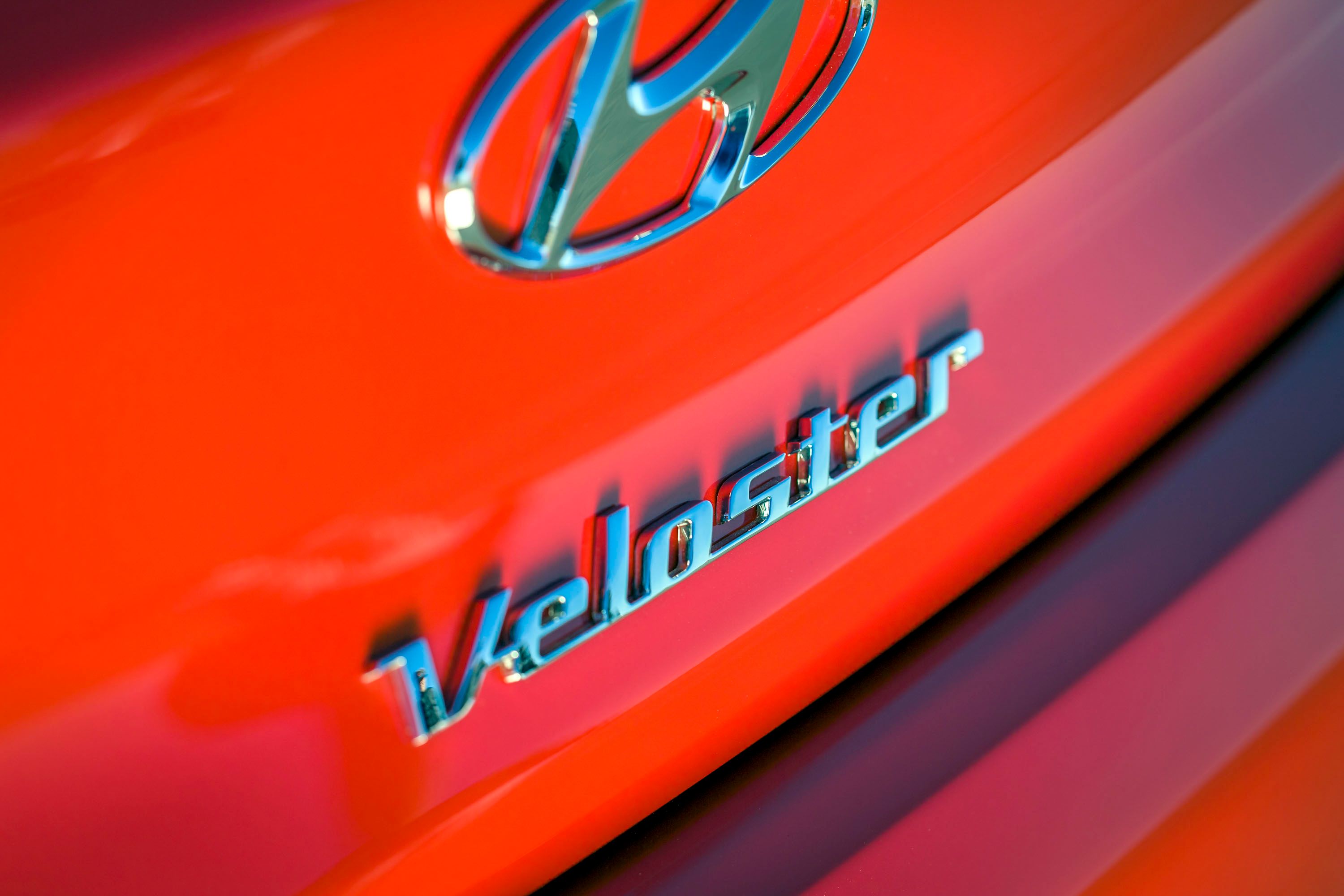
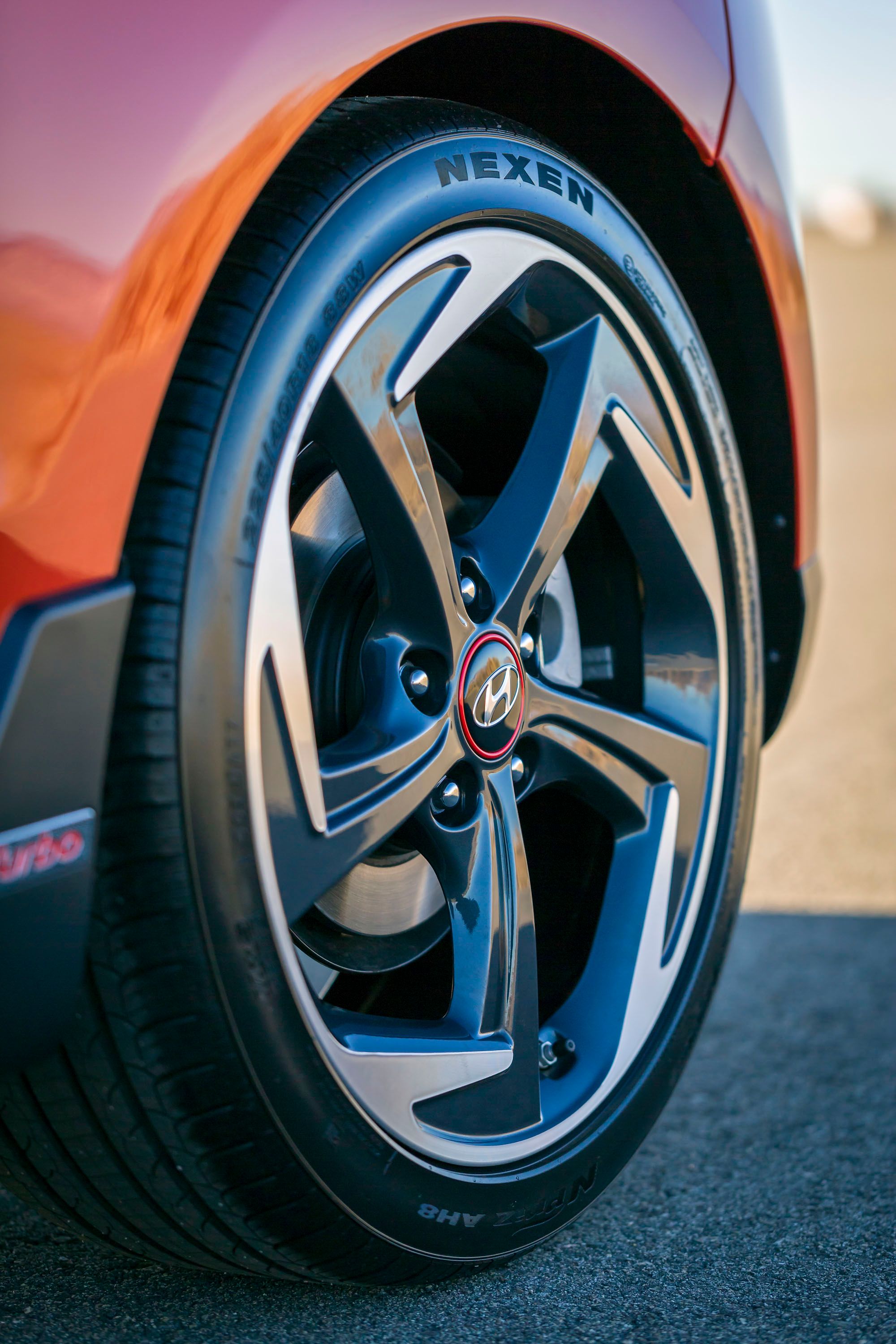
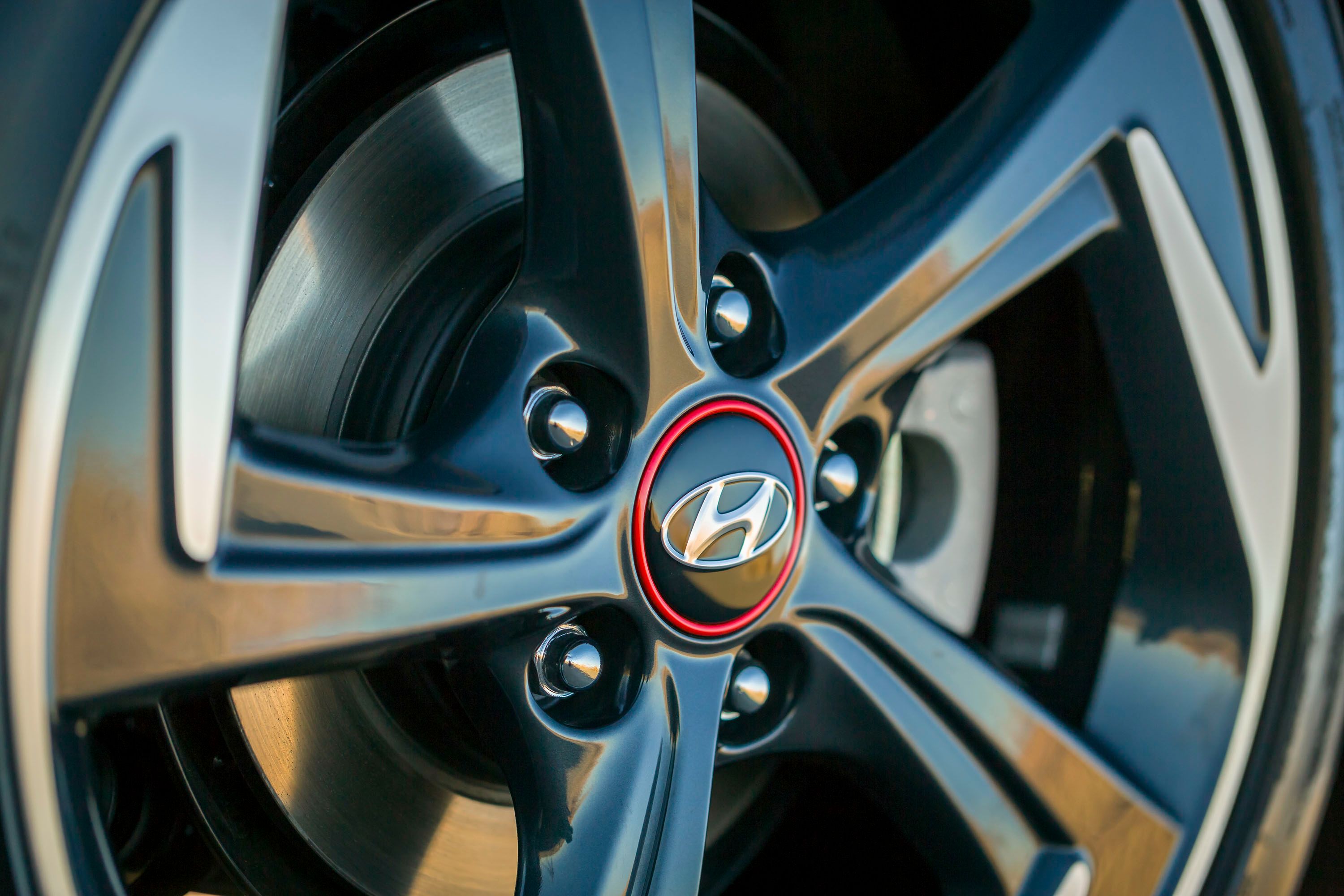
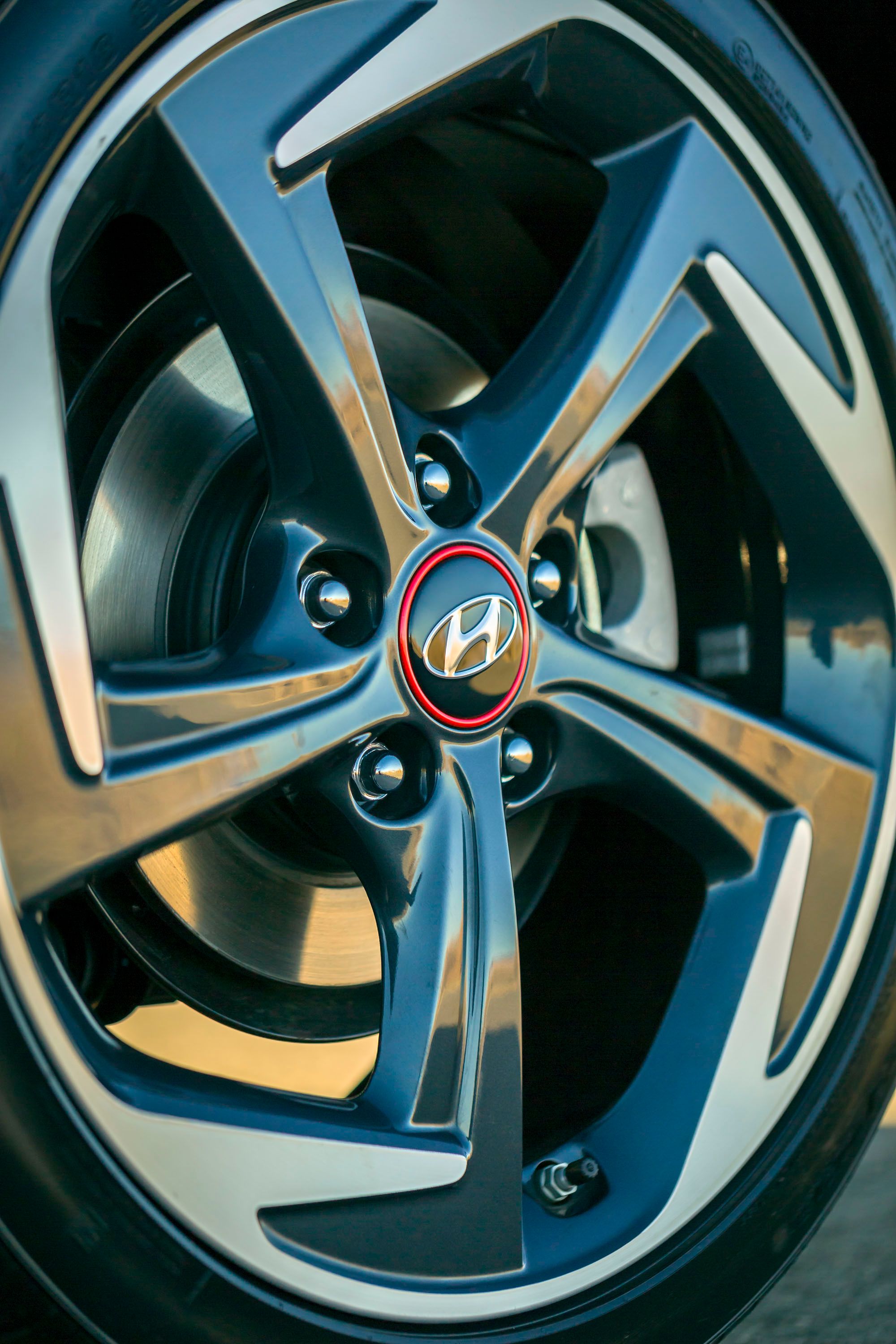
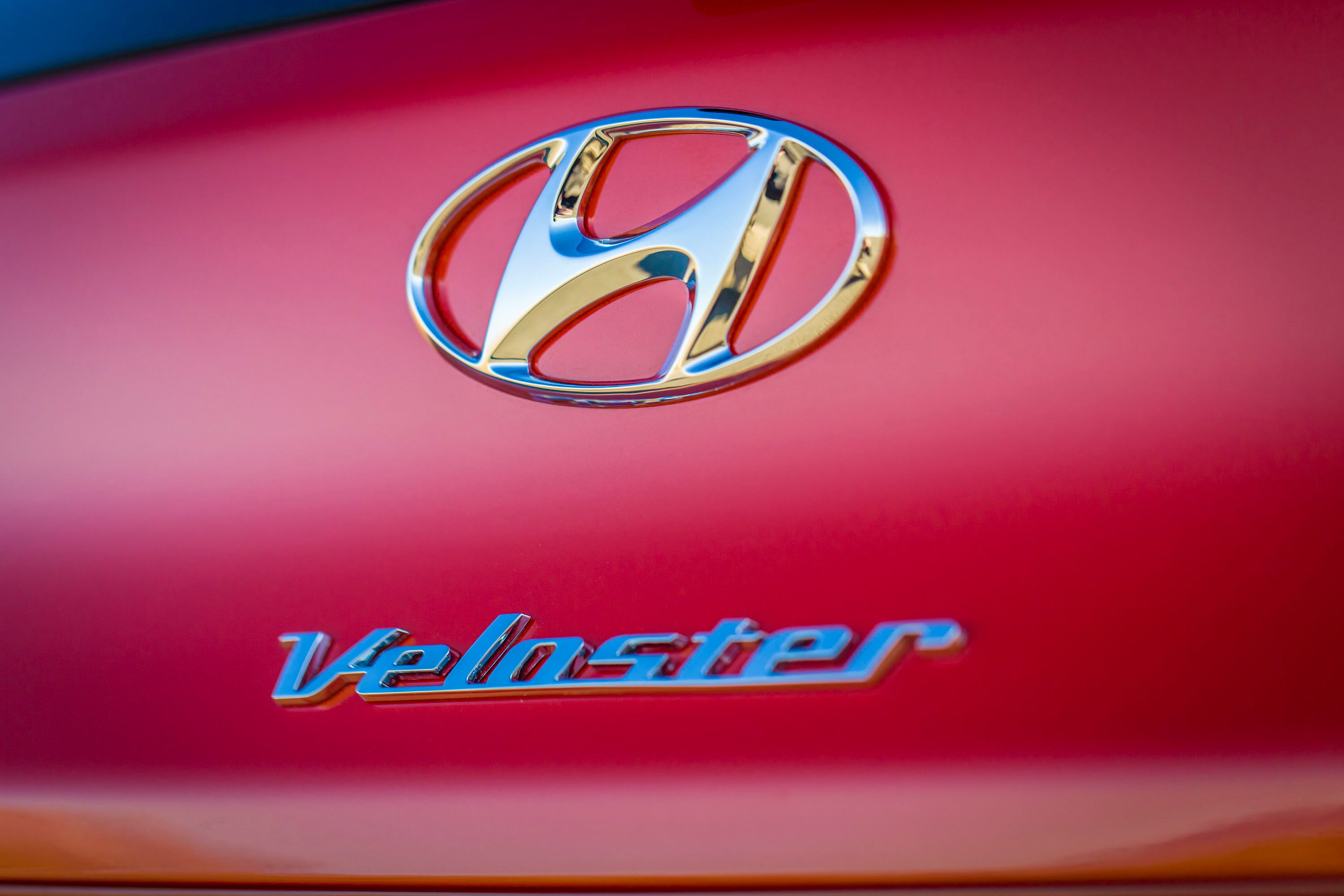
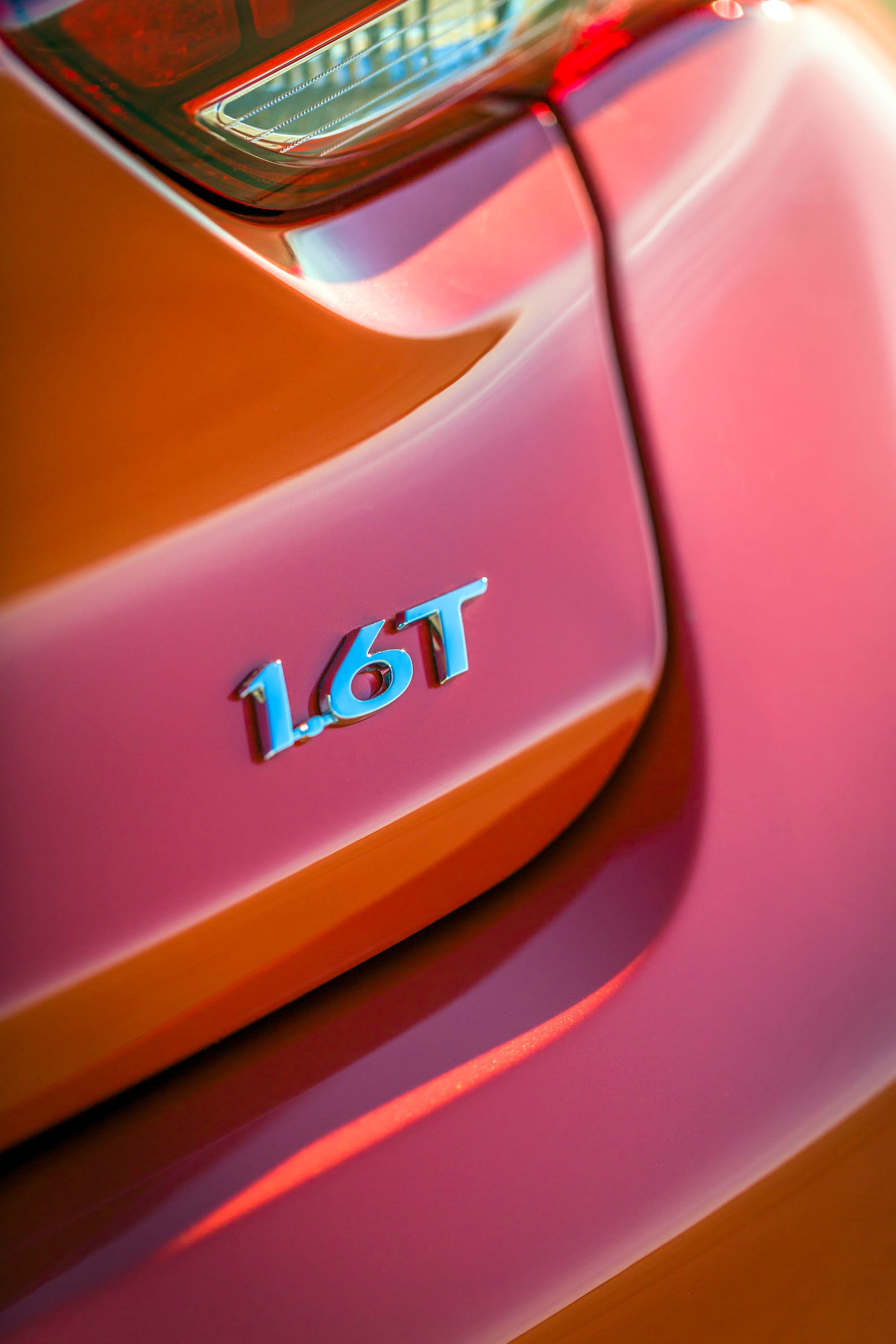
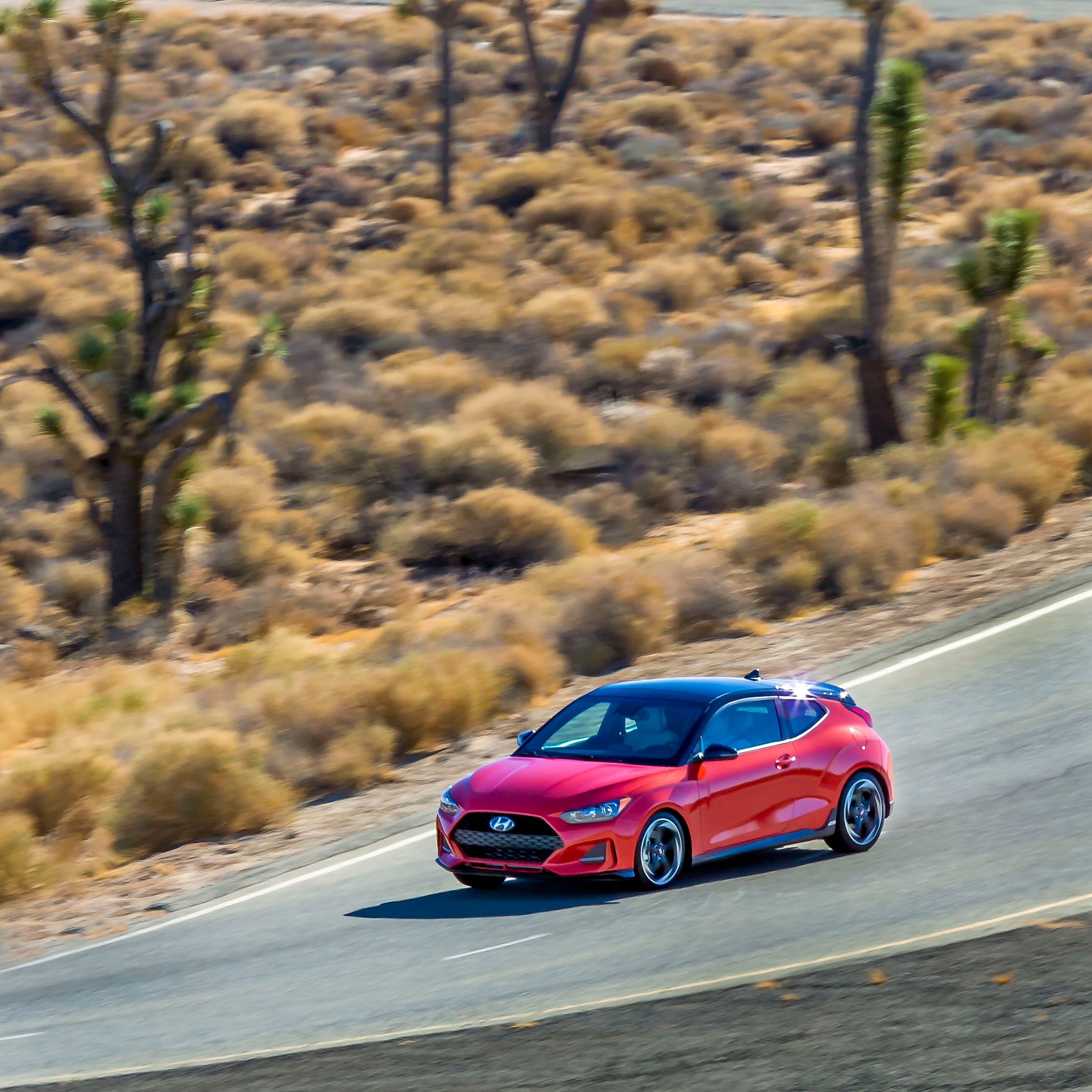
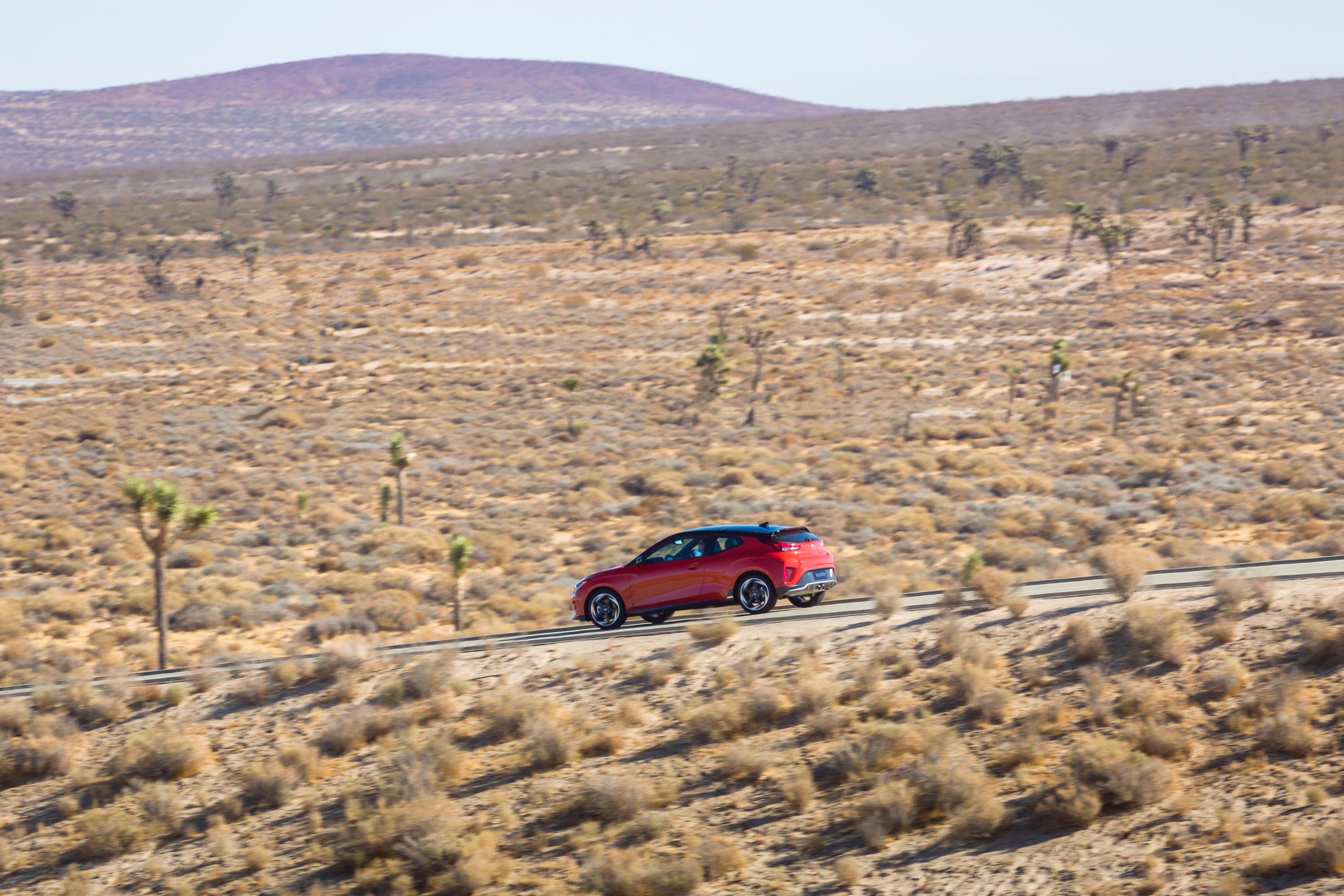
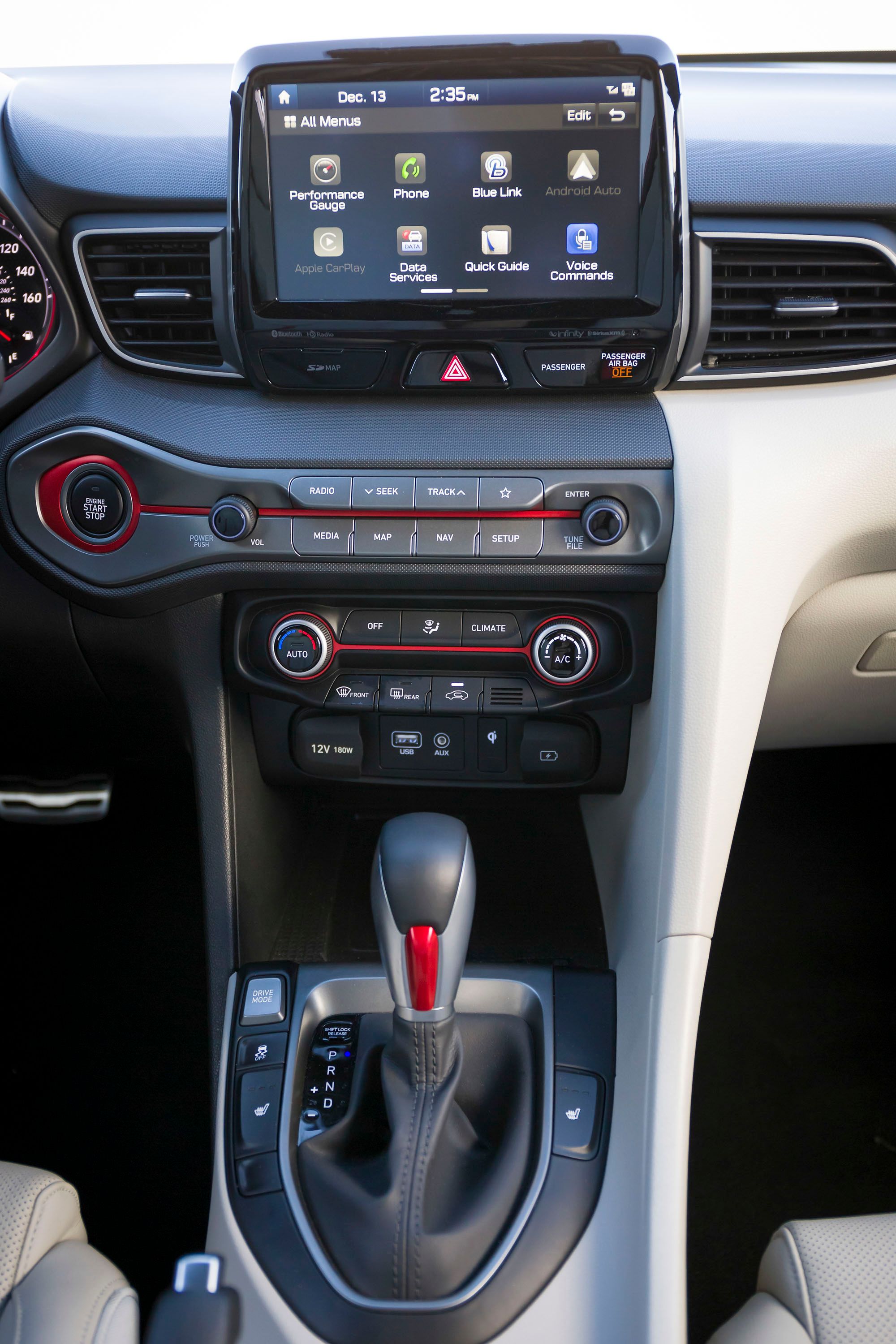
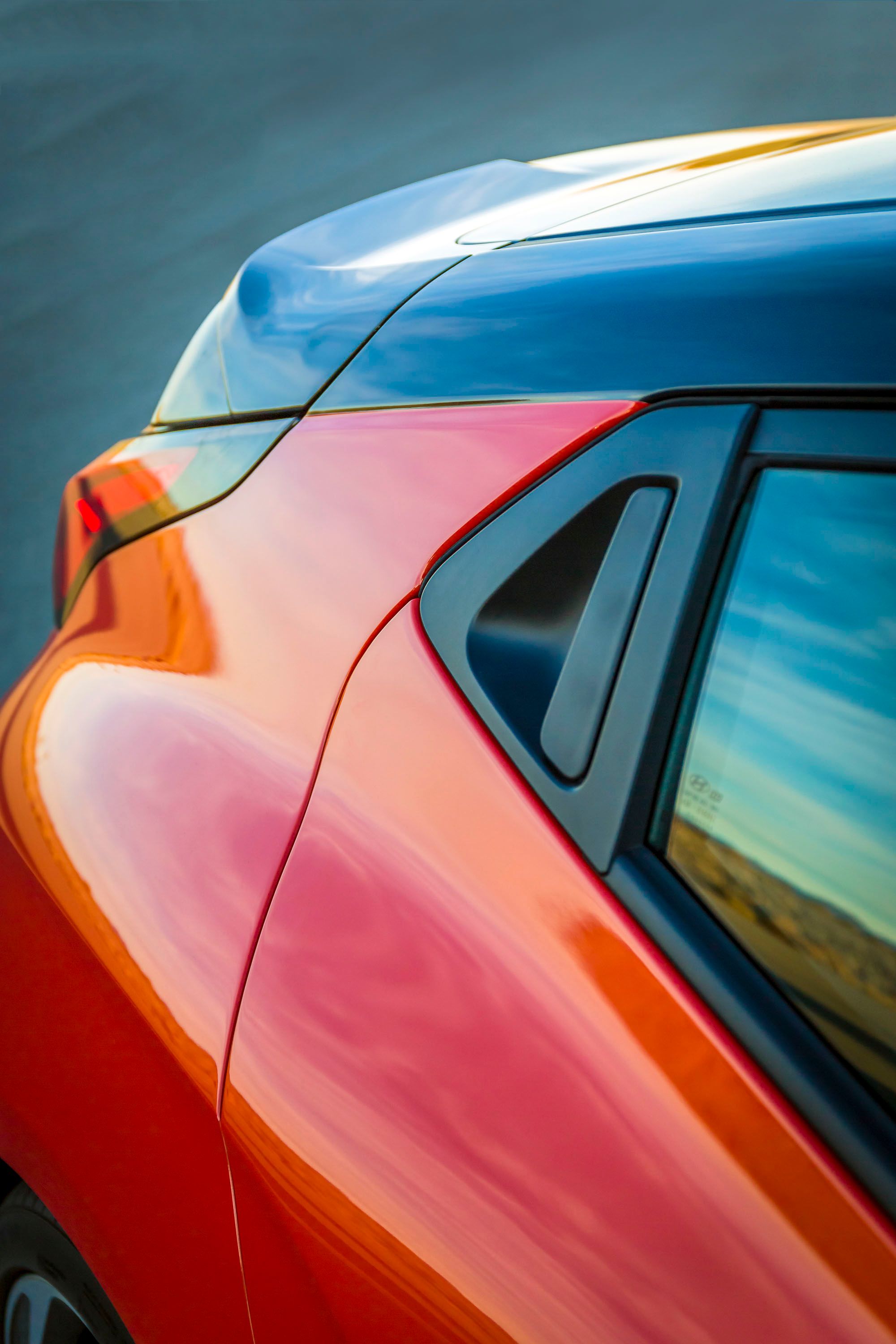
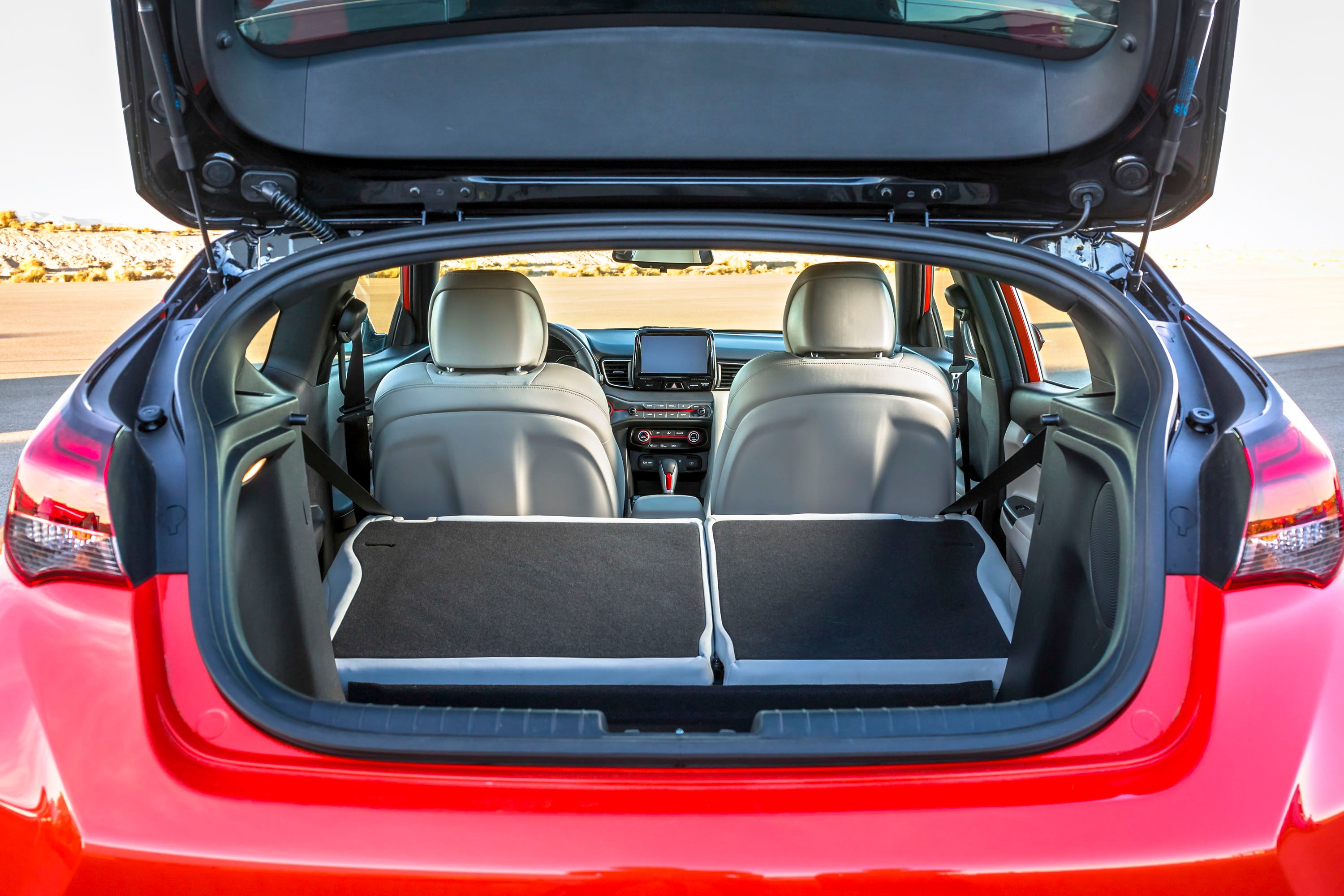
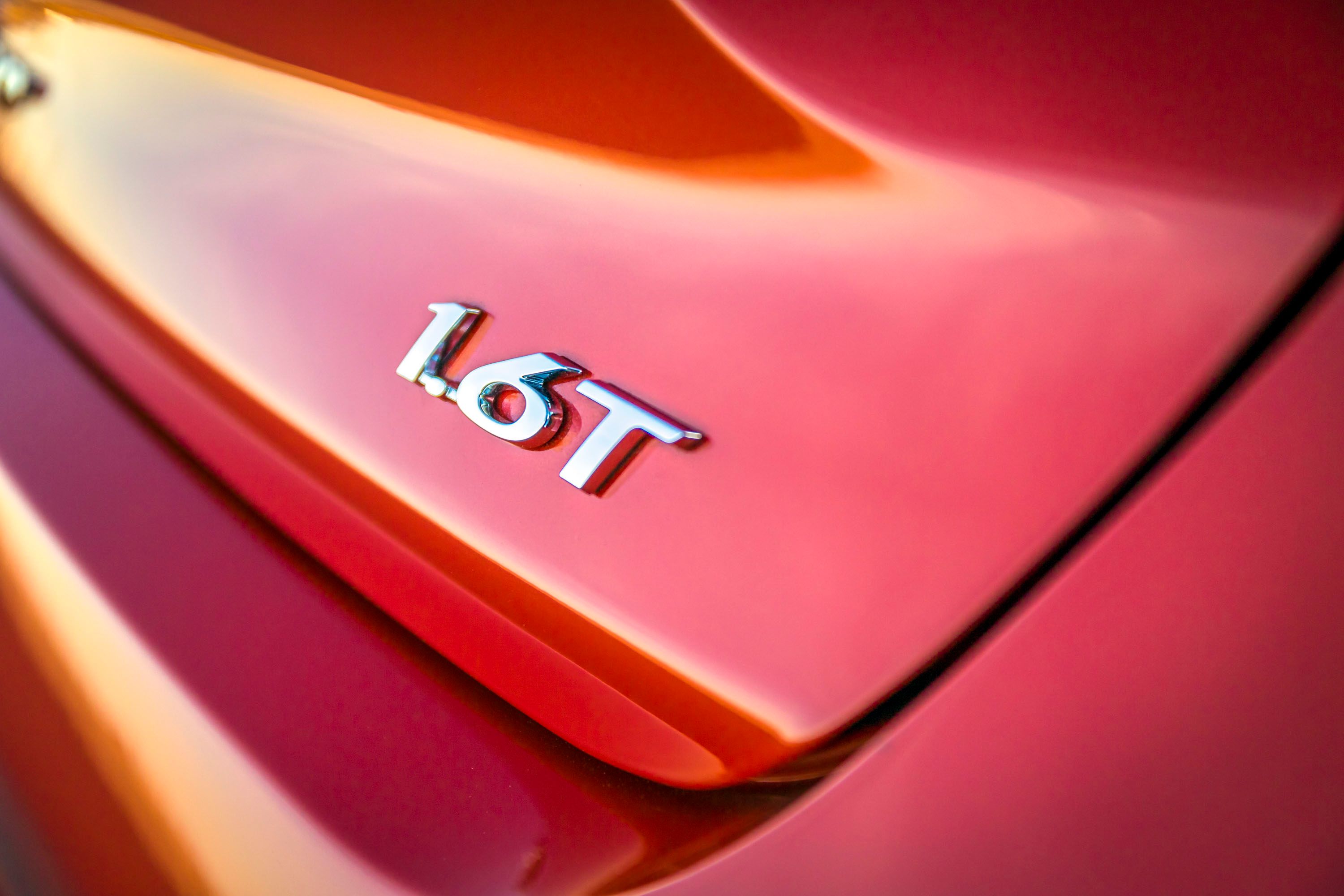
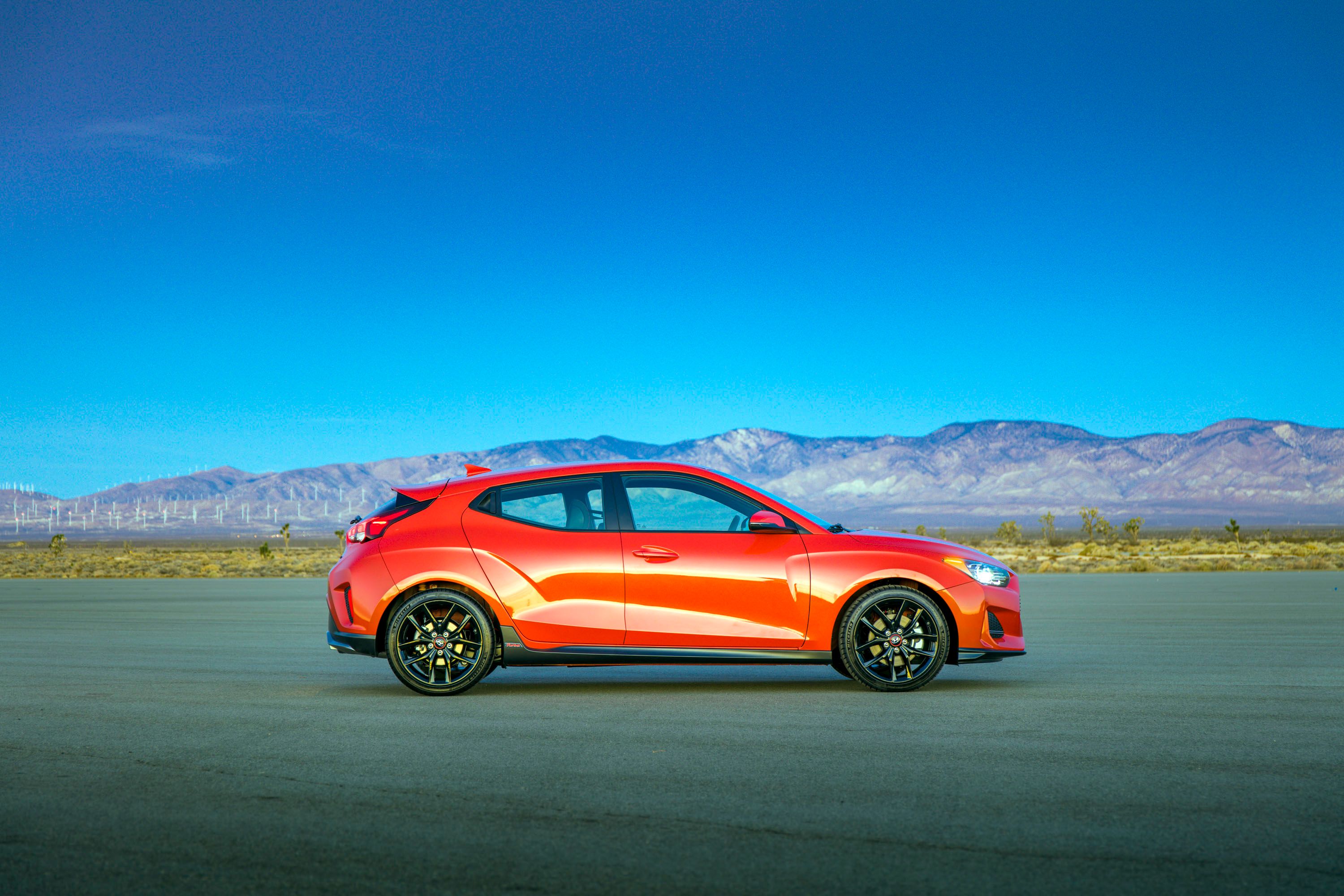
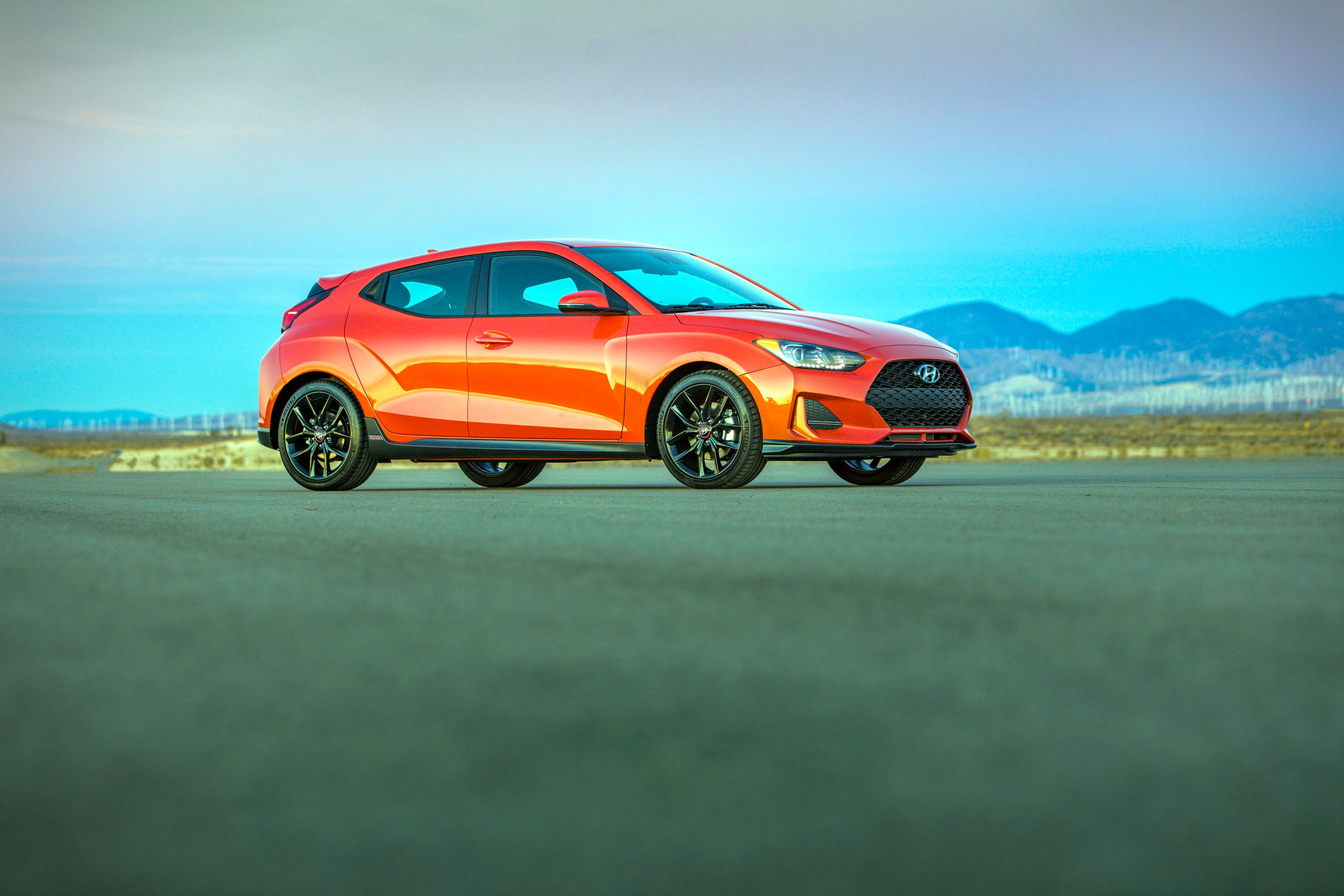

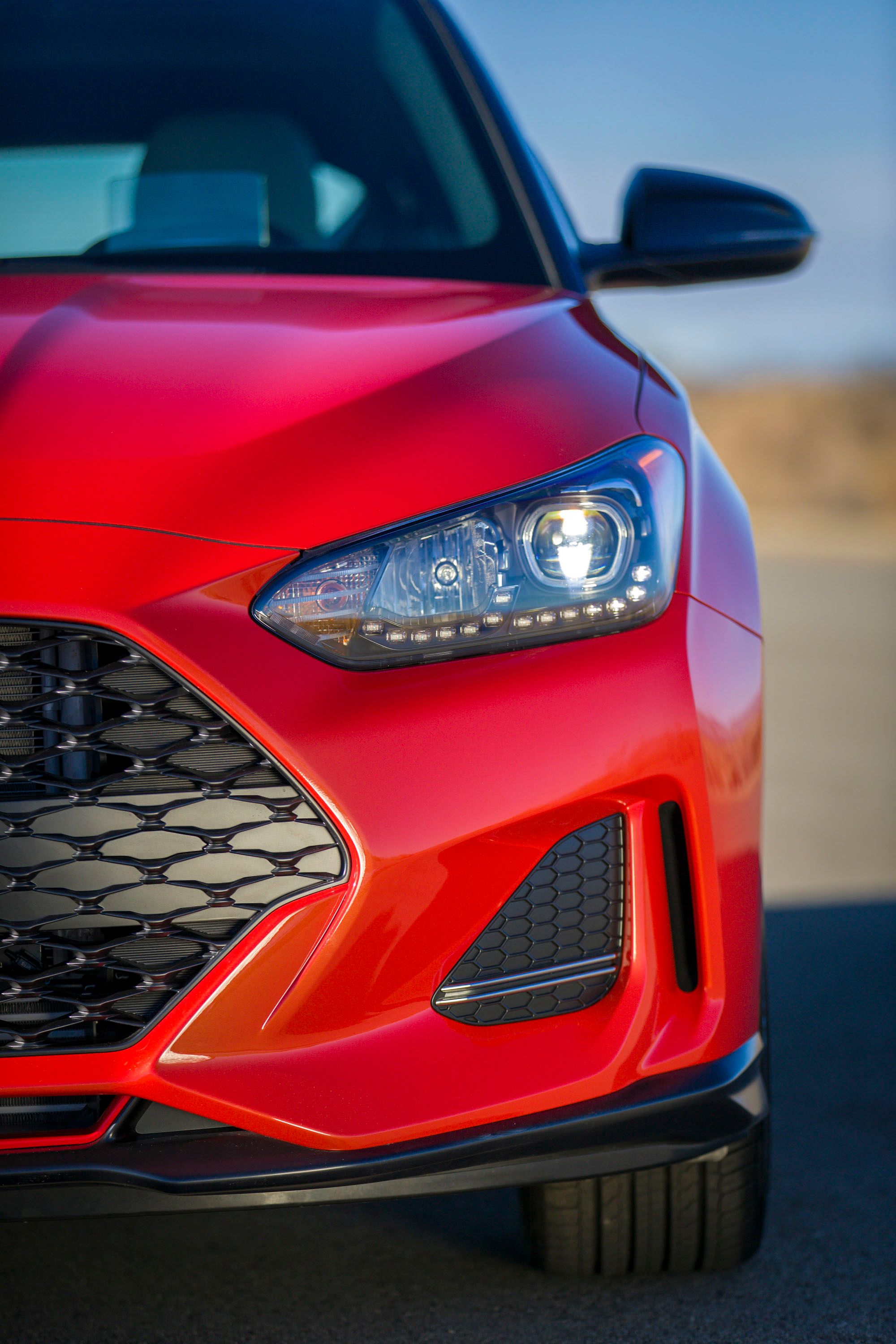
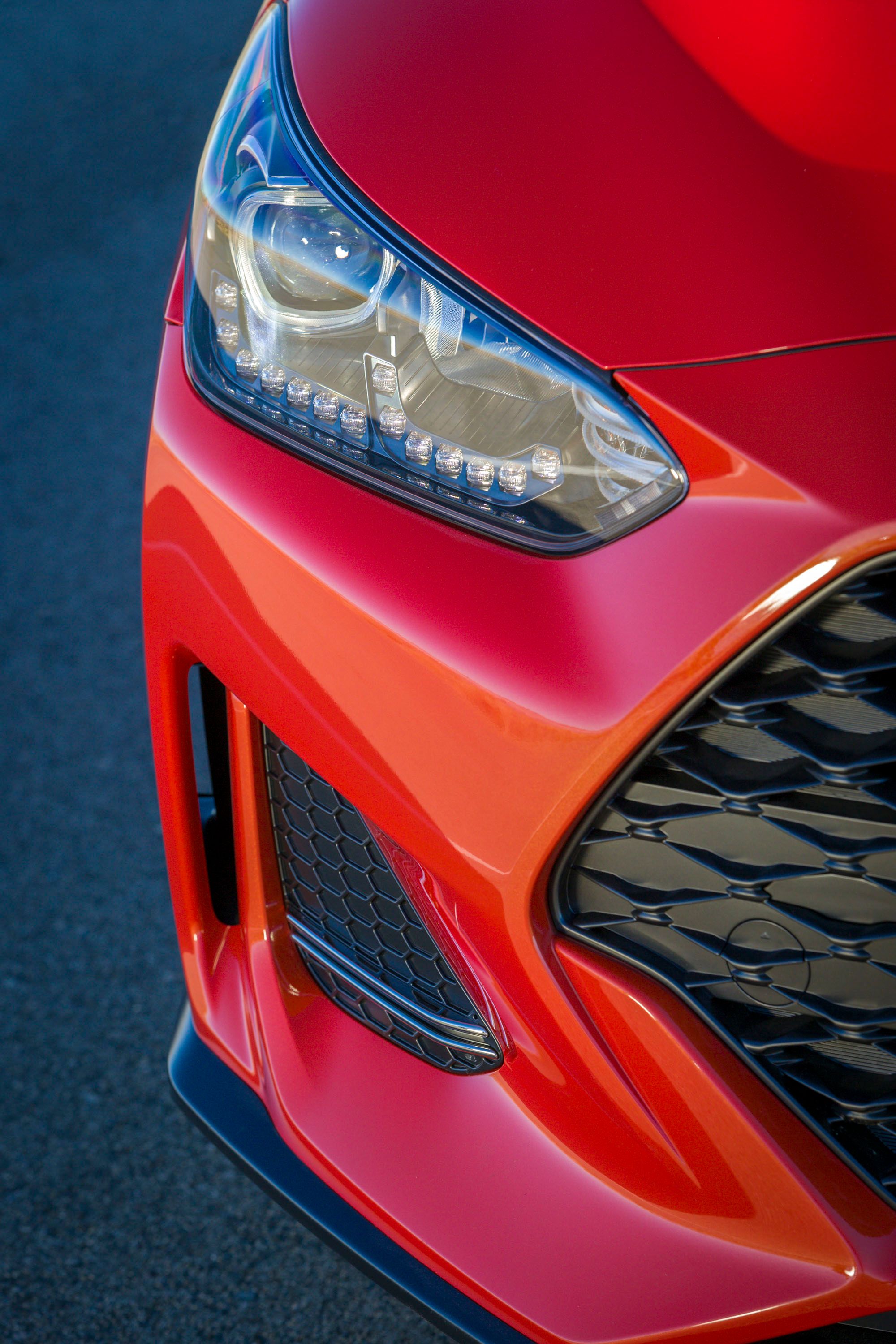
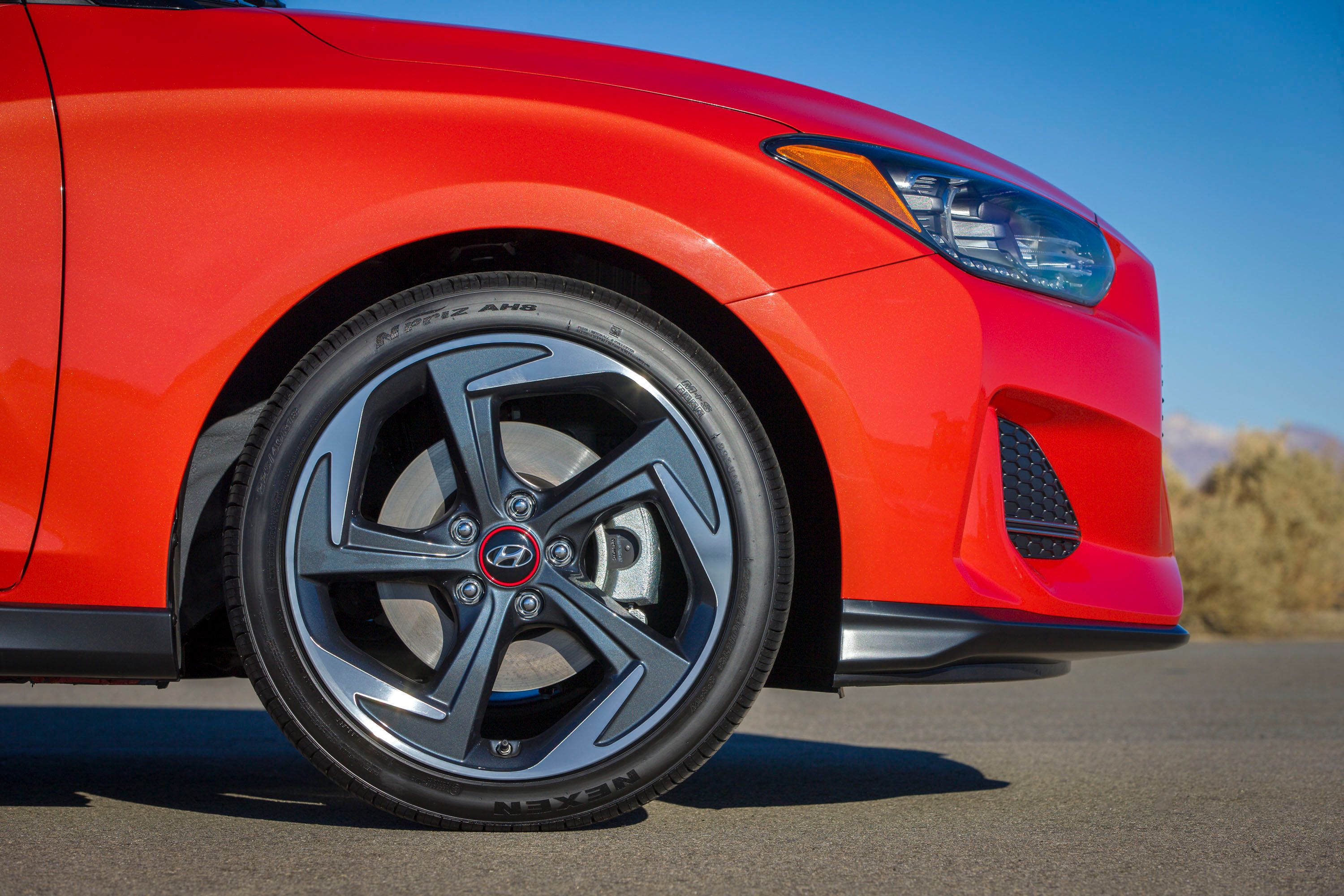
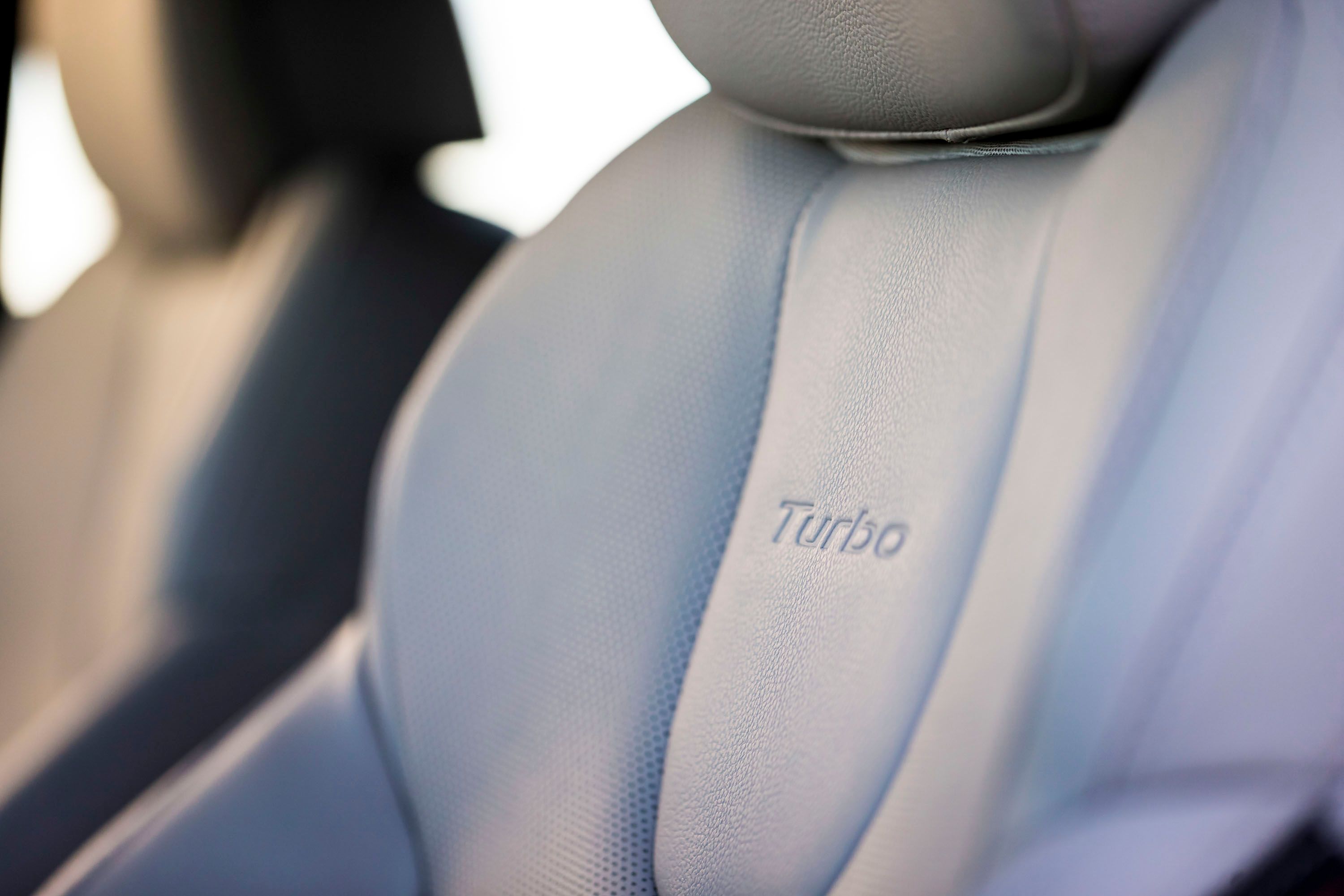
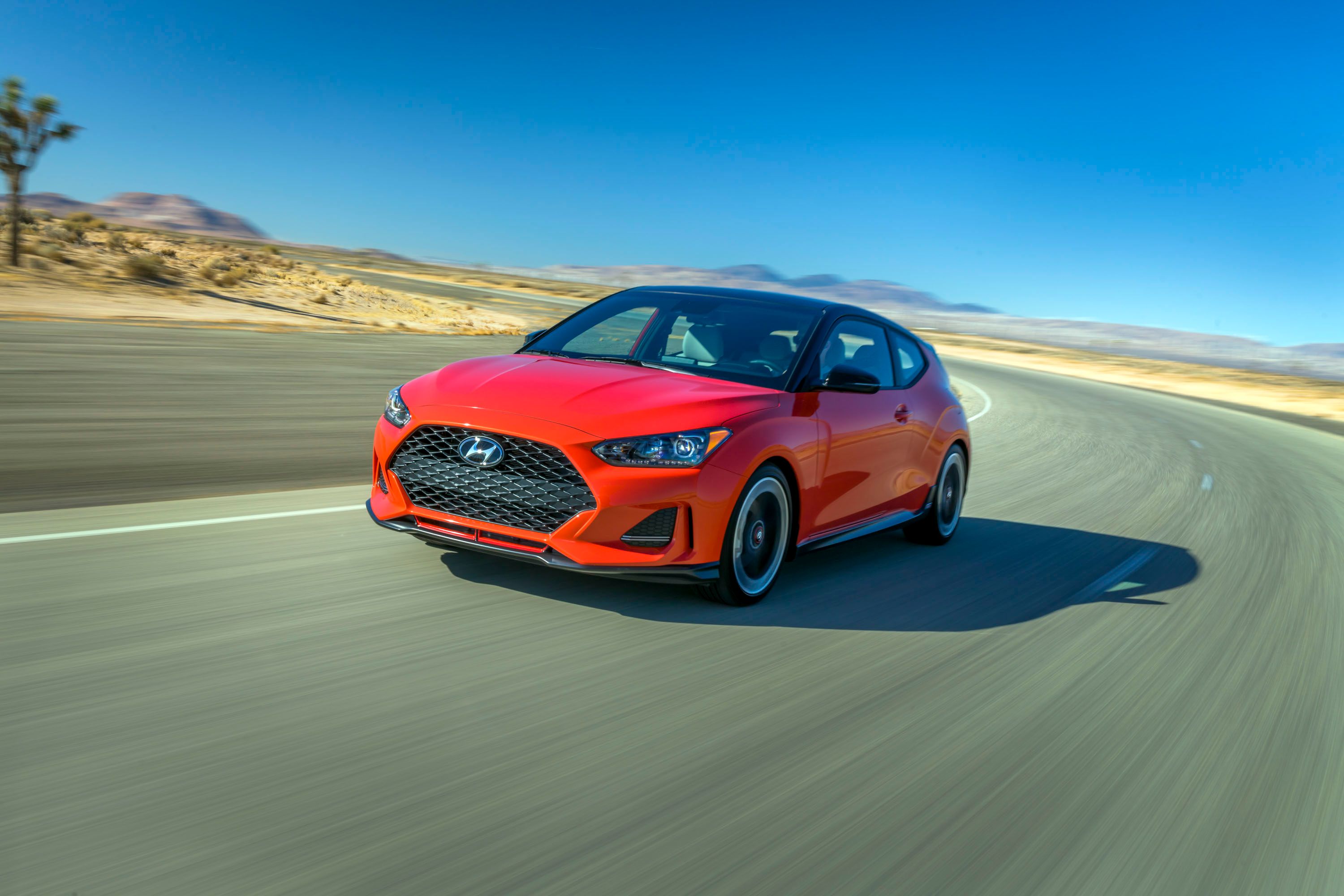
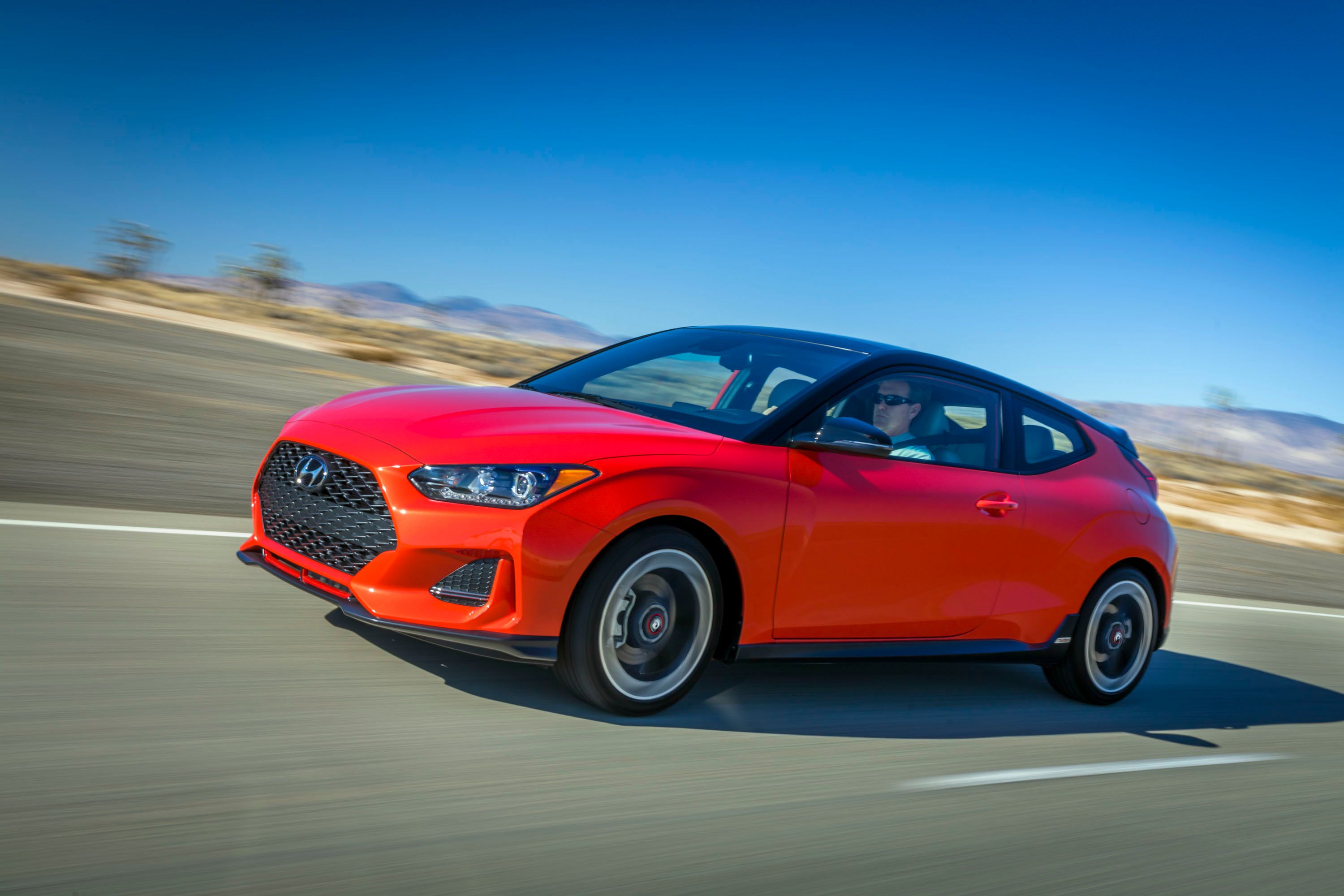
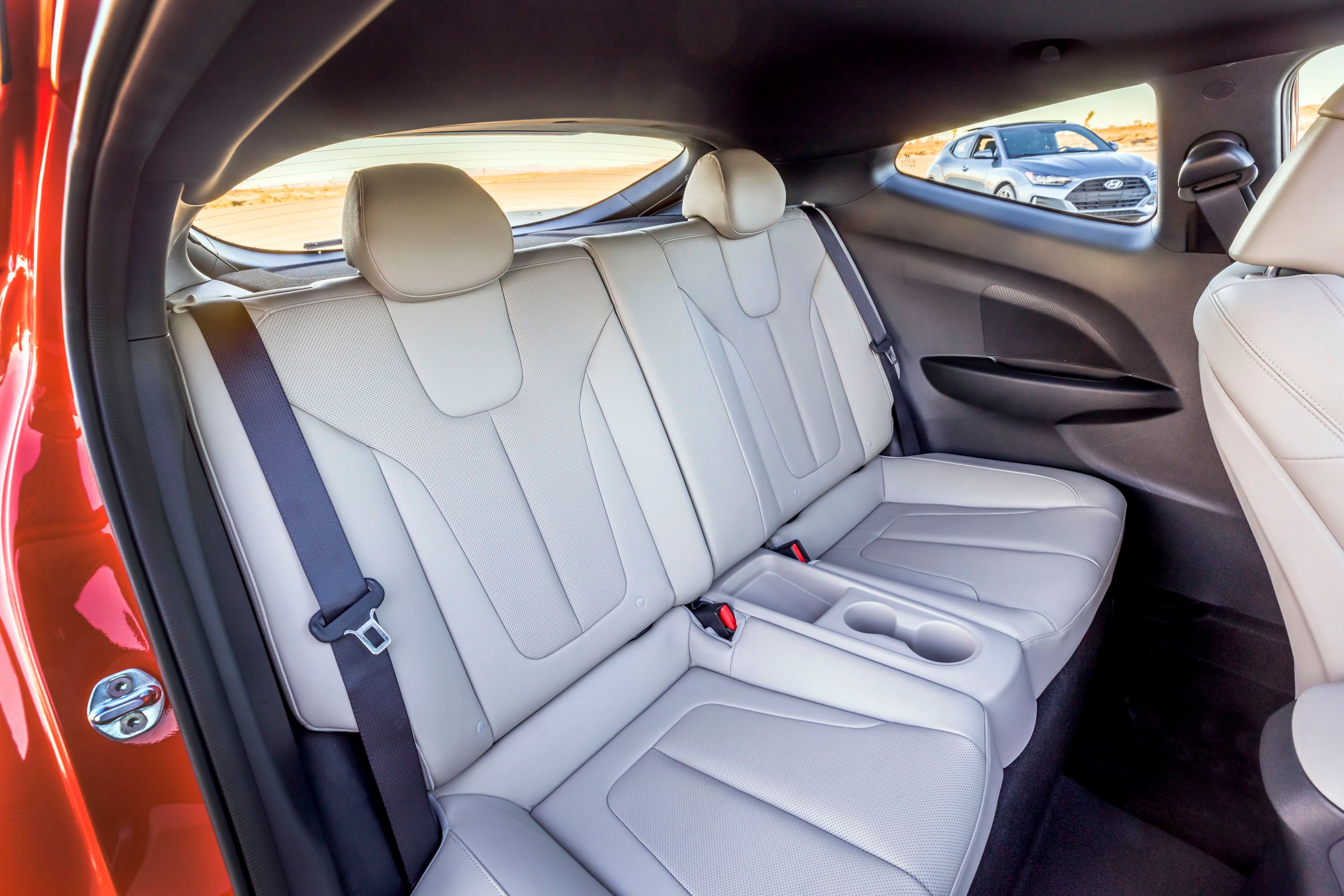
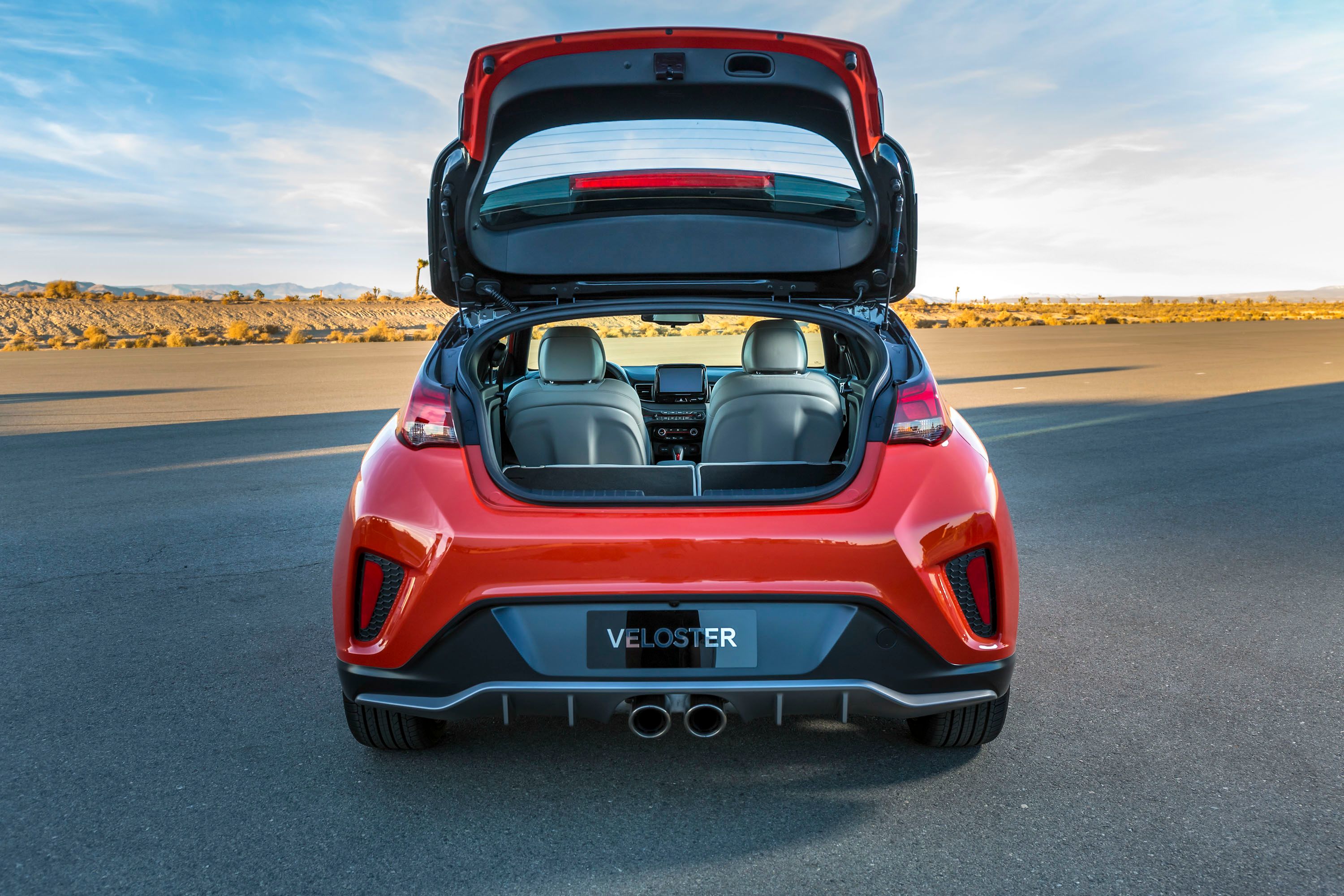
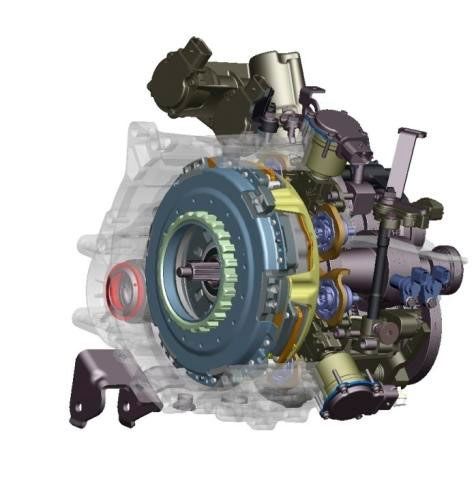
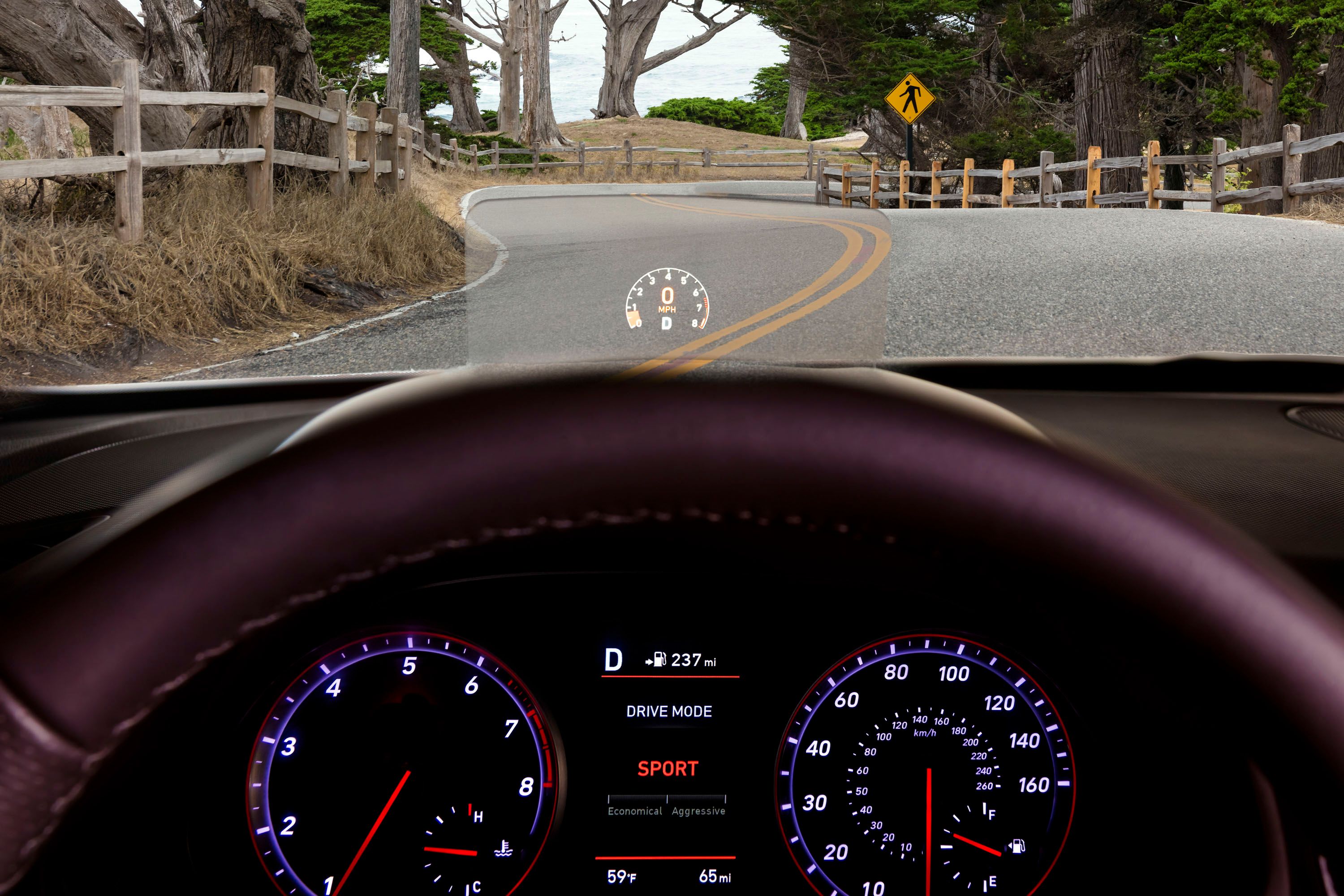
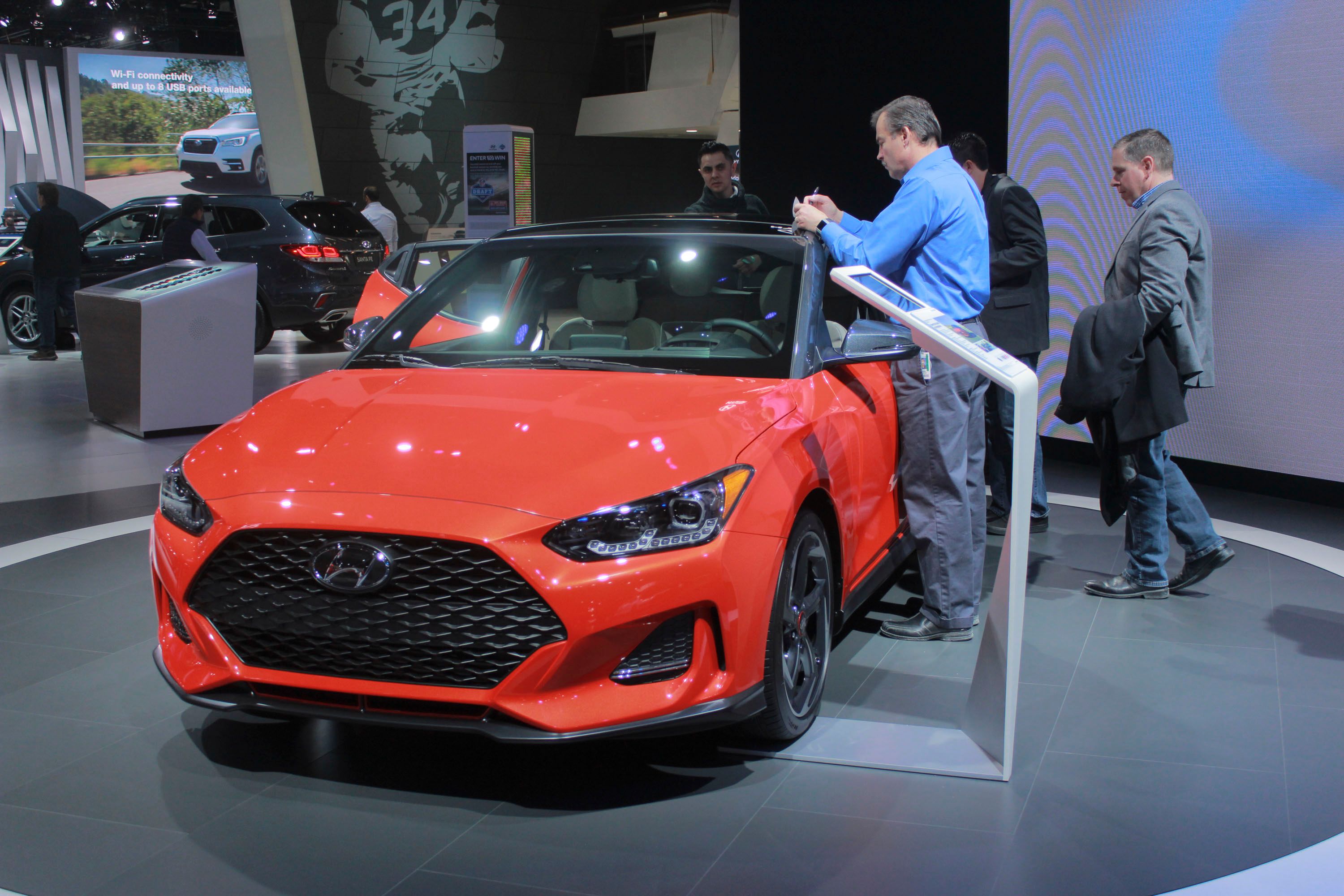
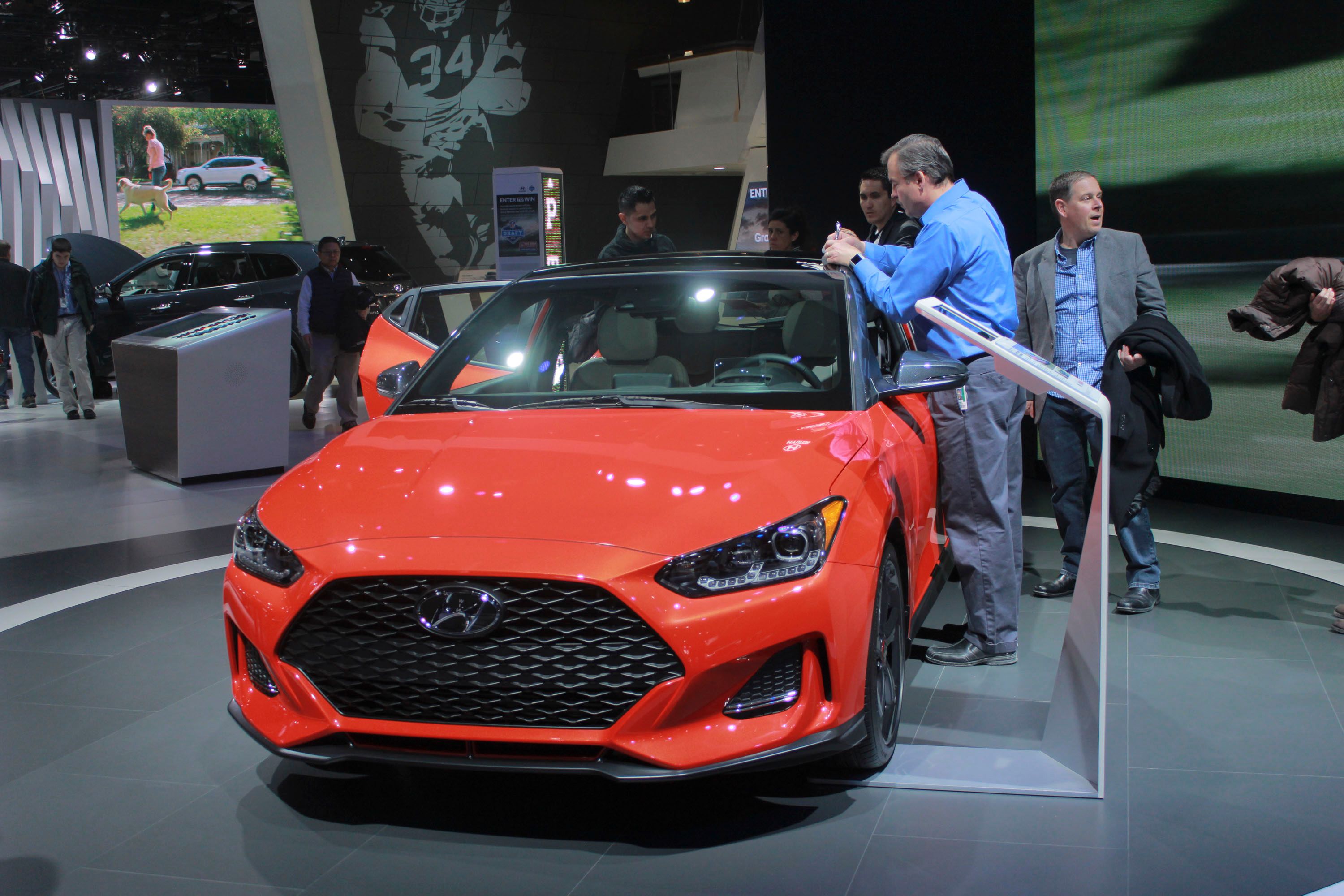
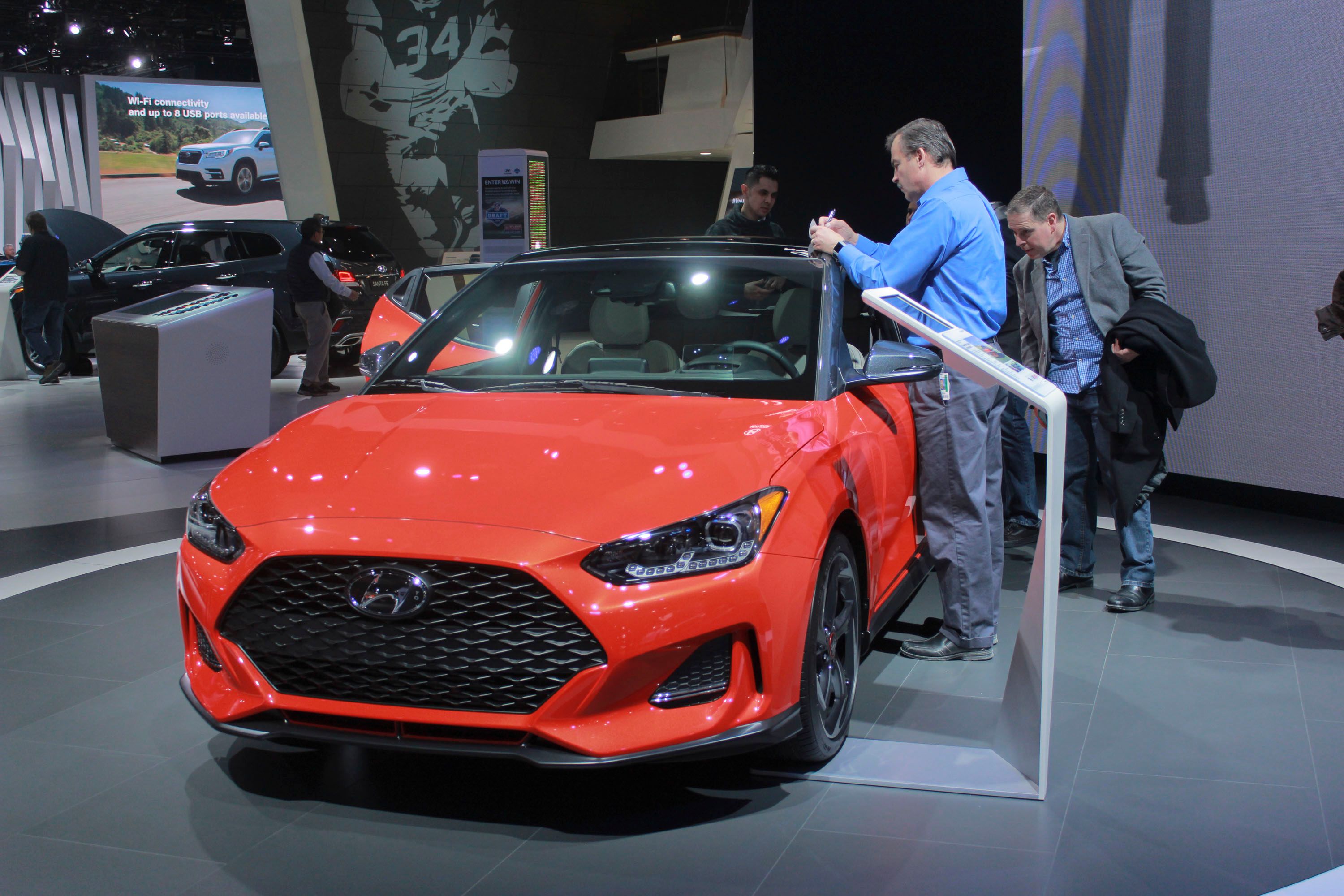
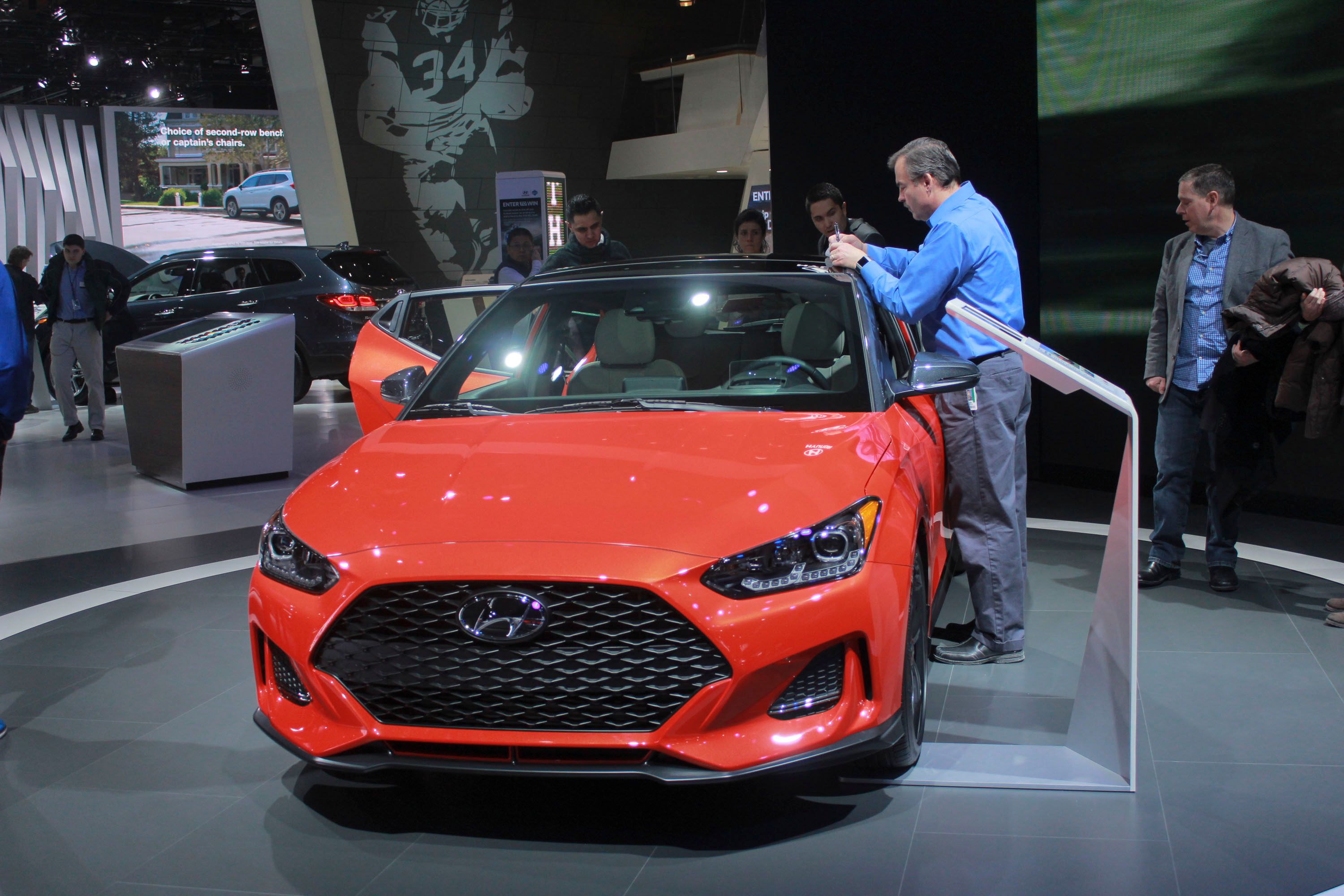
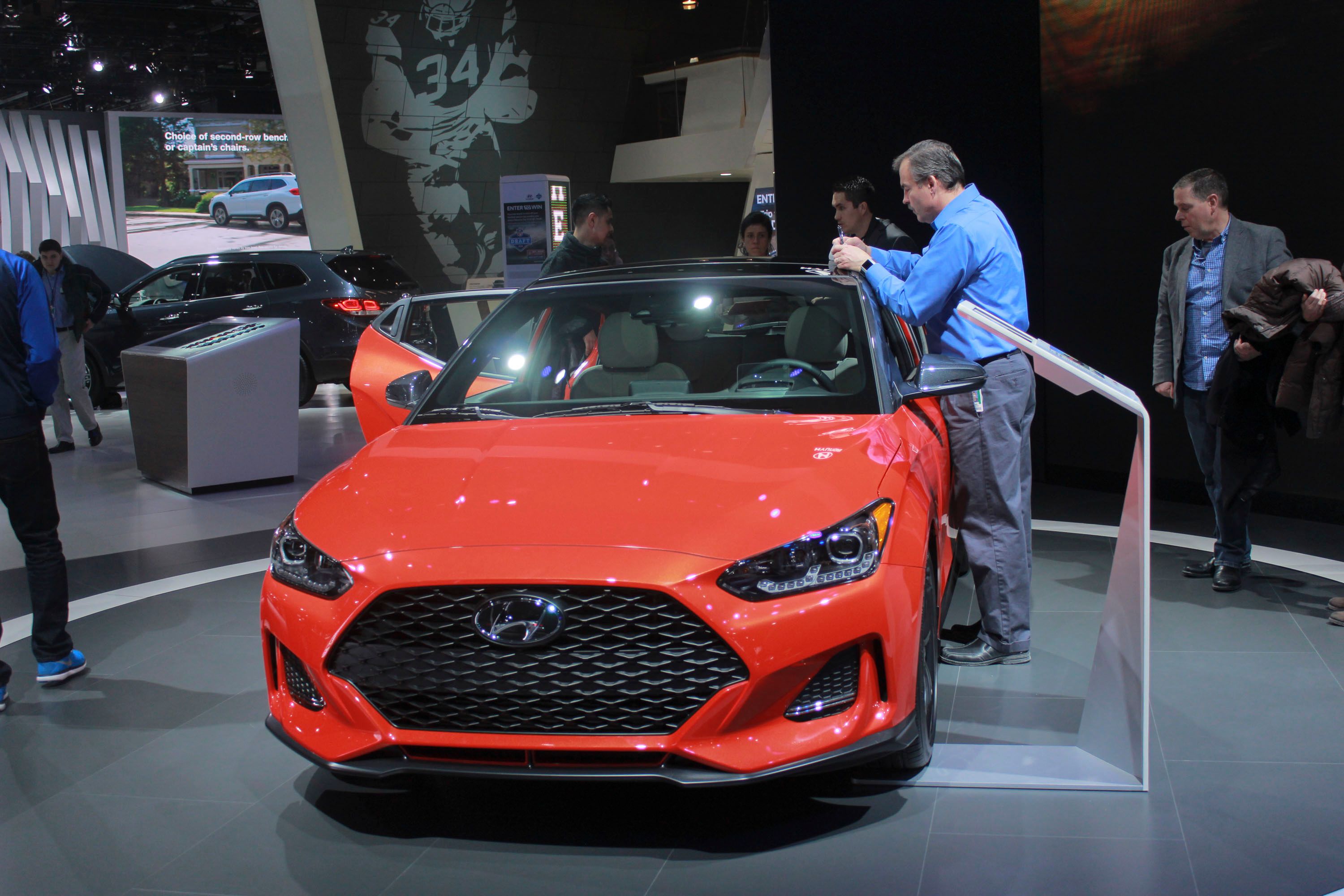
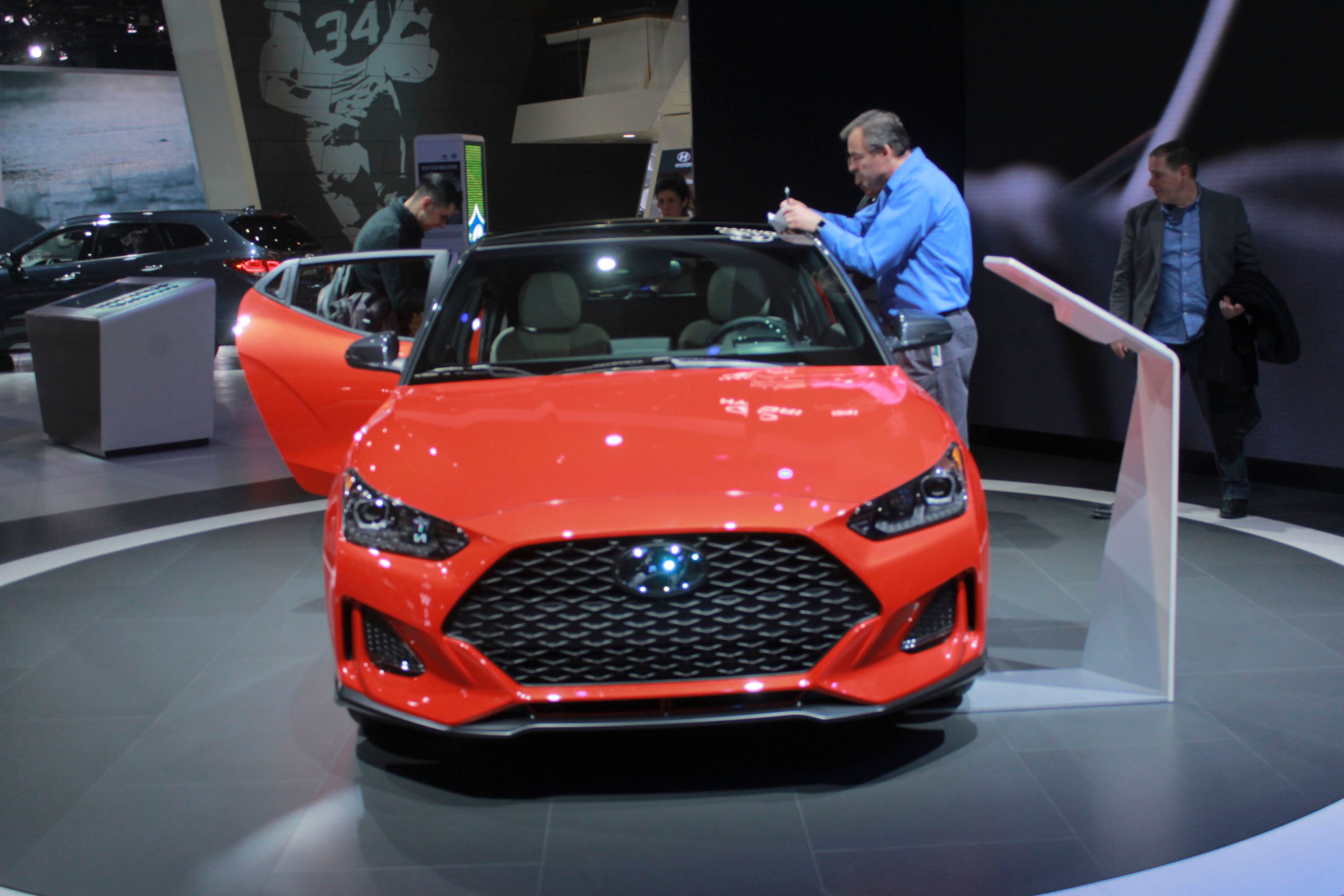
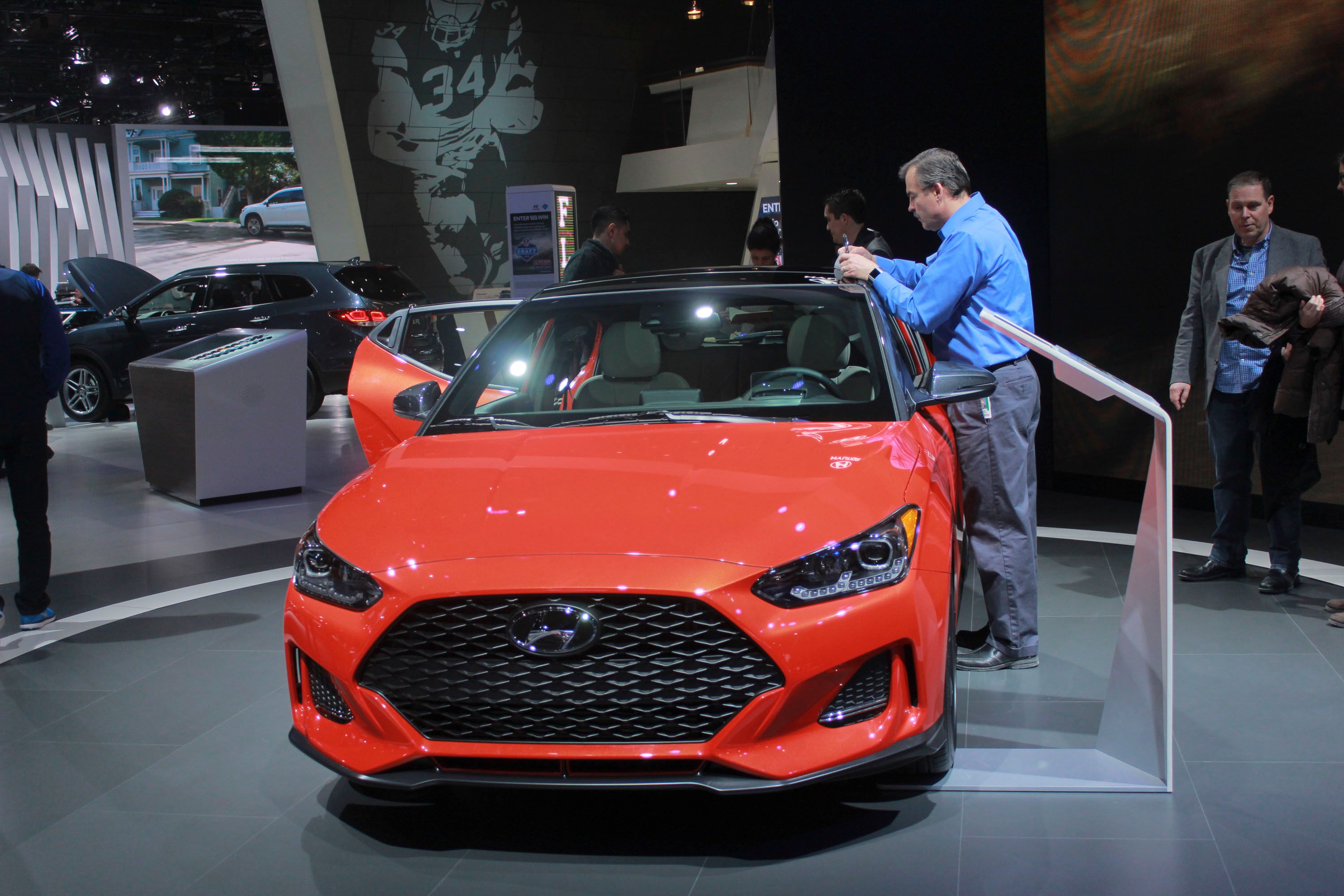
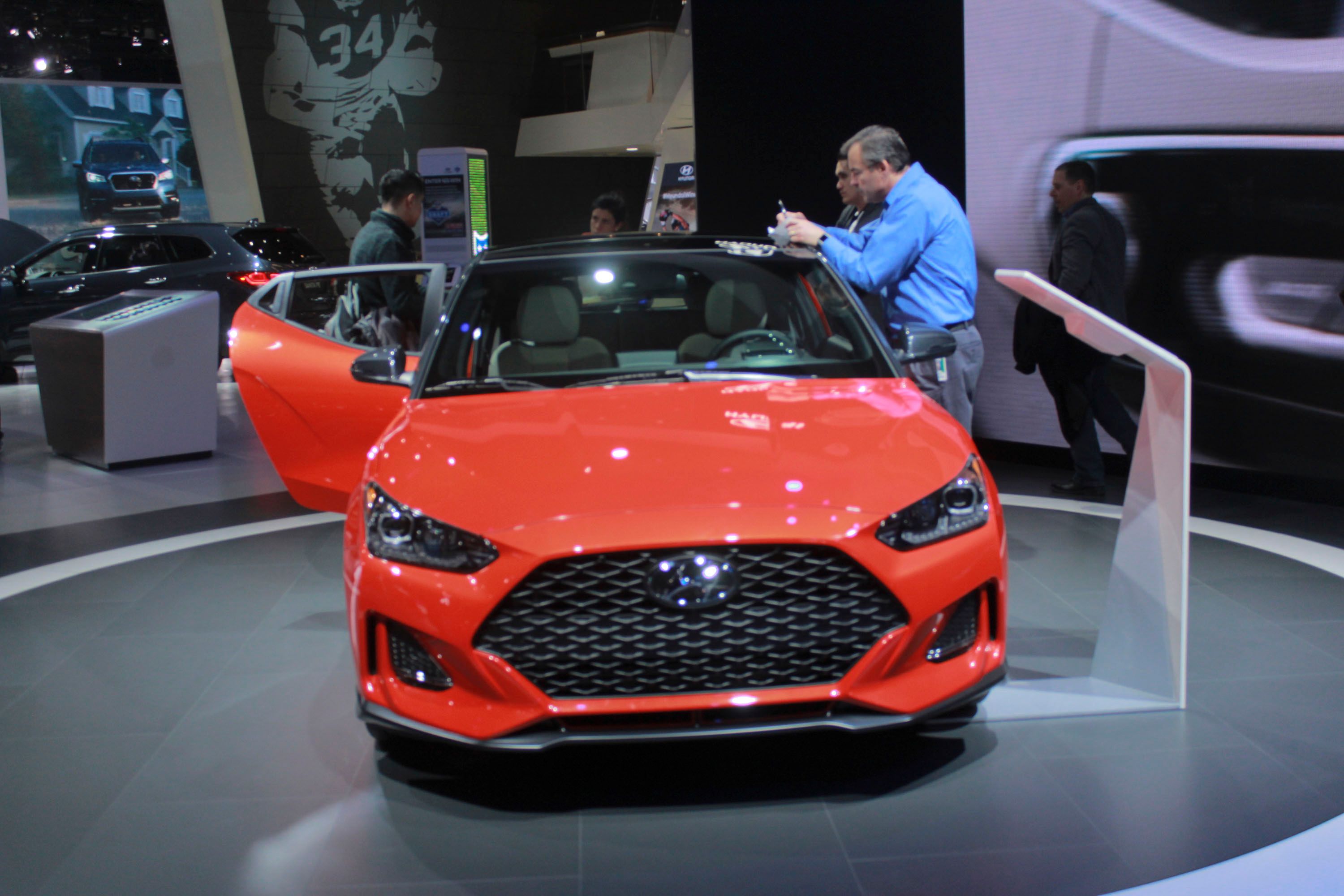
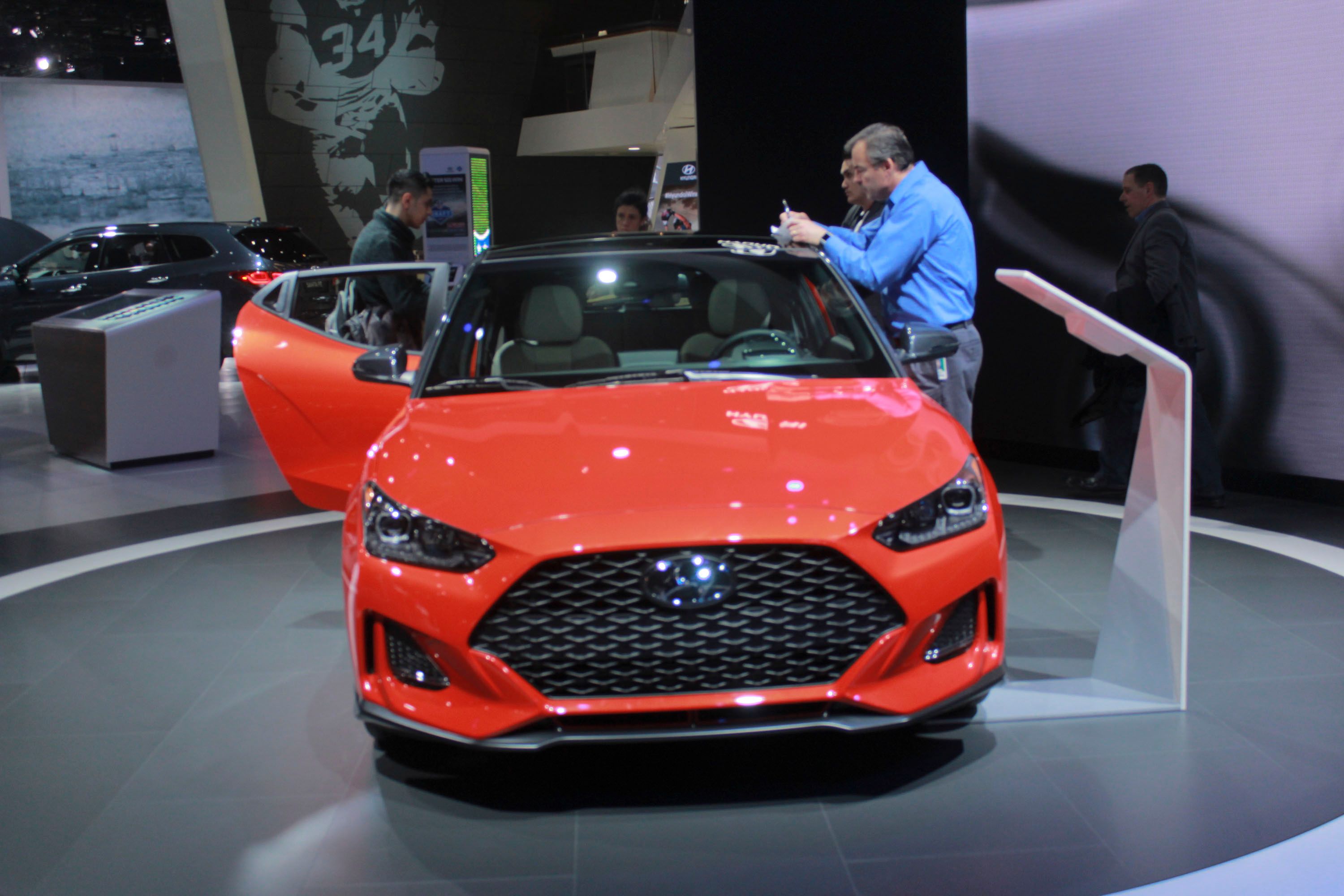
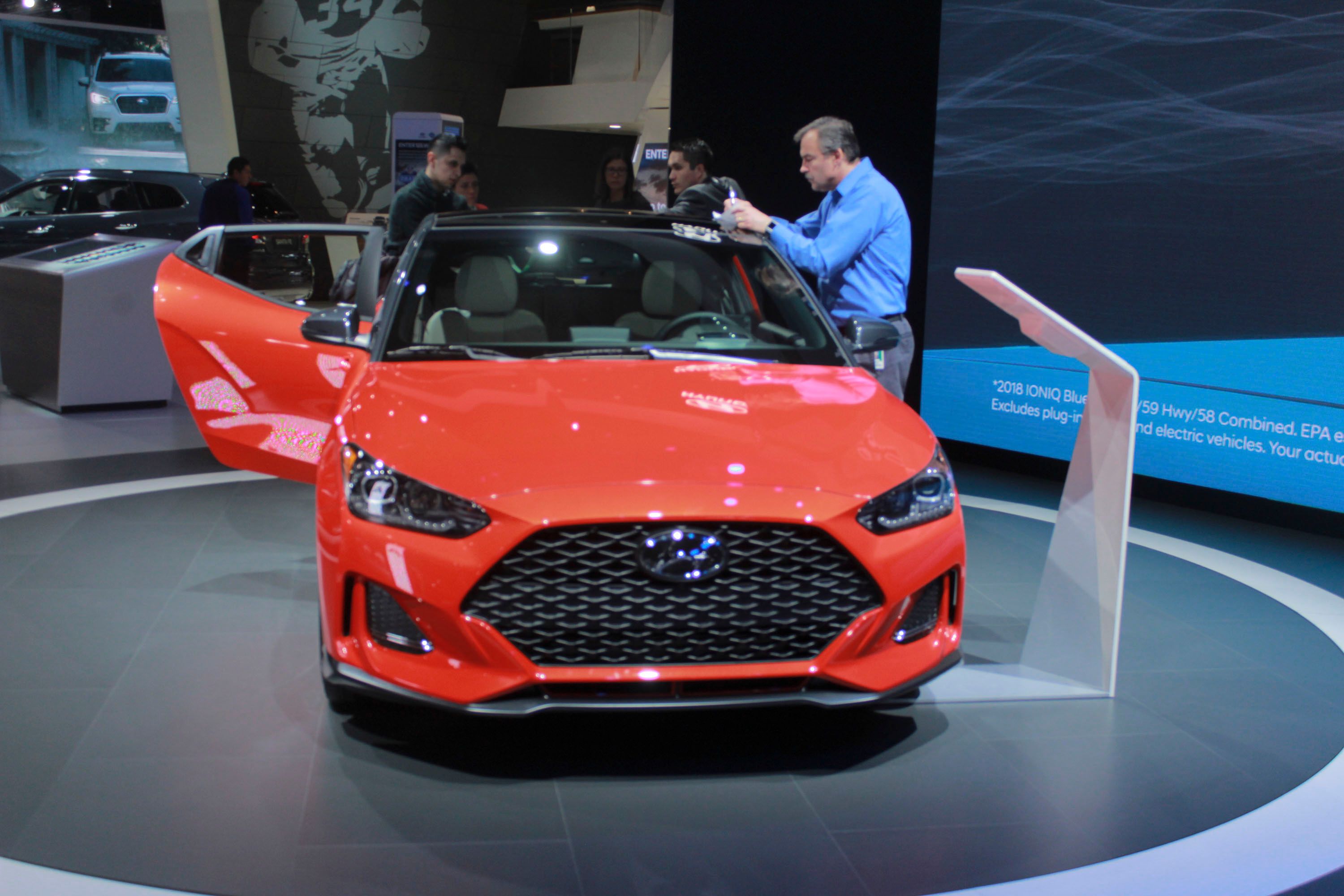
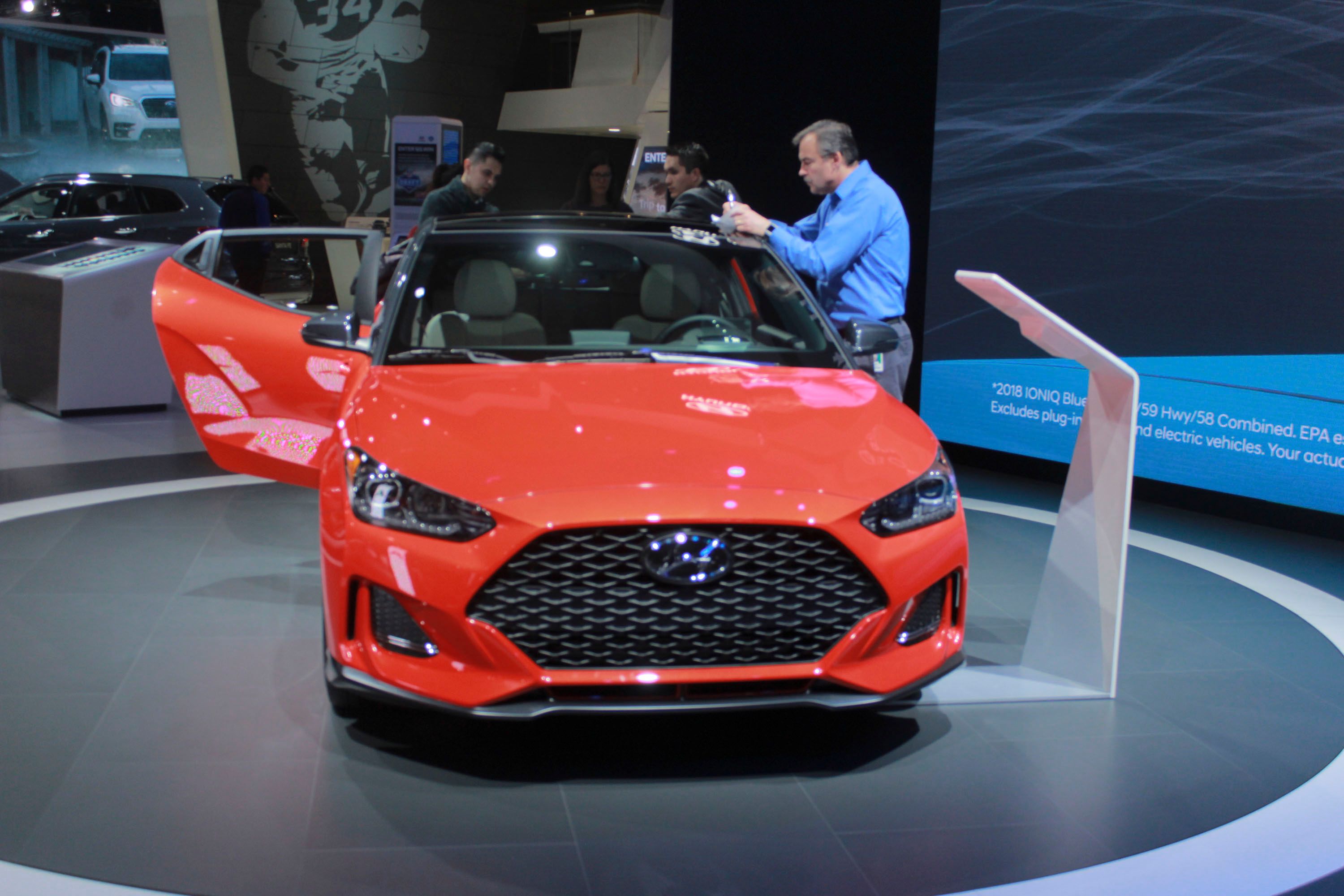
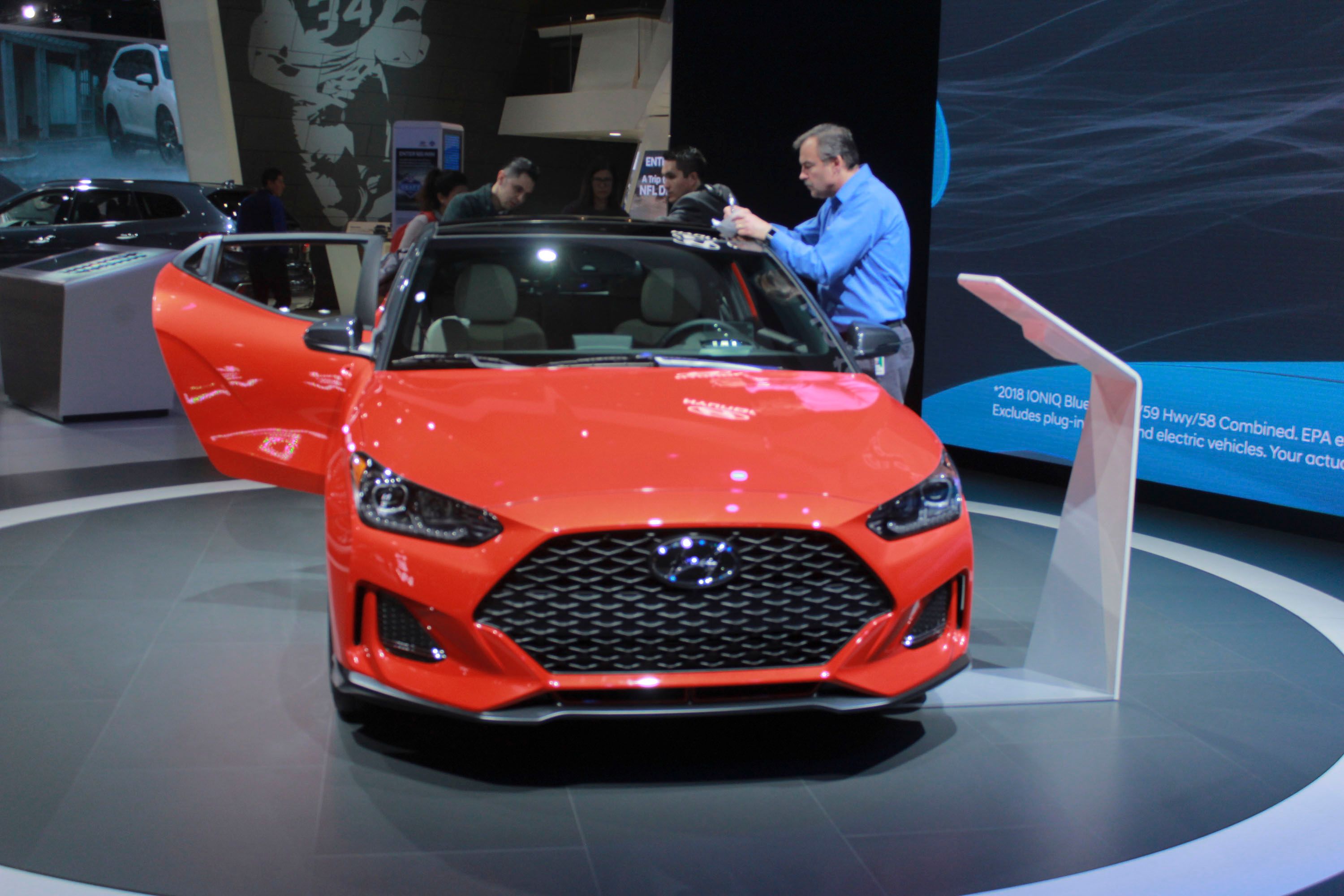
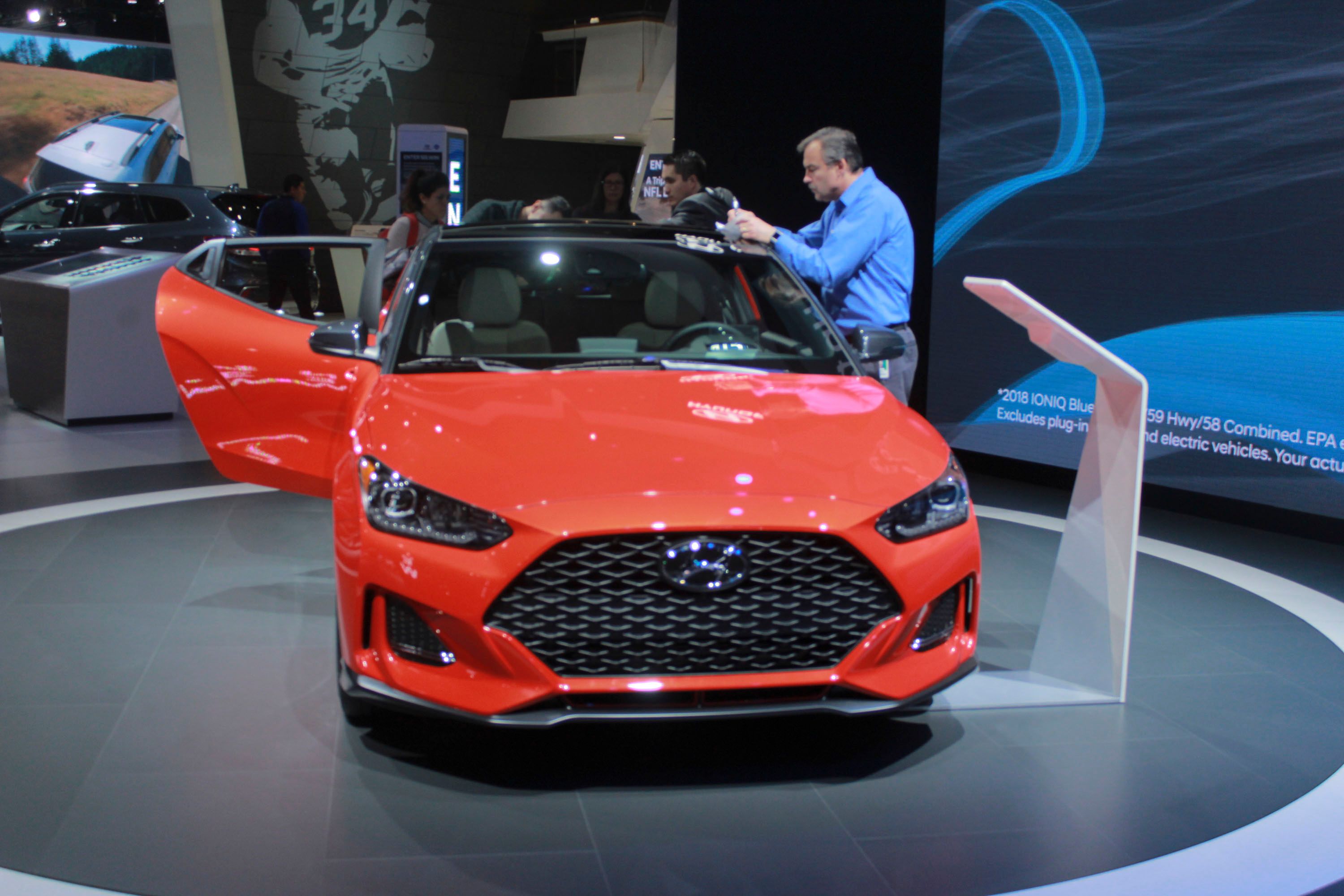
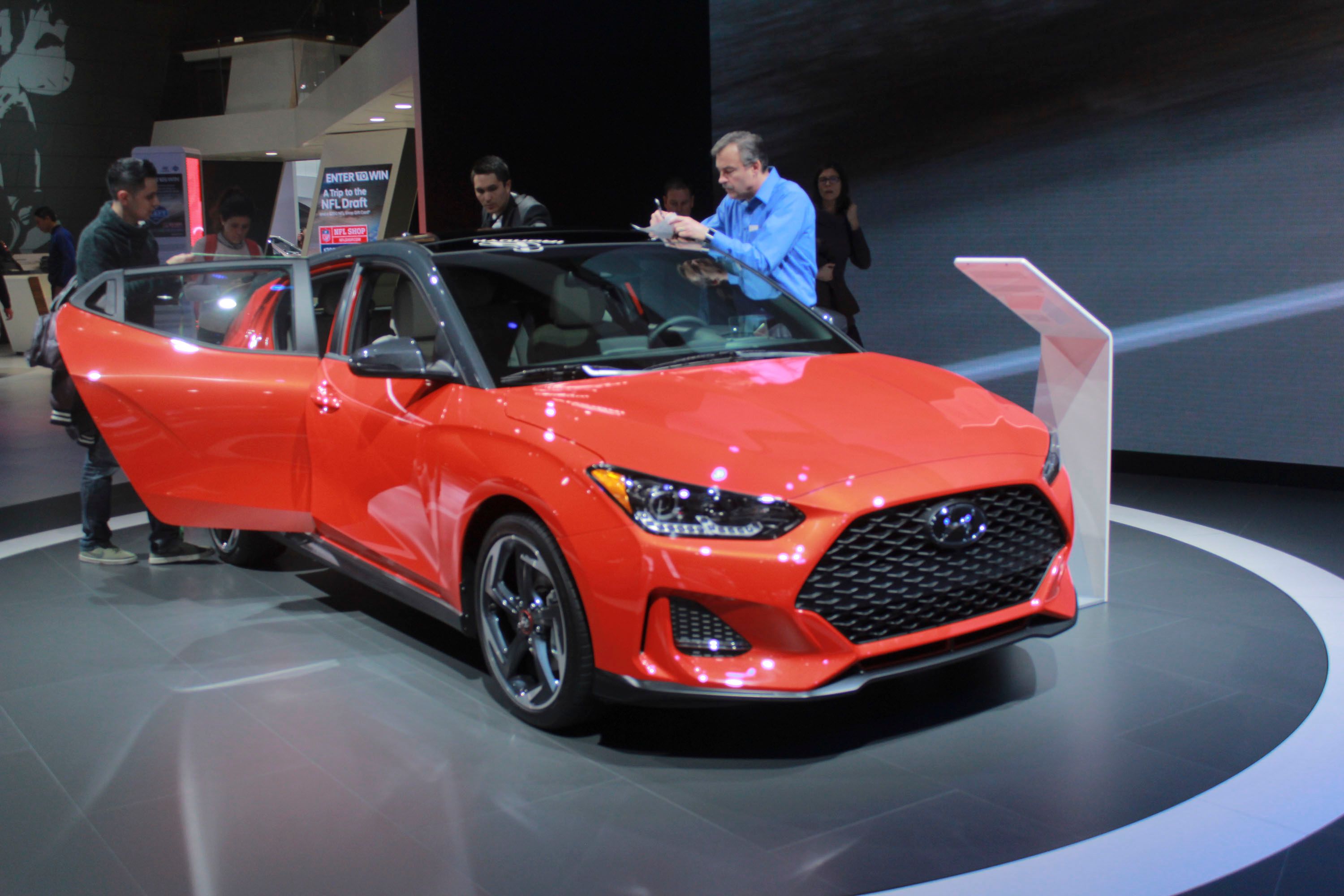
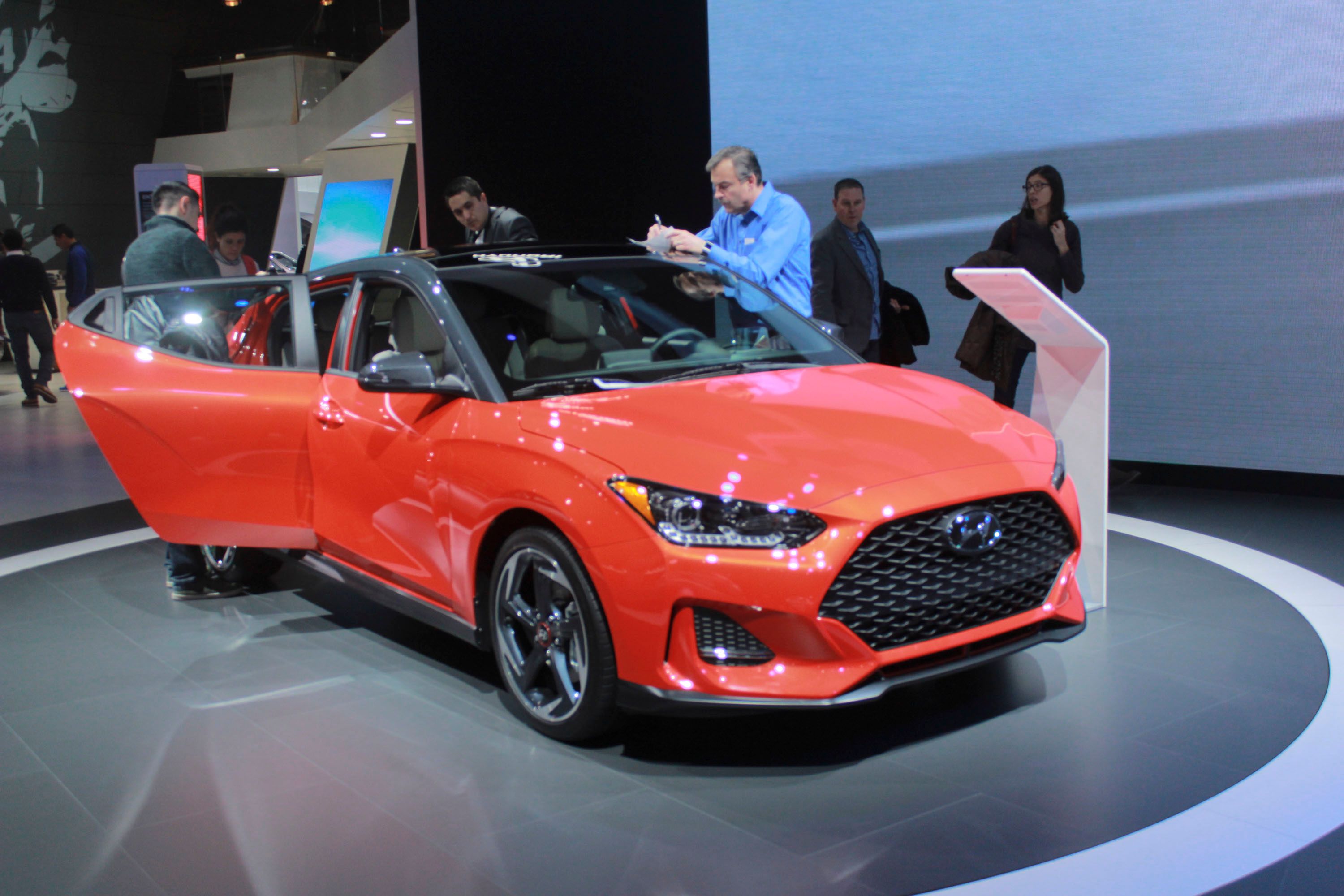
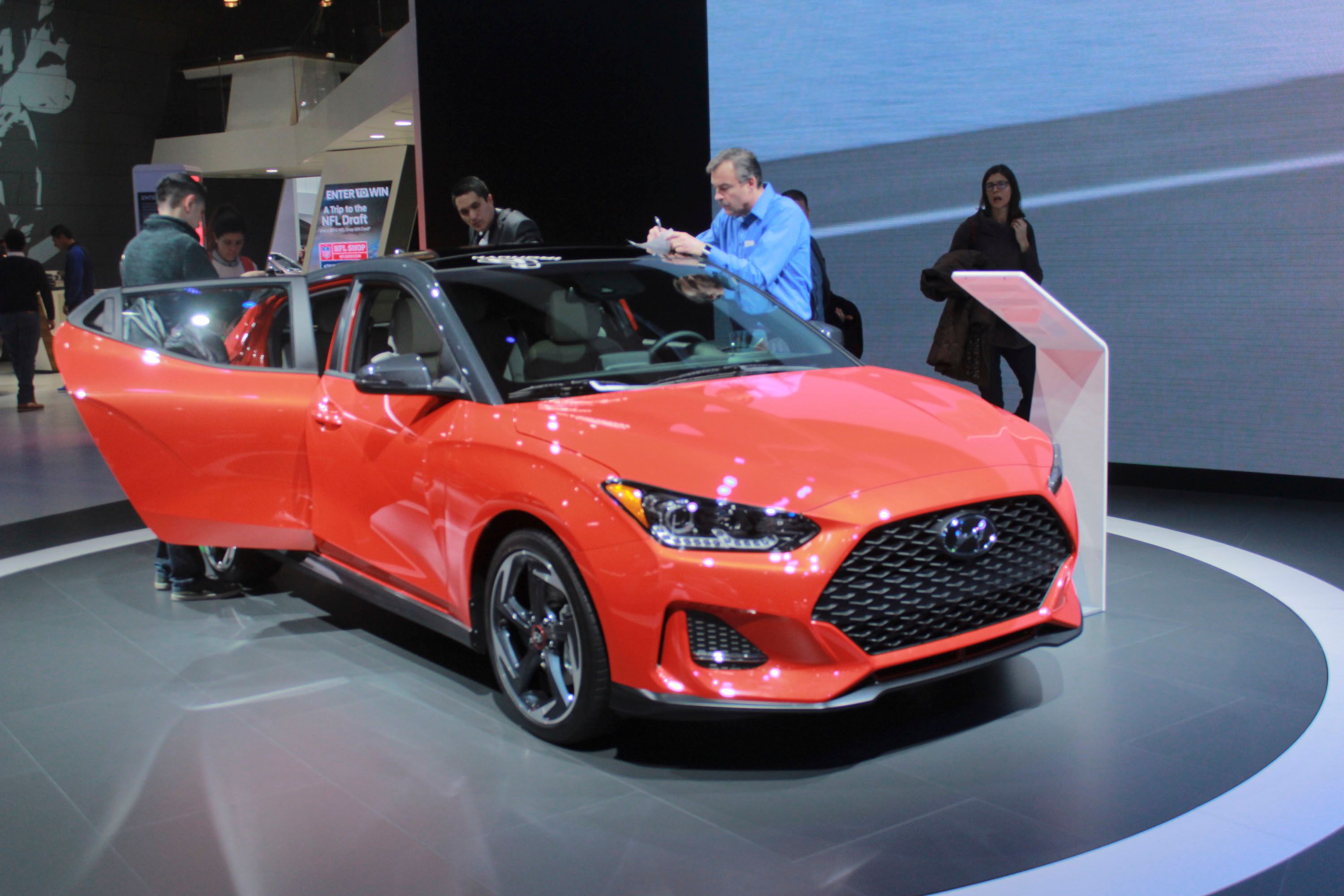
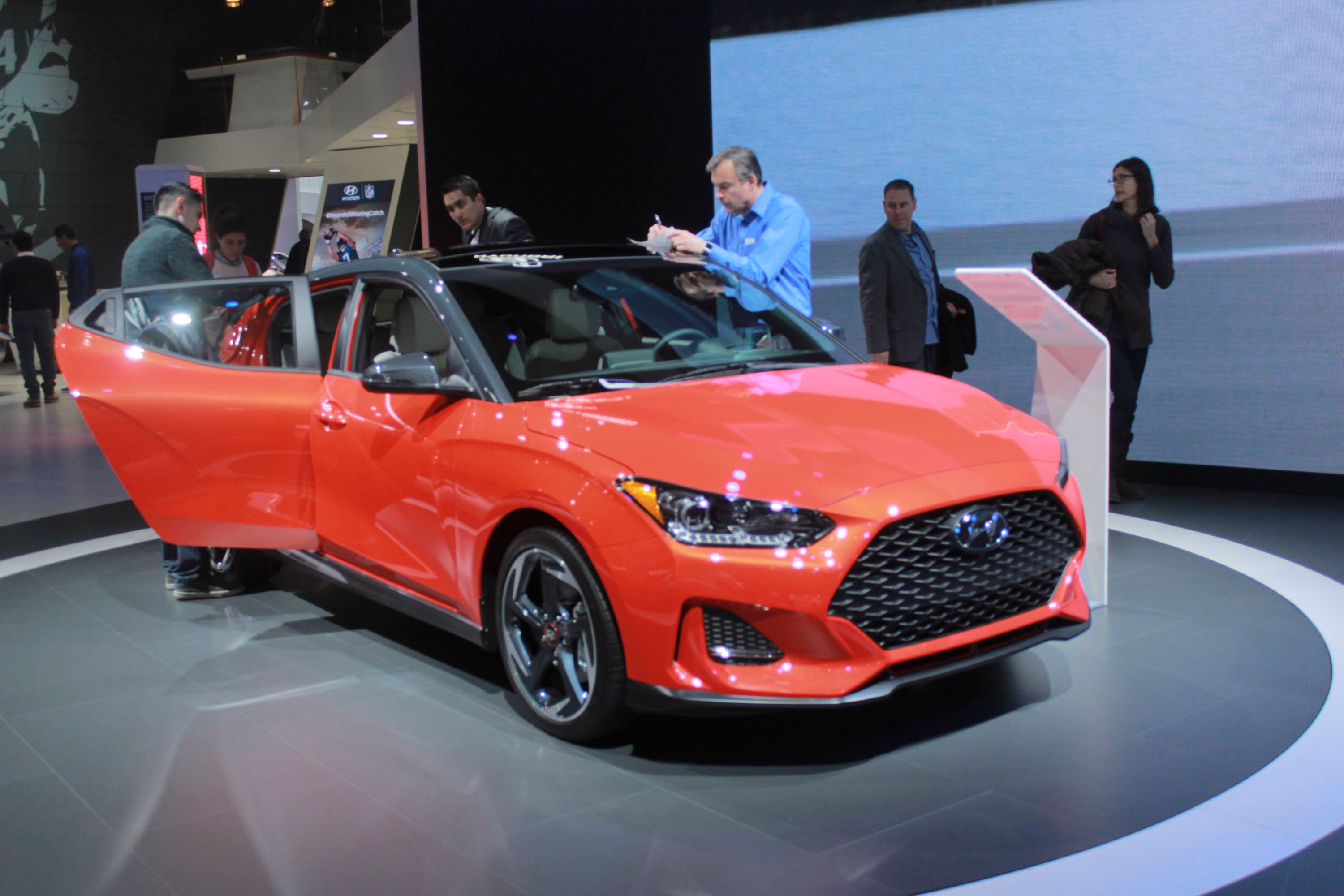
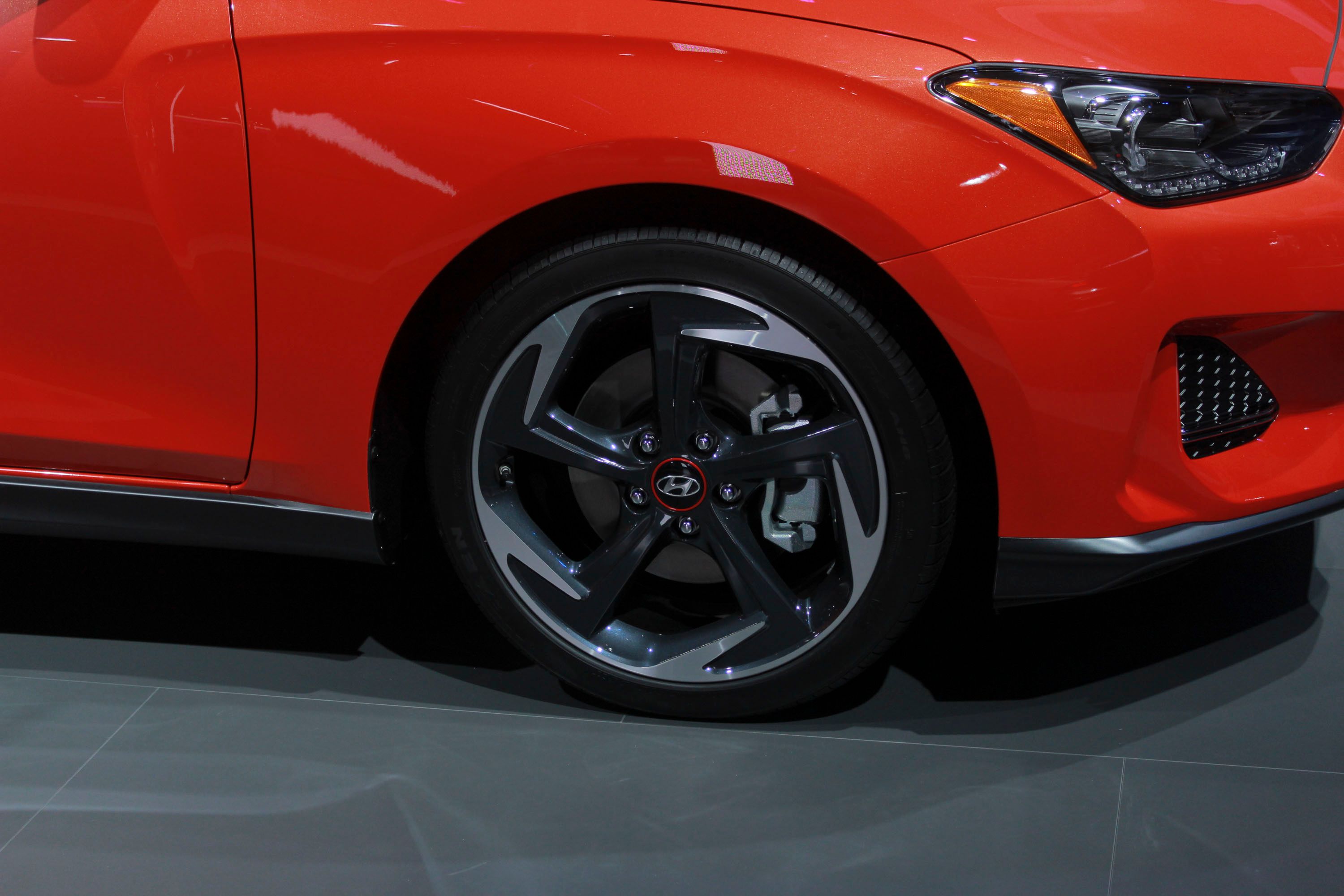
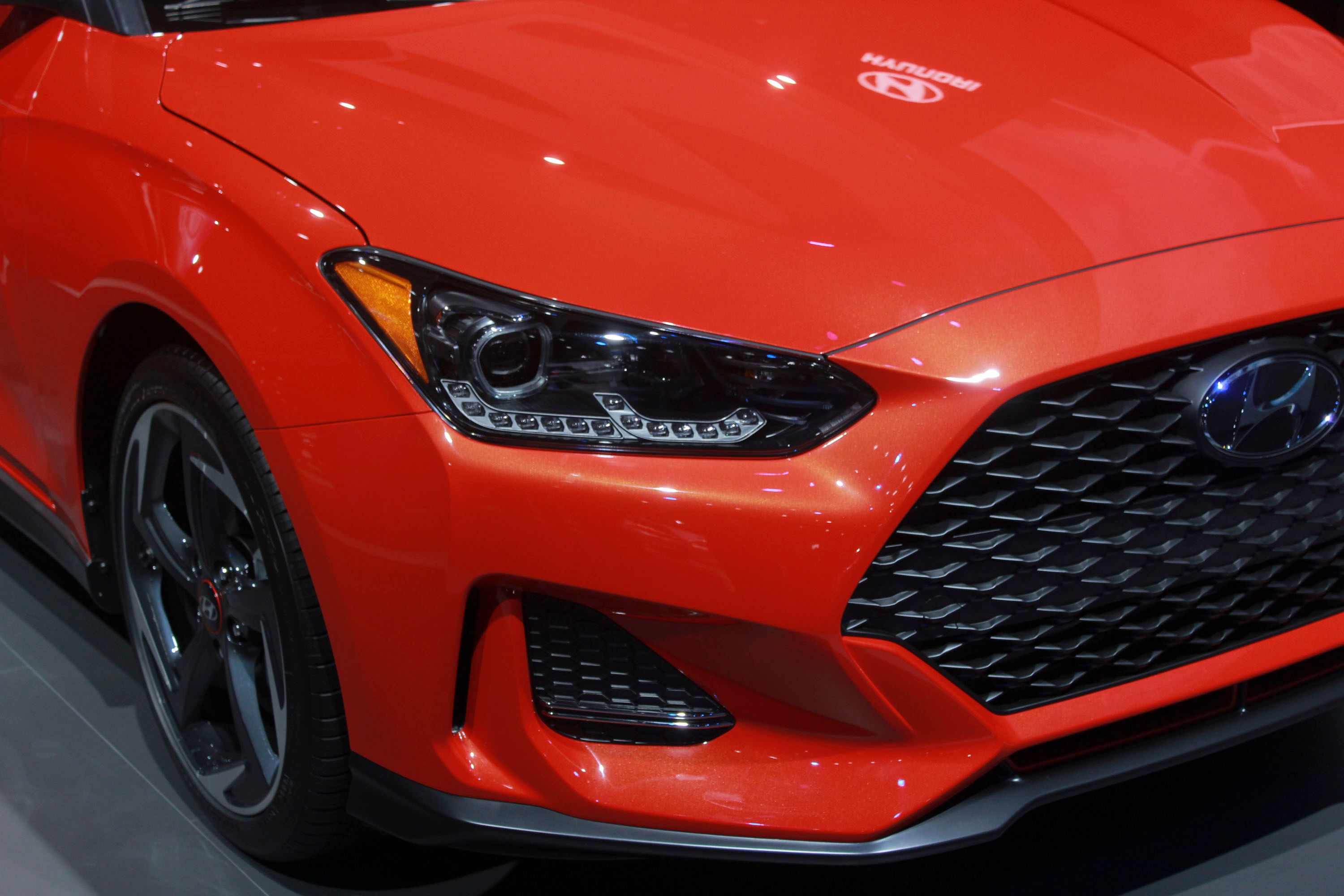
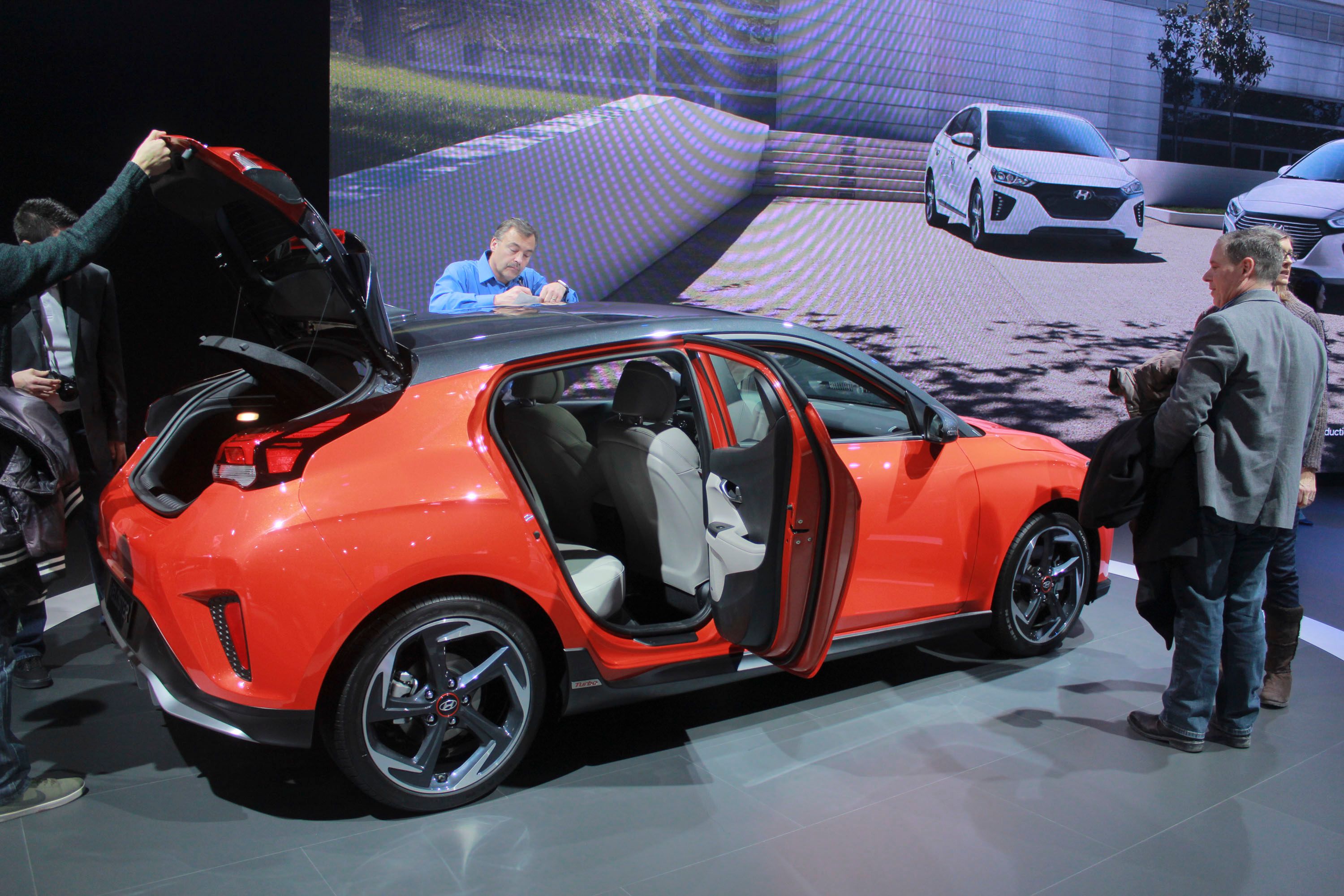
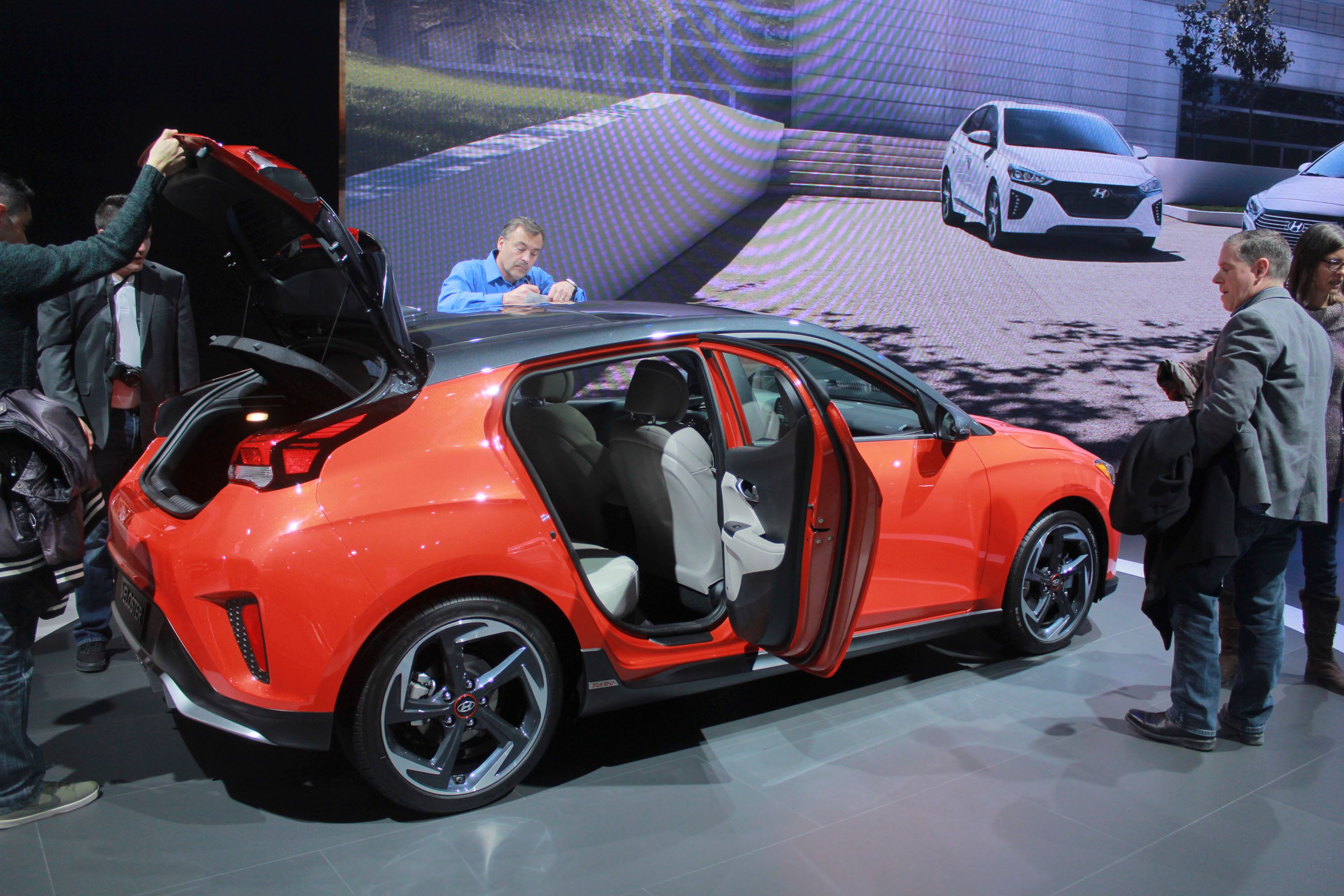
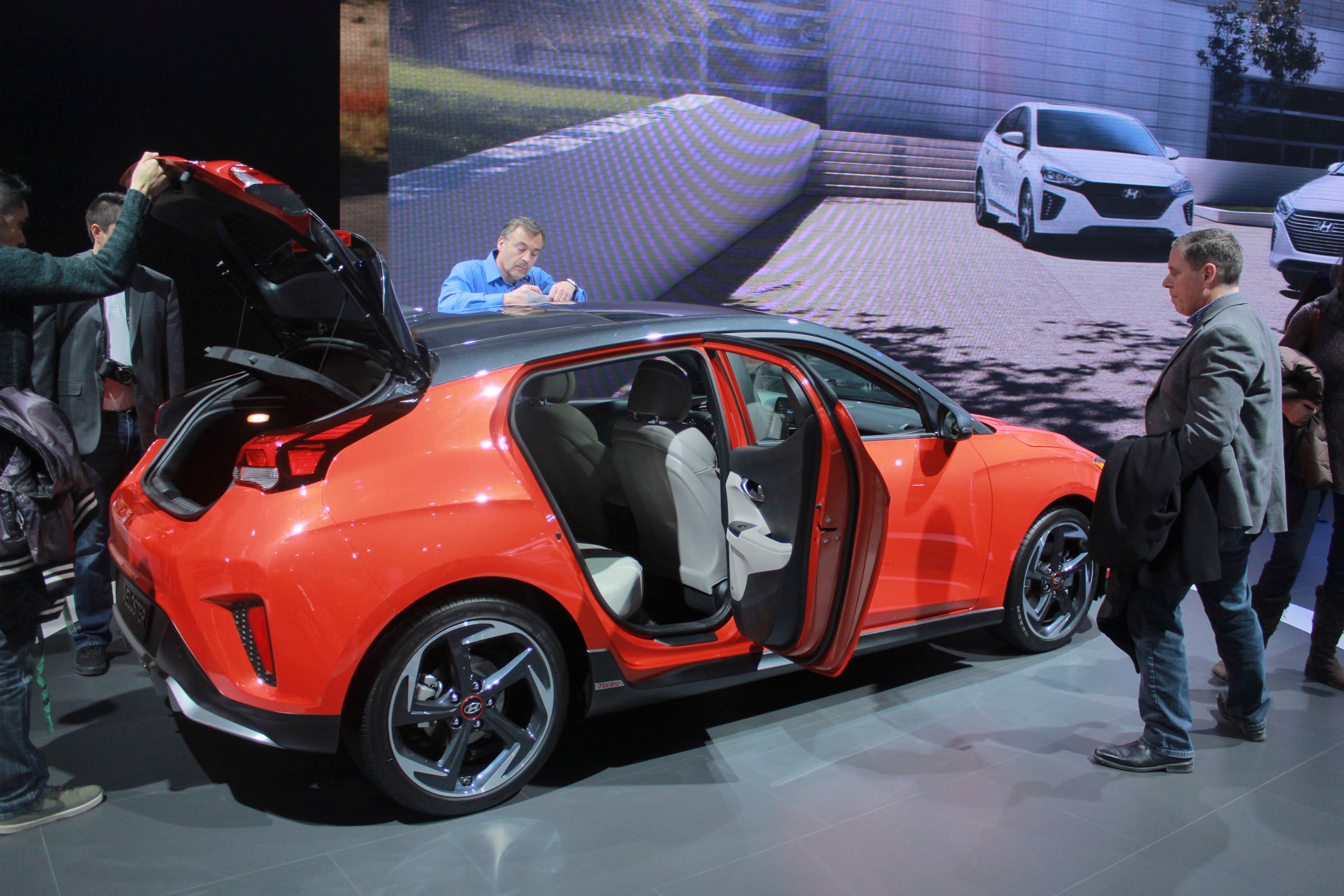
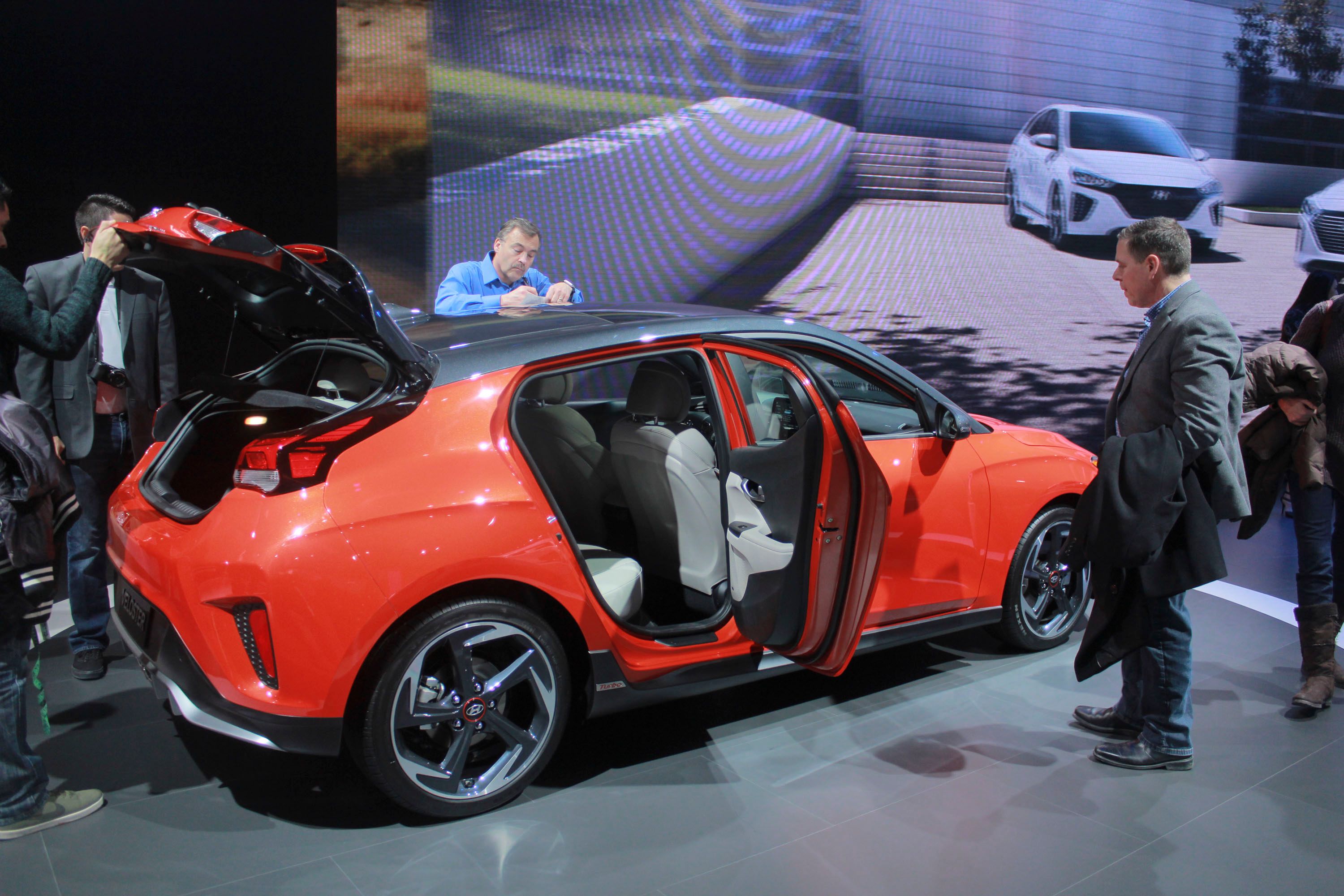
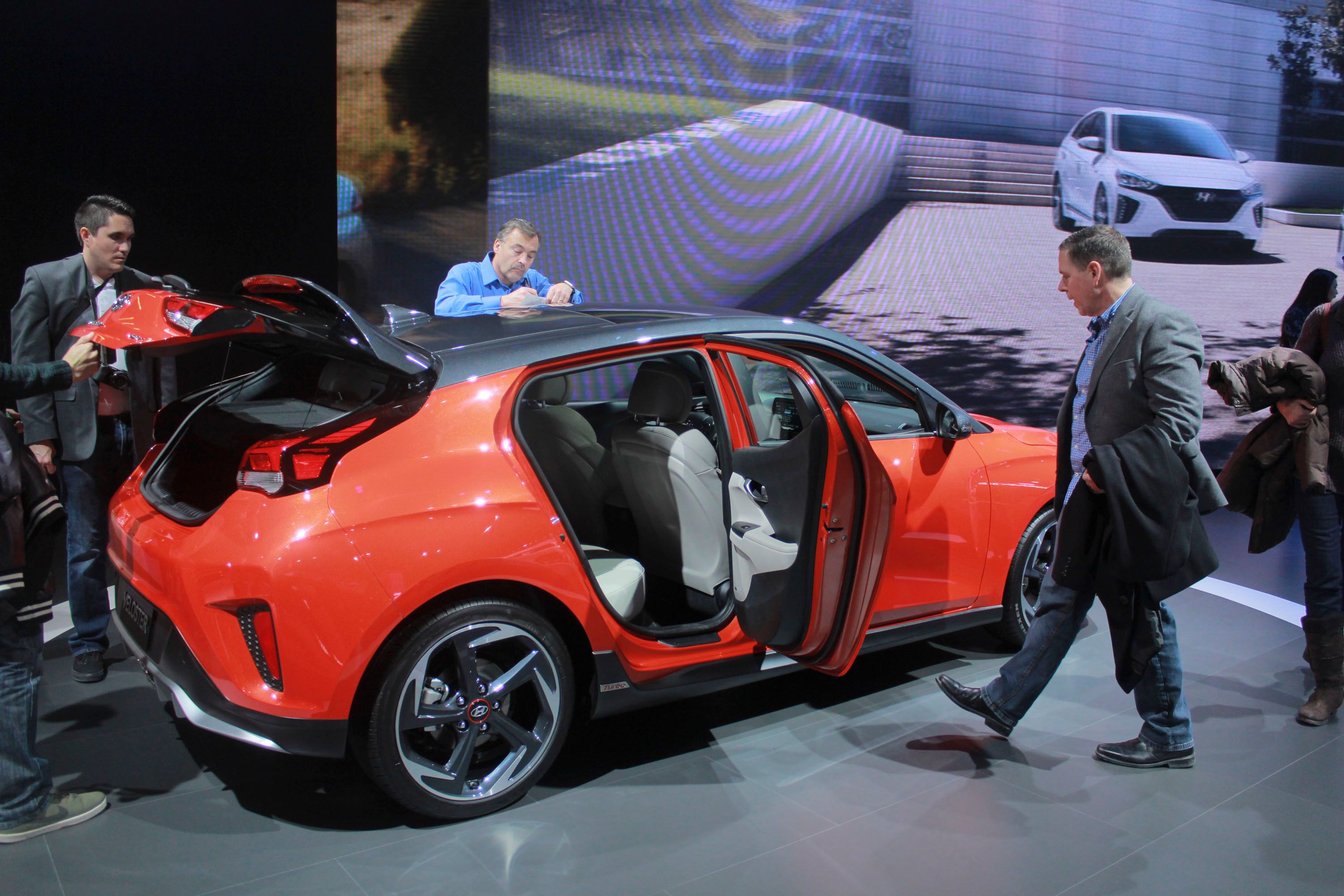
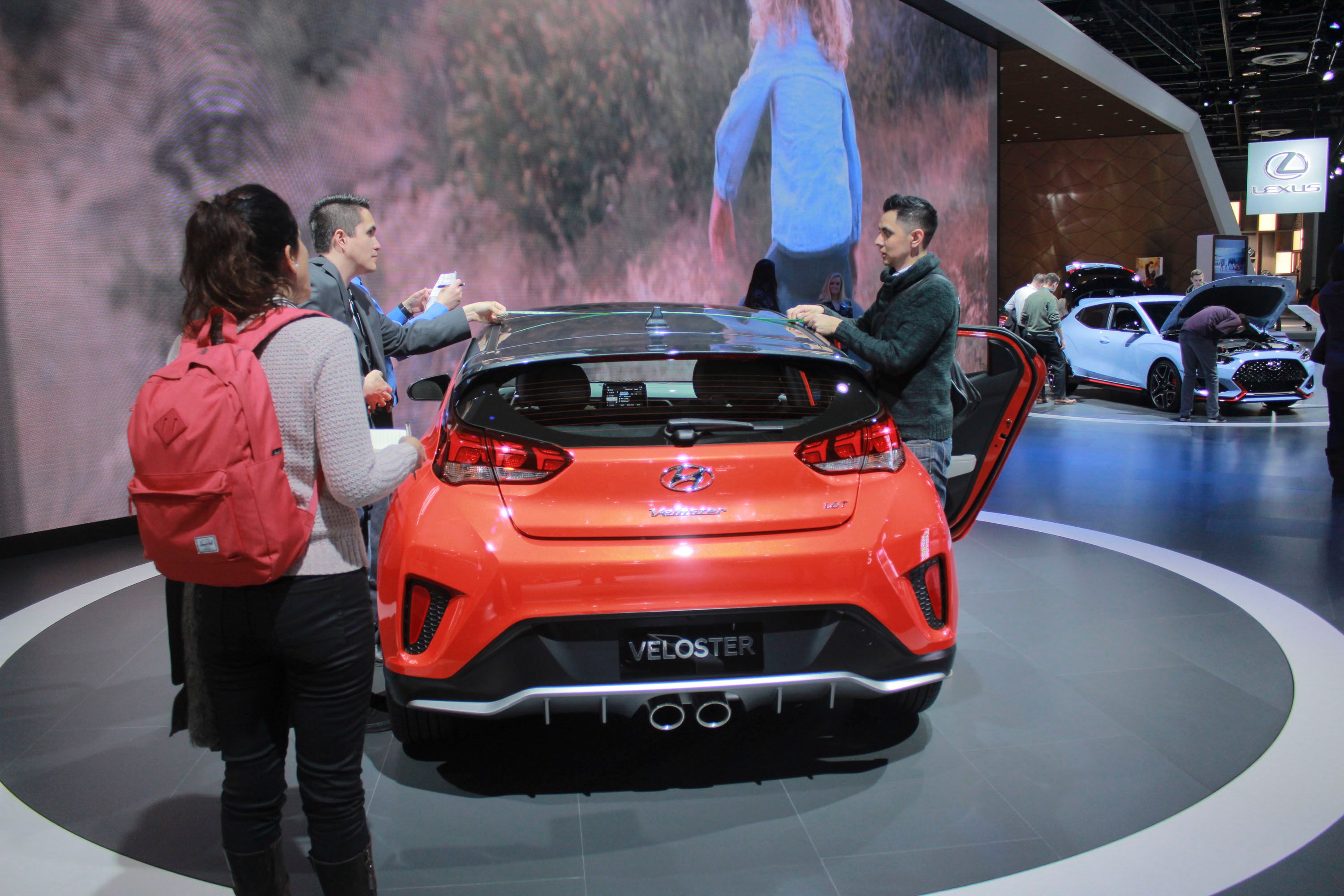
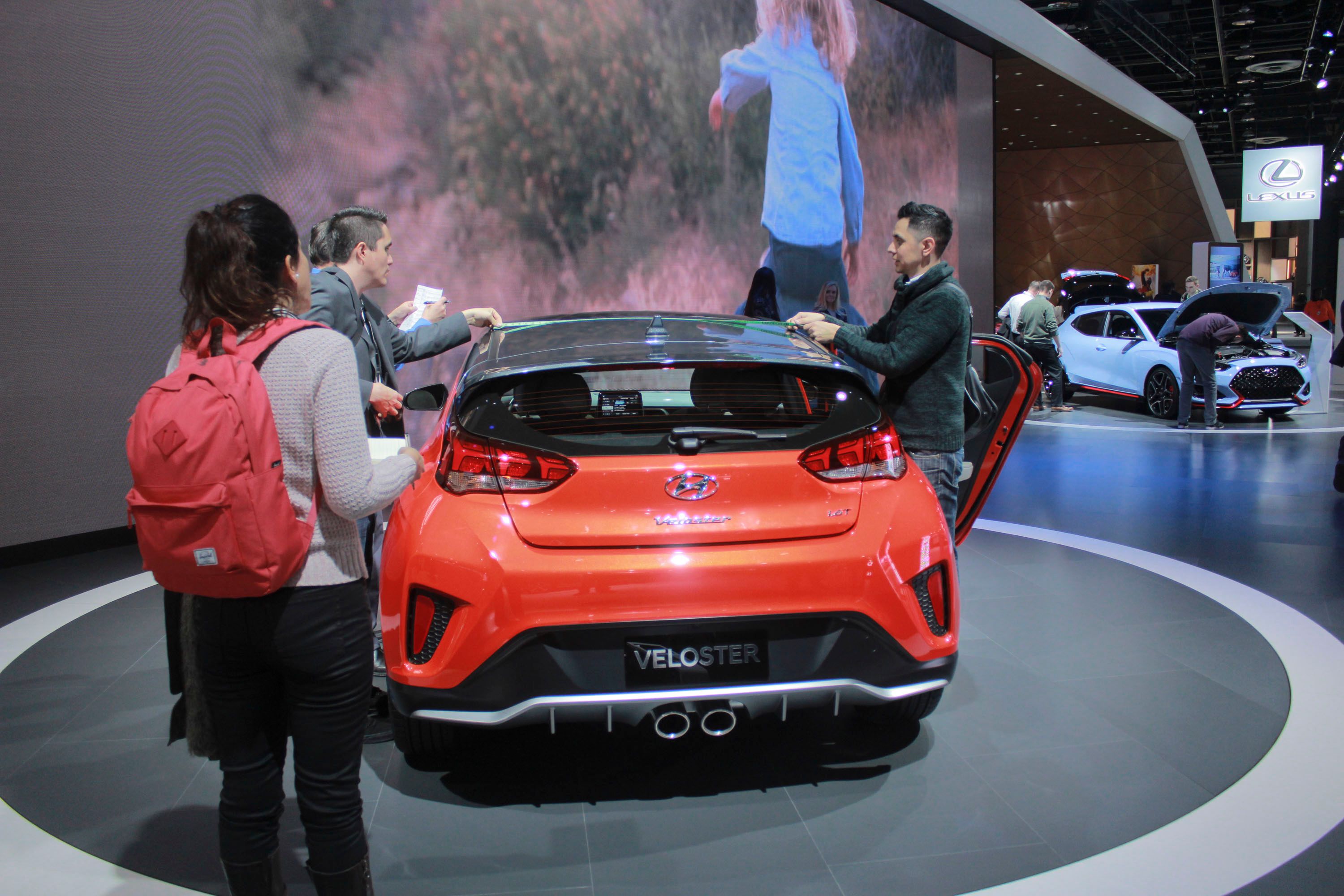
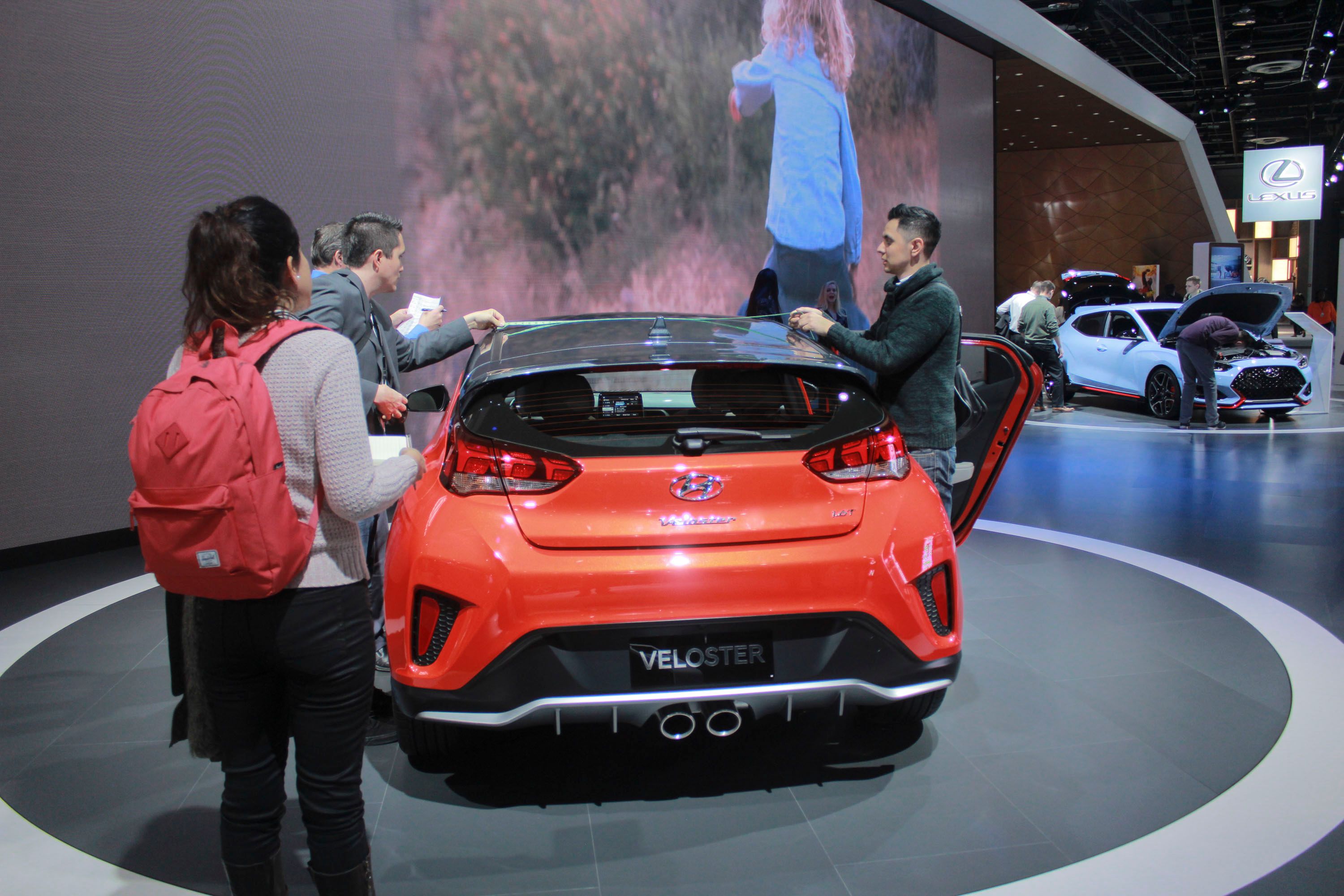
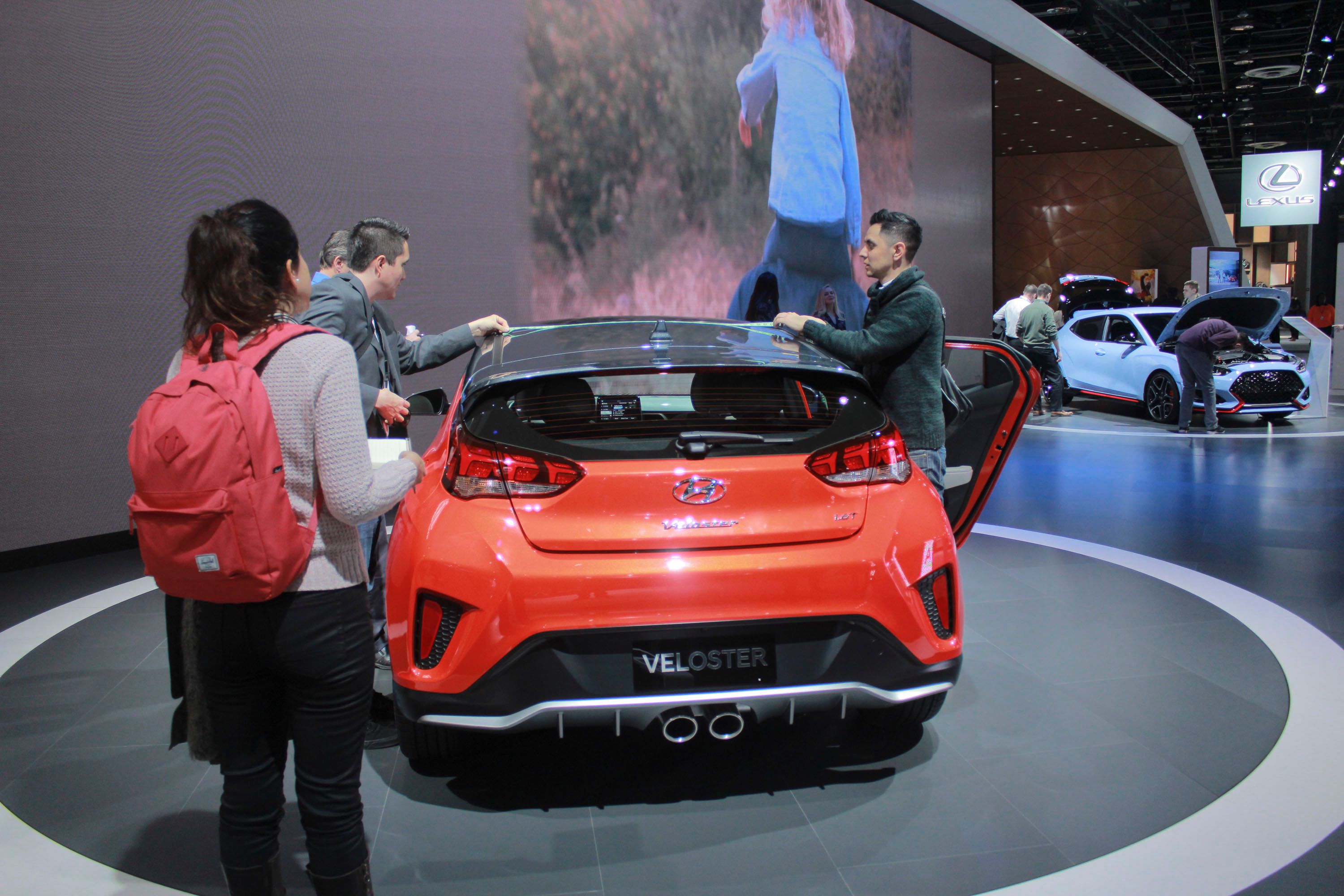
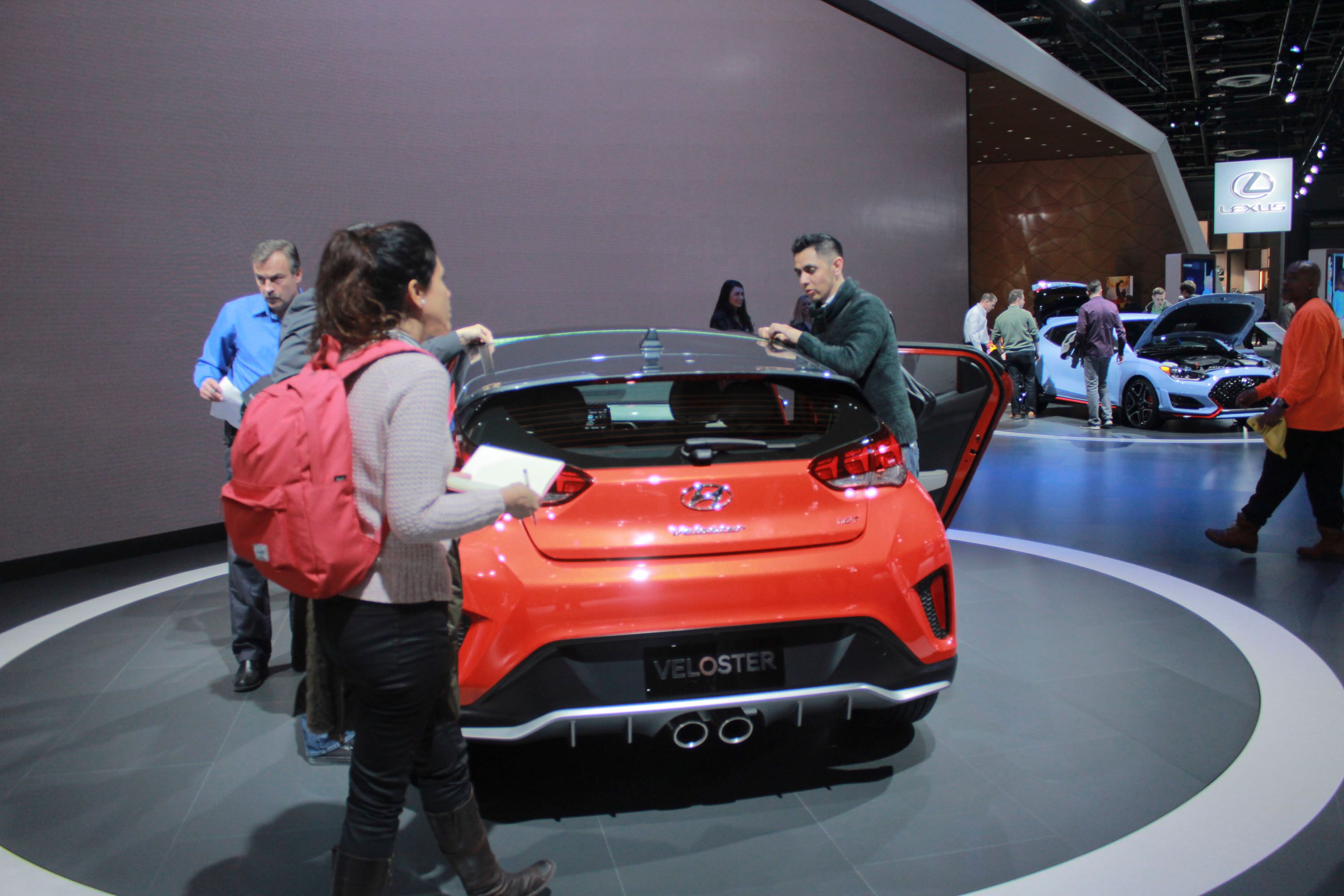
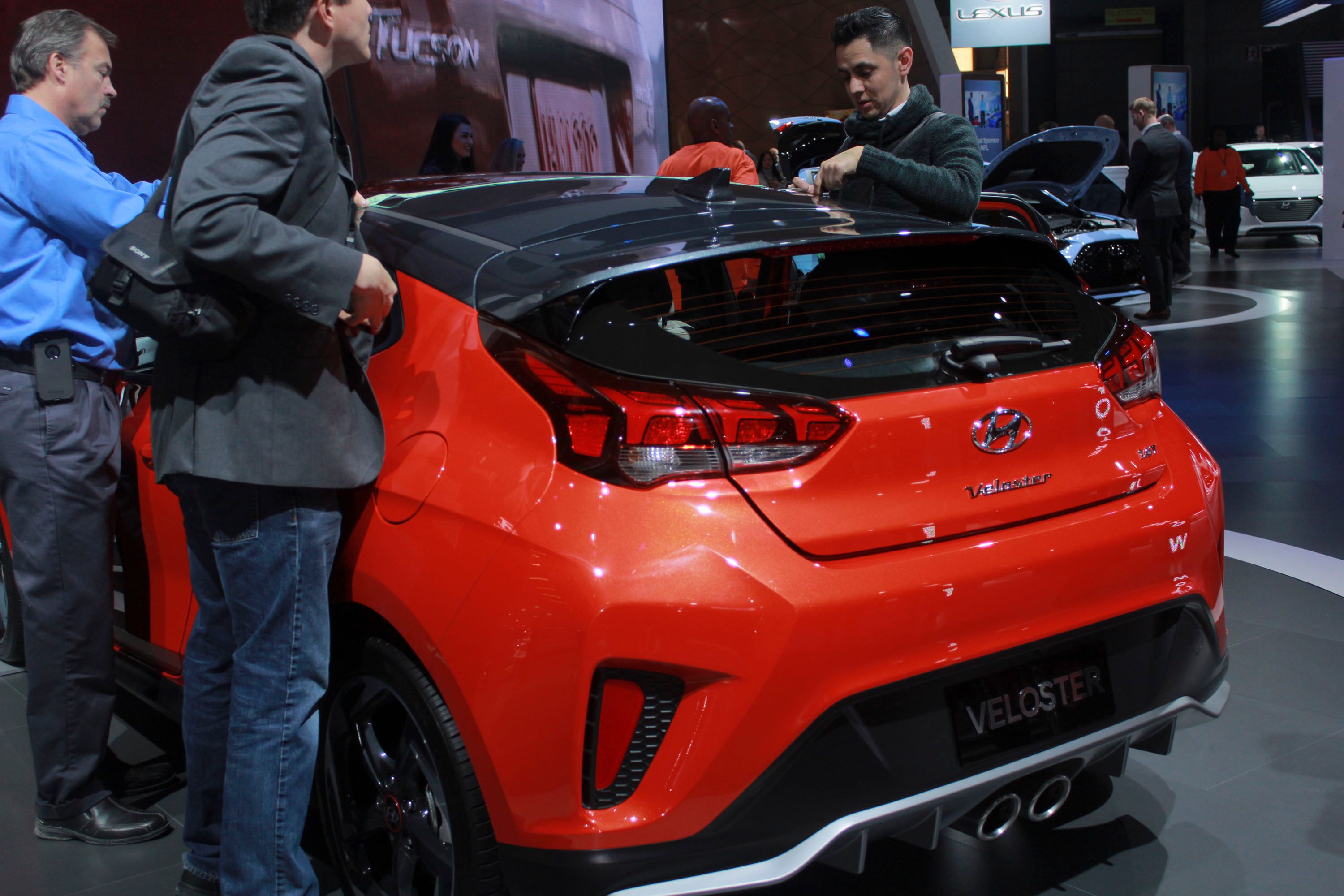
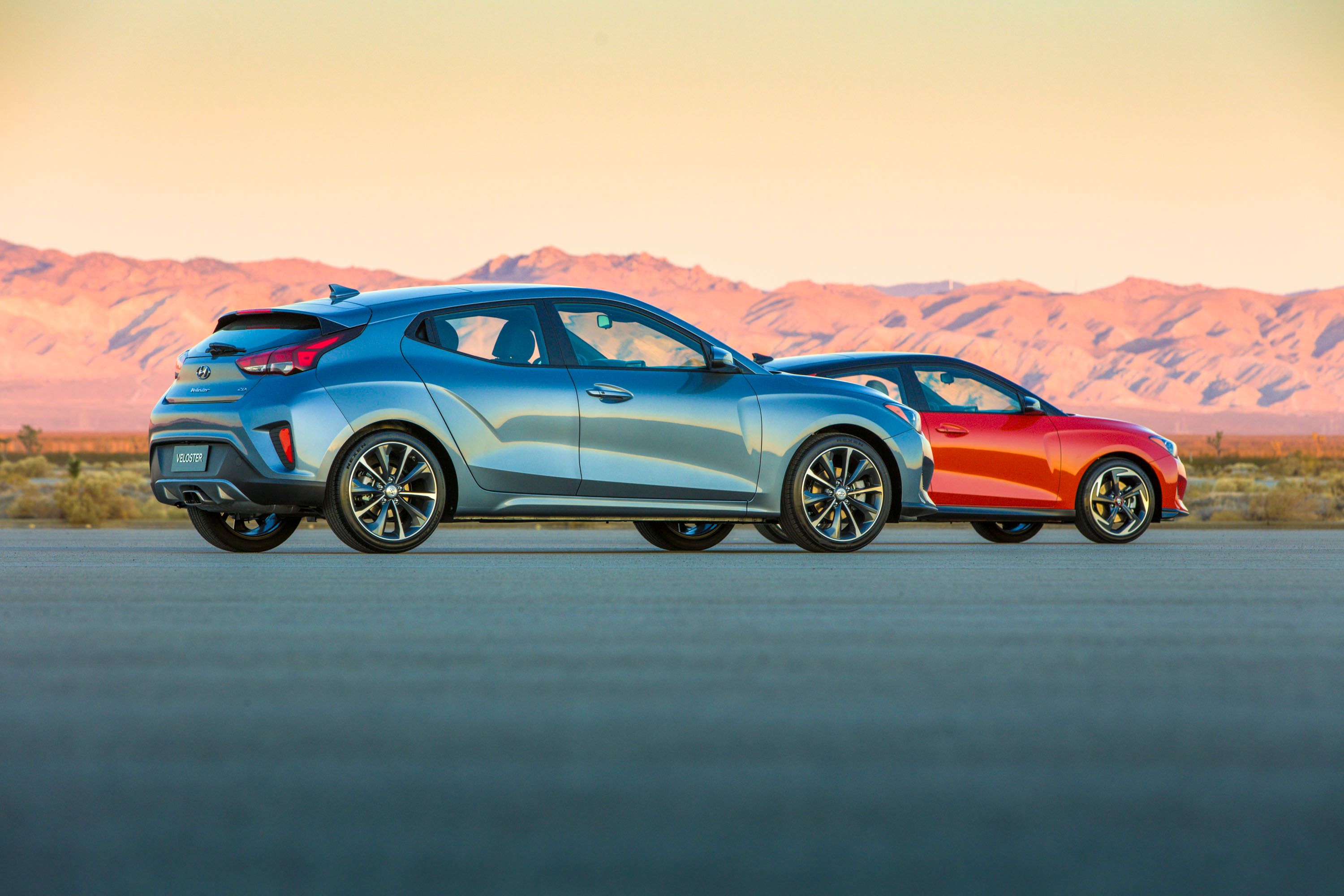
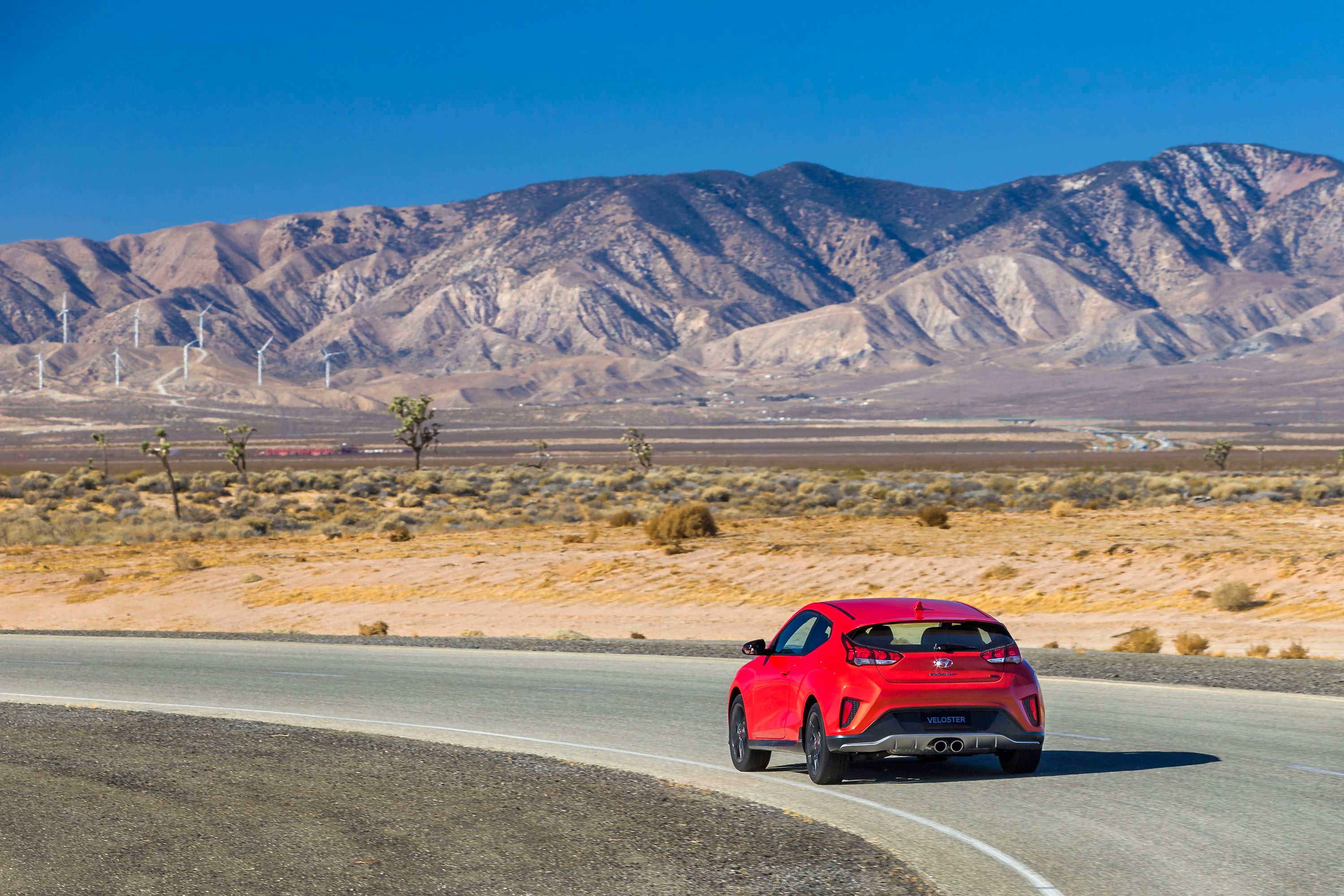
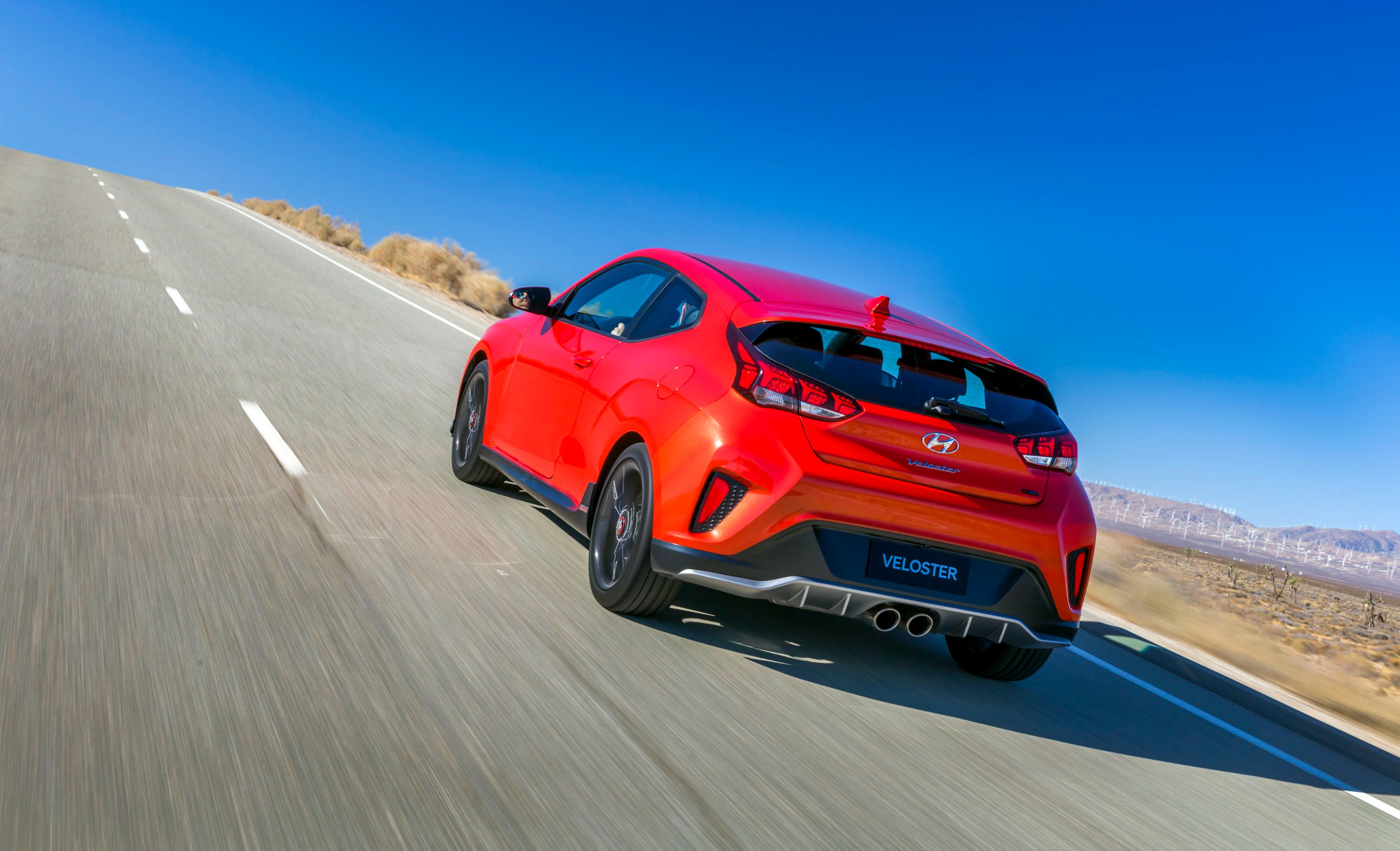
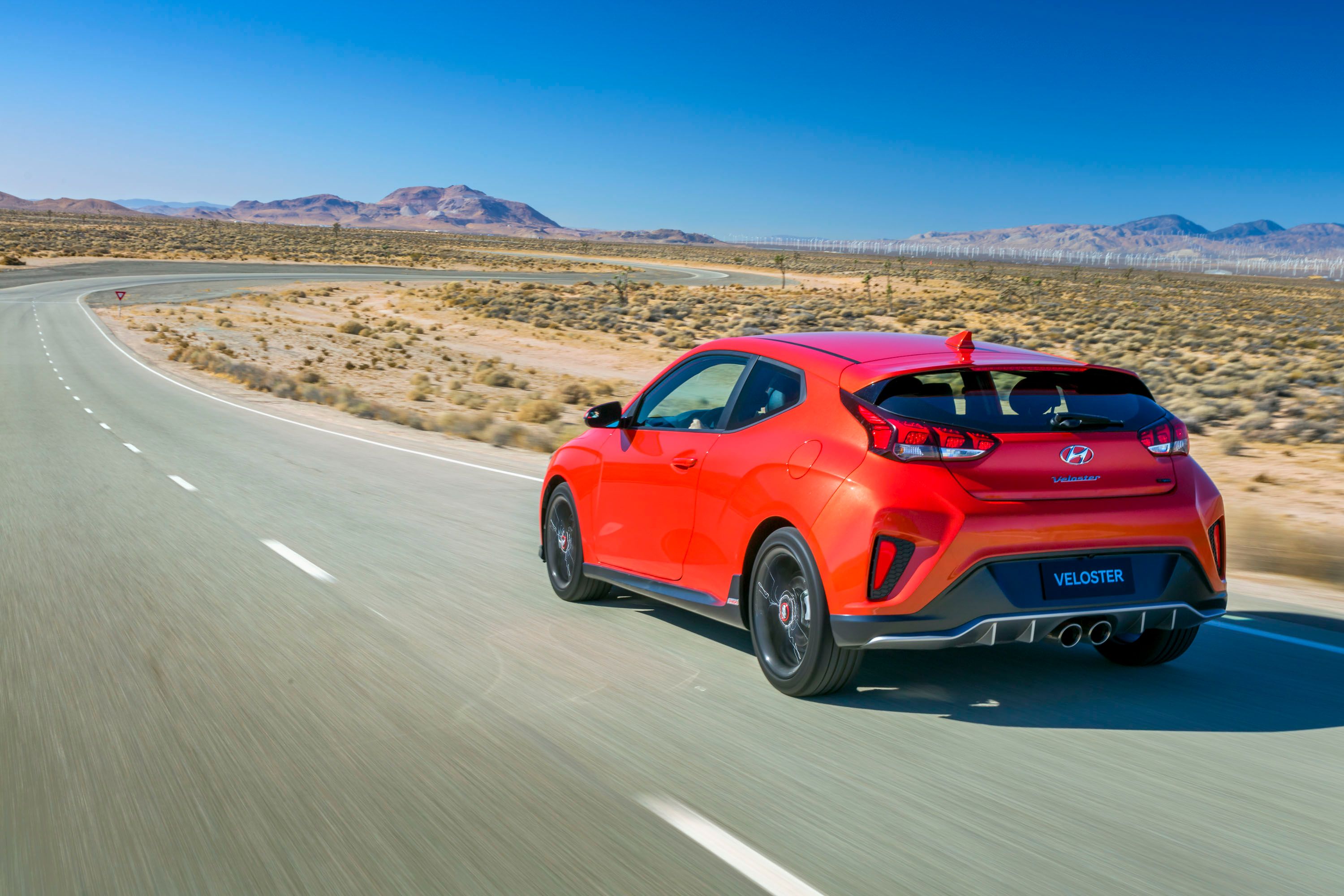
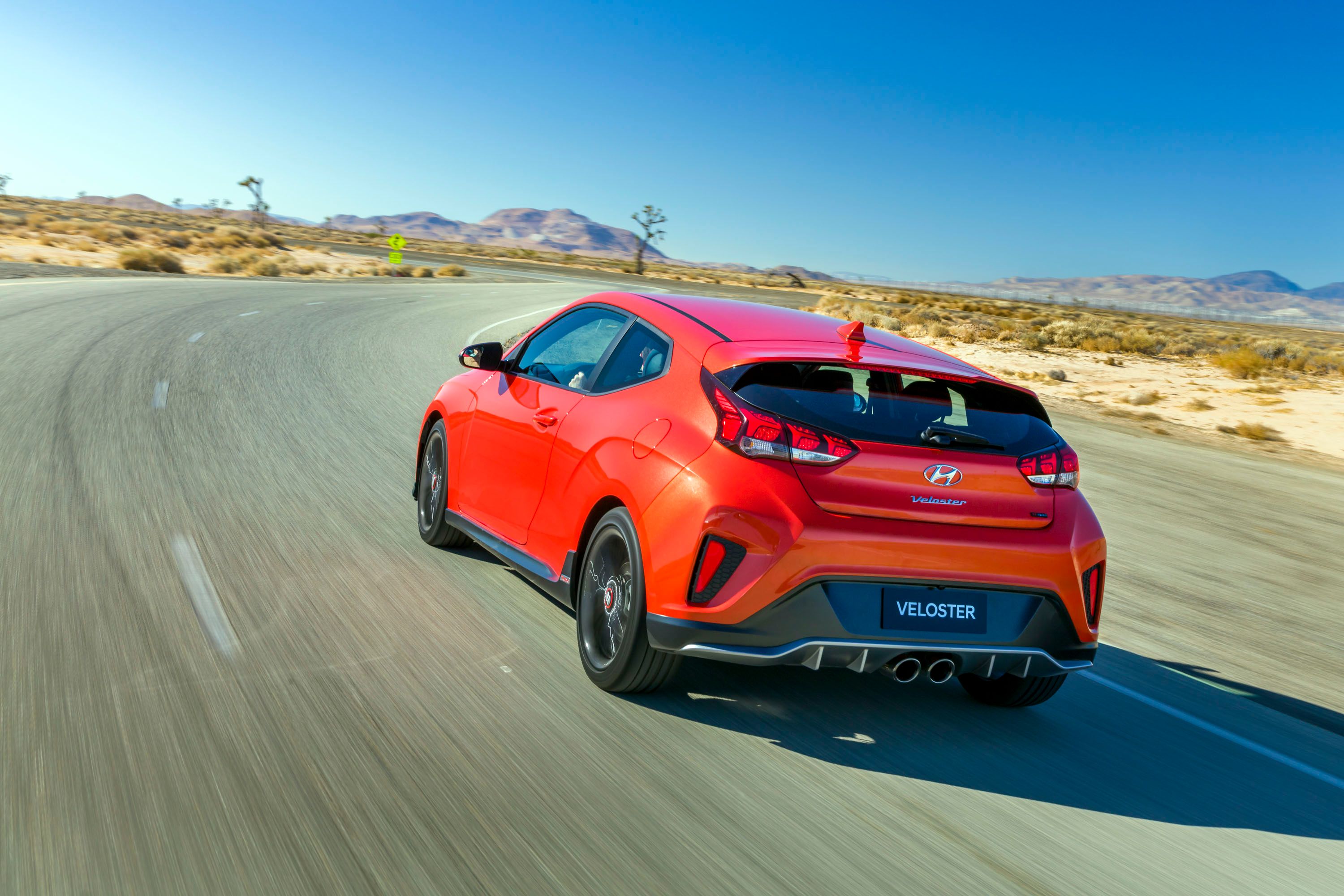
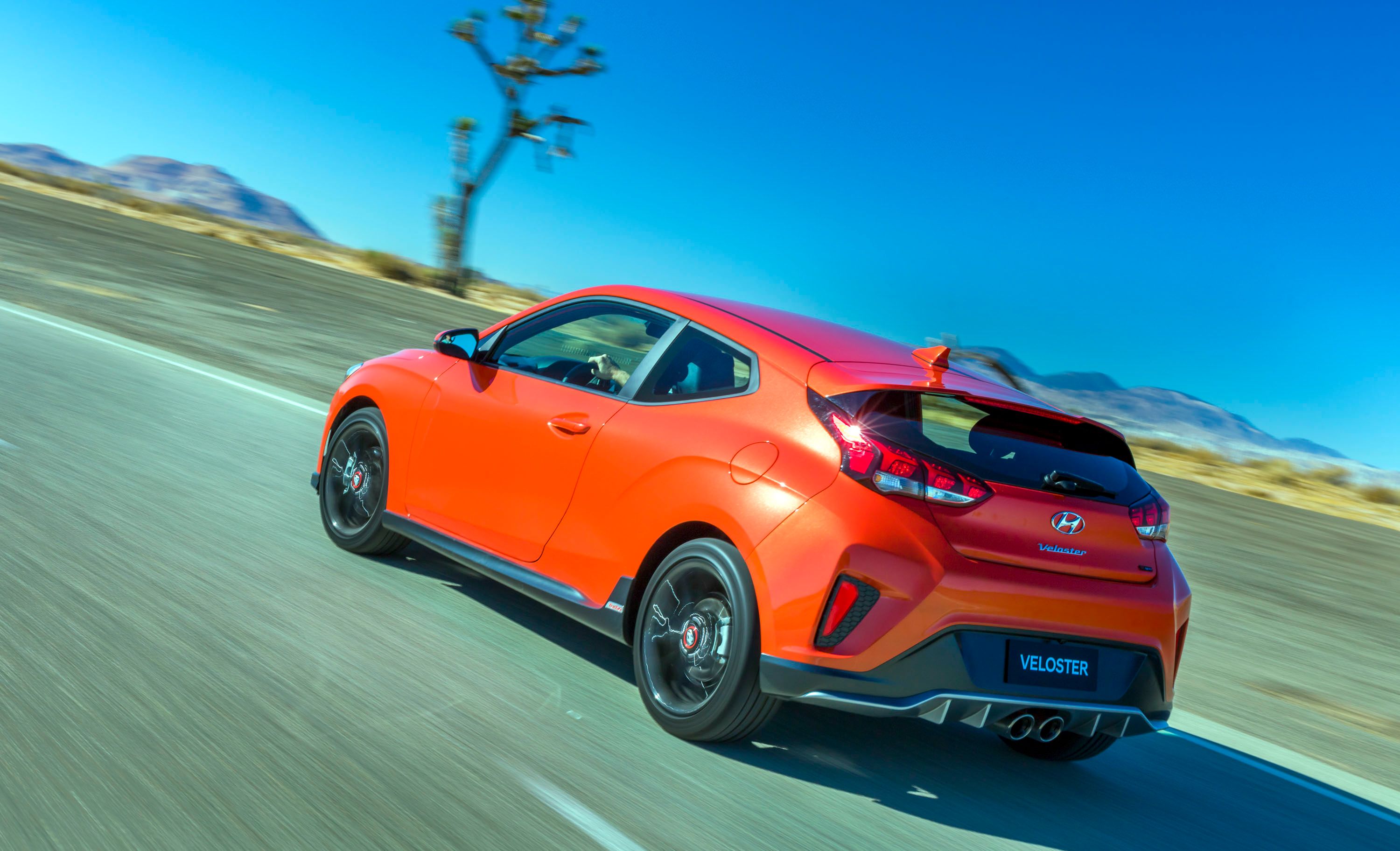
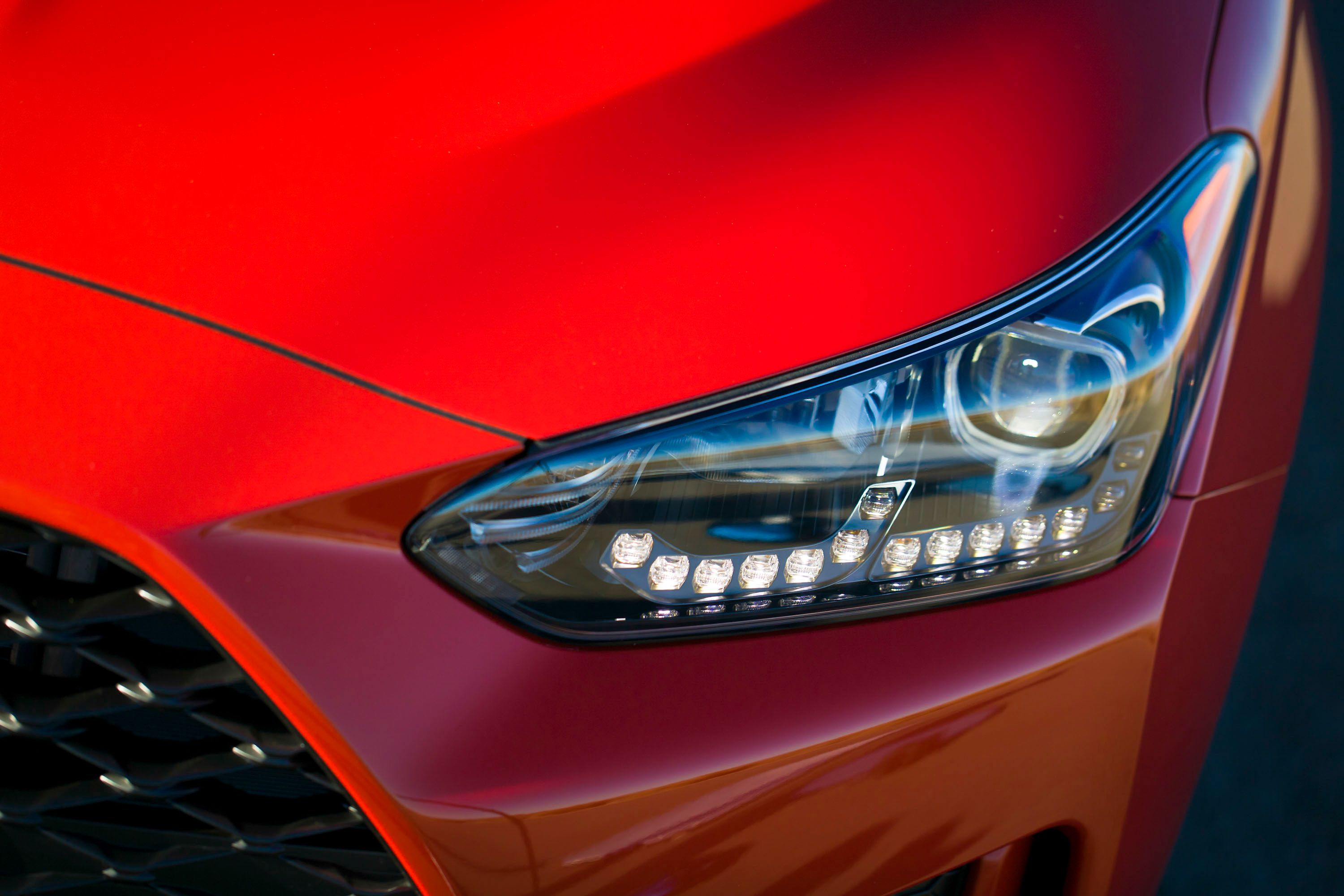
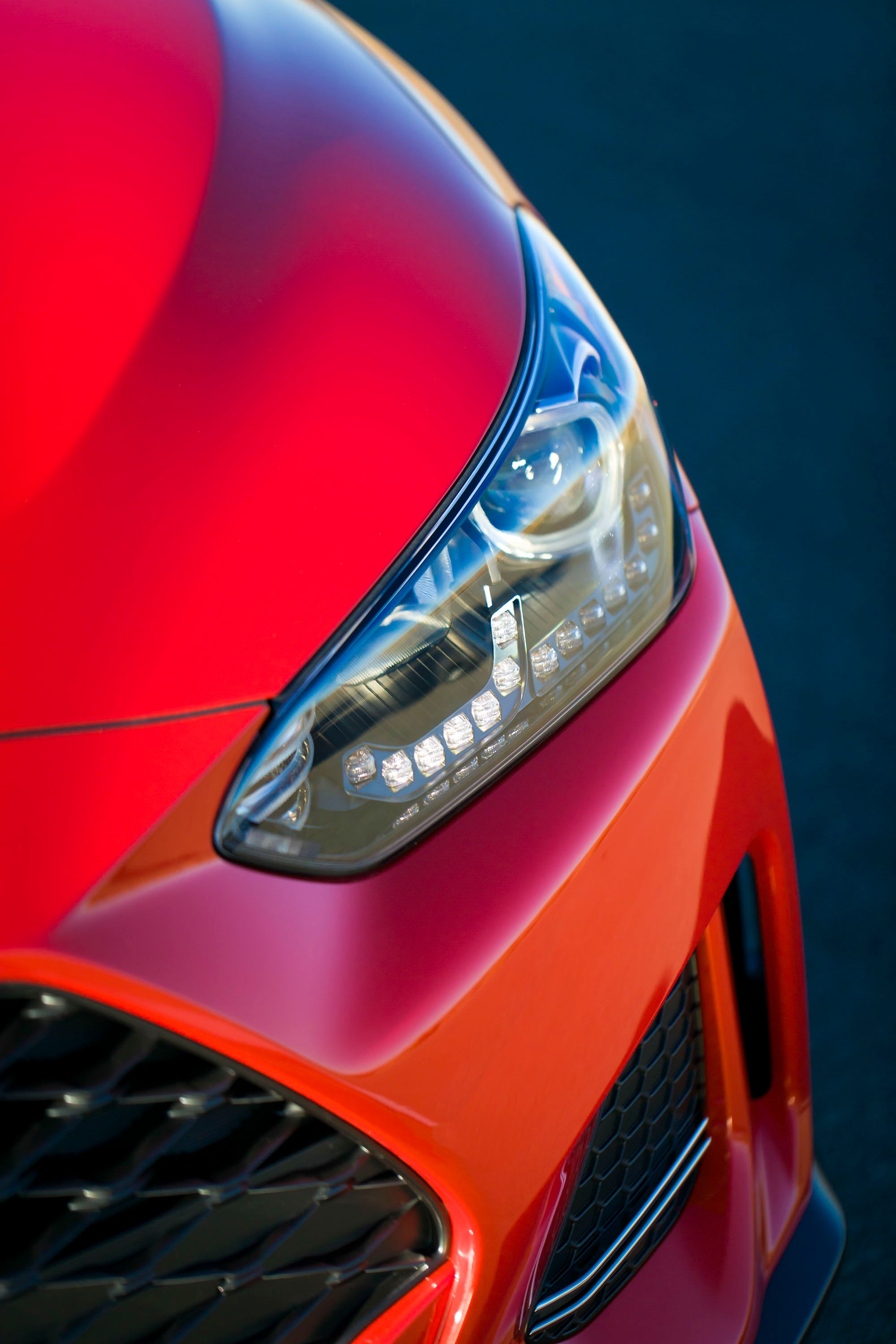
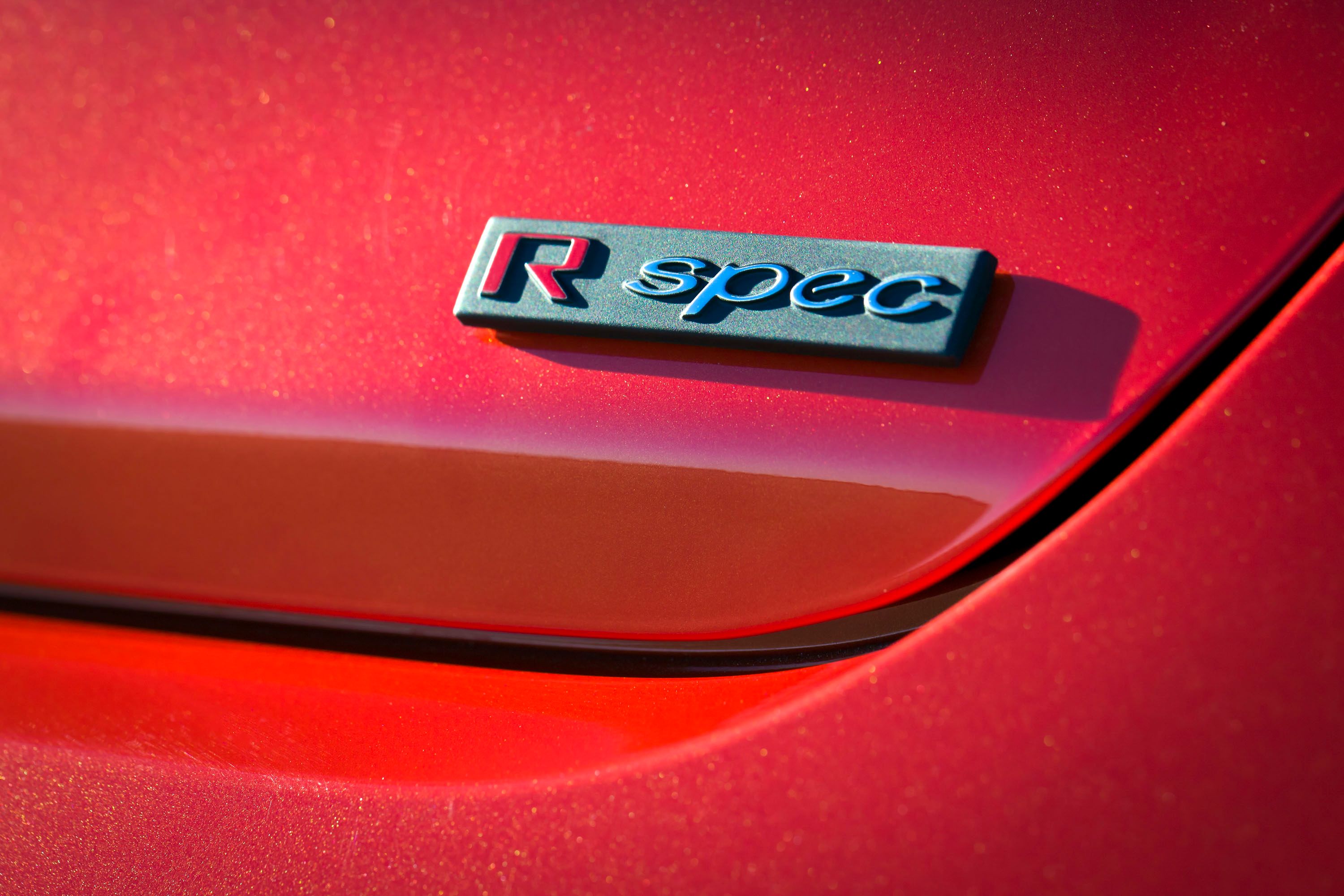
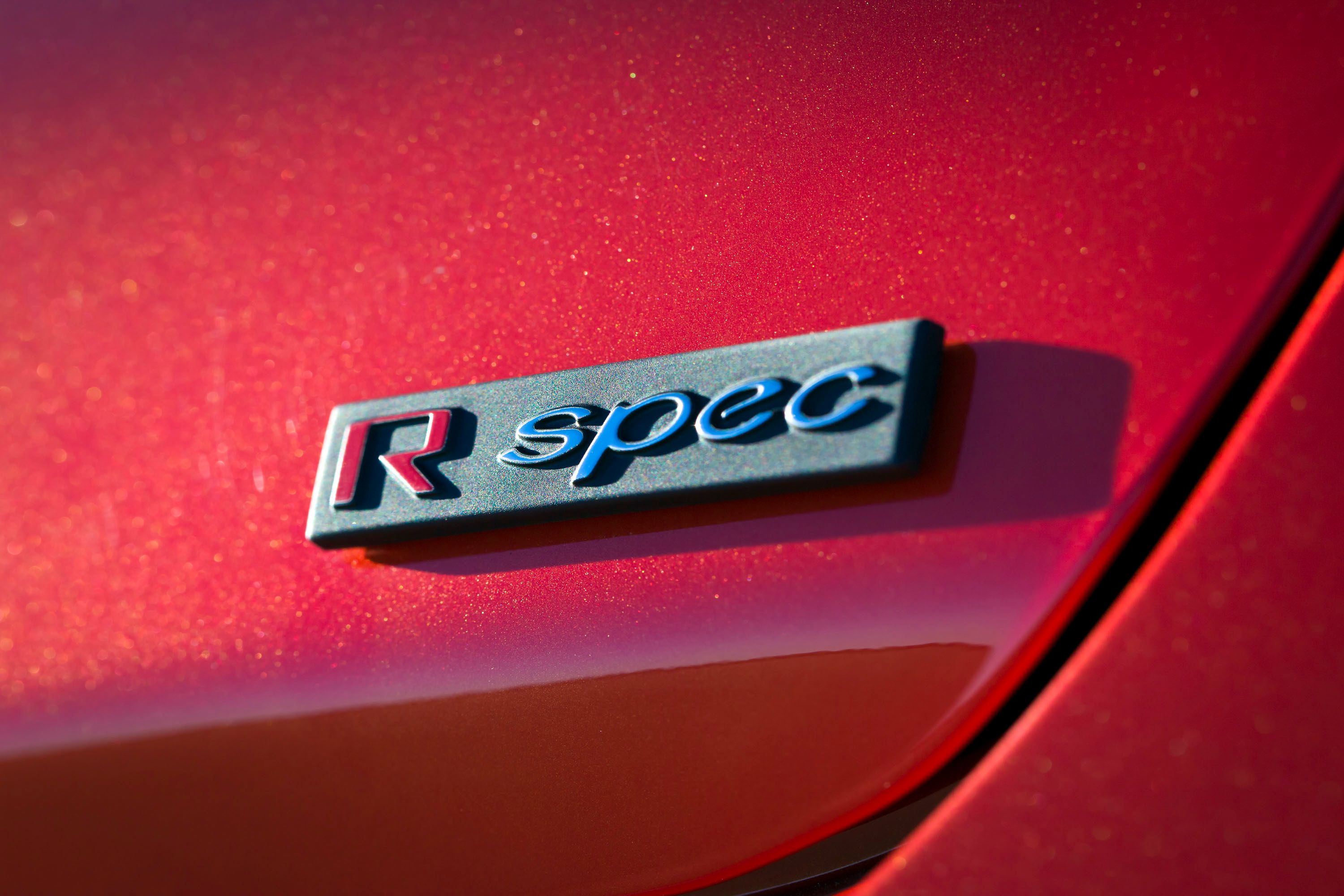
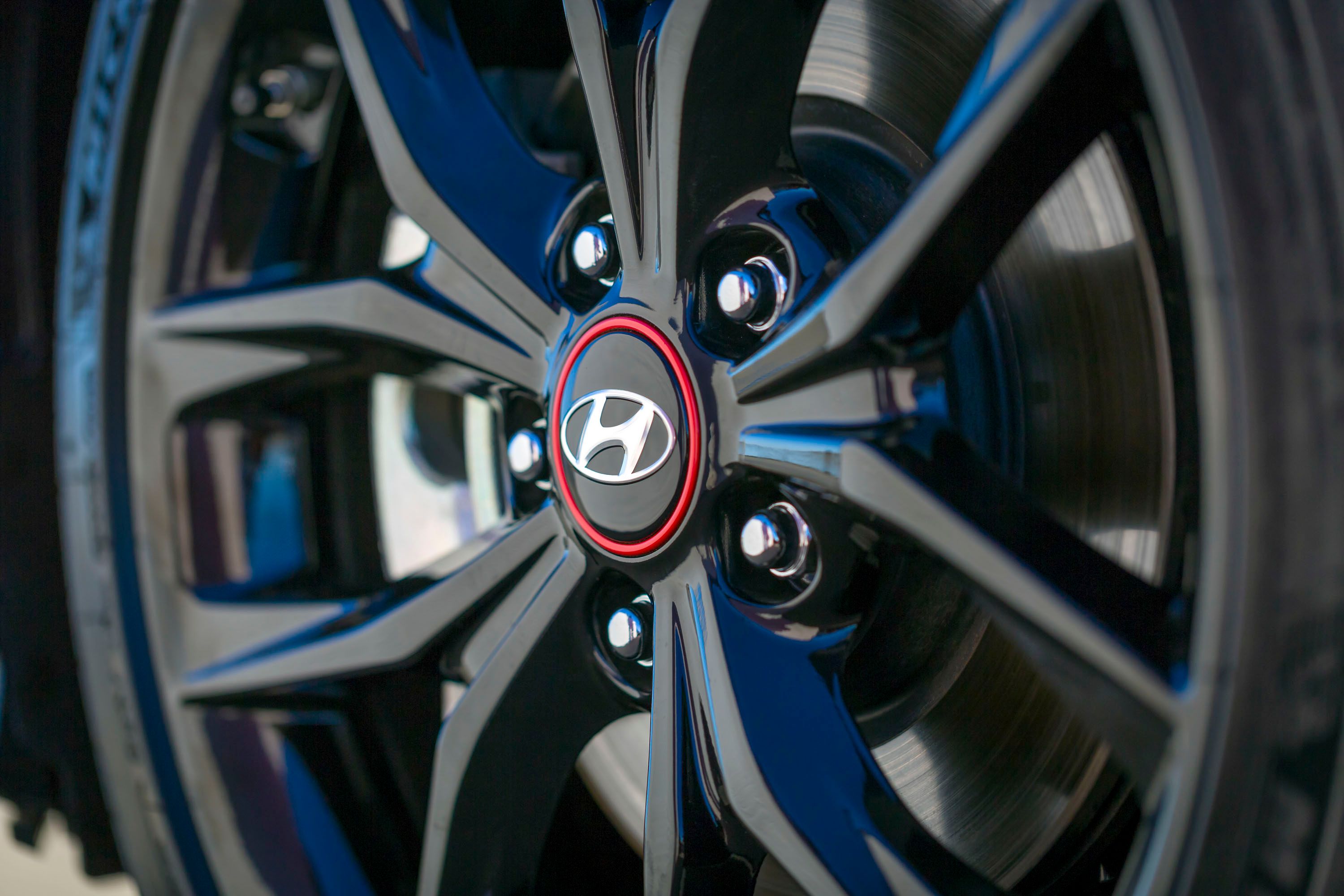
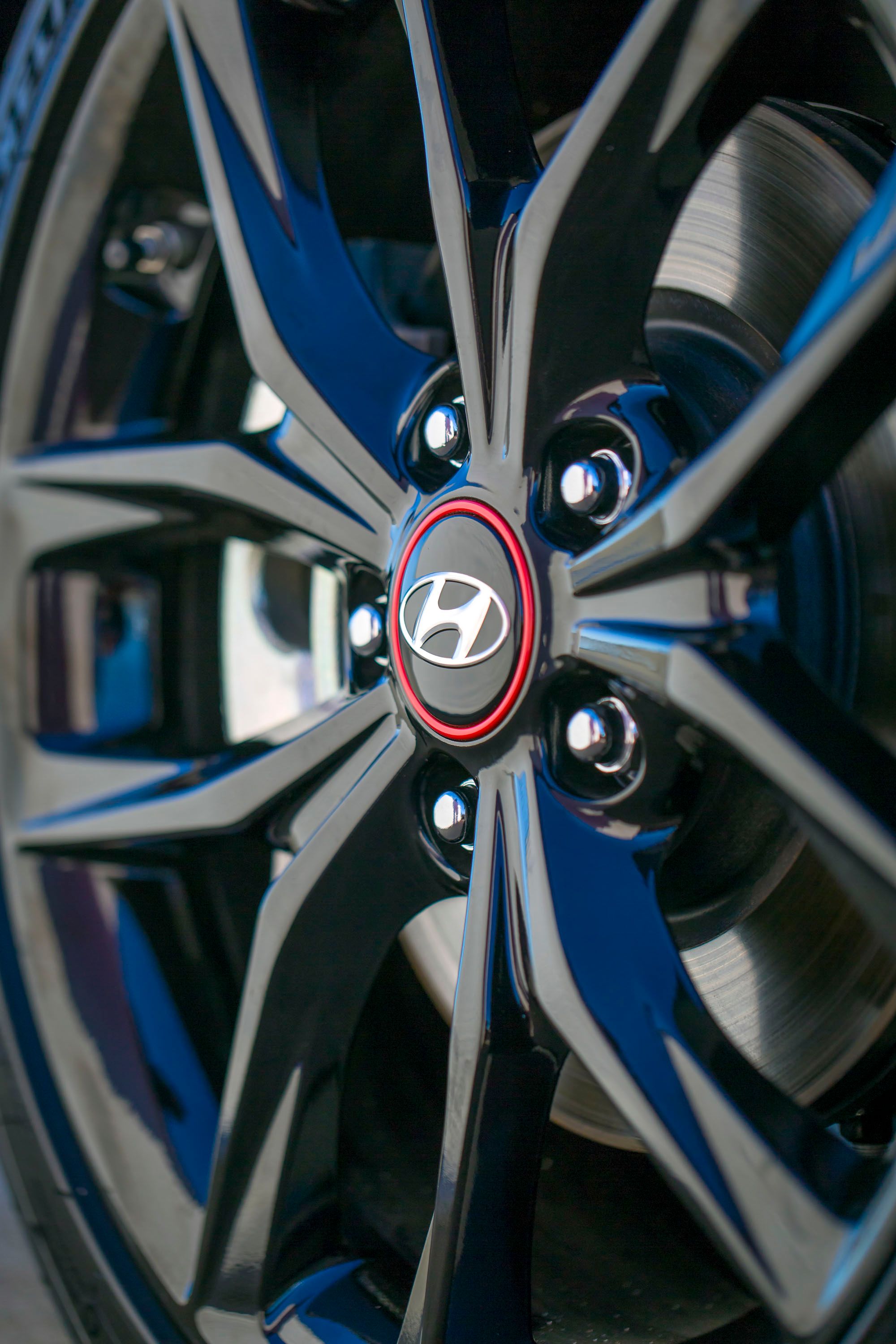
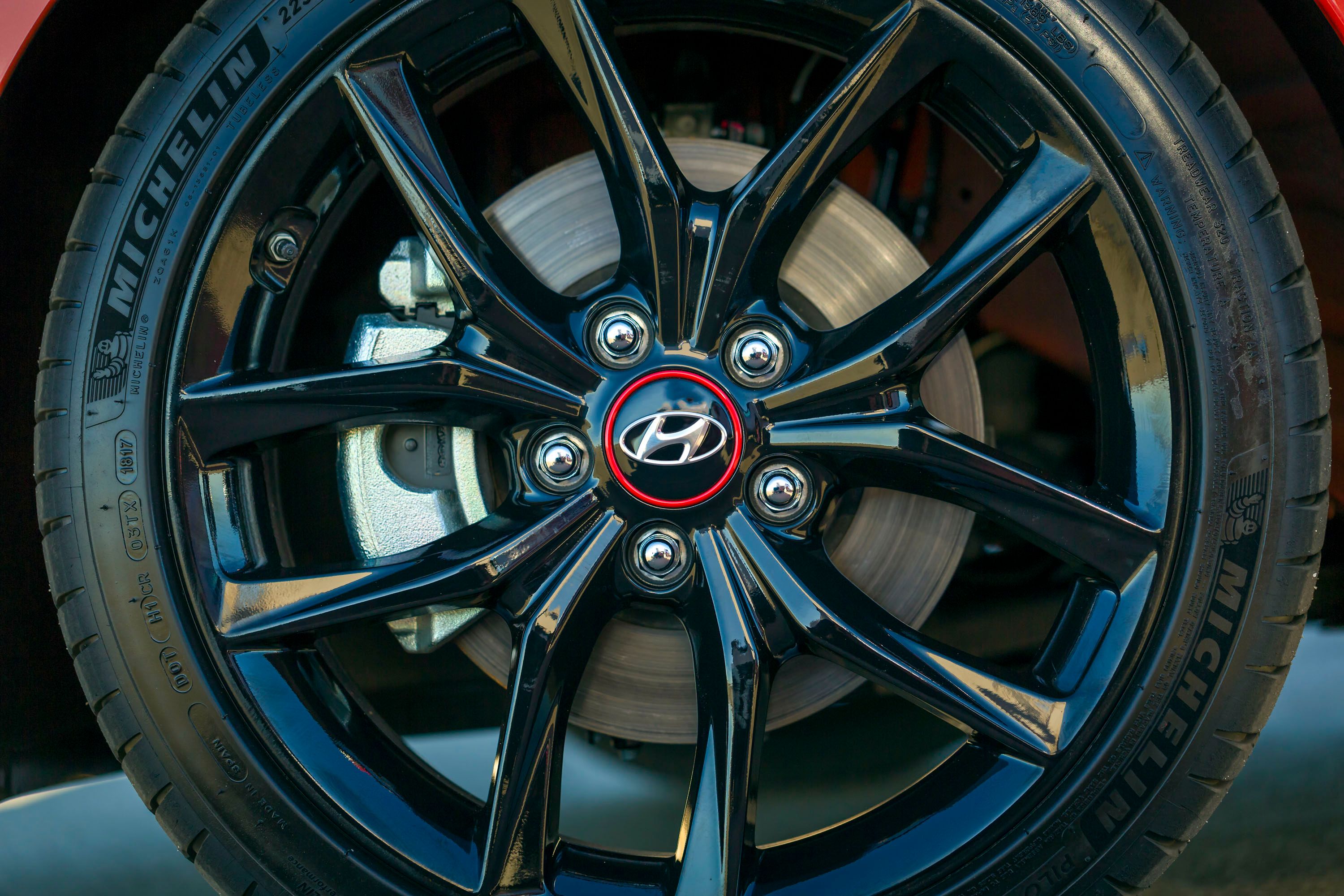
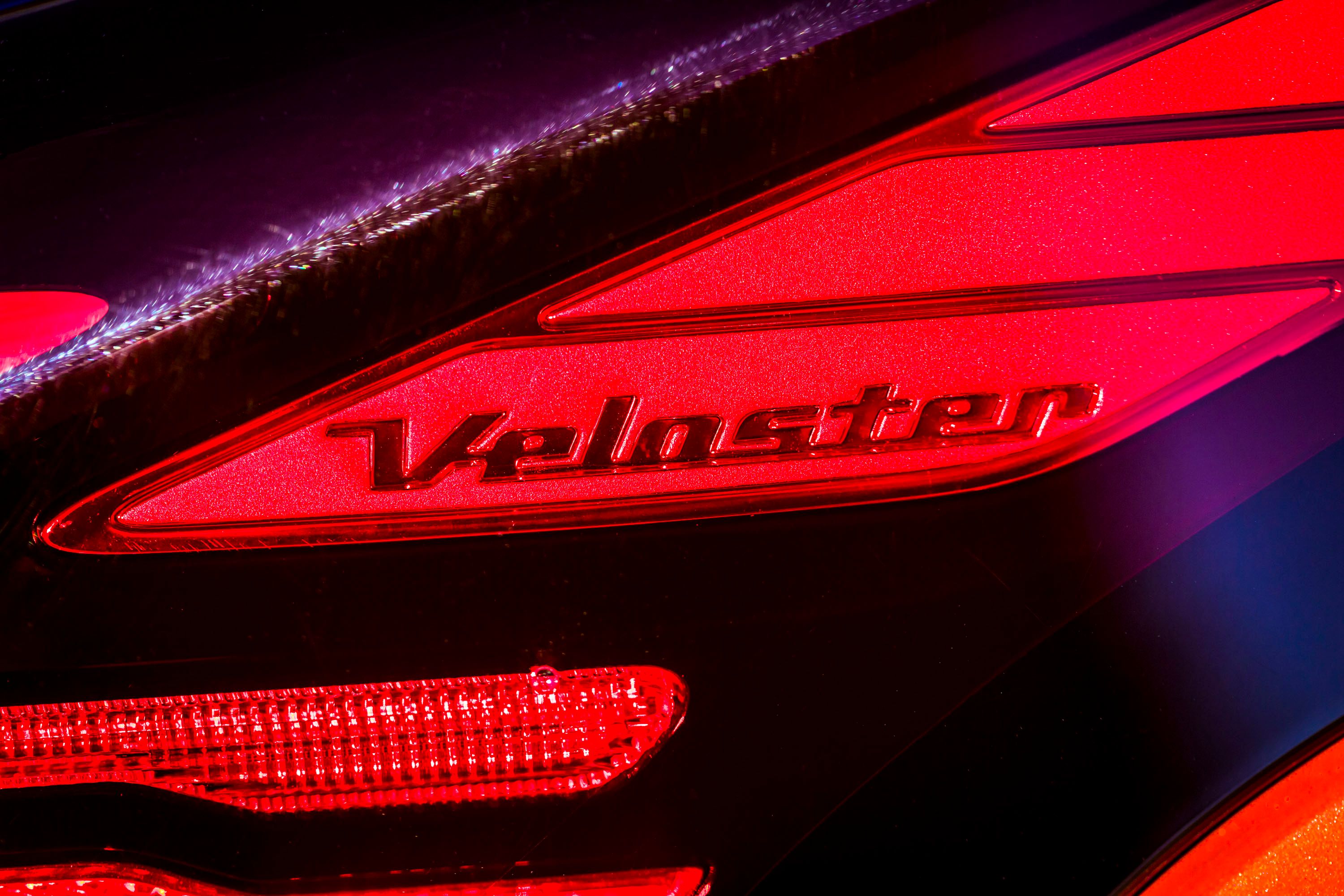
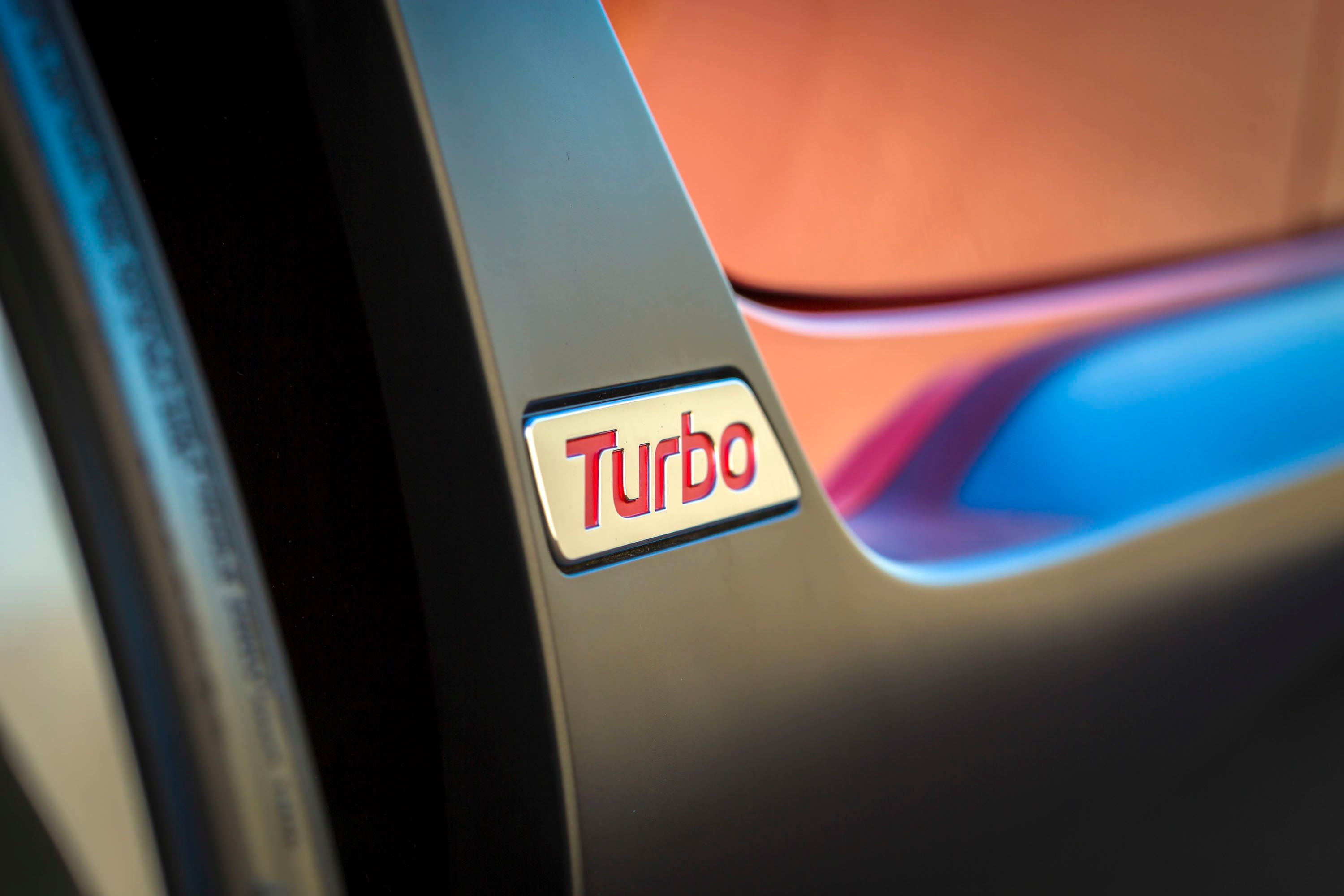
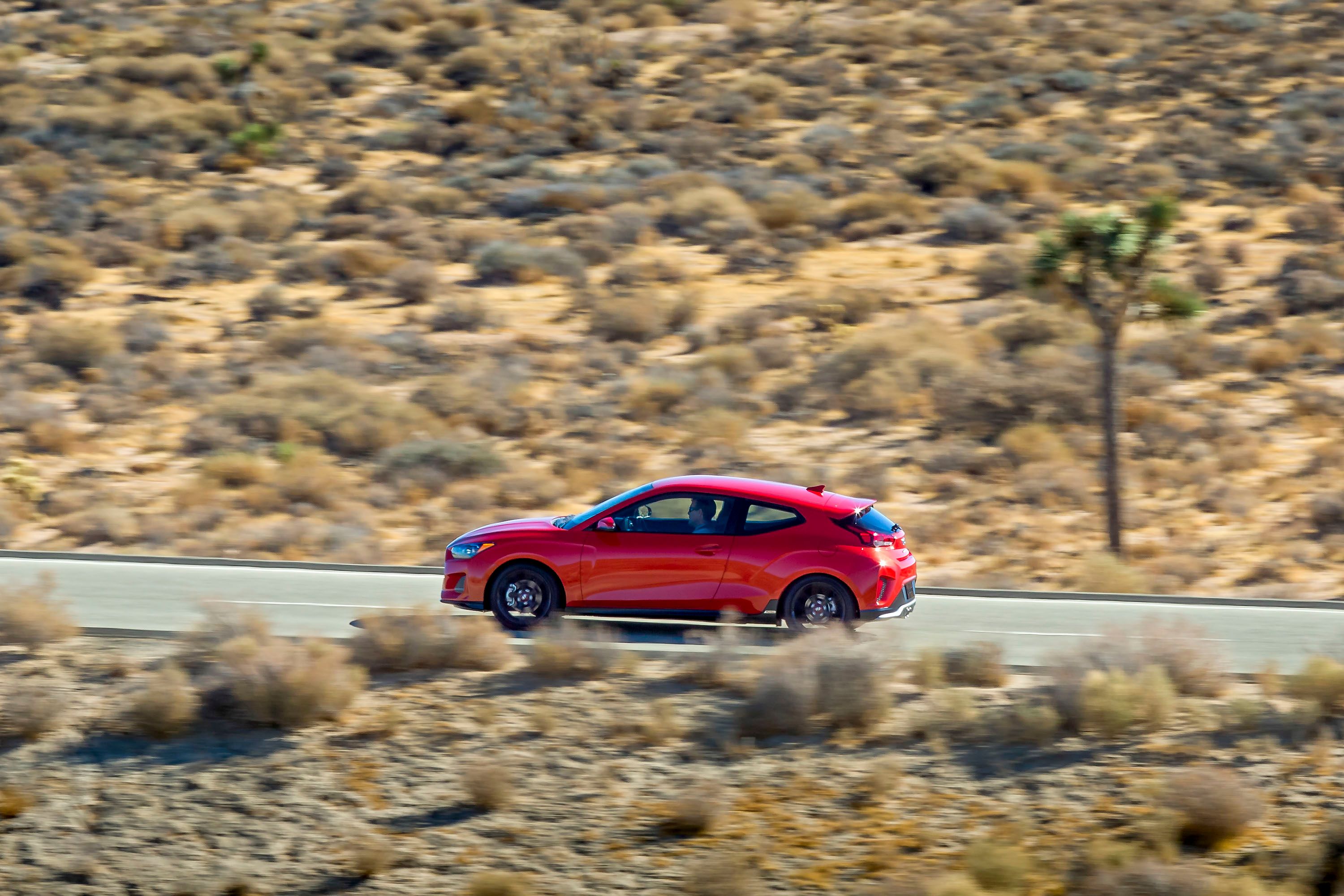
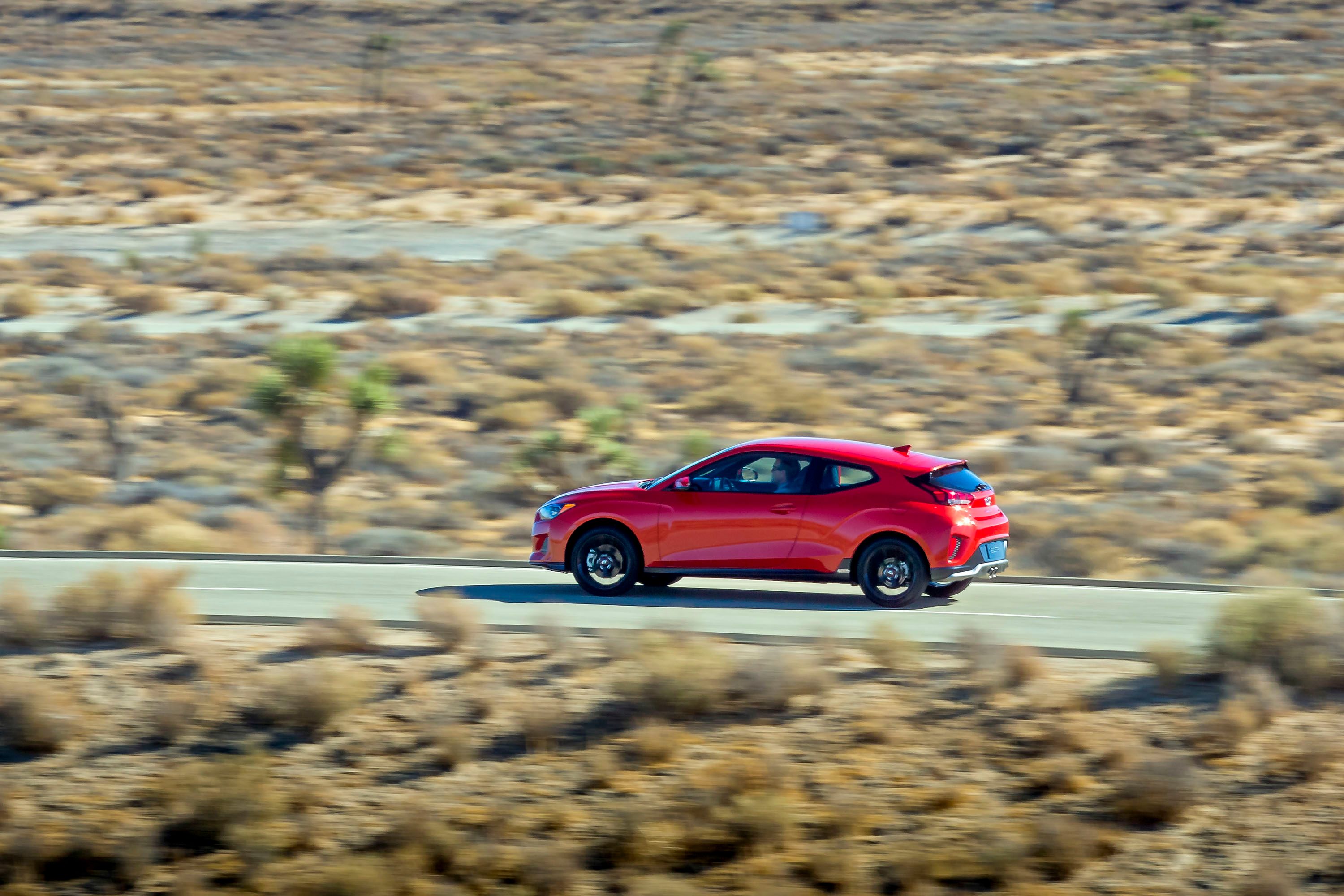
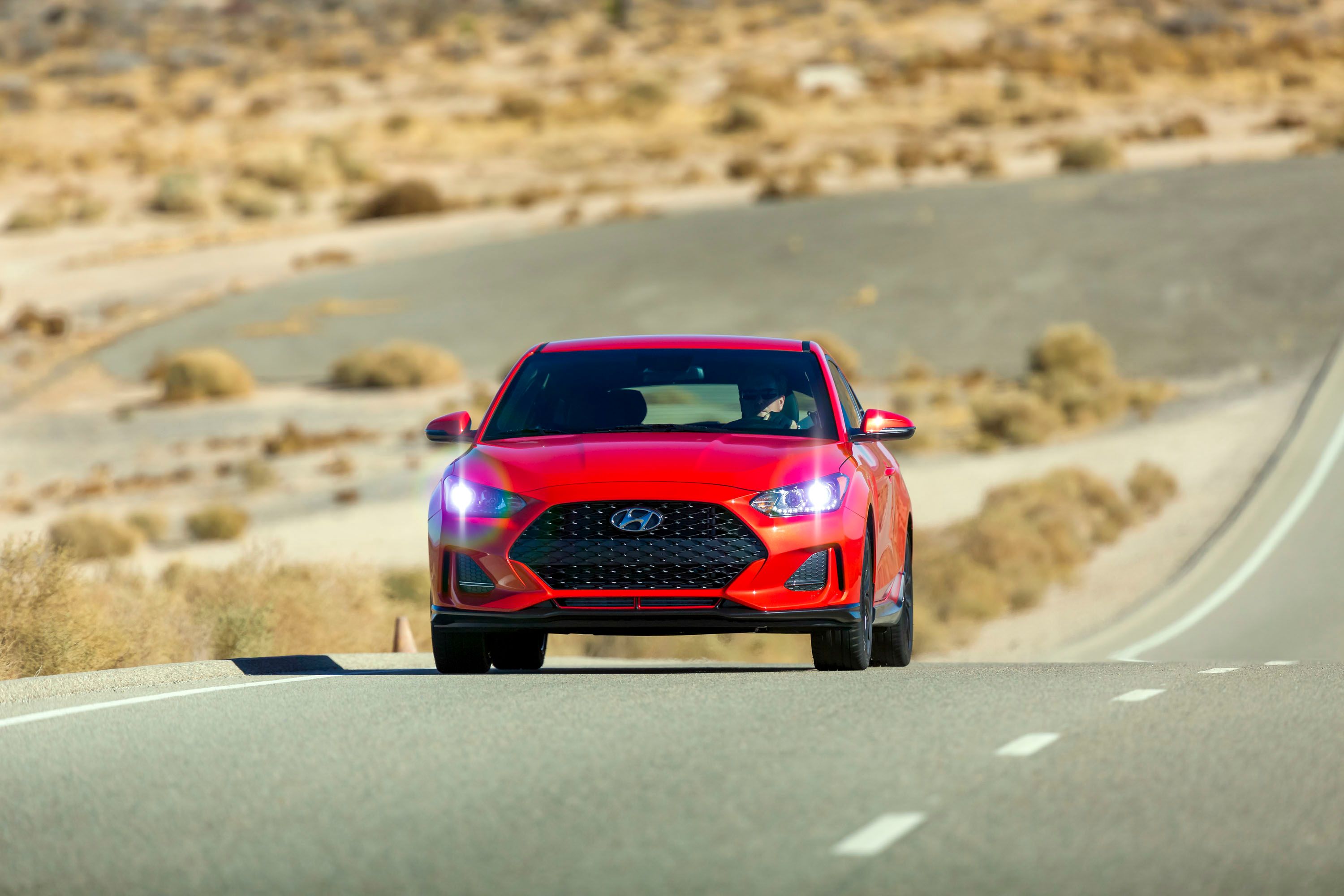
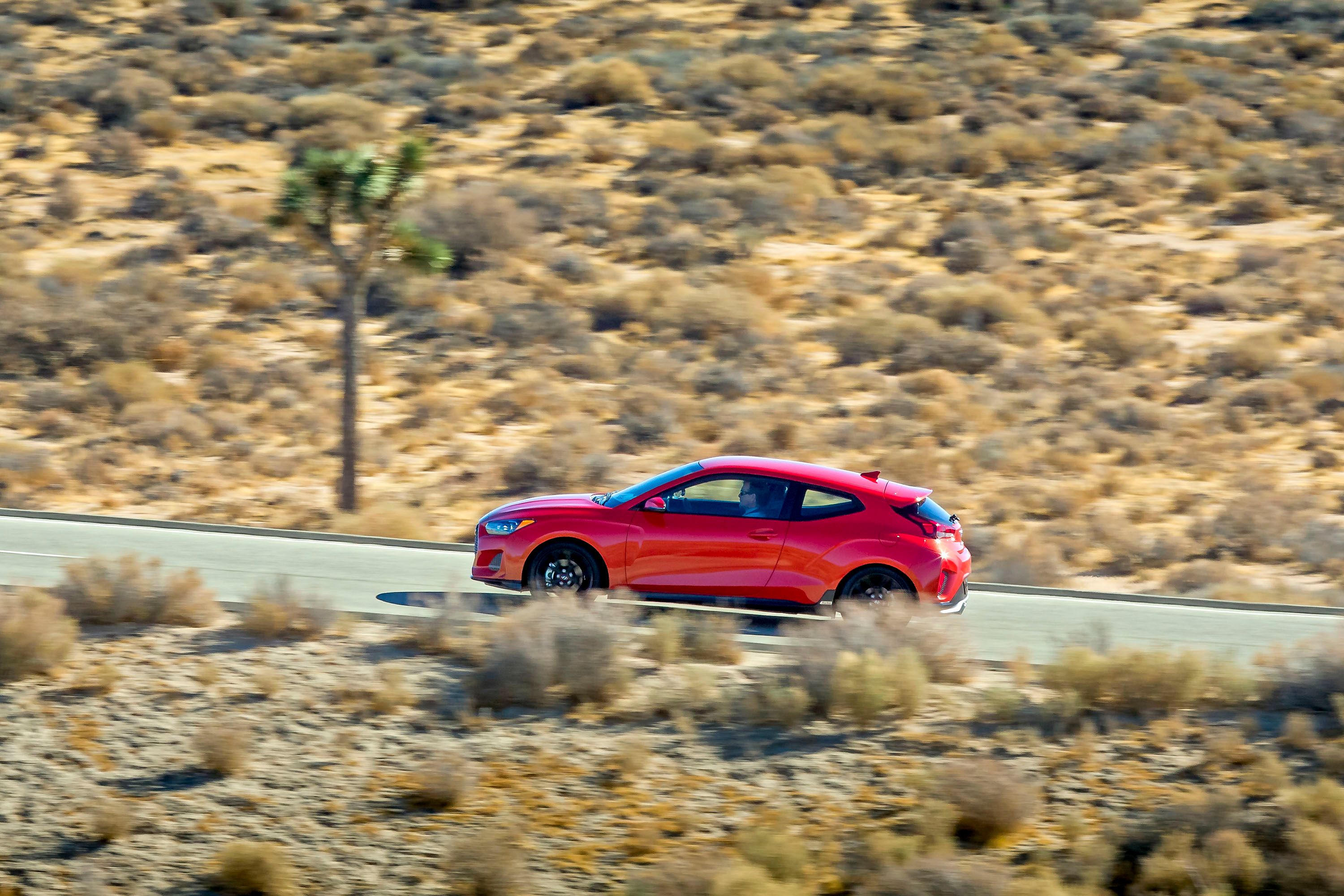
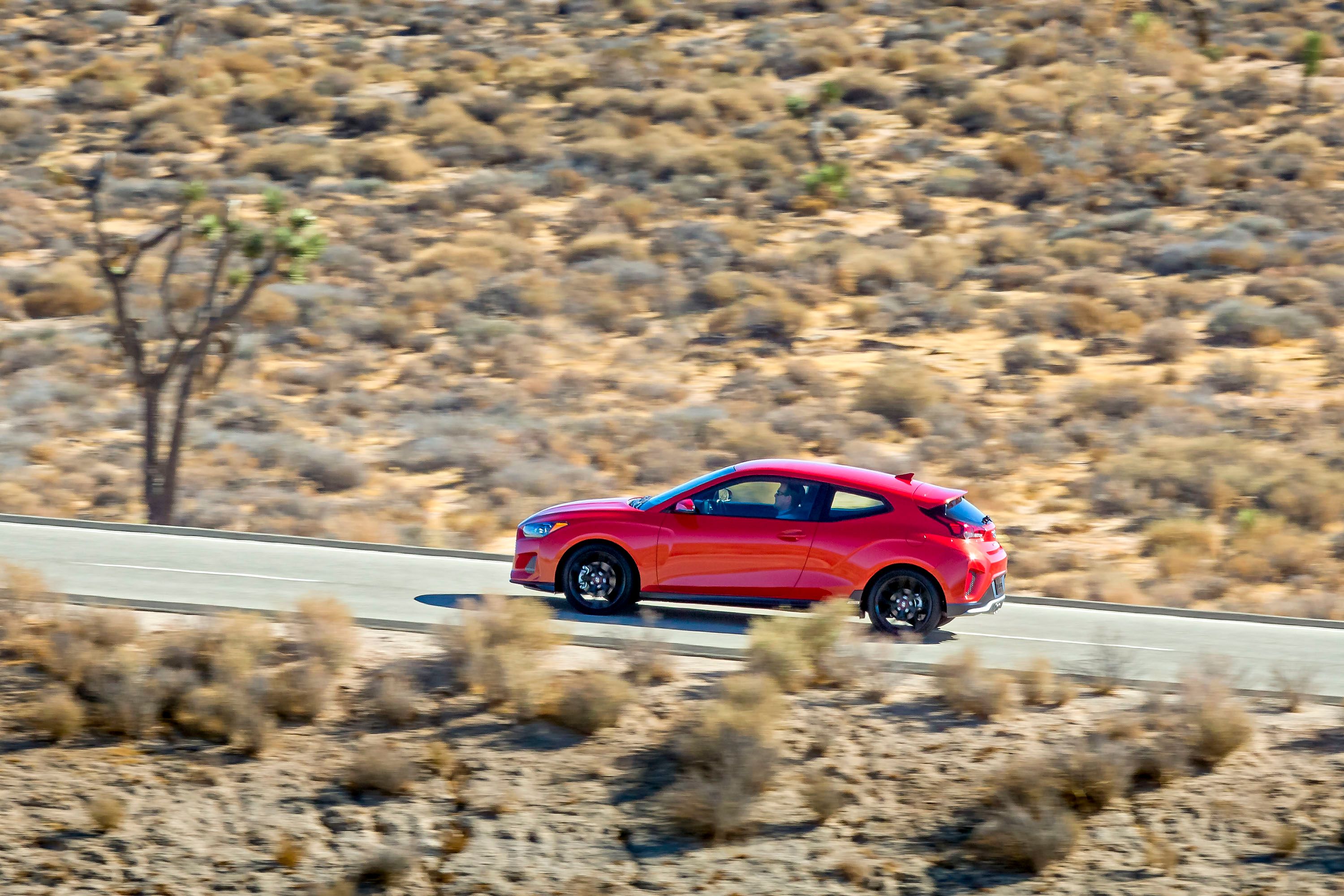
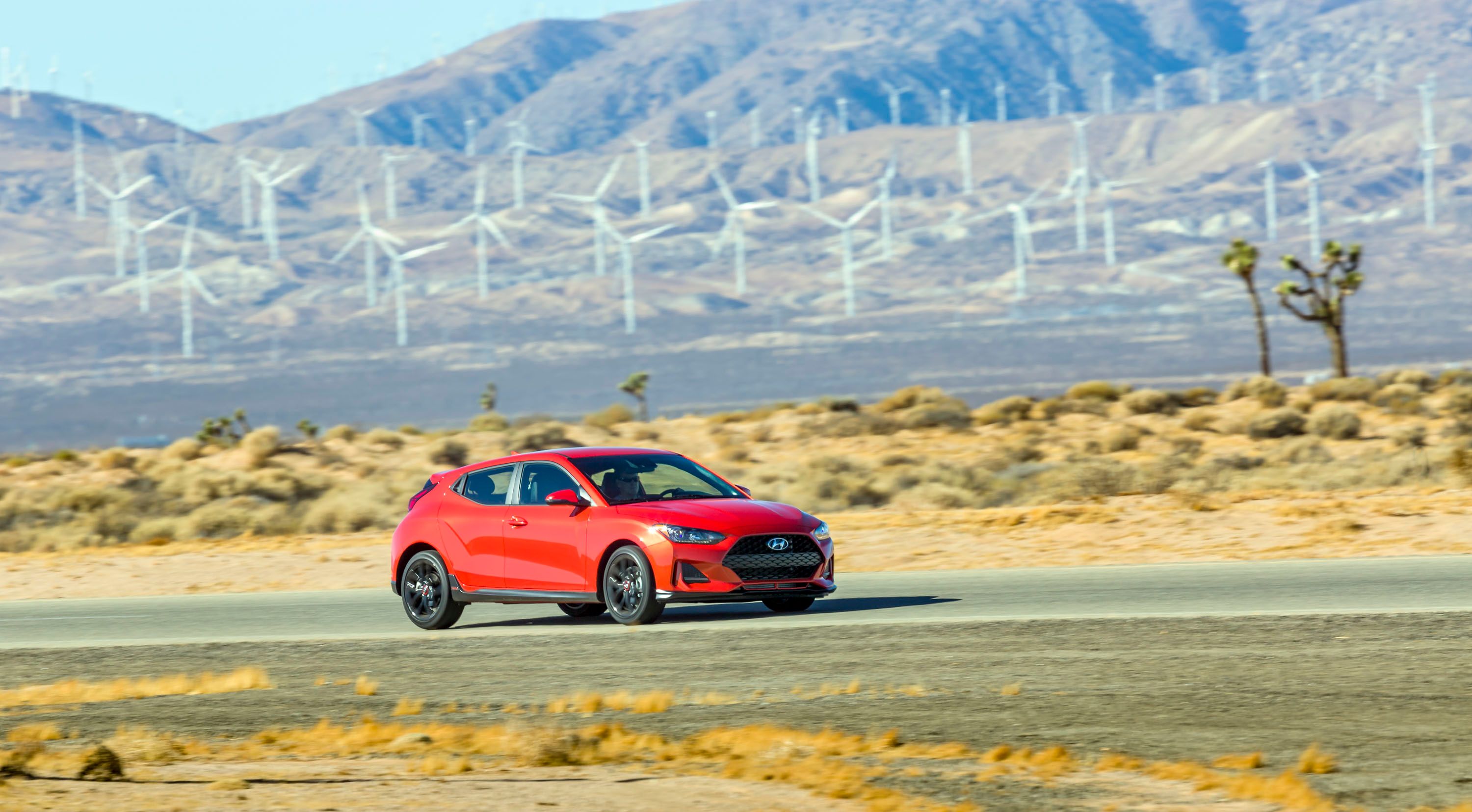
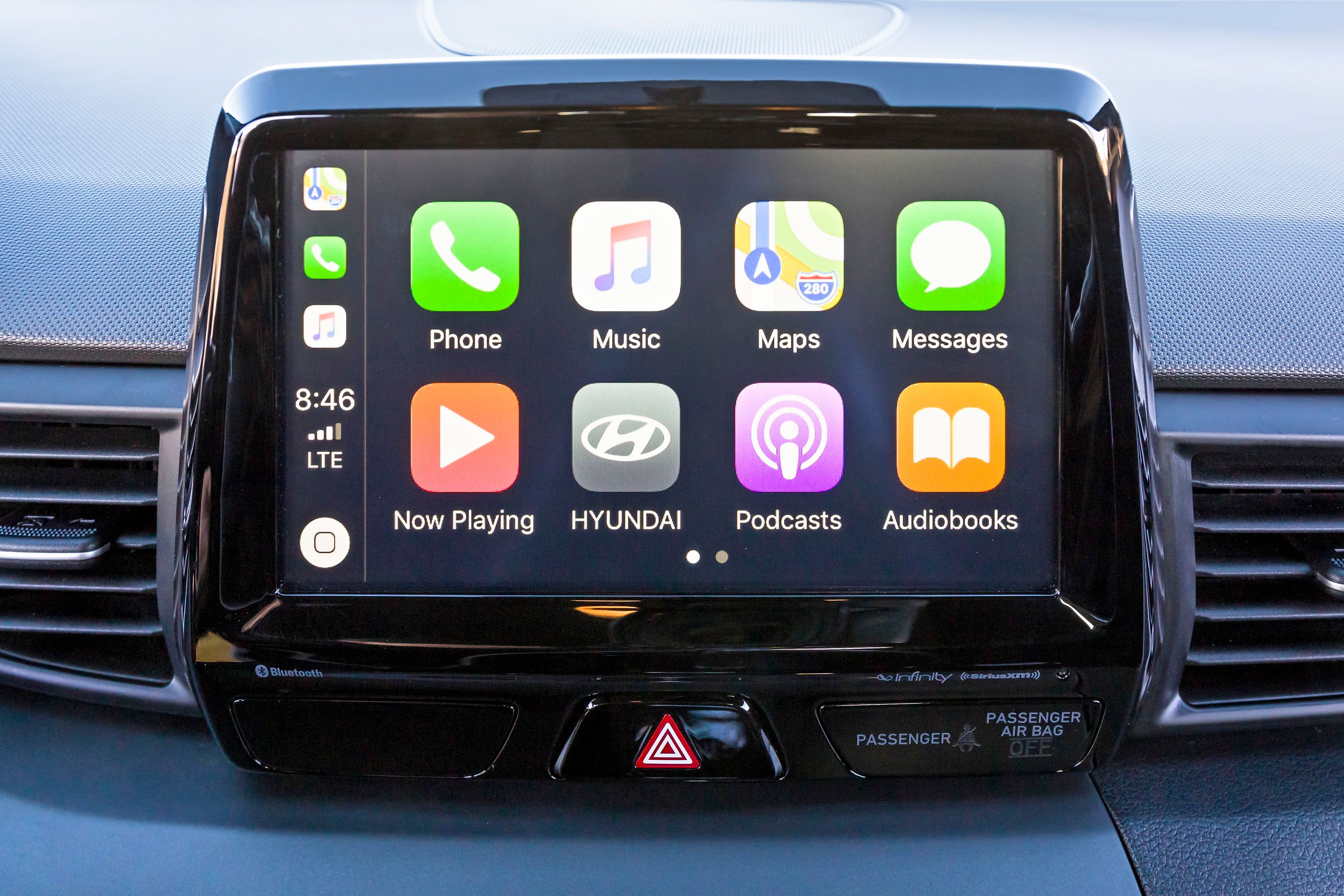
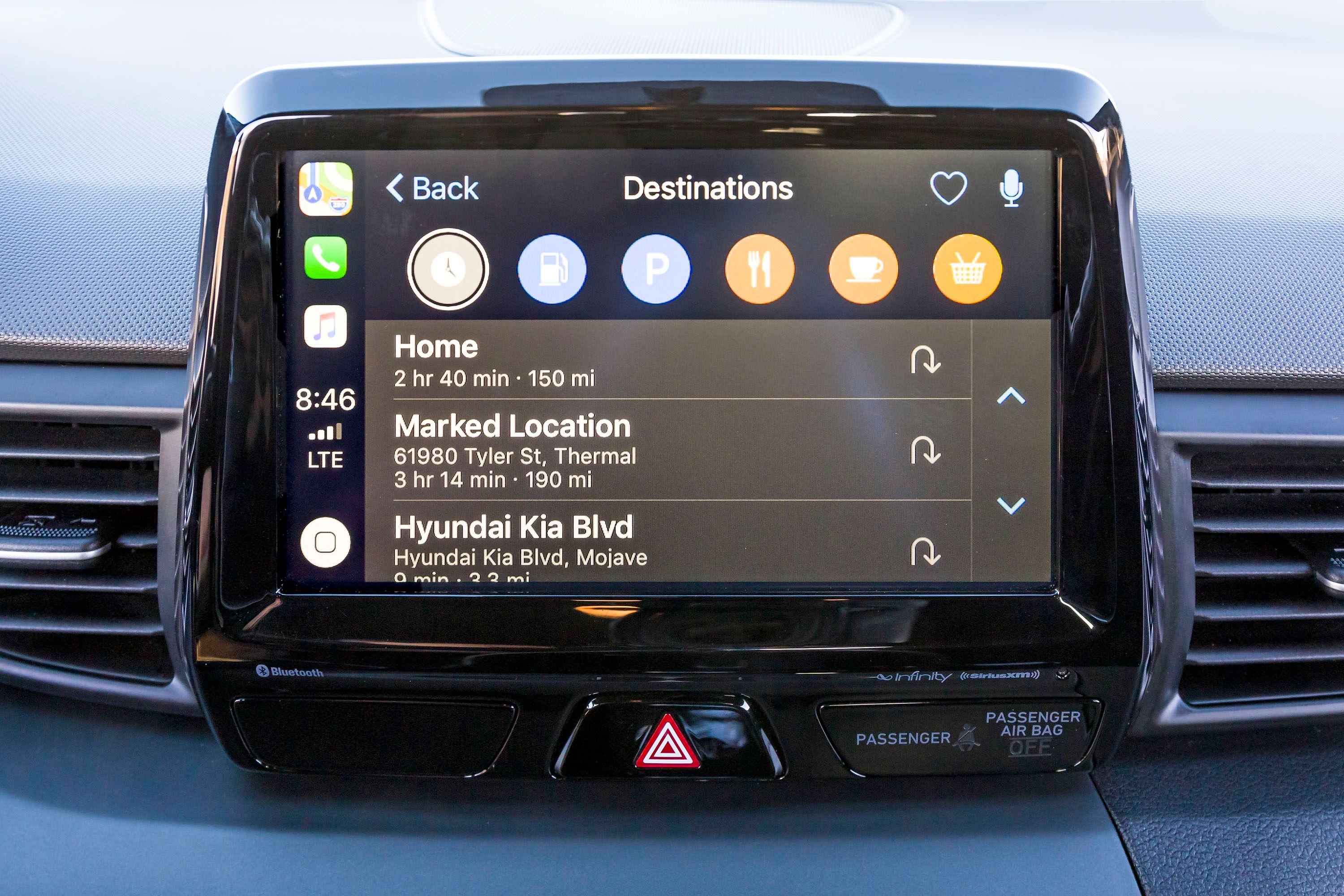
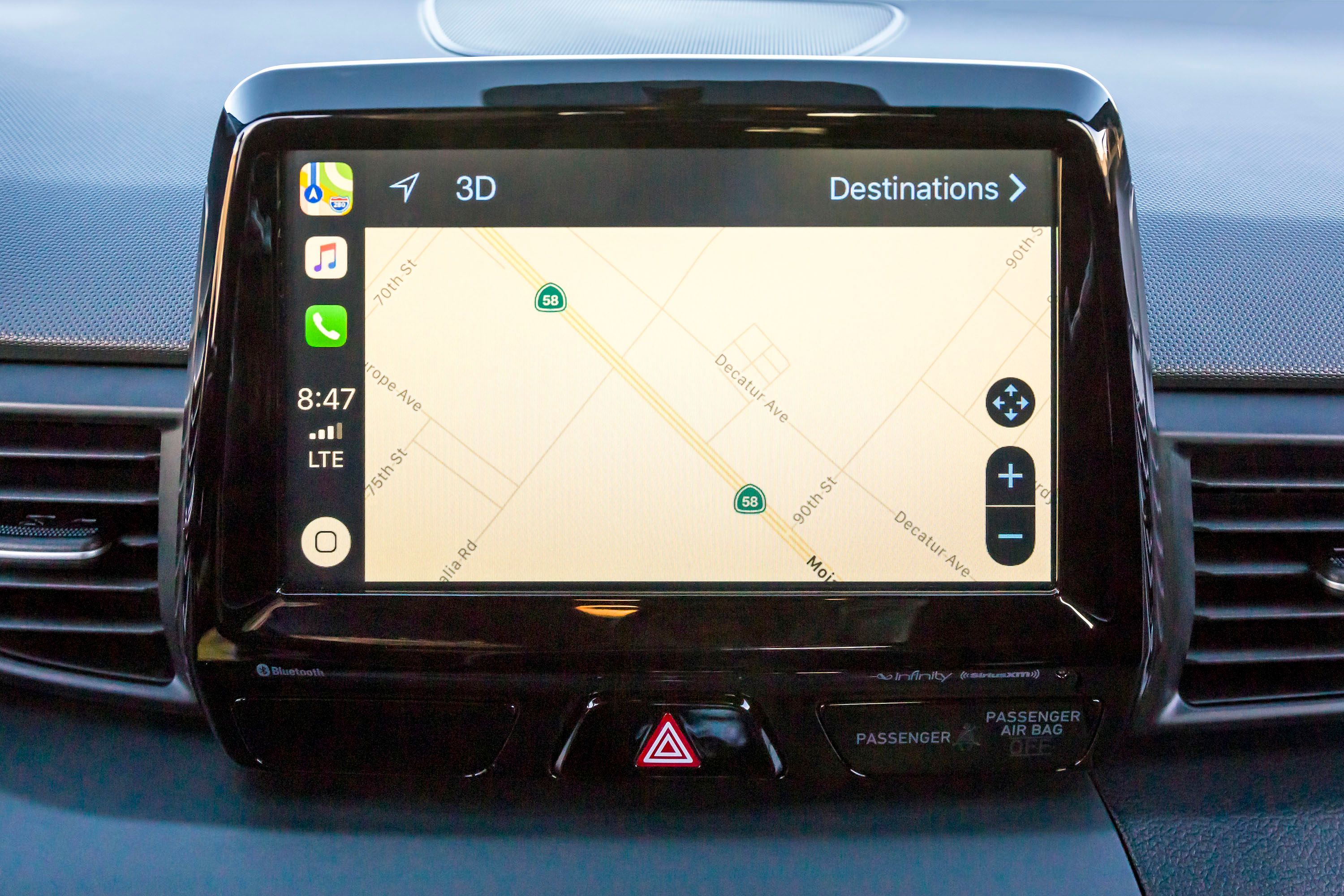
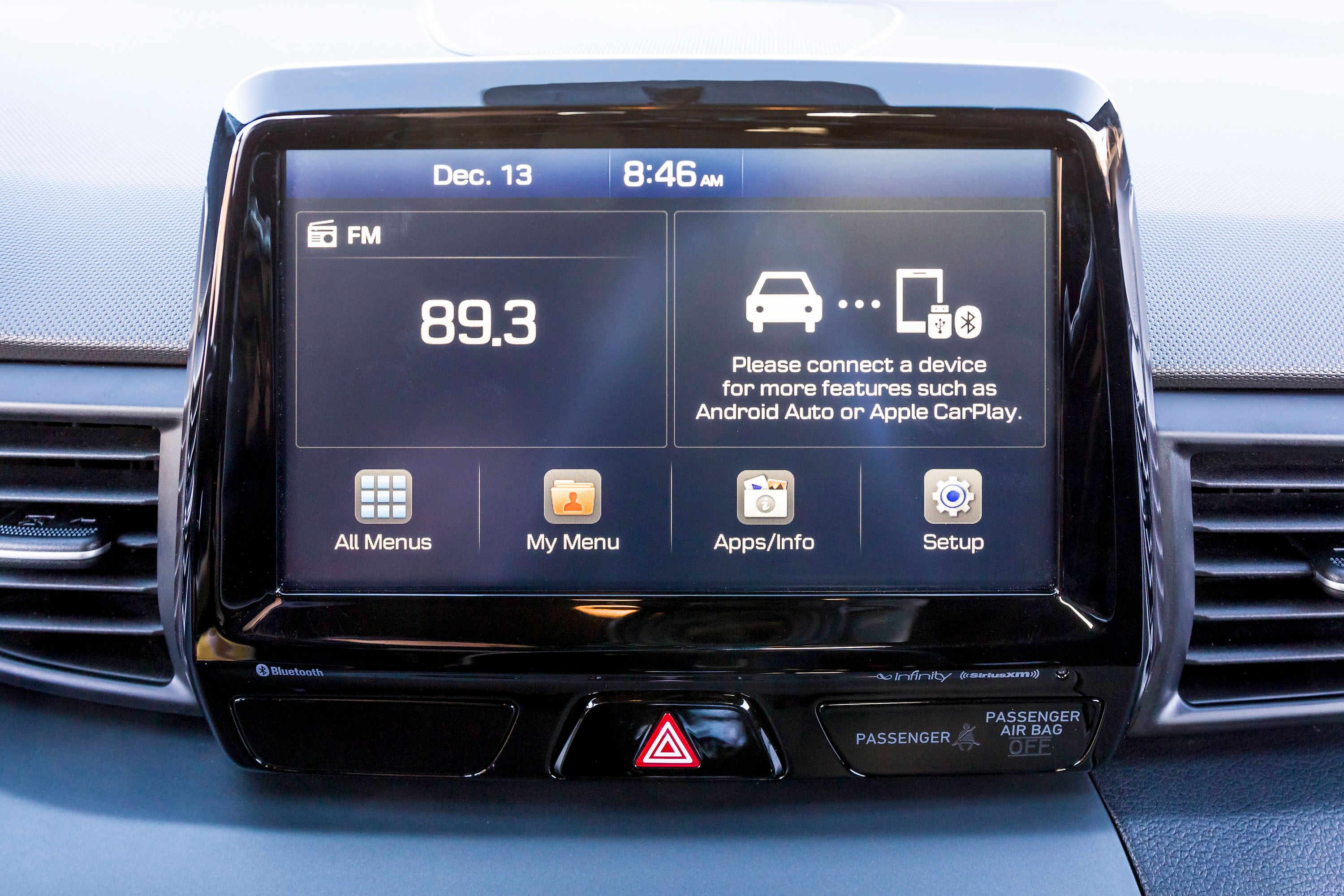
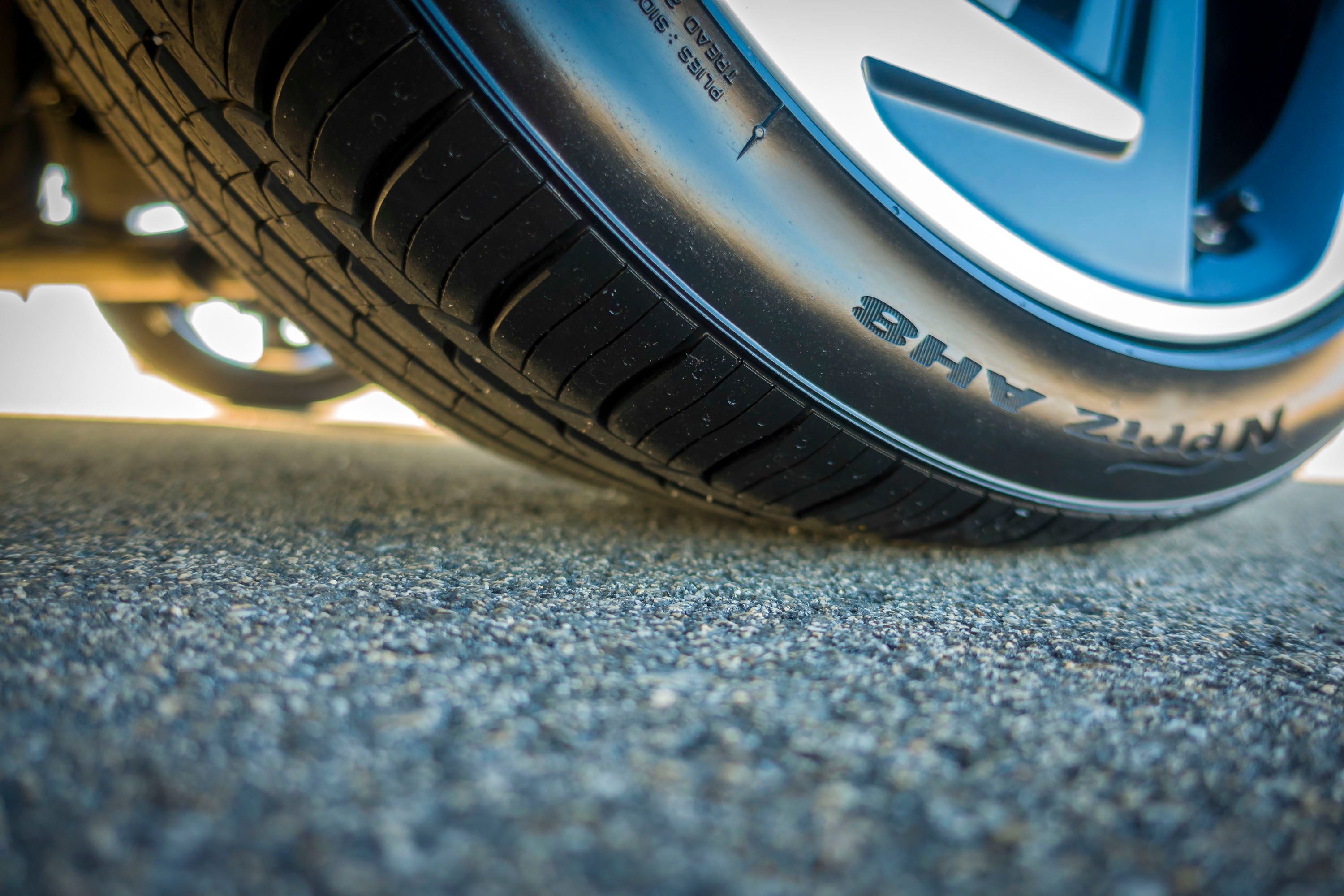
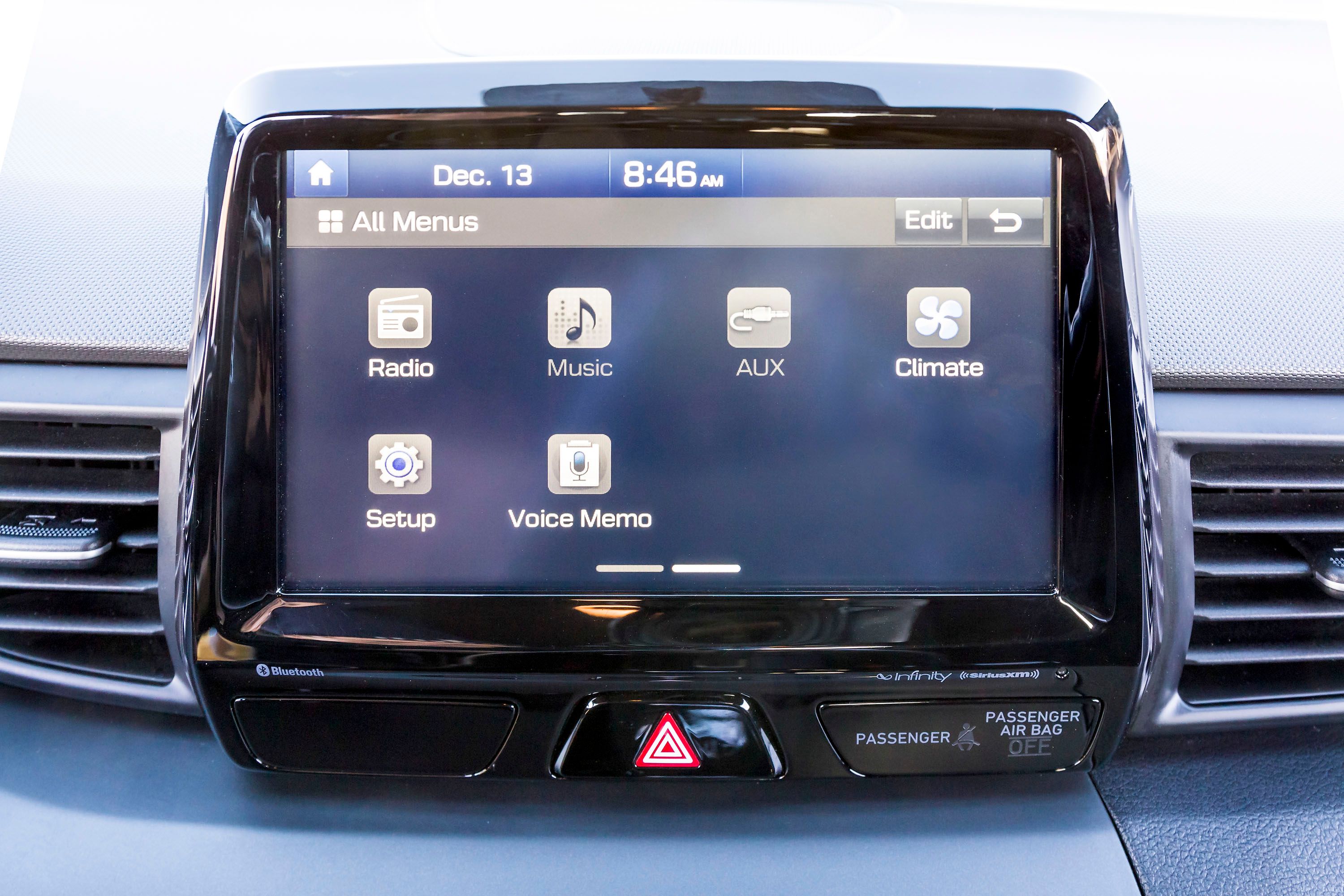
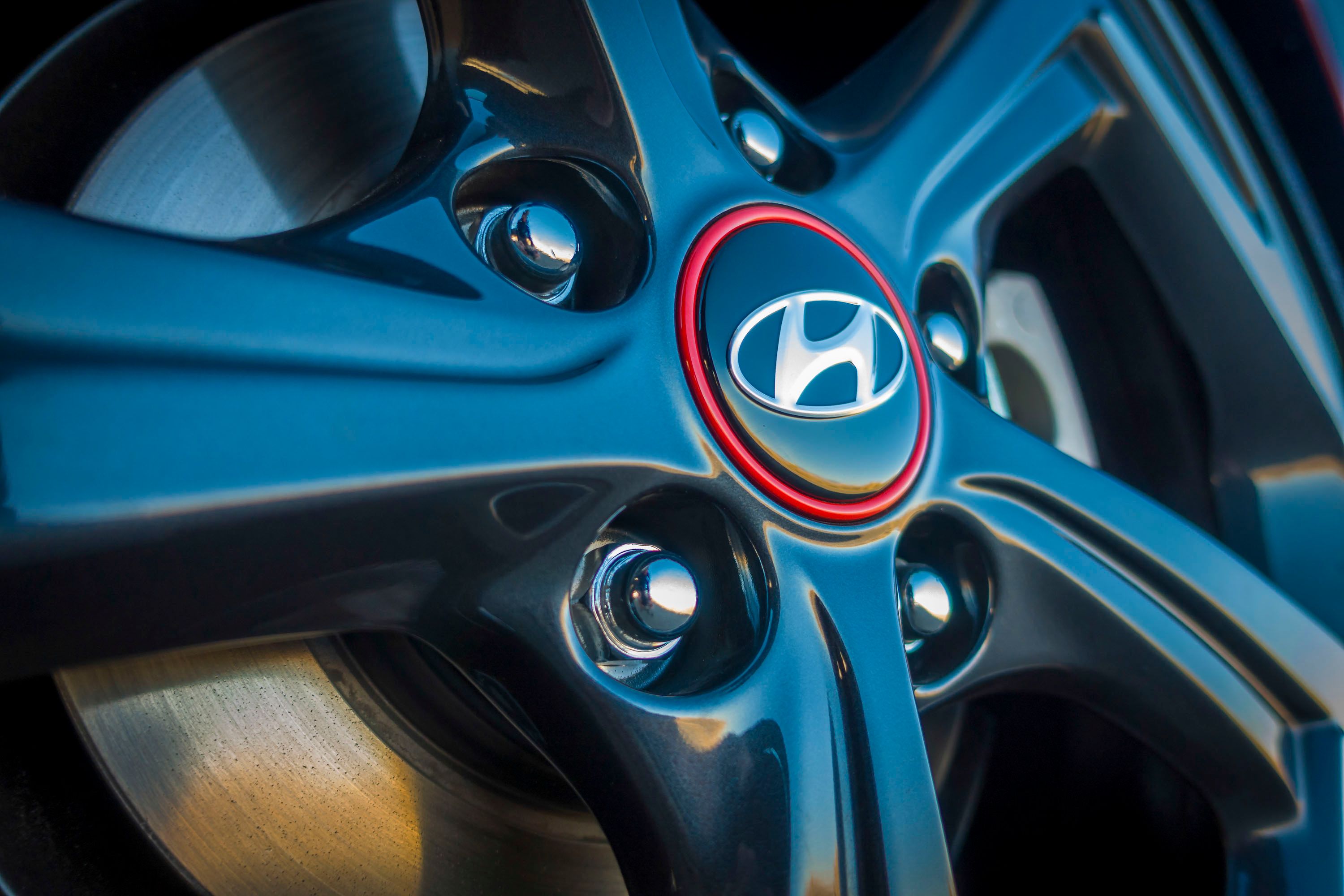
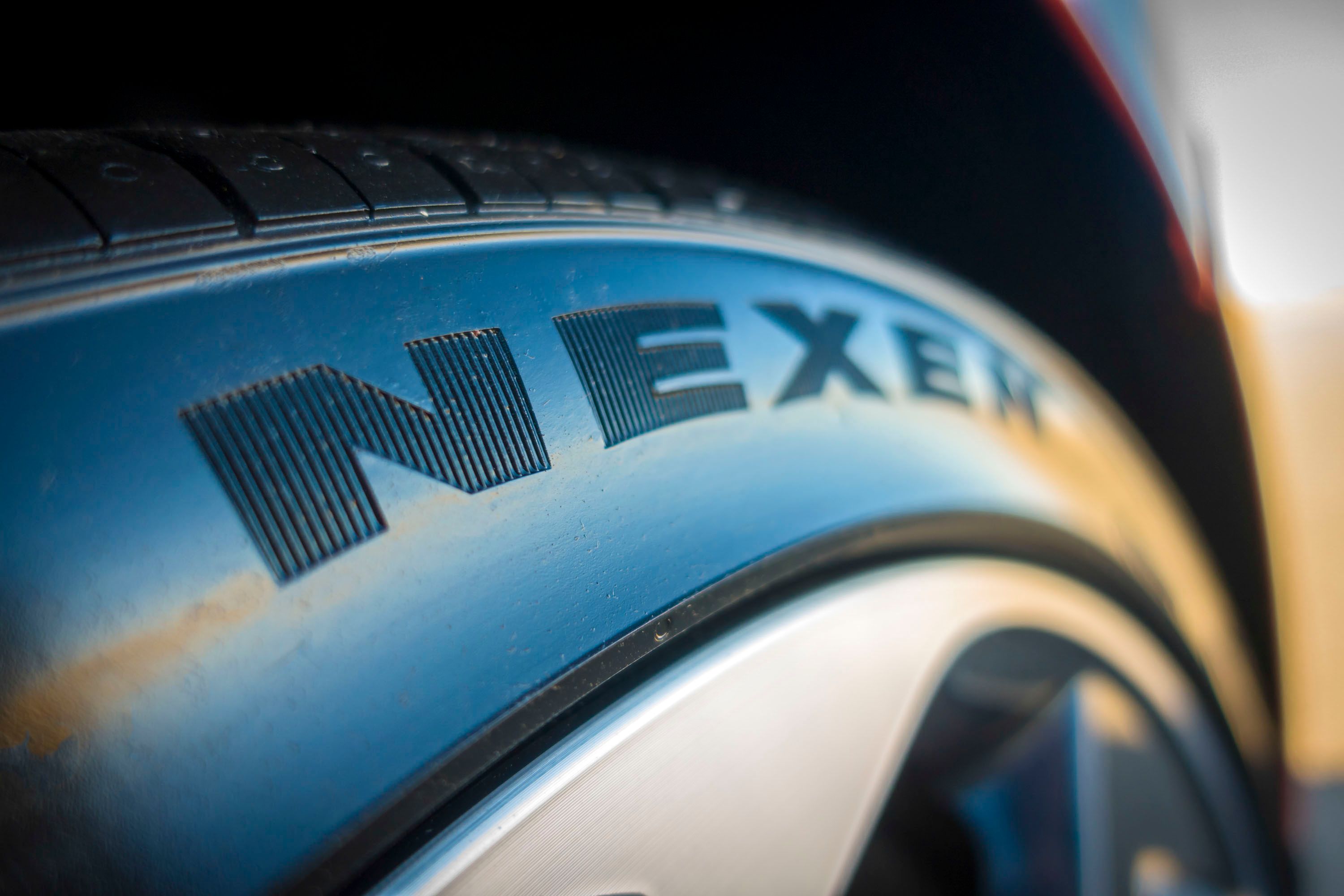
- Make: Array
- Model: 2019 Hyundai Veloster
- Engine/Motor: inline-4
- Horsepower: 201 @ 6000
- Torque: 195 @ 1500
- [do not use] Vehicle Model: Array
Exterior

While the 2019 Hyundai Veloster looks newer and sharper than the model that came before it, the styling basics are more or less unchanged. For example, it still offers an asymmetric two-door hatchback body style with a subtle third door added to the passenger's side. Think of it kinda like a 2+1 body style, with a 2+2 interior.
However, to help it look and feel like the second generation that it is, Hyundai decided to pen up a new design, employing a joint effort between Hyundai's designers in Irvine, California, and its designers in Seoul, South Korea. The end result is more aggressive and head-turning than the first-gen model, so let's dive into the specifics.
Up front, we find a larger hexagonal grille, with sharper creases and an expanded upper section. The grille comes with a cool 3D aesthetic, and uses a black diamond-patterned insert to ward off any wayward pieces of the terrain. The lower bits incorporate functional air curtains, which not only help to increase the front-end aero efficiency, but also look great, with multiple layers stacked on one another in a manner that reminds us of a race-spec splitter. The lowest section is finished in a matte black color.

A little higher up we have the headlights, which get LEDs for the primary lighting element and the daytime running lights. The housings also look simpler in their shape, with down-turned creases rather than the check-mark shape of the older generation. The older fog lights are gone this time around, replaced with black block-off plates in the corners. Even the hood looks meaner, now arriving with a set of character lines that help increase the car's sense of forward motion.
Moving around into the 2019 Veloster's profile, and you'll notice that the fender flares are now larger than before, with the increased dimensions adding a little extra visual beefiness to the car's stance. The cowl point and A-pillar were also moved towards the rear, connecting with the hood line and belt line to create a more cohesive look. While subtle, those profile character lines look good on the hatch, especially with the lowered roof line. The side skirts lead the eye rearwards and into the rear fenders, enhancing the taut appearance even more. In the corners, customers can get theirs with optional 18-inch alloy wheels.
|
|
ids=617109,761380 |
no_overlay=true> |
Step around to the rear of the Veloster, and you'll find a more technical, detail-heavy design than the first generation. The first thing that jumps out is the integrated diffuser, which sits prominently at the lower edge of the bumper, complementing the front bumper well. In the middle of the diffuser is the exhaust, with a single outlet used for the base model 2.0-liter and a dual set-up for the Turbo and R-Spec models. Chrome plating is used to add extra bling factor. The taillights wrap around from the rear fenders and get a sweeping set of Y-shaped graphics, plus the option for LED lighting.
Topping it off is a solid selection of exterior paint options, including Ultra Black, Chalk White, Sonic Silver, Thunder Gray, Sunset Orange, Racing Red, and Space Gray. You can also option in a black roof treatment for that two-tone appearance, if desired (we definitely recommend it!).
Interior

With the exterior of the Veloster looking a good deal sharper this time around, the interior also gets a redesign that makes it a lot more desirable. While the older model's 2+2 seating layout is retained, the dash now employs a complementary asymmetric design that emphasizes the driver's position by placing additional buttons closer to that side of the cockpit. The steering wheel was updated, and now looks smaller and a bit oblong thanks to a much shorter center spoke and lower center line. There's still nice hand bolsters at the 10 and 2 o'clock positions, and the air vents are horizontal, rather than vertical like the first gen.
The center console is also more horizontal now, and no longer set in a “vee” shape like the outgoing model. There's a two-tier button scheme, with the lower half employed for the climate control and upper portion used for infotainment. The infotainment screen is placed in an upright position on the top of the dash. The gauges look new as well, with a slick checkered background enhancing the car's sporting intentions.
Go for the the Turbo Ultimate model, and you'll get a contrasting color scheme that helps to isolate the driver's position. Further unique colors, materials, and other interior features can be had depending on the trim level picked. In particular we like the red offset against the black in the Turbo model – definitely understated, but effective nonetheless.

Interior materials include either cloth, cloth and leather, or all leather, depending on the trim and options picked. All models also get Active Sound Design, which “enhances intake and exhaust powertrain sound character inside the cabin for a more visceral driving experience, especially during spirited driving.” It's a bit like cheating, but don't worry Hyundai – we won't tell anyone.
Heading the list of updates for the 2019 model year is a wide selection of fresh infotainment and greater connectivity features. Standard spec tosses in the usual goodies, such as AM, FM, and MP3 support, plus a host of auxiliary inputs. Controlling it all is a standard 7.0-inch LCD infotainment screen, but buyers can opt into the 8.0-inch “floating screen” for a little extra outlay. These come with a multi-touch screen plus menu swipe function for easier operation, and offer a good deal of smartphone support as well. There's Apple Siri Eyes Free for iPhone users, plus the full Apple CarPlay system and Android Auto as well. SiriusXM radio and HD Radio are also part of the package, as is the next-gen Blue Link with LTE connectivity. This comes with three years of complimentary service, offering up features like Remote Start with Climate Control, Remote Door lock and unlock, Car Finder, Enhanced Roadside Assistance, and Stolen Vehicle Recovery. Blue Link also integrates with your smartwatch for those ultimate James Bond vibes.
The 2019 Veloster is also offered with an optional navigation screen and real-time traffic info, an optional Infinity audio system with eight speakers (including a subwoofer and Clari-Fi sound processing), and an optional Qi wireless charging. That last bit will even send you a notice when your phone is fully charged, plus it'll remind you to grab it before exiting the vehicle.

One of the coolest extras has to be the optional heads-up display, which pops out of the dash as soon as you push a button next the steering wheel. The HUD displays the current road speed, navigation directions, assist system status (more on the assists in a second), and audio system info. It'll also adapt to whatever your chosen drive mode may be, with Sport mode offering a focus on performance stuff like engine rpm, road speed, and current transmission gear. Once you're done with the HUD, push a button, and it'll recede back into the dash and out of view.
As is tradition for all new cars, the 2019 Veloster comes with a broad selection of safety systems, with features like standard Forward Collision-Avoidance Assist, which utilizes a forward-facing camera that can detect a collision before it happens and automatically apply the brakes to lessen the impact, or avoid the collision all together. The camera also provides the Veloster with features like lane-keep assist, high-beam assist, and driver attention warning.
Hyundai also equipped it with a radar system, which enables further safety and convenience features like a blind-spot monitor, rear cross-traffic collision warning, and adaptive cruise control.
Finally, all models get a standard rear-view camera with dynamic guidelines, and a six-airbag protection system in case you really bin it.
Drivetrain

Delve into the reshaped nose on the 2019 Veloster, and you'll find a few tweaked engine bits to help it perform, both in terms of speed and in terms of efficiency. The base model tosses the old model's 1.6-liter four-banger with a new a 2.0-liter four-cylinder with Atkinson-cycle. Dubbed the Nu 2.0-liter, this unit produces a maximum of 147 horsepower at 6,200 rpm and 132 pound-feet of torque at 4,500 rpm, besting the outgoing model's rather paltry 132 ponies. Standout features for the Nu 2.0-liter include Dual Continuously Variable Valve Timing, an electronic throttle, variable induction, and a new anti-friction cylinder coating material. Go for this powerplant, and you can pair it with either a six-speed manual gearbox or a six-speed automatic.
If a little less than 150 horses just won't cut the mustard for ya, you can option up to the much more exciting Gamma 1.6-liter turbo four-cylinder engine. Thanks to direct injection and extra atmosphere stuffed into its cylinders, this zippy little 'four makes as much as 201 horsepower at 6,000 rpm (matching the old turbo's peak power level) and 195 pound-feet of torque at 1,500 rpm. And despite its forced induction aspiration, it also takes regular fuel, prompting Hyundai to claim a best-in-class specific output (125.6 horsepower per liter). There's even an overboost function that adds a smidgen of extra twist, pumping it up to 202 pound-feet. That's not a lot, but hey – overboost is always a pretty cool function, don'tcha think?

If you decide to go for the turbo, the transmission options include either a six-speed manual with three pedals, or a seven-speed dual-clutch unit with steering wheel paddle shifters. It should be noted that the dual-clutch transmission option offers a “direct connection” for greater efficiency and “uninterrupted torque transfer” while upshifting, plus a Hillstart Assist Control for easier driving on steep inclines. No more handbrake trick for you.
To make the most of what its got, the Veloster offers pilots a variety of driving modes. These include such self-explanatory titles as Normal, Sport, and Smart, and the different software affects settings for the engine, transmission, and steering.
Finally, if you're looking for the fastest Veloster on the block, you'll wanna go with the 275-horsepower N model. Check out our full review here.
Chassis And Handling

While having a solid amount of go under the hood is always welcome in a sporty little hatchback, it's far more important to have the proper suspension bits in the corners to make the most of it. To that end, the Hyundai Veloster Turbo model gets a MacPherson strut suspension in front, which includes coils springs, gas shocks, and a stabilizer bar sized at 24 mm. Meanwhile, the rear gets an independent multi-link with a 19 mm stabilizer bar, plus gas shocks.
All models get Torque Vectoring Control, which is an active electronic assistance program that detects wheel slippage via an array of individual wheel sensors. After slippage is detected, the system then applies braking force as needed to the inside front wheel, while also increasing power to the outside wheel, thus enhancing cornering prowess in the process.

Further turn assist is made by the motor-driven electric power steering system, which gets adjustable electric assist depending on the “driving conditions.” Go for the Turbo model, and you'll get revised calibration and a faster ratio for extra response when wheeling around in the bends. Opt into the manual transmission, and Hyundai will mount 18-inch alloy wheels wrapped in Michelin Pilot Sport 4 summer tires.
Rounding it off is the usual lineup of safety systems, such as Vehicle Stability Management and Electronic Stability Control. There's also four-wheel disc brakes with ABS, brake assist, and electronic brake force distribution.
Prices

Despite the fact that the new Veloster is insanely better than the outgoing model, it only sees a mild price increase across the board. The base model now starts out at $18,500 – a $400 premium over last year. The same trim with an automatic transmission commands $19,500 while the 2.0 A/T Premium comes in at $22,750. The Turbo R-Spec trim with a manual transmission comes in at $22,900 while the Turbo DCT comes in at $25,400. Moving up to the Turbo Ultimate trim will set you back $26,650 with a manual transmission or $28,150 with a DCT. All prices exclude registration, taxes, and delivery charge.
|
VELOSTER ENGINE AND TRIM |
MSRP |
|
2.0 M/T |
$18,500 |
|
2.0 A/T |
$19,500 |
|
2.0 A/T PREMIUM |
$22,750 |
|
TURBO R-SPEC M/T |
$22,900 |
|
TURBO DCT |
$25,400 |
|
TURBO ULTIMATE M/T |
$26,650 |
|
TURBO ULTIMATE DCT |
$28,150 |
NOTE: EXCLUDES FREIGHT CHARGE OF $885
Competition
Honda Civic Coupe
While slightly less aggressive than the race-tastic Hyundai Veloster, the Civic still manages to bring the goods in the fun department. The suspension tuning finds a sweet spot between comfort and corner-carving, while myriad engine choices offer up to 180 horsepower and 174 pound-feet of torque in the 1.5-liter Sport model. FWD is standard, while transmission options include both a manual and a CVT. You can also get yours in a variety of different body styles, including a coupe, sedan, or hatchback. Pricing starts at a Hyundai-matching $18,840.
Read our full review on the 2017 Honda Civic Coupe.
Mazda3
Matching FWD agility with an affordable price tag and hatchback practicality is a specialty of the Mazda3, and it shows as soon as you start giving it a little extra gusto in the corners. It all starts with that zoom-zoom-style independent suspension, while engine options include 155 horses from a 2.0-liter 'four in the base model, or 184 horses from a 2.5-liter 'four in the higher trims. Outside is the head-turning good looks of Mazda's Kodo design language, while the interior is composed of a variety of top-shelf materials. Pricing starts at $18,095.
Read our full review on the 2016-2018 Mazda3.
Conclusion

Truth be told, we here at TopSpeed love a good hot hatchback, and it would appear as though the 2019 Hyundai Veloster ticks all the important boxes in our list of requirements. We think the new design looks great, offering an aggressive, super-sharp style that's just right for the segment. We also really like the three-door body style, and the large wheel options as well. The interior equipment is nice, and although the layout is a little too subtle and the 2+2 passenger seating is a bit cramped, it gets the job done all the same. Performance-wise, the Veloster makes it happen with solid suspension bits and the available 200-horsepower powertrain spec.
That said, there are more practical and more refined options on the table, and the Veloster still has some proving to do in the long-run. This is a segment filled with well-established nameplates, and up against the likes of Honda or Mazda, Hyundai is still cementing its position.
Not that it's a bad choice – quite the opposite, actually. If you're in the market for a fun, attractive, sporty hatchback, then this is definitely one worthy of checking out.
References
Hyundai Veloster
Read our full review on the 2019 Hyundai Veloster N.
Read our full review on the 2016 Hyundai Veloster.
Read more Detroit Auto Show news.
Read more Hyundai news.

